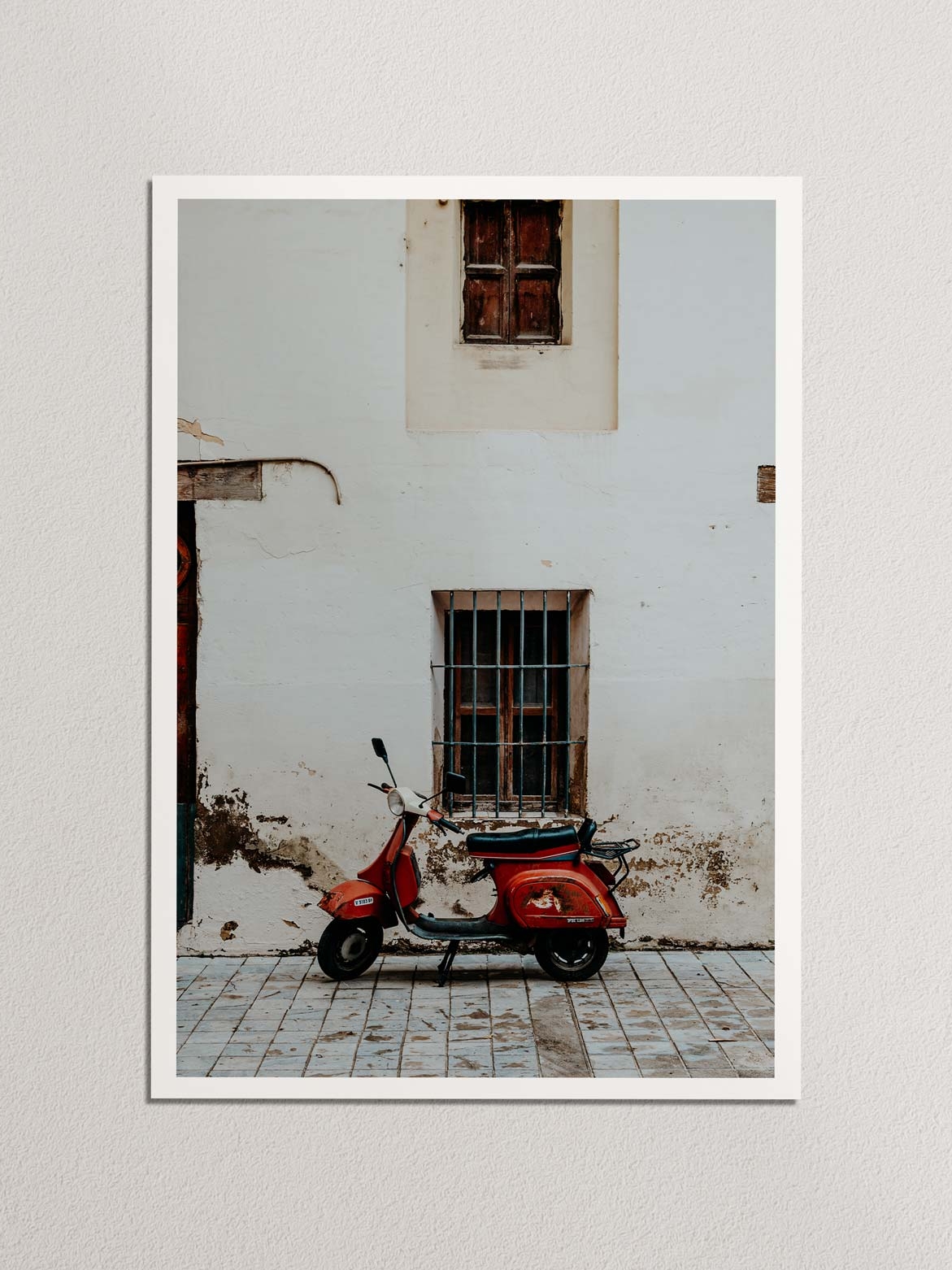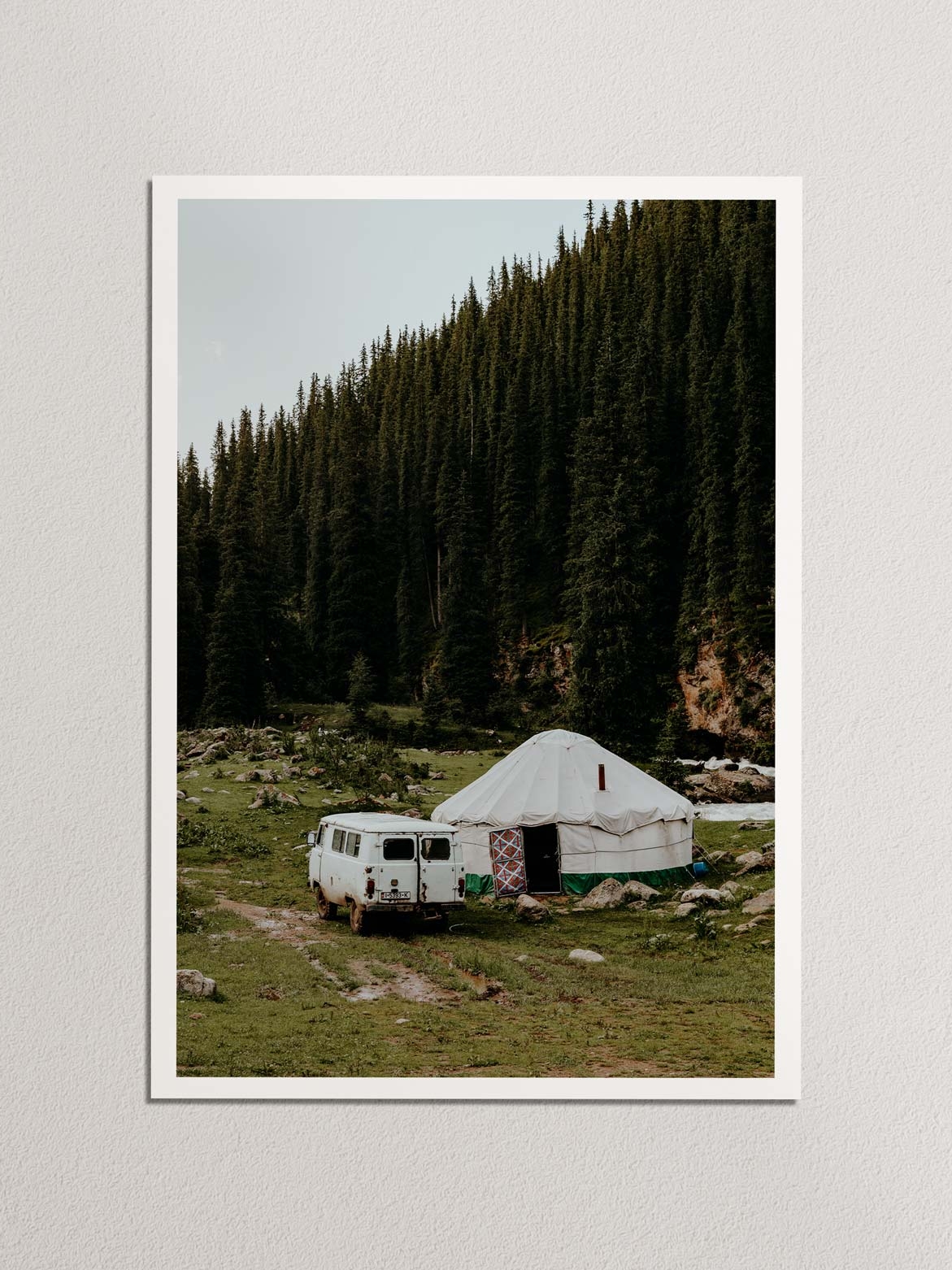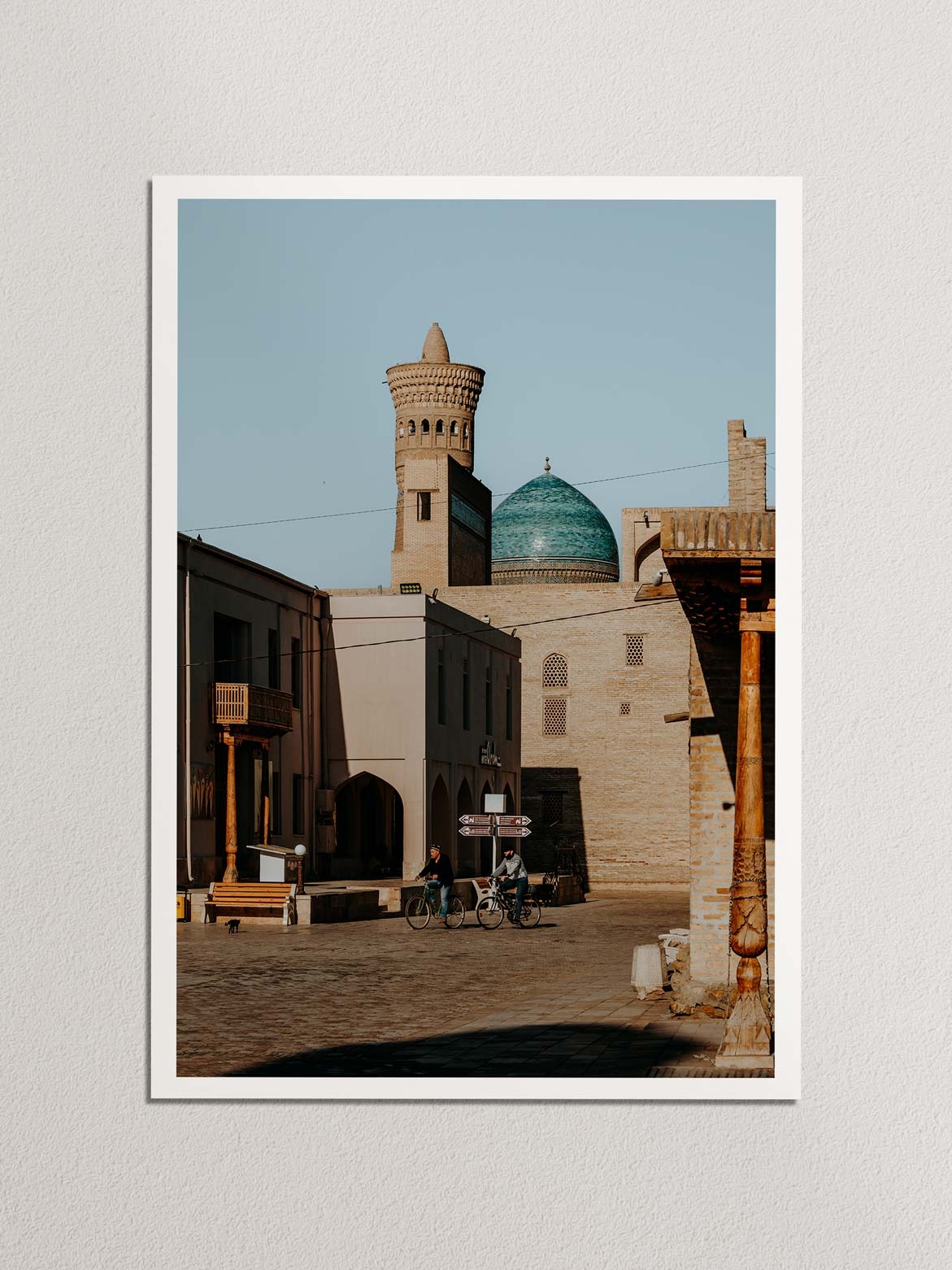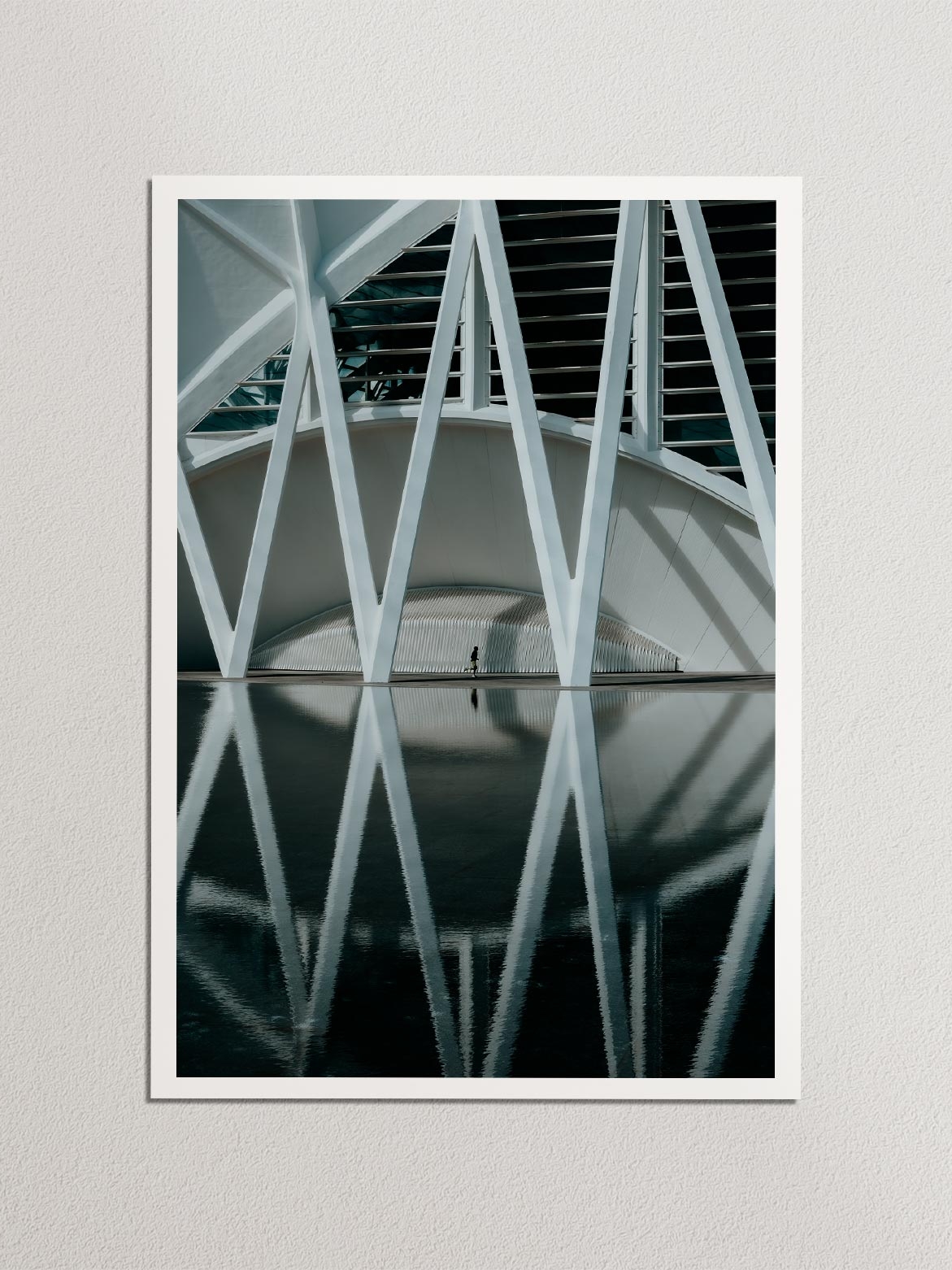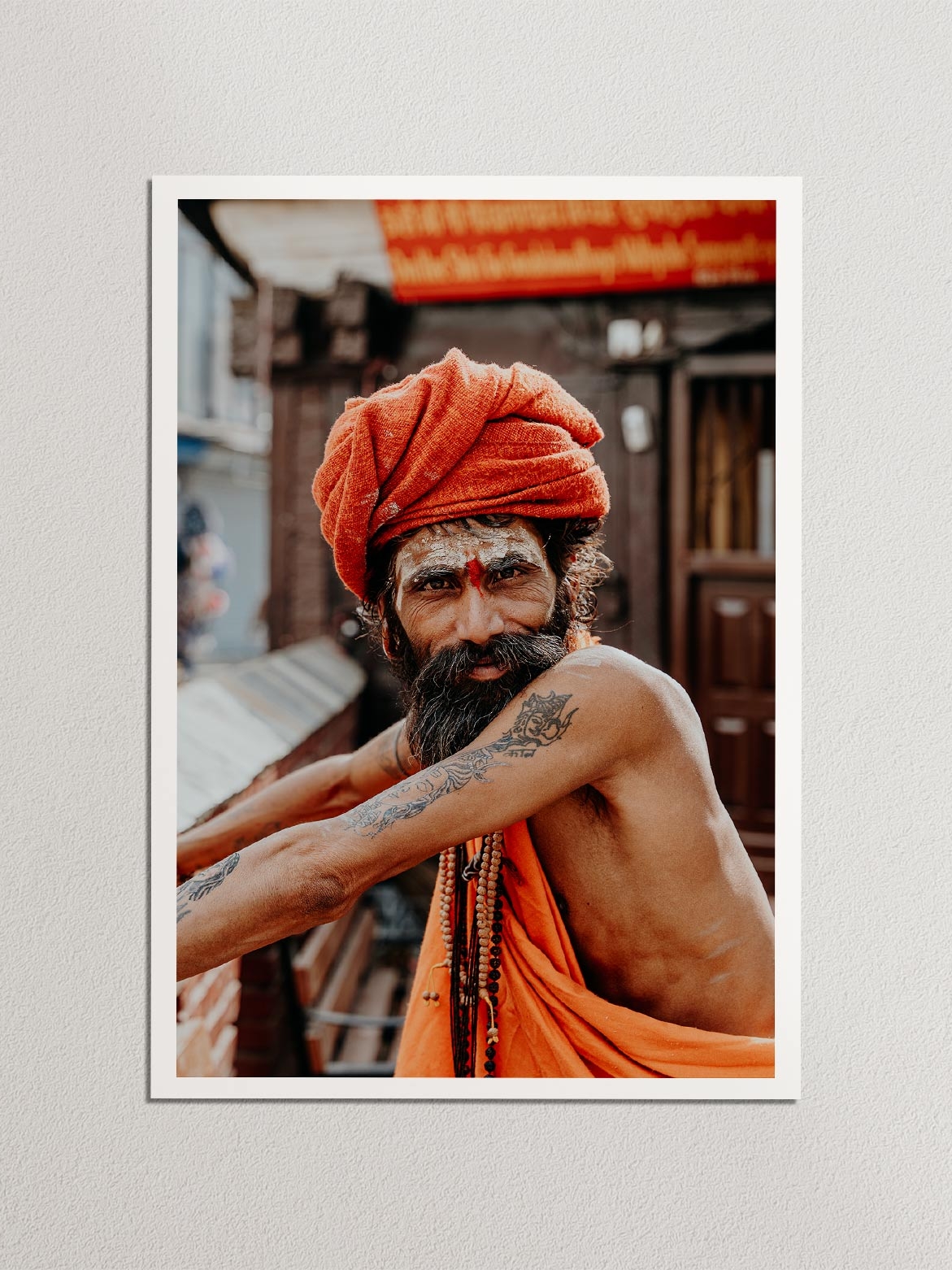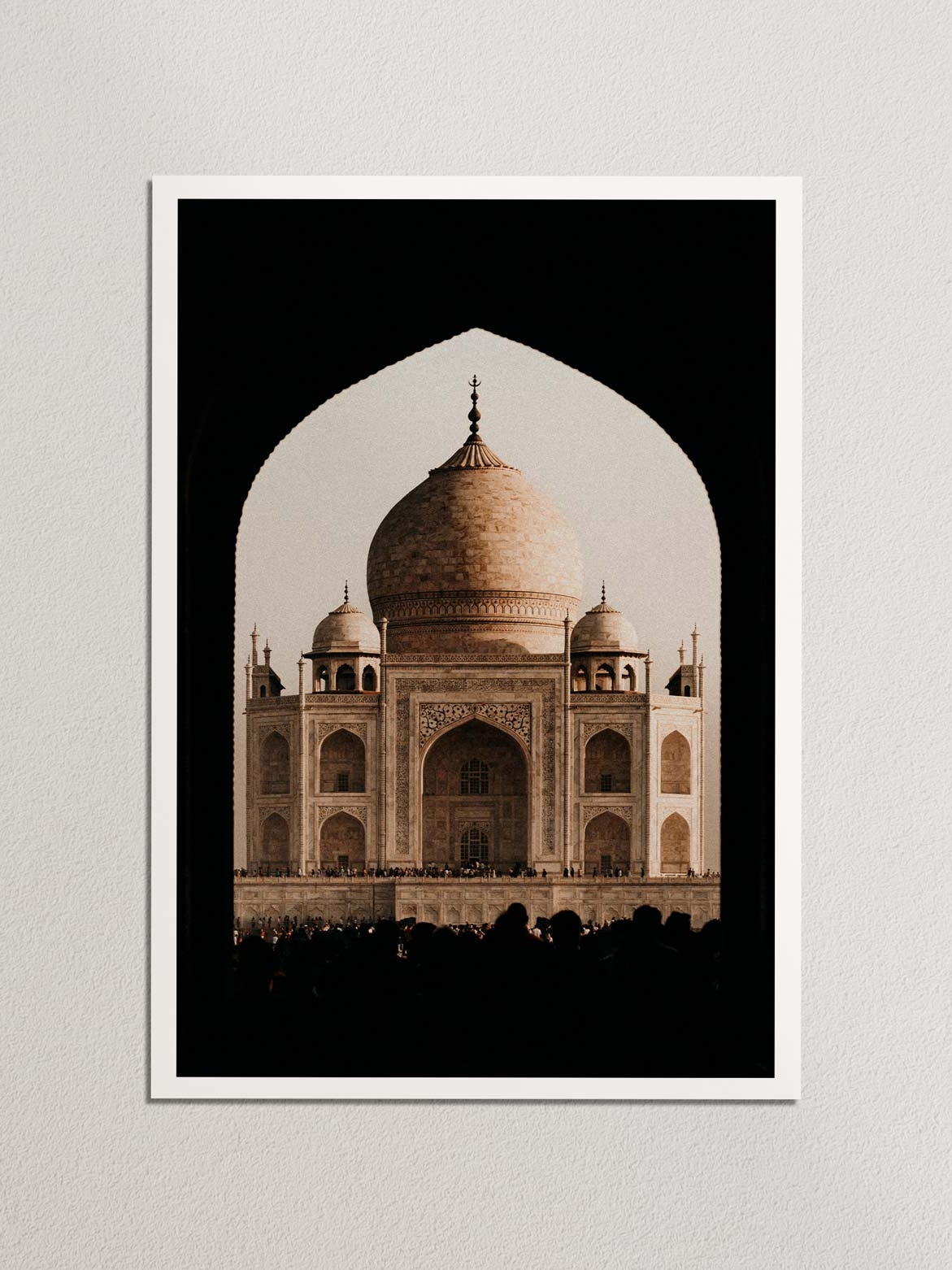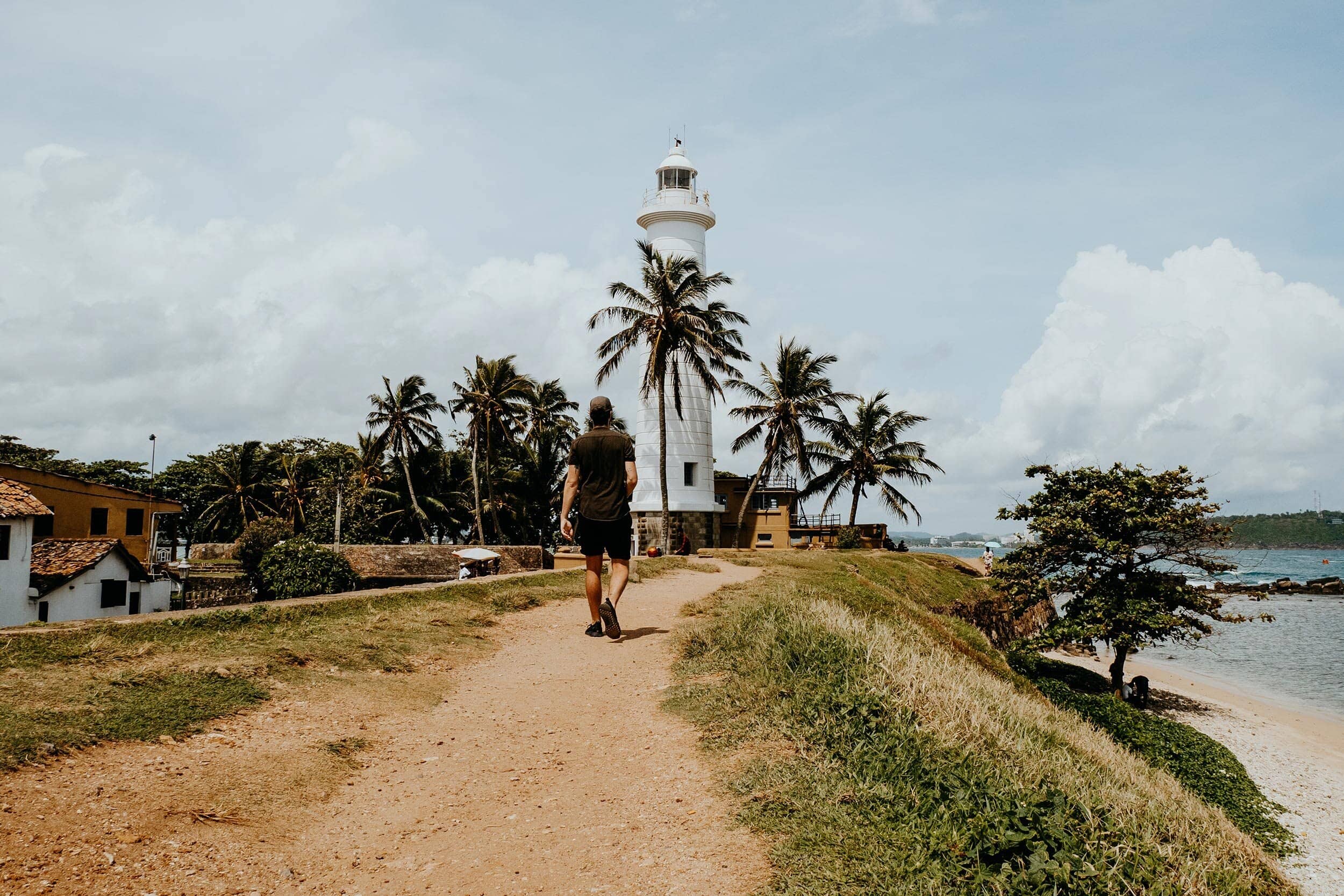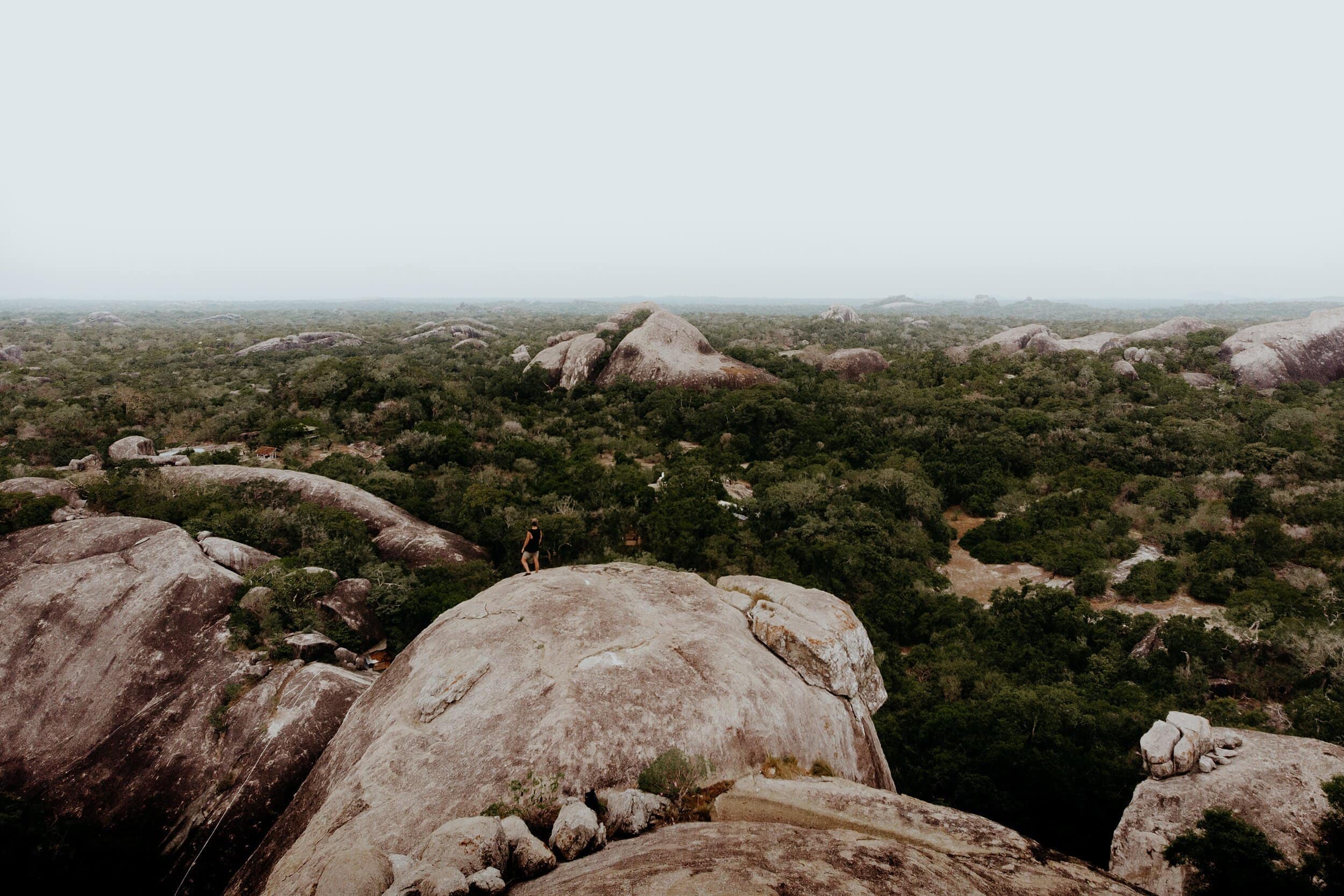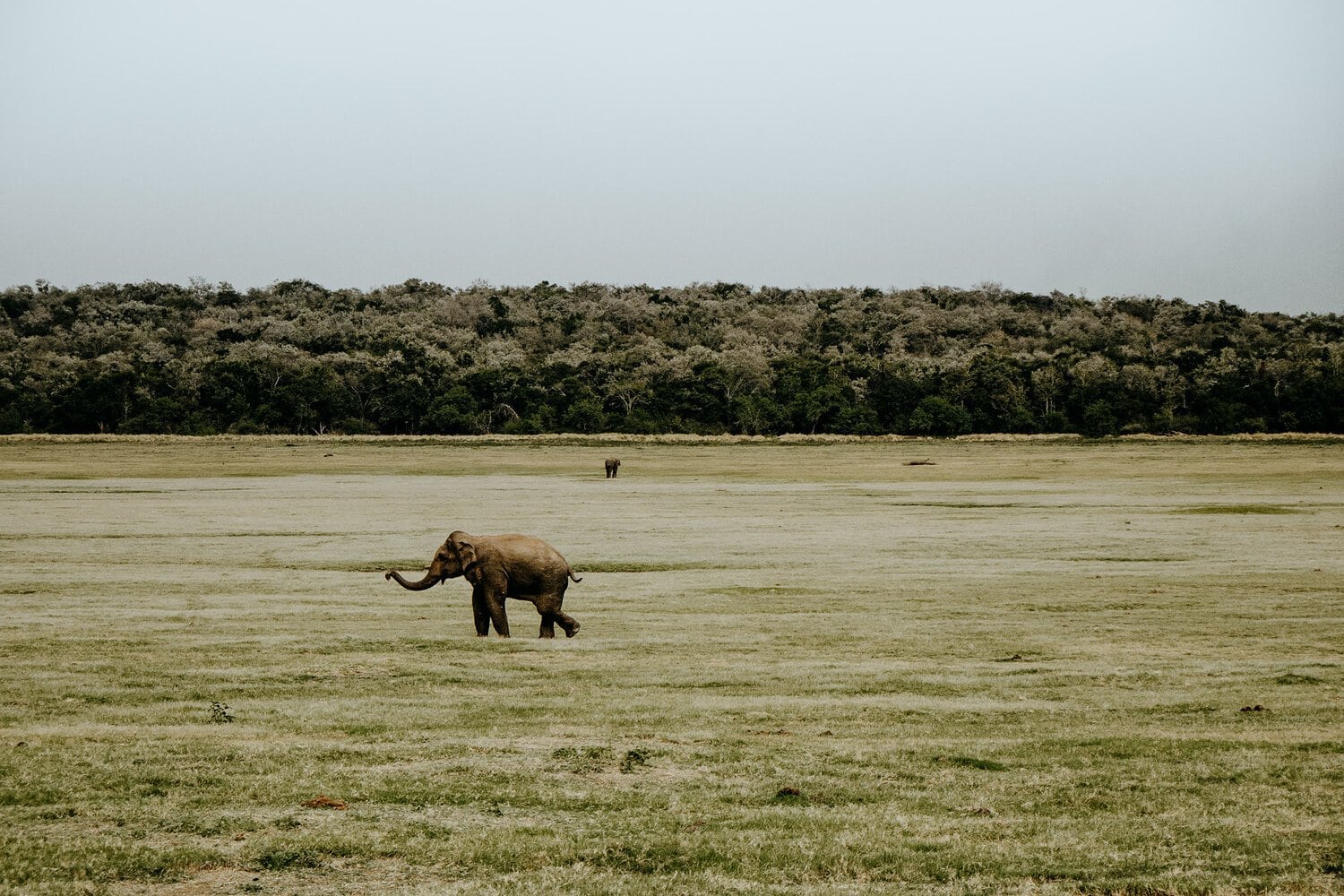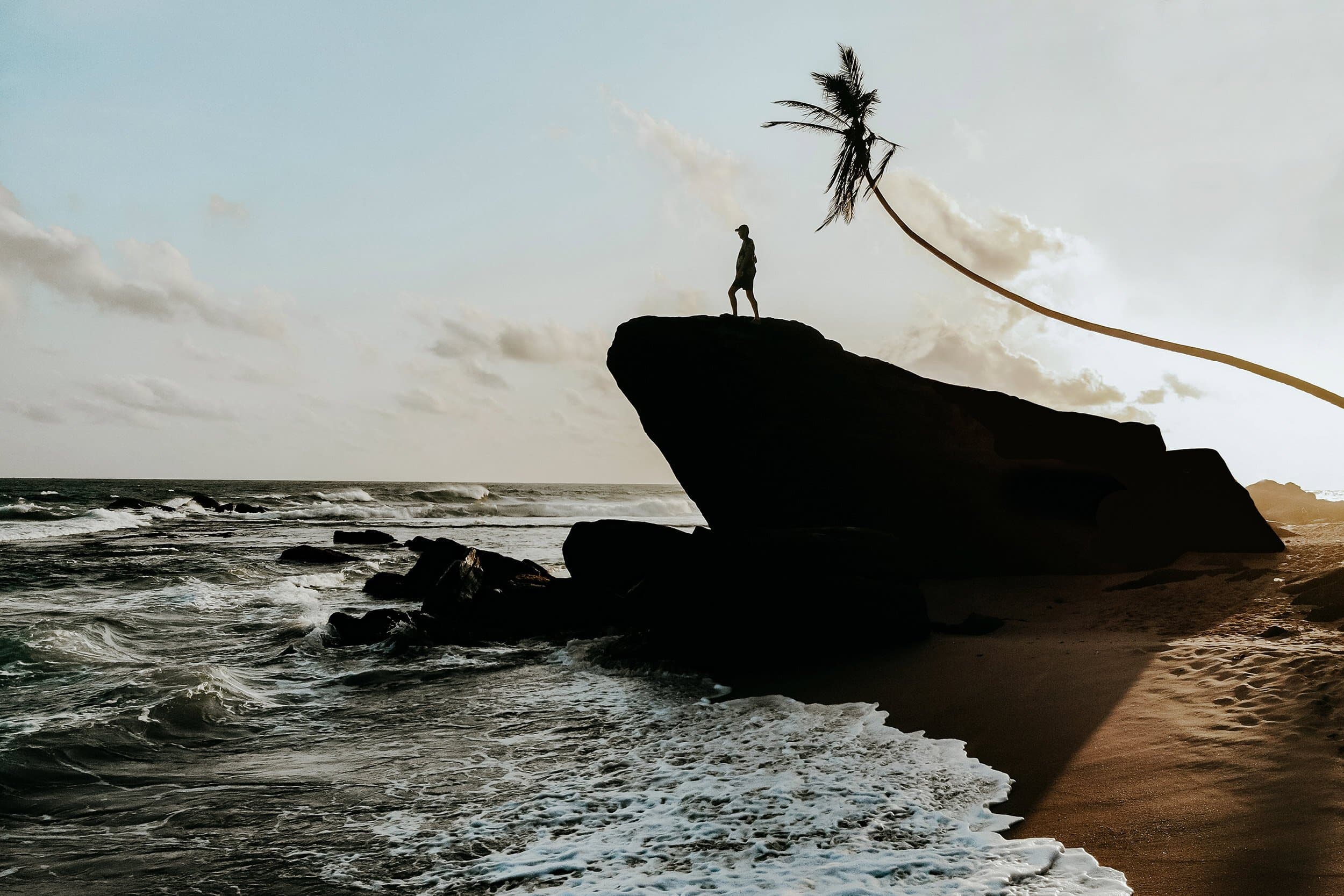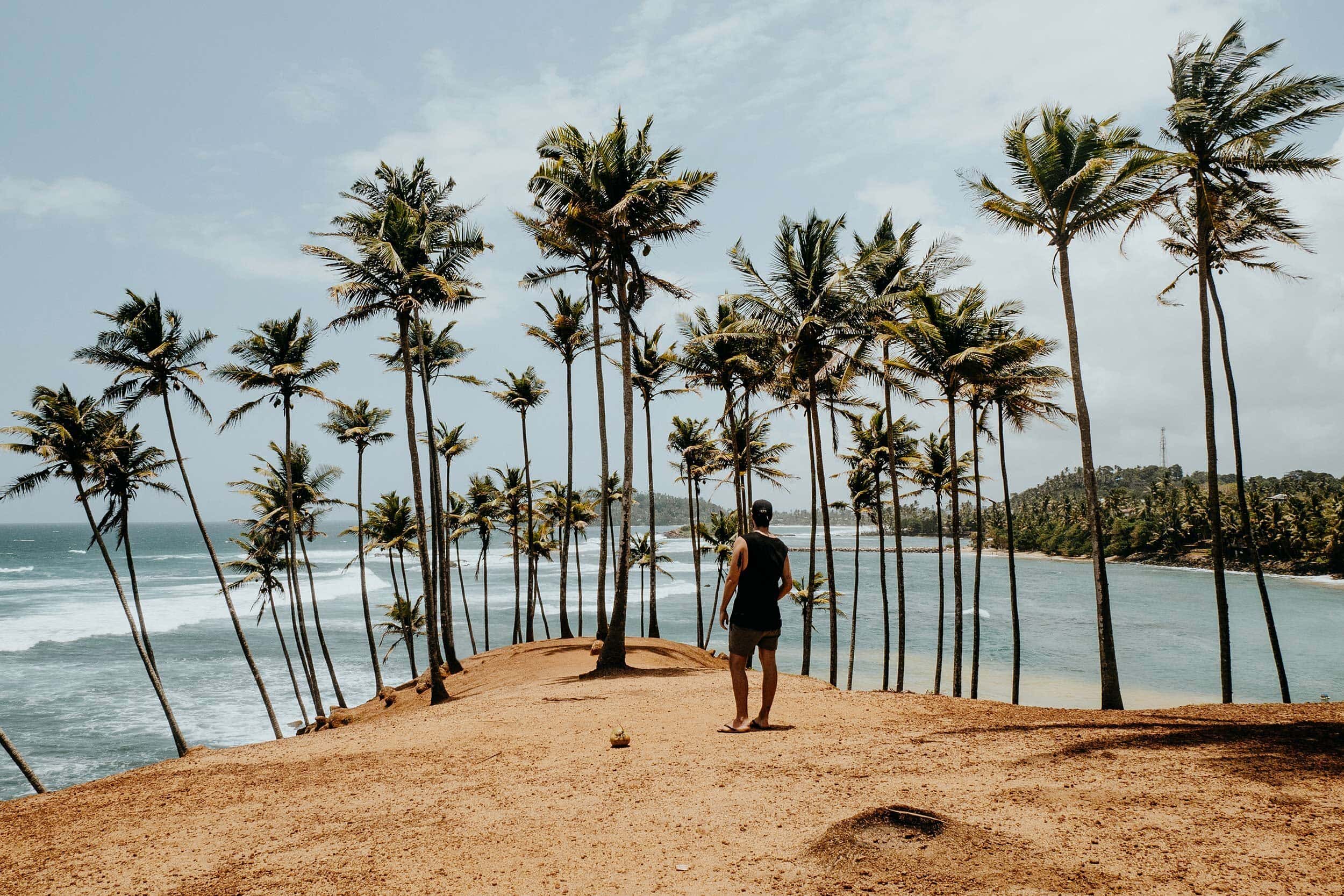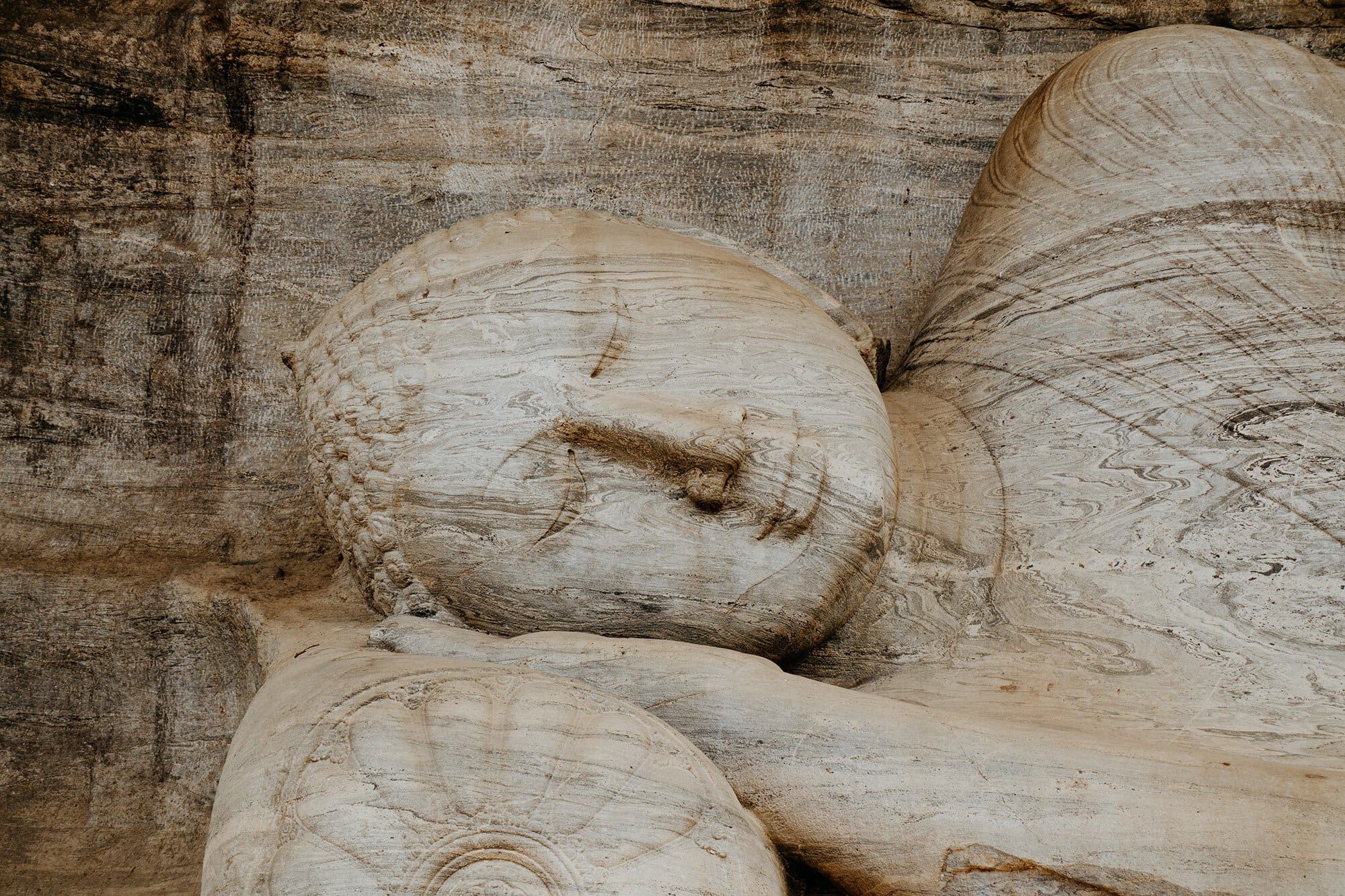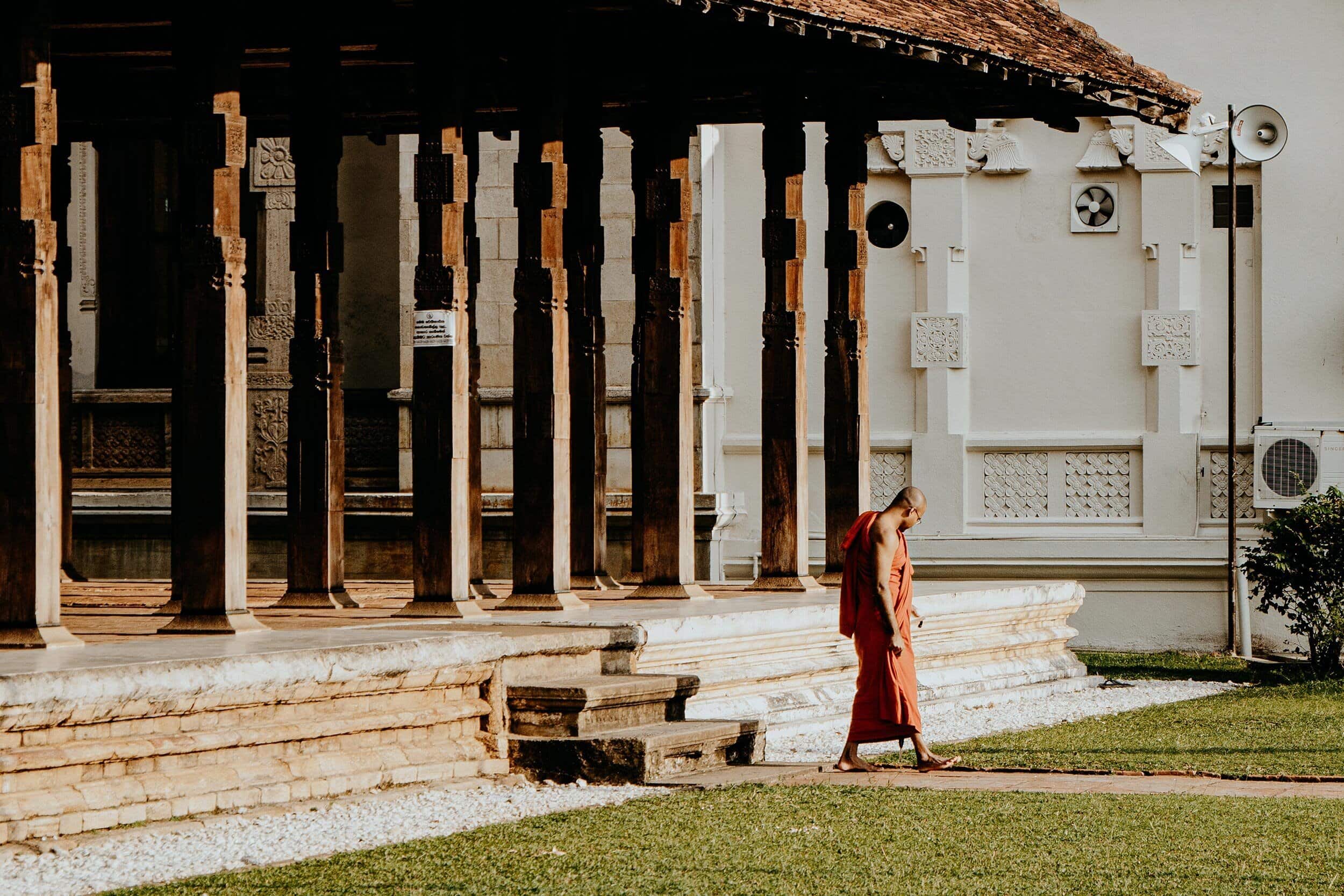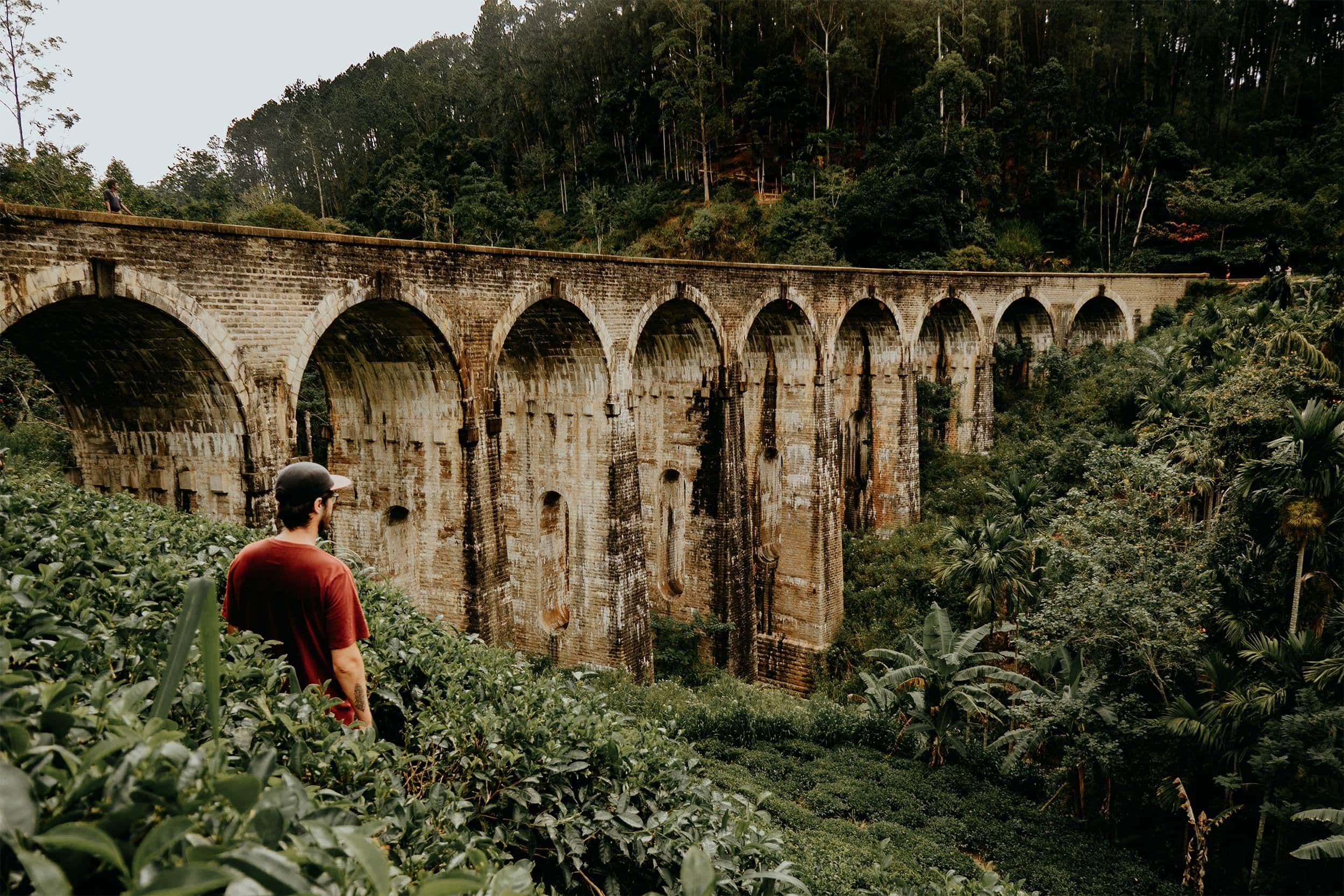A guide to Yala National Park, Sri Lanka’s best safari destination (Update 2023)
Looking to do a jeep safari in Yala National Park? Here’s my guide to Sri Lanka’s best safari destination, including what to see and do, the jeep safari price, and insightful travel tips.
For me, someone who never went on a wildlife safari before, Yala National Park was, without a doubt the most rewarding and exciting adventure during my trip to Sri Lanka.
It’s an exhilarating happening to embark on a jeep safari, knowing you’re about to observe extraordinary animals in their natural habitat while driving along the bumpy roads of the wildlife park.
Especially if you realize that Yala National Park is considered the most popular wildlife park on Sri Lanka’s teardrop-shaped island.
This excellent reputation is due to its dynamic landscape, great variety and density of wildlife – plus the fact that the park is acknowledged as one of the best places in the world to see leopards in the wild.
Here’s my guide to Yala National Park, featuring what to see and do, which safari to choose, and where to stay – plus insightful travel tips, including costs, the best time to visit, and how to get to Yala National Park.
If you choose to use any of the links on this page, I may receive a small commission at no extra cost to you. By using these links, you’ll have a direct impact on WTSW and my ability to continue to create free insightful travel content for you. If you find any of my tips useful, you can support me by buying a virtual coffee here.
The New Where the Souls Wander Print Store
After putting out my first-ever print collection in 2022, I decided it was finally time to re-open my print store, and I couldn’t be happier with the result.
Whether you’re looking to grab a unique piece for your own wall, gift one to a loved one to remind them of a memorable trip together, or simply get your hands on a piece because it provokes a specific memory or feeling, I’d be honoured and grateful if you decide to collect or gift one of my prints.
To celebrate the launch, I’m offering a 20% discount until the 24th of December.
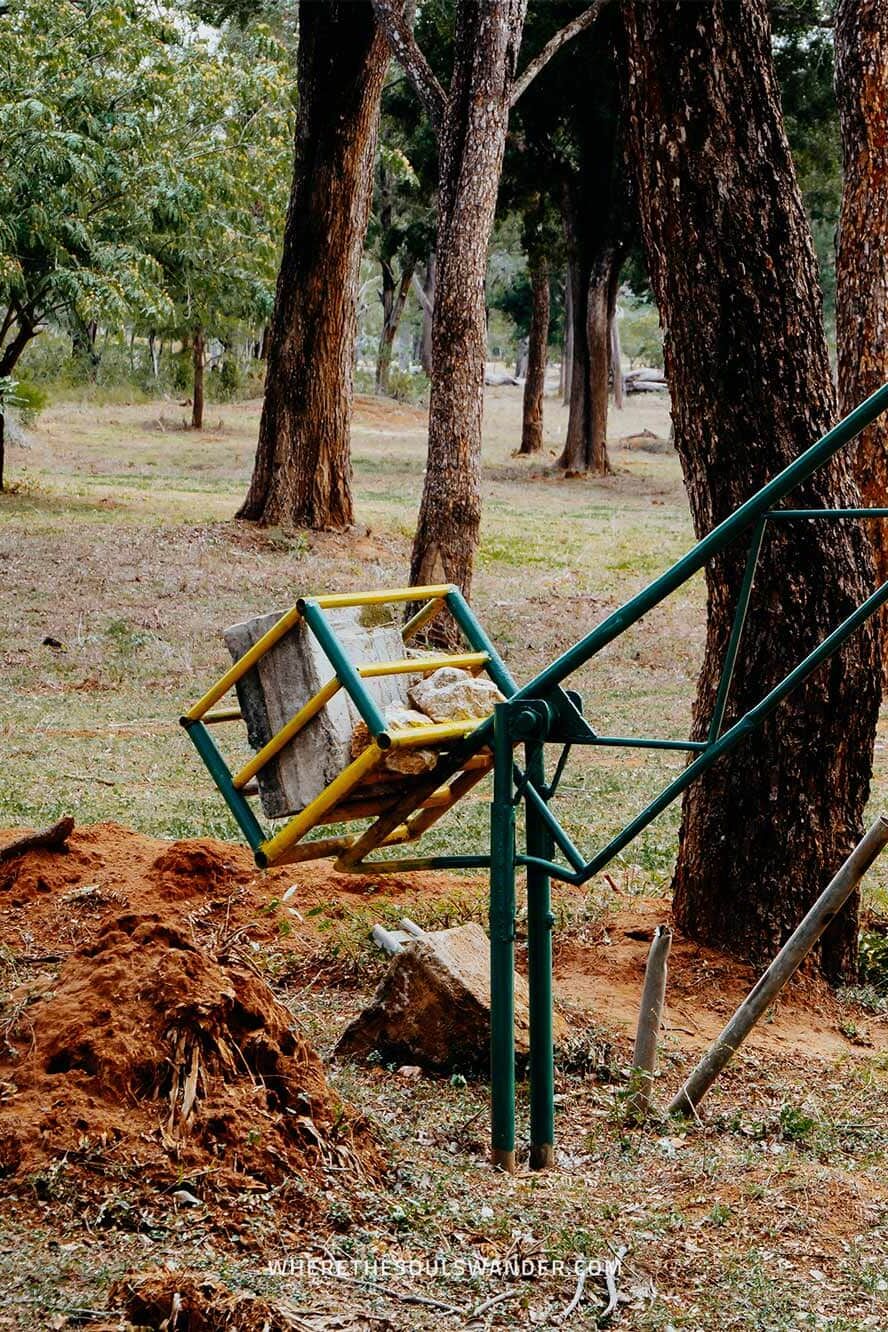
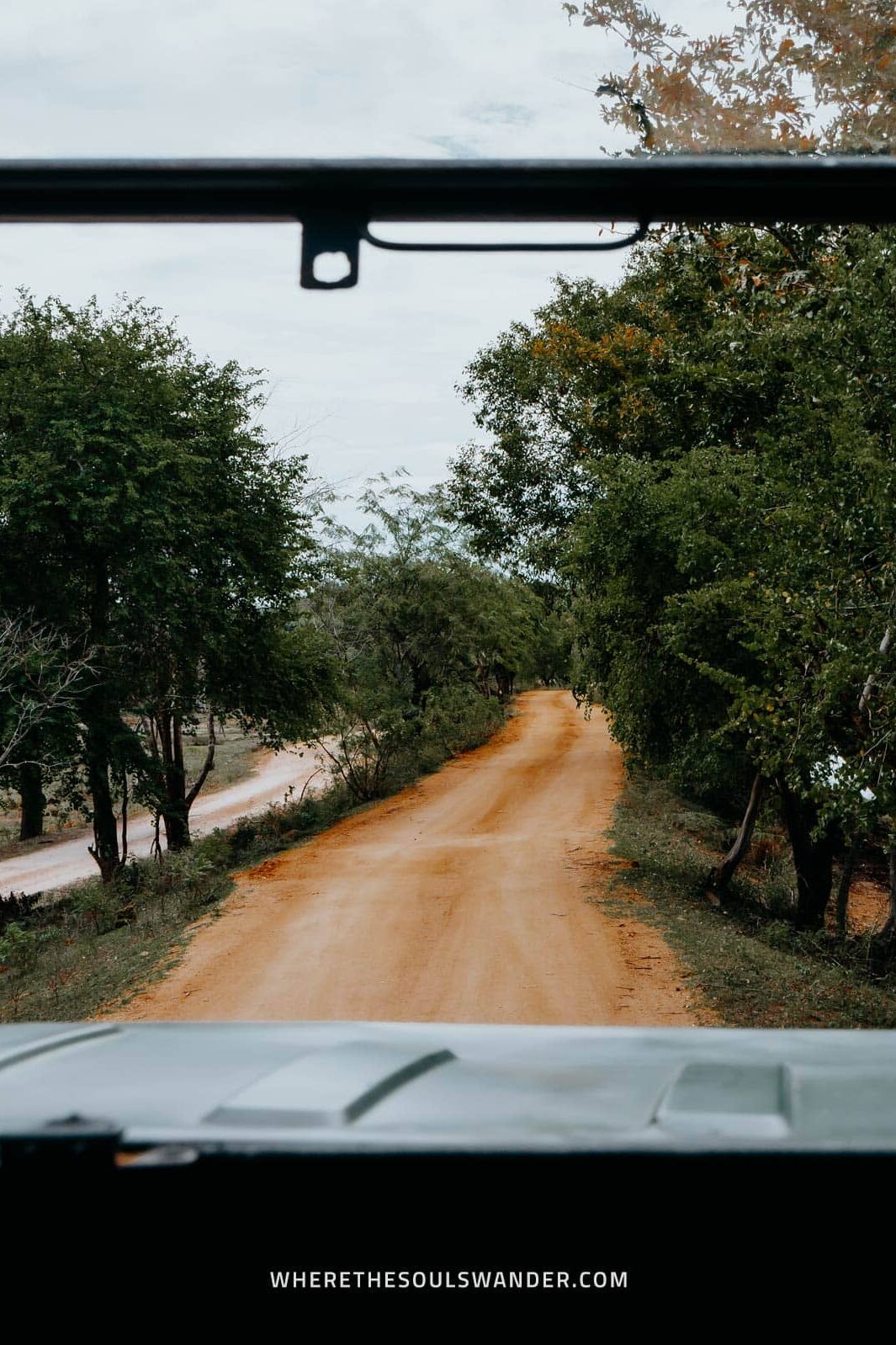
Where is Yala National Park?
Yala National Park is situated in the southeast region of Sri Lanka’s teardrop-shaped island and stretches over the two provinces, Hambantota and Monaragala.
The Yala National Park is quite remote, and therefore it’s almost inevitable to visit a town named Tissamaharama.
Tissamaharama itself isn’t the most interesting town and it’s also quite difficult to get to. Nevertheless, it functions perfectly as the only official gateway to the wildlife park.
The official Yala visitor centre is around 20km east of the town, which is easily reached by joining a Yala National Park tour from Tissamaharama.
Yala National Park opening hours
The Yala National Park is open daily from 06:00 to 18:00 and is pretty strict regarding the regulations of the opening hours.
If you’re joining a morning safari, the goal is to arrive at the gate well before it opens. Being one of the first in line provides the benefit of entering the park as early as possible.
It’s also essential that all jeeps are out of the park before it closes at 18:00. This is monitored by the official wildlife officers who note and check the license plates of the jeeps that enter and leave the park.

Where to stay near Yala National Park
You’ll find an abundance of excellent accommodations (both in and outside the park) that suit almost every budget and travel style.
Tissamaharama has no shortage of budget-friendly options, comfortable lodges and luxury hotels, while there’s also a great number of luxurious wildlife campings and chalets inside the Yala National Park itself.
Going on a safari in Yala National Park is extremely popular and therefore it’s wise to book your accommodation a couple of weeks in advance, especially if you’re planning to visit during the high season.
Some of the accommodations I recommend include:
Hotel River Front |A charming riverfront hotel with spacious air-conditioned rooms, comfortable beds, and a great outdoor swimming pool. The hotel has a good in-house restaurant that serves excellent local, Chinese and Continental food.
Thaulle Resort | Located directly at Yoda Lake, Thaulle Resort is a great hotel with traditional Sri Lankan-style rooms, spectacular lakeside views, a large outdoor pool and a courteous and helpful staff. This hotel provides all the essentials to unwind after an adventurous safari tour in Yala National Park.
Cinnamon Wild Yala | If you’re looking for a once-in-a-lifetime experience, look no further. Cinnamon Wild offers astonishing eco-friendly chalets in the midst of the lively jungle of the beloved Yala National Park. Undisputedly one of the best picks when it comes to uniqueness, comfort and world-class service.
Jetwing Yala | A luxurious hotel with a marvellous outdoor pool, spacious air-conditioned rooms, and a charming ambience. Given the location of the hotel, you’ll be encircled by delicate nature and fascinating wildlife. The friendly staff also provide great service and hospitality.
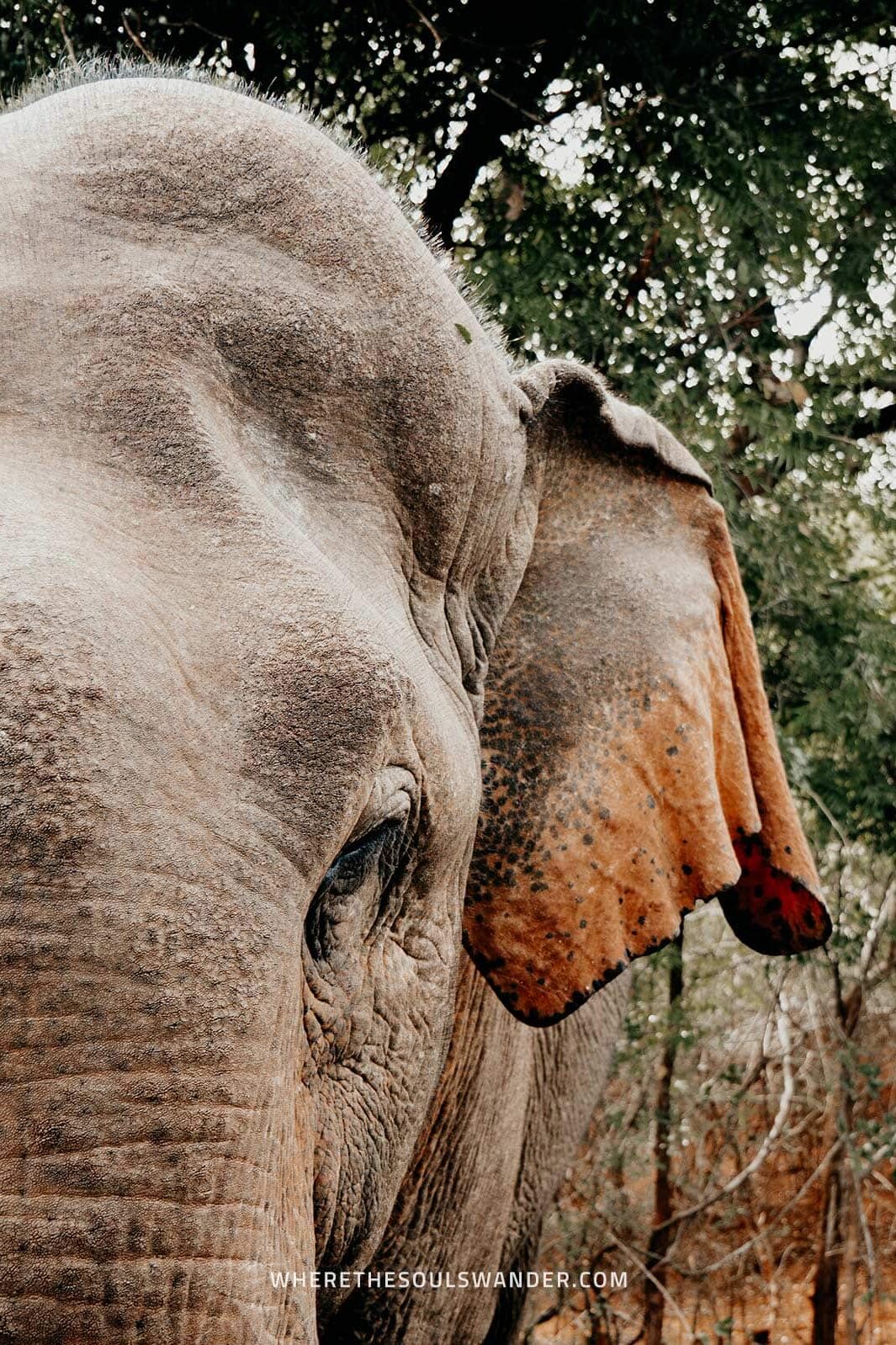
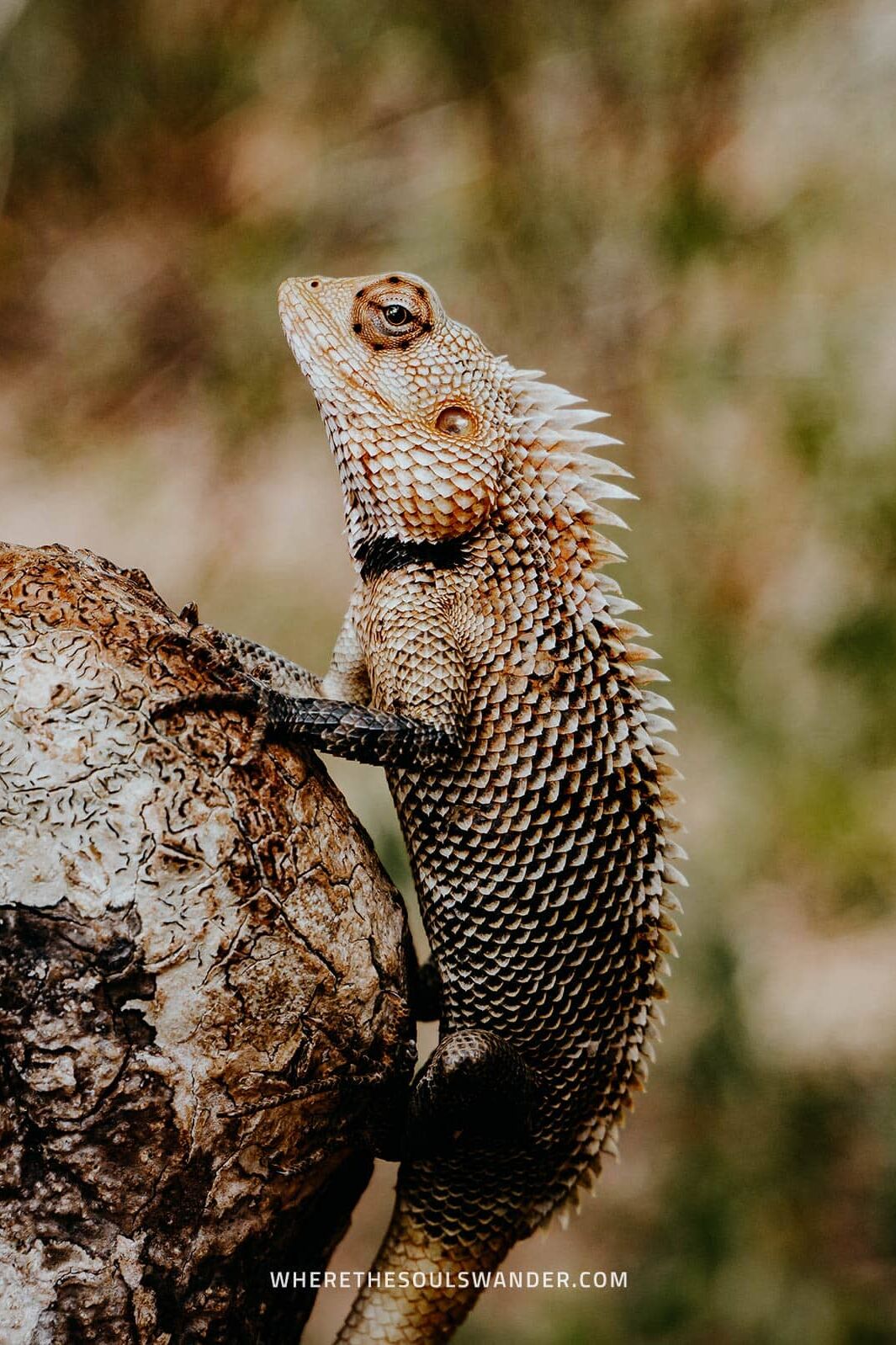
What animal could you see during a Yala National Park Safari?
Yala National Park is a vast dynamic reserve, consisting of dense jungle, endless grasslands and several lakes and lagoons.
This distinct landscape ensures the perfect habitat for a great variety and density of wildlife, making Yala one of the best national parks in Sri Lanka.
But it isn’t just the variety of animals that makes Yala National Park so popular. No, it’s mostly the fact that it’s acknowledged as one of the best spots in the world to see wild leopards.
The animals of Yala National Park
Although taking a safari tour doesn’t guarantee that you’ll see every animal that lives in the Yala National Park, it’s safe to expect to get up close and personal with water buffalos, wild boars, spotted deer, monkeys and peacocks.
Beyond the aforementioned wildlife, there is the potential sighting of leopards, elephants, Black Sloth bears, Fishing cats, Red Slender loris and crocodiles.
In total, the Yala National Park is home to 44 species of mammals, 215 species of birds and 46 species of reptiles, which makes it impossible not to spot any animals during your safari.
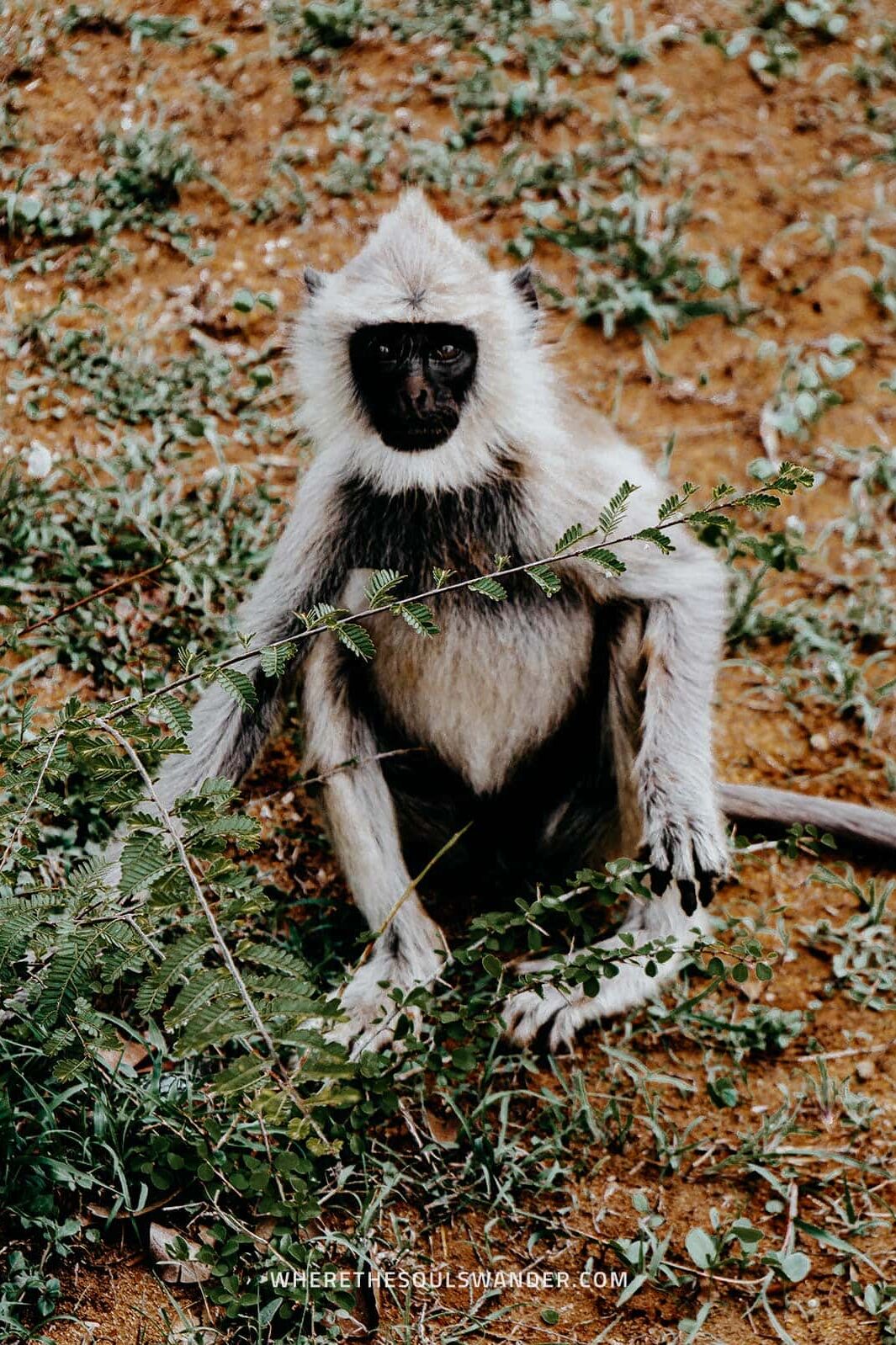
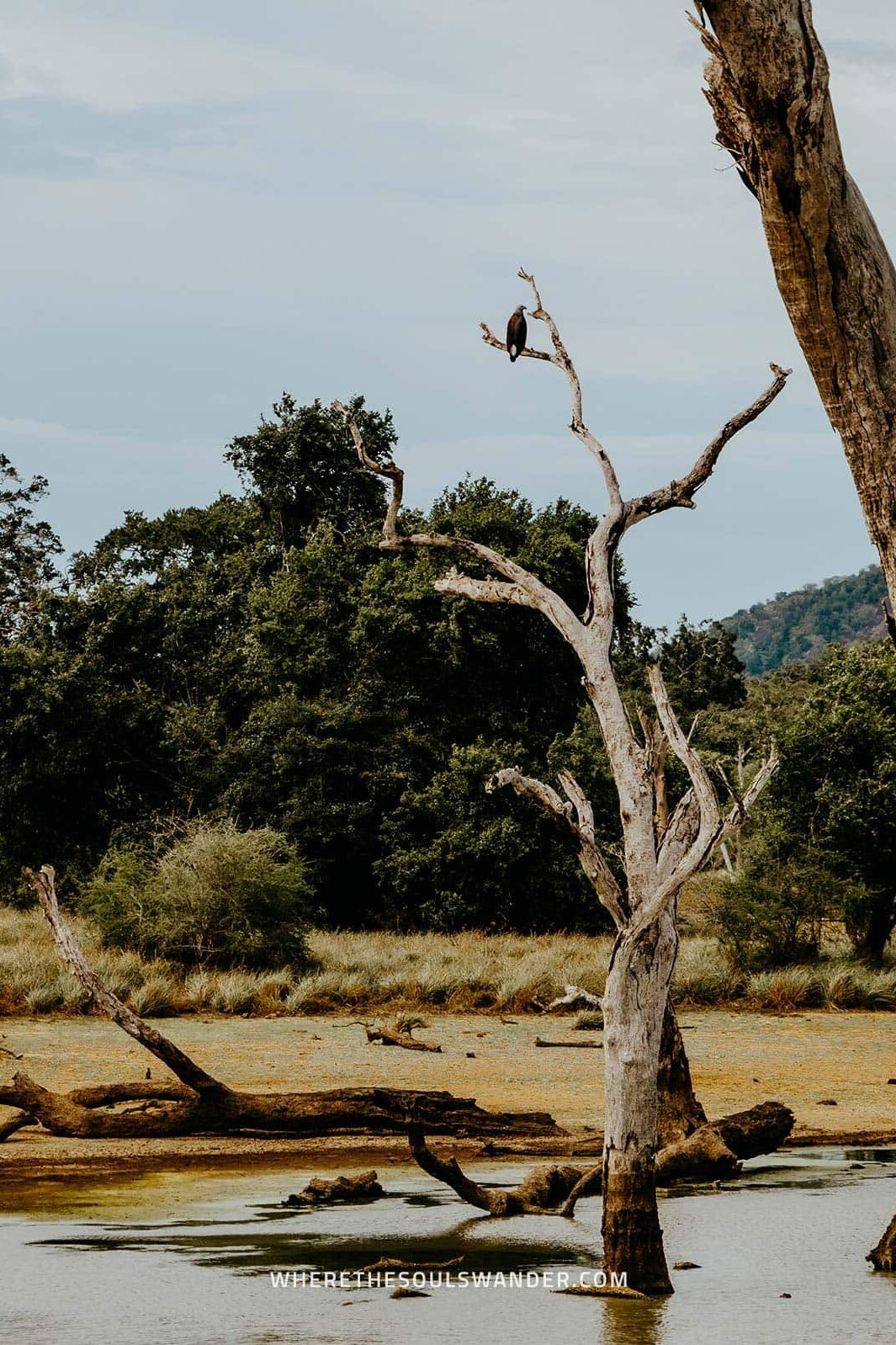
Leopard sightings in Yala National Park
According to extensive research, Yala National Park is said to have the biggest concentration of leopards in the world.
And given there live roughly 55 leopards within the park, you might have the good fortune to encounter one during your jeep safari in Yala.
However, each safari is completely unique and it’s impossible to guarantee what animals you’re going to see (especially the rare species). Therefore I highly recommend lowering your expectations, as it’s less common to encounter leopards.
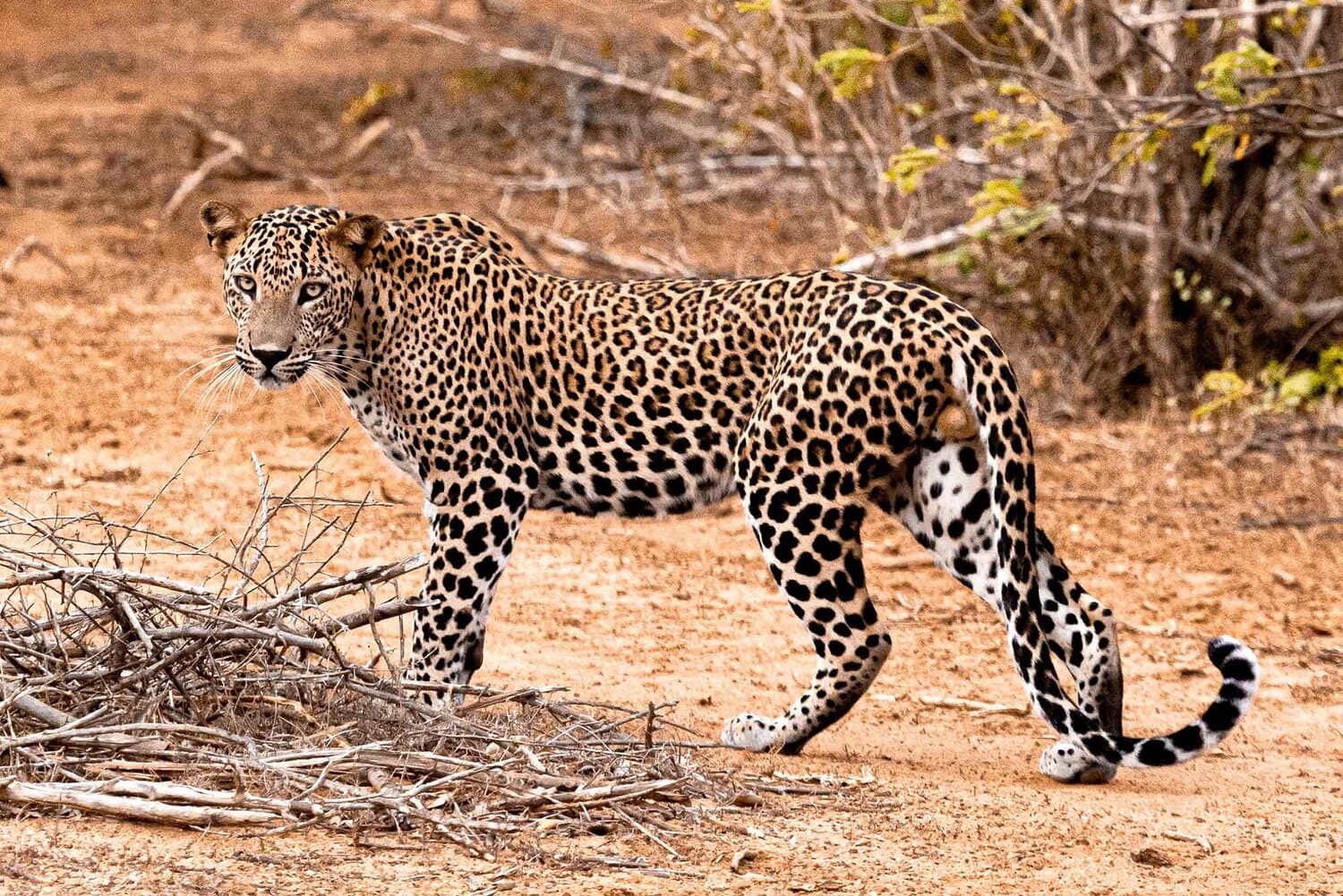
Join a Yala National Park tour
Tissamaharama is home to an abundance of safari tour operators, that are all extremely willing to take you on your once-in-a-lifetime Yala National Park safari experience.
A Yala safari jeep has the capacity for up to 6 people and the safari tour operator will usually arrange a pick-up and drop-off at your accommodation.
Yala National Park can be visited as part of a morning, afternoon or full-day jeep safari.
Book | Arrange your Yala National Park Safari Tour in advance
Morning safari in Yala National Park
It is often said that a morning safari in Yala National Park provides the best circumstances when it comes to the potential sightings of elusive wildlife.
This is mainly due to the fact that the animals aren’t yet disturbed by the countless amount of jeeps that drive along the park’s dusty roads throughout the day.
Even though waking up at 04.30 is pretty intense, it’s safe to say that it’s completely worth it.
By joining a morning safari, you’ll get picked up at your accommodations around 05.00 with the mission to arrive at the entrance of the park before it opens at 06.00.
In my opinion, the best part of a morning safari is the exciting journey to the park whilst it’s still dark, knowing you’re about to witness exquisite wildlife while it’s still relatively quiet in the park.
BOOK | This extremely popular guided safari during the golden hour
Duration | 05:00 – 10:00 with approximately 3 hours in the park.
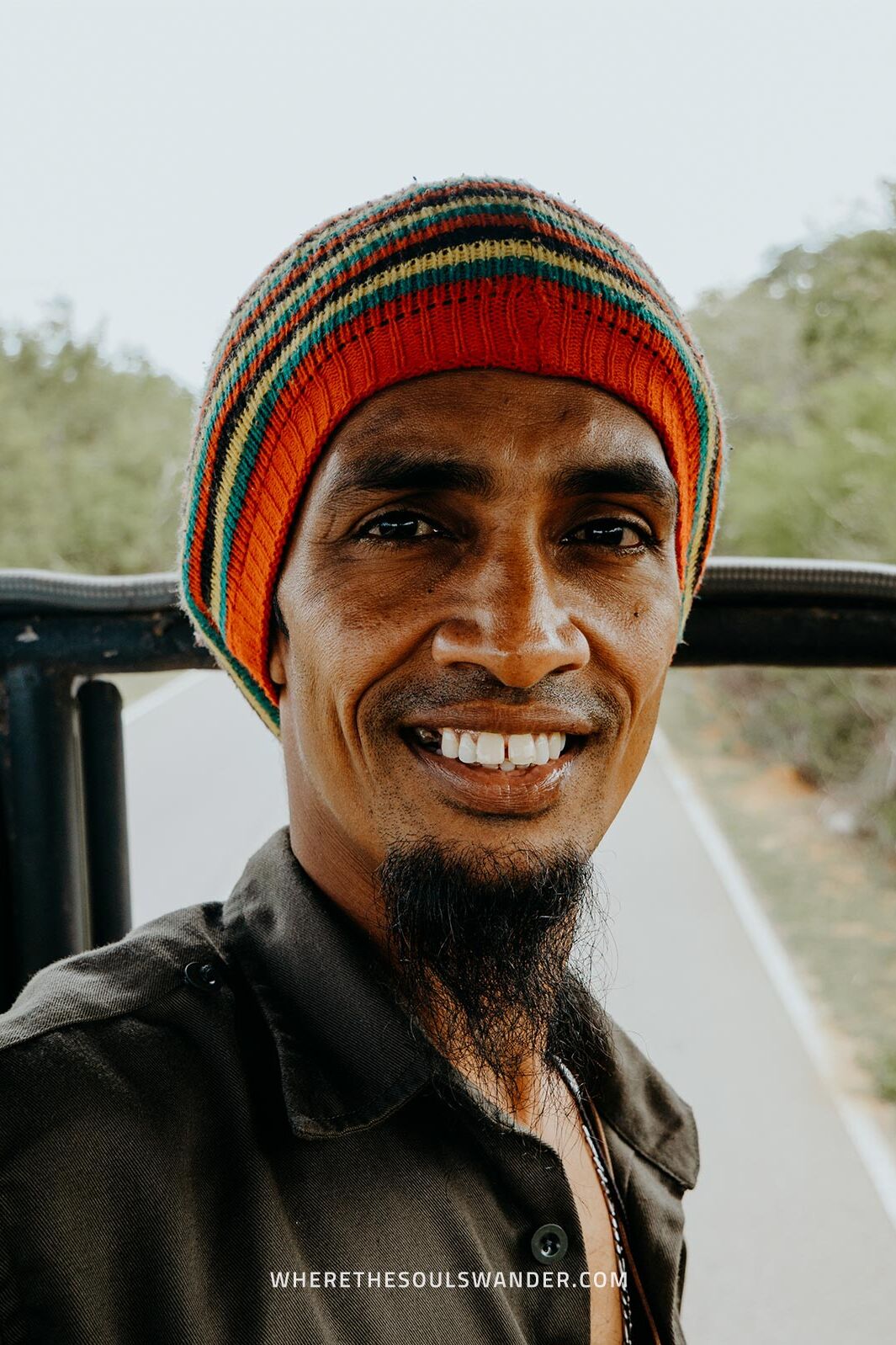
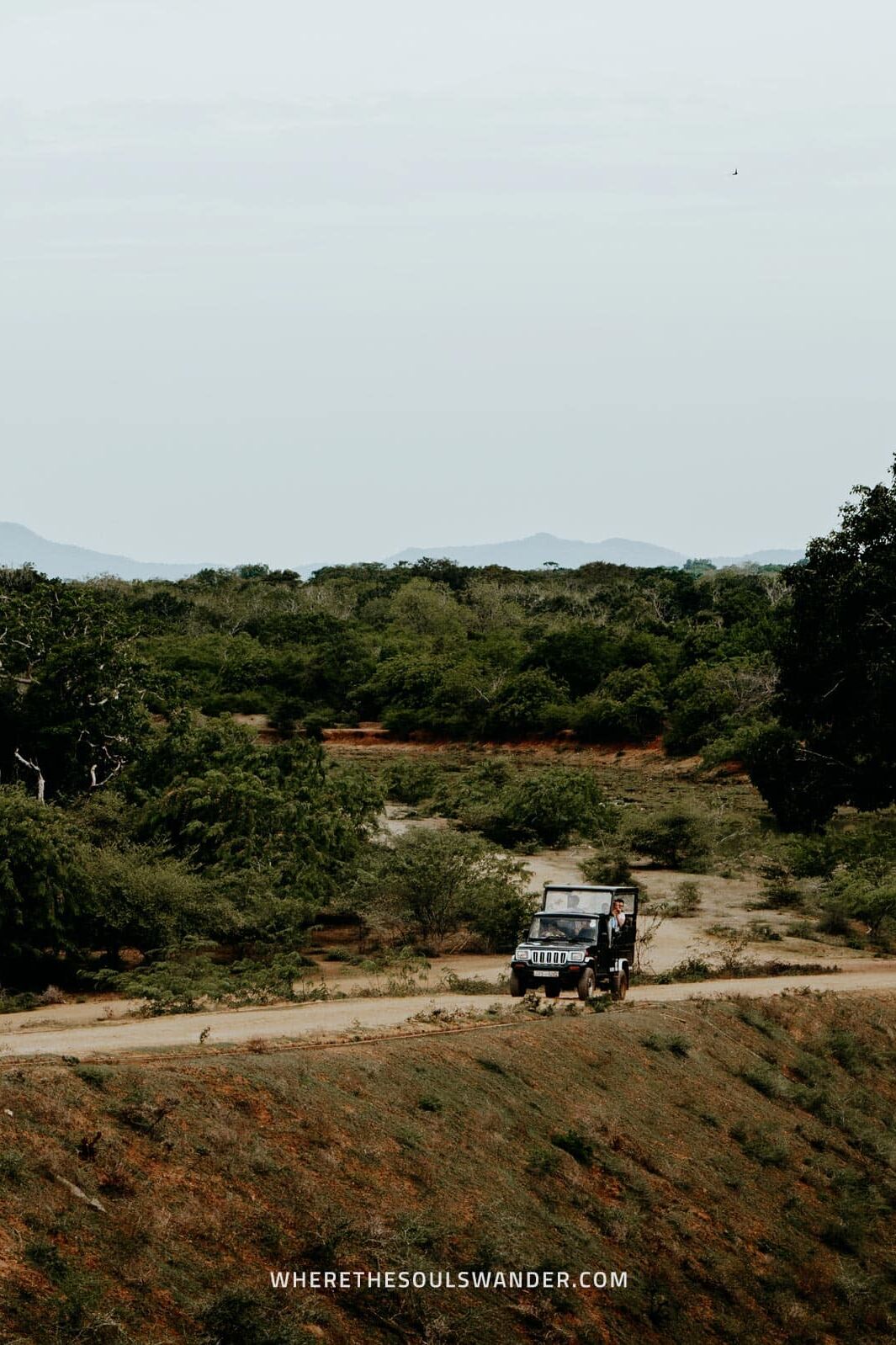
Afternoon safari in Yala National Park
A great alternative for those who experience difficulties when waking up early is taking the slightly more popular afternoon safari in Yala National Park.
According to most Yala safari rangers, there isn’t a significant difference between the morning and afternoon safari when it comes to the sightings of wildlife.
I’ve seen a great variety of animals during my afternoon safari in Yala National Park, and found it a tranquil yet adventurous experience – plus I witnessed a magnificent sunset while leaving the park.
Duration | 13:00 – 18:00 with approximately 3 hours in the park.

Full-day safari in Yala National Park
Although it sounds pretty attractive, I personally wouldn’t recommend going on a full-day safari in Yala National Park.
Being in the park for 12 hours straight is extremely exhausting – plus you should keep in mind that you’re in the park during the hottest part of the day. Believe me, this can be quite intense in Sri Lanka.
It is also not guaranteed that you’ll see more animals during a full-day safari than during a morning or afternoon safari in Yala National Park.
Duration | 05:00 – 19:00 with approximately 12 hours in the park.

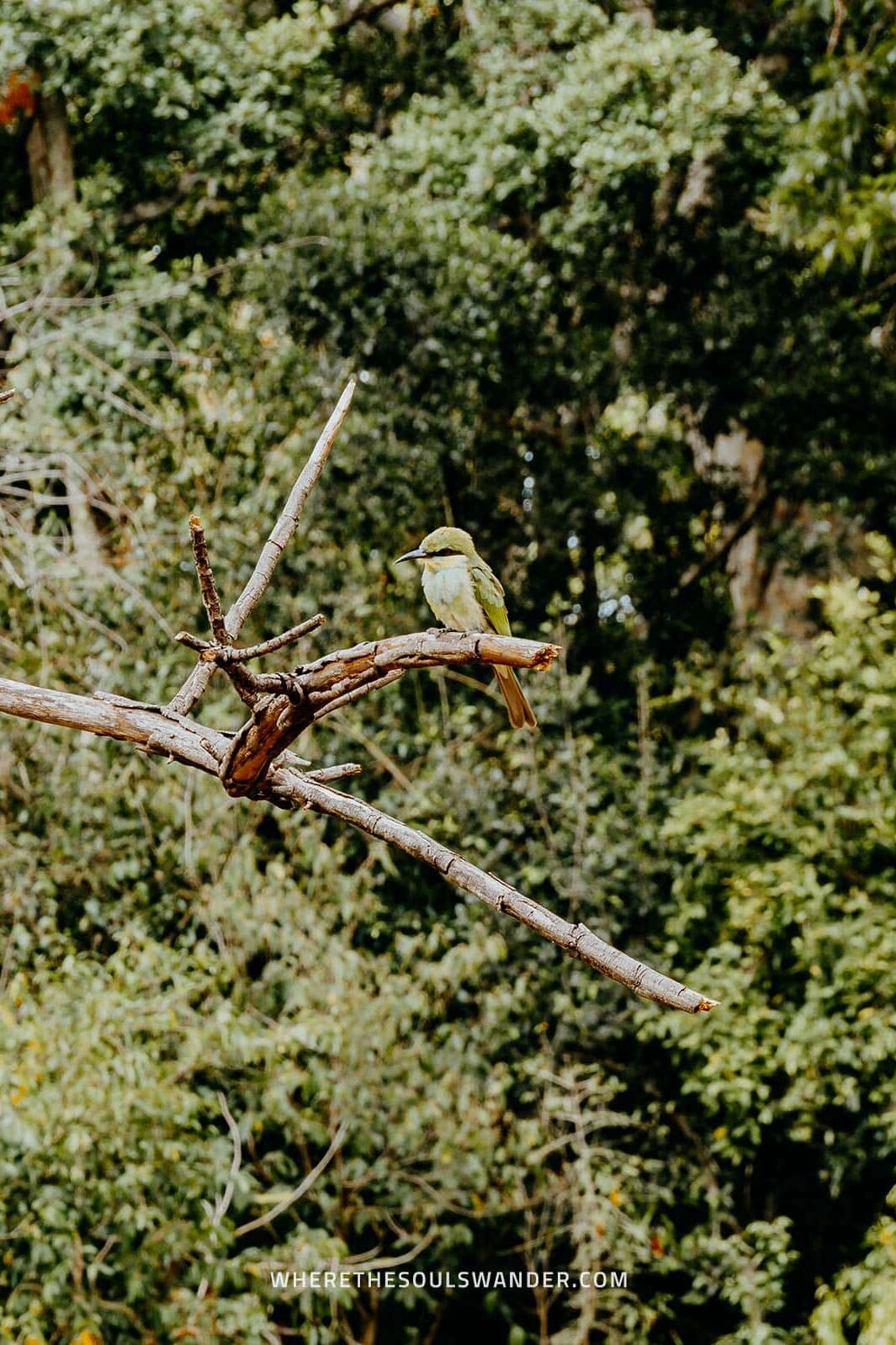
Yala National Park cost overview
The price of a jeep safari is made up of the official Yala National Park entrance fee – plus the price that you’ll arrange with your safari tour operator.
The price of a safari tour operator varies and depends on the following elements: the duration of the tour, the tour operator and the number of people that join the safari tour.
The jeep safari tour prices are often per jeep, which can hold up to six persons, and are easy to organize at nearly every accommodation in Tissamaharama.
I made an insightful summary, so you’ll have a clear indication of the costs of a jeep safari in Yala National Park.
Yala National Park entrance fee in 2024 | 11.000 LKR, ($37.50) per person
Half-day jeep safari | 14.000 – 17.000 LKR ($47.60 – 57.80) per jeep
Full-day jeep safari | 28.000 – 34.000 LKR ($95 – 115) per jeep

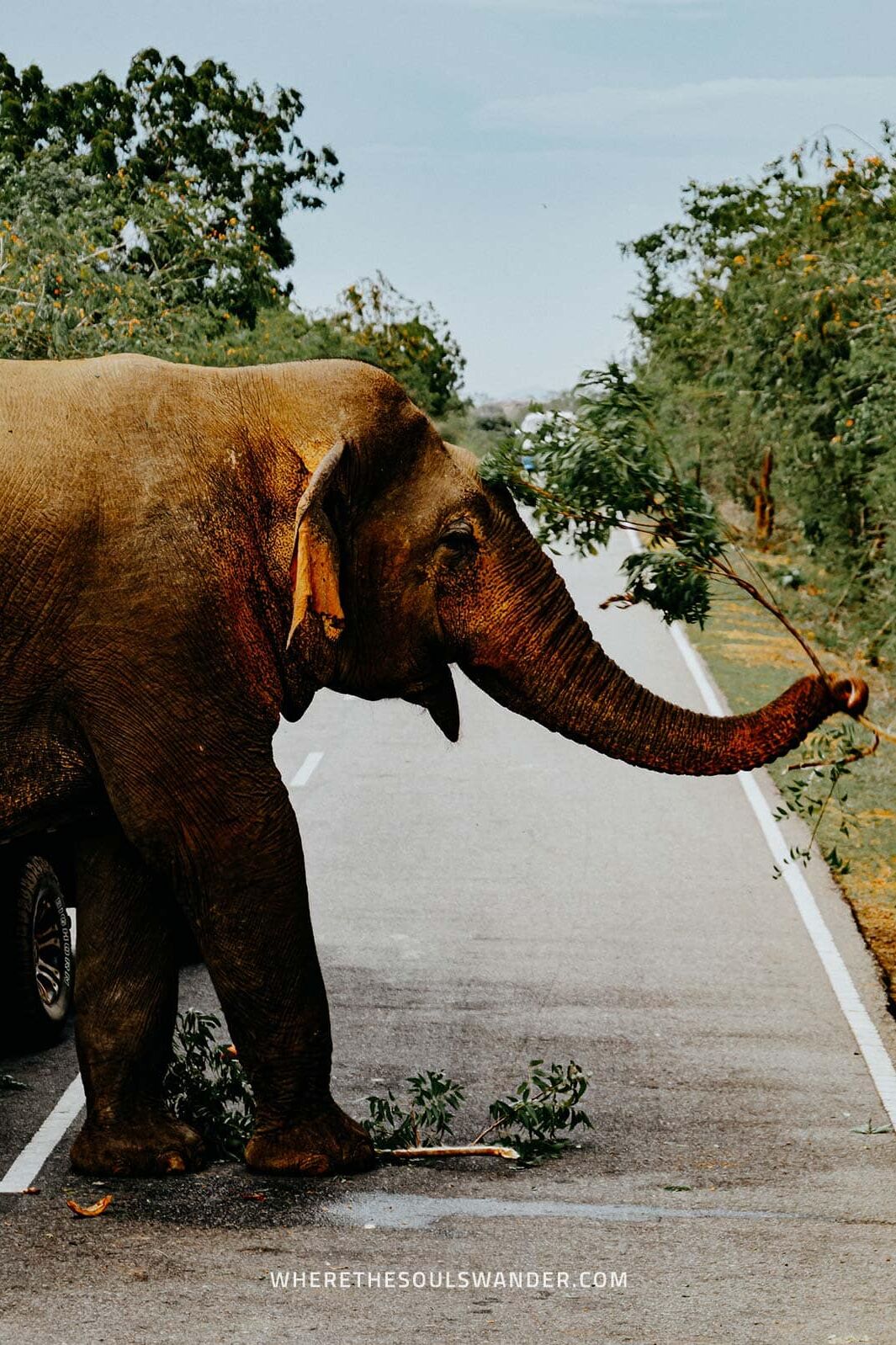
Yala National Park | The essentials
The best time to visit Yala National Park
Although you can visit the park year-round, the absolute best time to visit Yala National Park is during the dry season. This season runs from February to June, with February and March as the undisputed peak months to spot leopards.
It is said that it’s easier to spot wildlife during this period, mainly because of the deficient natural water resources that are available in the park. For that reason, animals get active to go out of their hideouts and drink from the accessible water ponds.
I personally visited Yala National Park during the offseason in September and had a great safari experience with an impressive number of animal sightings.
Do keep in mind that there is a great possibility you’ll find the park closed for maintenance in September.
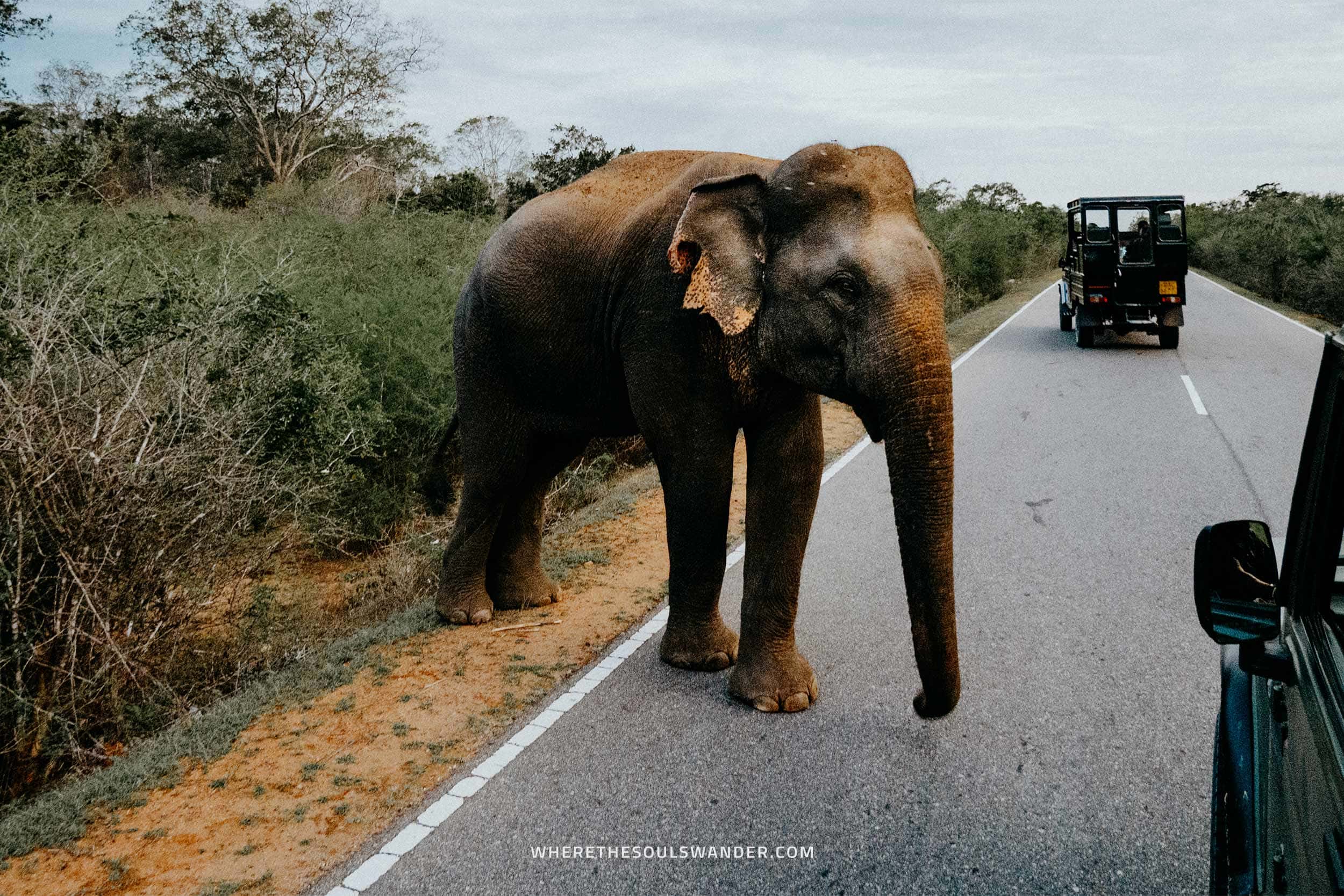
How to get to Yala National Park
The Yala National Park is slightly off the beaten path compared to other popular sights in Sri Lanka. This doesn’t mean you’ll have to be discouraged, it’s more than worth the extra effort.
The only gateway to the Yala National Park is a town named Tissamaharama, which is best reached by local bus or car.
The journey by bus can be quite long, intense and exhausting, but trust me, it’s one of the best ways to experience daily local life.
Do keep in mind that the local bus stops frequently and that you’ll need to change busses on several occasions to reach Tissamaharama.
The Yala National Park is usually visited after Mirissa, Ella or Arugam Bay.
From Mirissa to Tissamaharama
Bus journey | Mirissa – Matara – Tissamaharama
Cost | 250 – 330 LKR, ($1.30 – 1.80) per person
Travel time | Around 3.5 hours
From Ella to Tissamaharama
Bus journey | Ella – Tissamaharama
Cost | 220 – 250 LKR, ($1.20 – 1.35) per person
Travel time | Around 2.5 hours
From Arugam Bay to Tissamaharama
Bus journey | Pottuvil – Monaragala – Wellawaya – Tissamaharama
Cost | 350 – 380 LKR, ($1.90 – 2.10) per person
Travel time | Around 6.5 hours
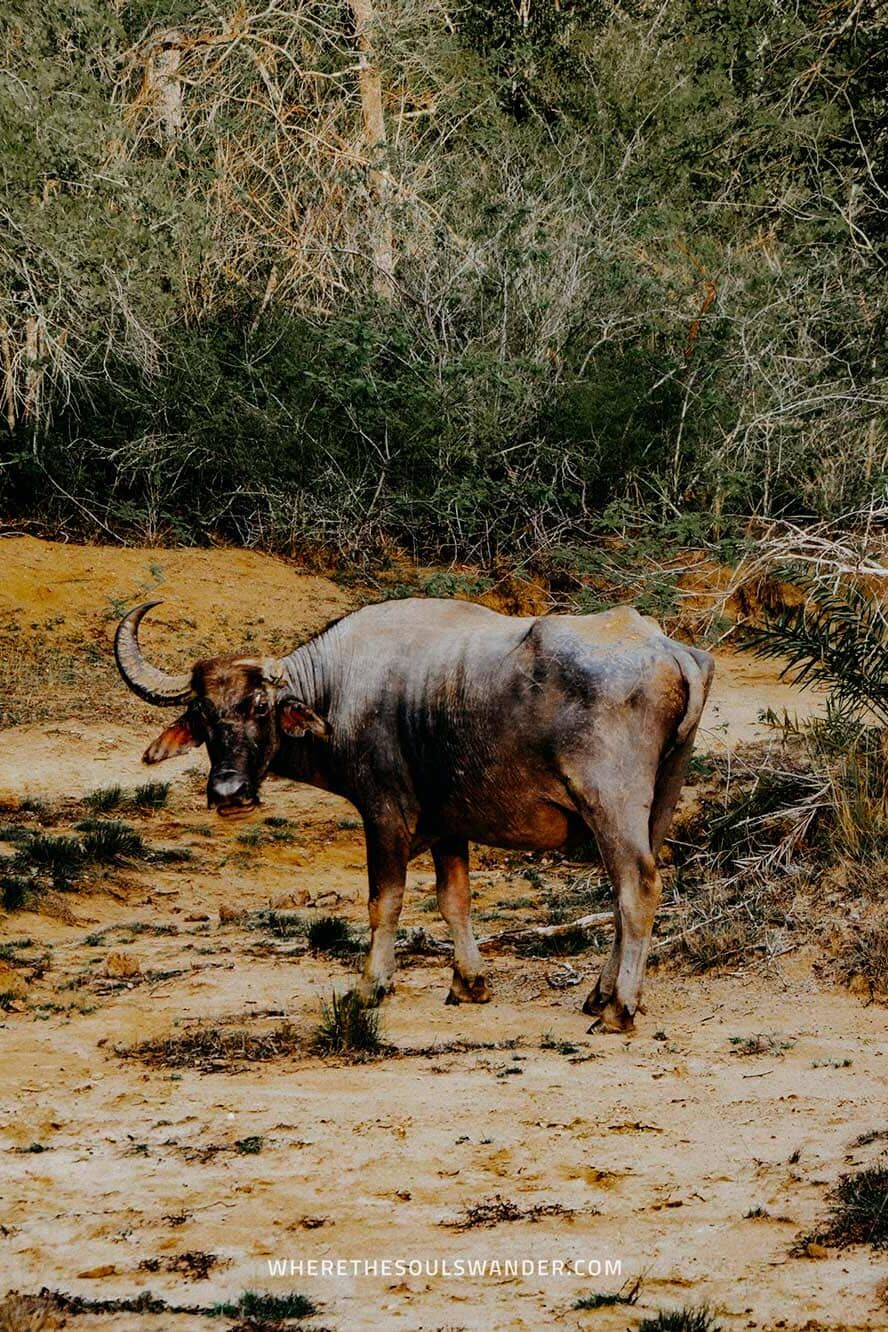
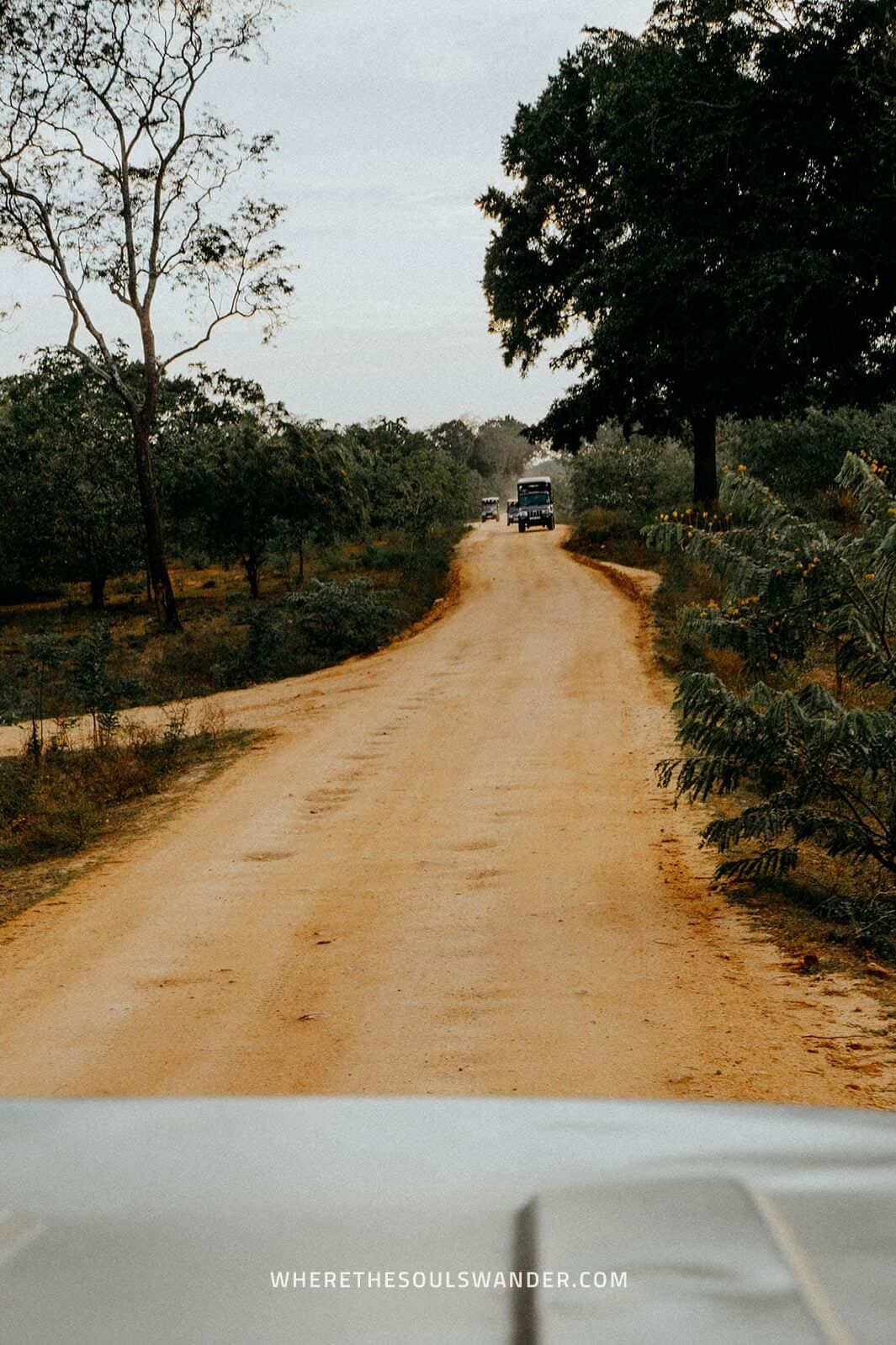
Insightful travel tips for a visit to Yala National Park
Photography gear | If you’re into serious photography you might want to bring your camera and zoom lens. See what’s in my camera bag here.
Sunscreen | Even though the jeep is partly covered, the sun can be extremely harsh during a safari in Yala. Better safe than sorry.
Bug repellent | It’s always good to have a good bug repellent within hand reach.
Sweater | Bring a warm sweater. This will be your best friend during a morning safari.
Drinking water | Bring drinking water to stay hydrated throughout the day.
No toilets in the park | Do keep in mind that there are no toilets available inside the park.
Visit without expectations | Last but not least, lower your expectations before going on a safari. Every safari is unique and there is no guarantee that you’ll see all the animals you hope to see.
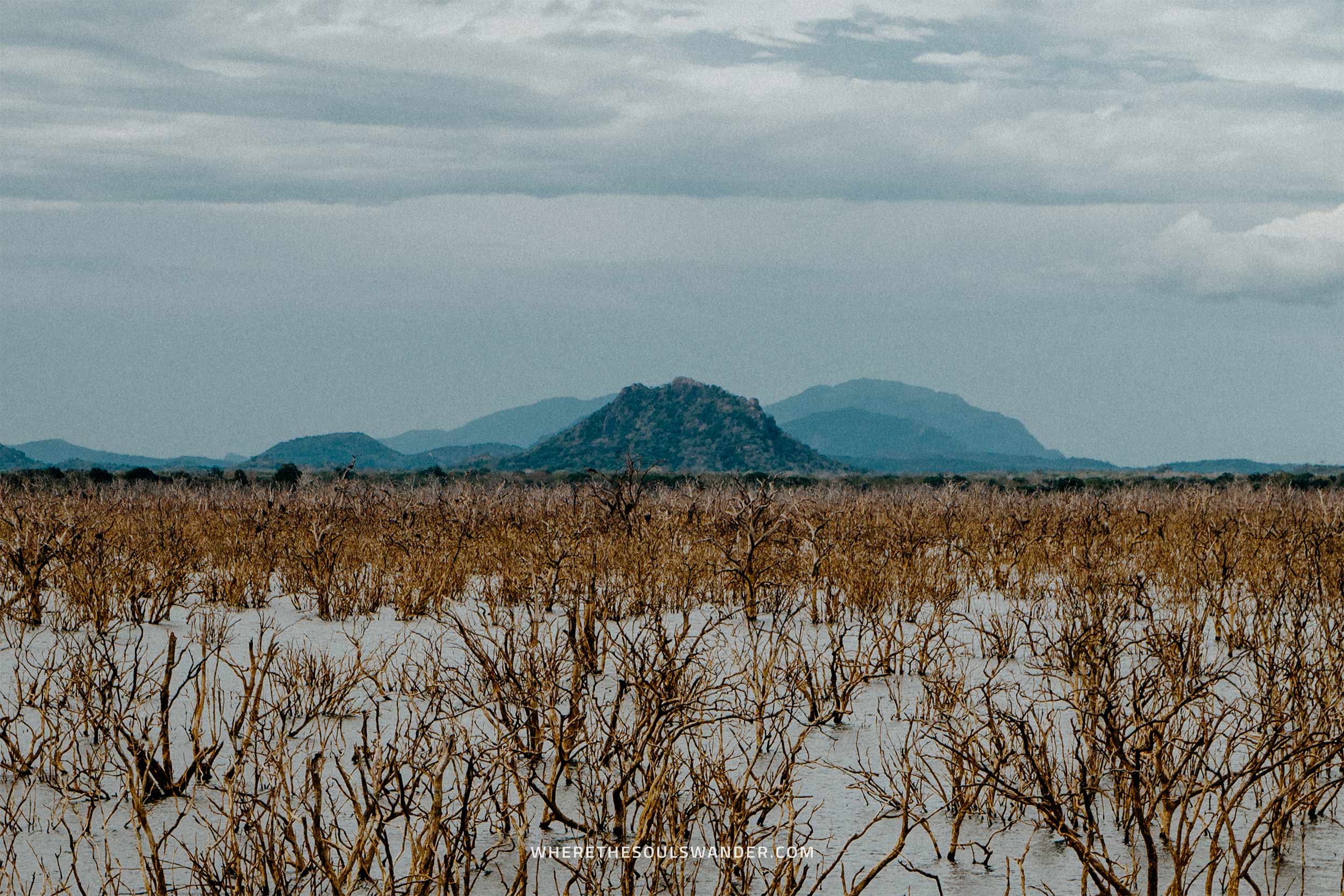
Stay safe in Sri Lanka | Travel insurance
Though Sri Lanka is perfectly safe for travellers, I always strive to sort out my travel insurance before arriving in a foreign country, and I highly advise anyone else to do the same.
Where we prefer that everything goes smoothly during our travels, something unfortunate can happen at any moment, whether it’s an injury or an accident on the road. When that happens, it is better to be safe than sorry.
Heymondo | Whether you’re going on a 3-week backpacking trip, or planning a long stay somewhere abroad, Heymondo has excellent insurance options either way – plus full COVID-19 coverage and a handy app with 24-hour medical assistance. Readers of WTSW receive 5% off any insurance policy, more information here.
Cheers!
I’ve been on this travel blogging journey since 2019.
If you appreciate what I do here, these are some ways you can support me.
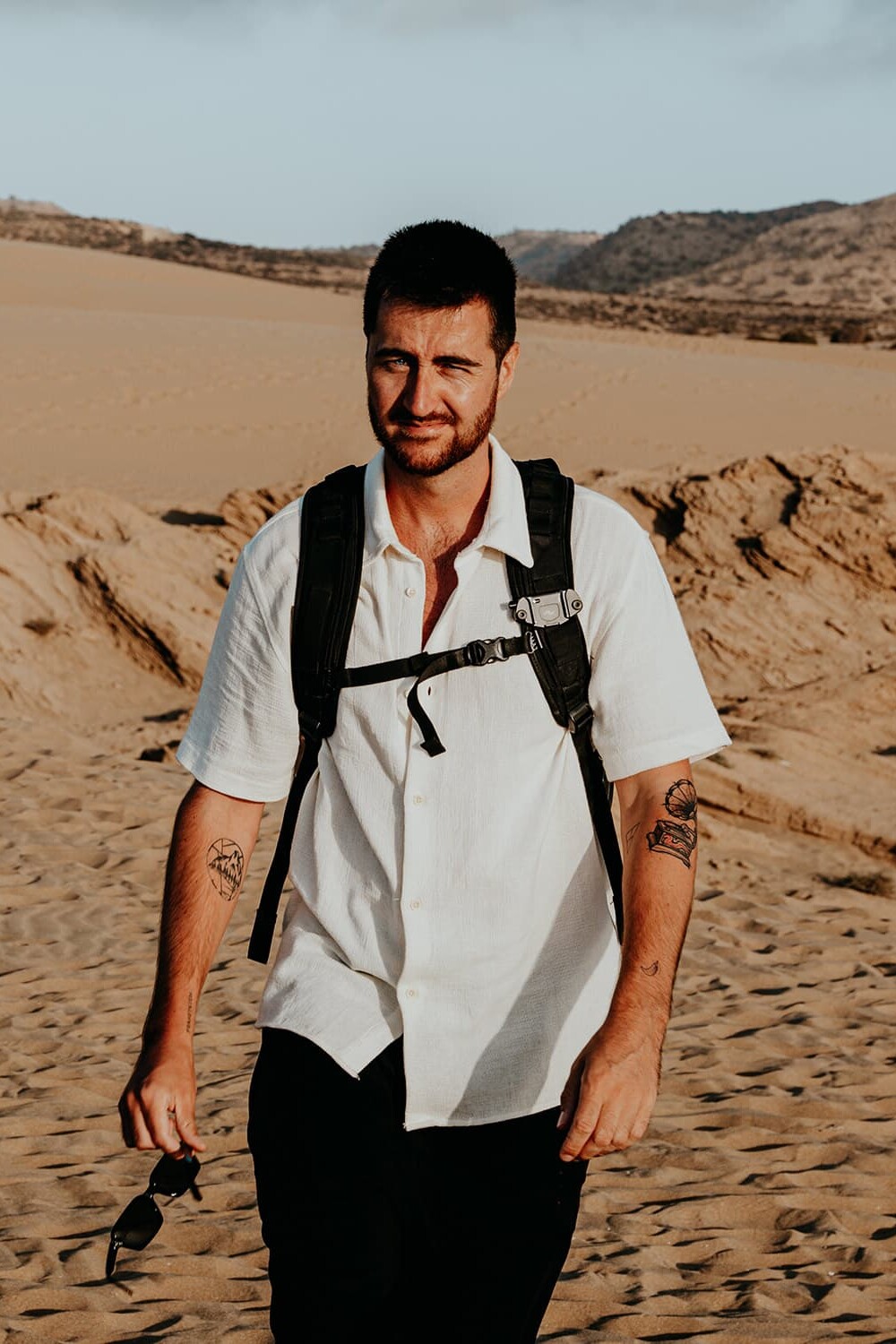
Plan your Sri Lanka itinerary with these essential guides
7 Incredible things to do in Galle Fort, Sri Lanka's colonial fortress
Colonial grandeur, an inviting tropical vibe, and as authentic as can be, that’s Galle Fort in a nutshell. Here’s my traveller’s guide to Galle Fort, featuring what to see and do, where to stay, and where to eat – plus insightful travel tips.
The number of travellers that visit Galle has increased rapidly in the last few years, and I can easily understand why.
Colonial grandeur, an inviting tropical vibe, and as authentic as can be, the historic Dutch fortress in Galle, simply can’t be missed in your Sri Lanka itinerary.
Constructed by the Dutch in 1663, Galle Fort was once of significant importance, when it functioned as Sri Lanka’s leading trading port throughout the Dutch Golden Age.
The charm that characterizes the fort area today, is realized by decayed colonial buildings, lively, cobblestone laneways, and trendy contemporary cafés.
Galle Fort is home to a bunch of breathtaking things to see and do; the famous Galle Lighthouse, Dutch Reformed Church, its incredible interior, and many boutiques that are found throughout Pedlar Street.
To me, it is no surprise that the scenic Galle Fort has been acknowledged as a UNESCO World Heritage site, as it continues to amaze travellers with its rich and captivating history.
Whether you plan to visit on a day trip, or keen to stay a couple of days exploring every inch of the fortress, this guide covers everything you need to make the most of your time in Galle Fort.
If you choose to use any of the links on this page, I receive a small commission at no extra cost to you. By using these links, you’ll have a direct impact on WTSW and support me to continue to create free insightful travel content for you. If you find any of my tips useful, you can support me by buying a virtual coffee here.
The New Where the Souls Wander Print Store
After putting out my first-ever print collection in 2022, I decided it was finally time to re-open my print store, and I couldn’t be happier with the result.
Whether you’re looking to grab a unique piece for your own wall, gift one to a loved one to remind them of a memorable trip together, or simply get your hands on a piece because it provokes a specific memory or feeling, I’d be honoured and grateful if you decide to collect or gift one of my prints.
To celebrate the launch, I’m offering a 20% discount until the 24th of December.
Where is Galle Fort
Where to stay in Galle Fort
Galle is no stranger to excellent accommodations, both within and outside the Galle fort.
The enchanting fortress is home to an abundance of elegant hotels, many of which have a great colonial feel to them, not to mention the charming rooms and unique private courtyards they offer.
Whether you choose to stay within the Fort, or just outside, depends largely on your travel budget.
To help you experience the Galle Fort in its full potential, I made a list of my favourite accommodations, including some of the best budget-friendly options.
Bastille | Comfortable rooms with a classical design for an excellent price-quality ratio. Located right on the lively streets, which are packed with cafes, boutiques and places of interest.
The Bungalow – Galle Fort | A 17th-century bungalow that offers a unique, colonial ambience and great comfort. Located in the heart of Galle Fort.
The Heritage Hotel Galle Fort | A vintage, luxurious boutique hotel in the centre of the UNESCO World Heritage site of Galle Fort. Offers spacious rooms, and comfortable beds, and the staff is as friendly as it gets.
The Bartizan Galle Fort | Nestled within the charming Galle Fort – this heritage hotel provides a great mix of colonial elements and modern luxuries. Staying here is a unique and opulence experience.
Alternatively, search for accommodations in Galle Fort on booking.com.
7 Incredible things to do in Galle Fort, Sri Lanka
1. Follow the ‘Fort Walk’ and overlook the Galle Fort interior
There are plenty of reasons to follow the popular ‘Fort Walk’, but what fascinated me most, was the incredible view you’ll get when you walk atop of the outer ramparts of the fort.
The towering outer ramparts provide the most picturesque views over the fort’s iconic tangerine-coloured rooftops, charming interior, the infinite-looking Indian ocean, and Galle’s famous International Cricket Ground.
The 3-hour walk starts at the historical Clock Tower and brings you along all the significant landmarks within the fort; the Galle Lighthouse, Old Dutch Hospital, Meeran Mosque, and the All Saints Church, just to mention a few.
If you’re like me and plan to explore every inch of the historic Galle Fort, I’d highly recommend to do this impressive promenade first thing in the morning or late afternoon.
Where | The Clock Tower, Galle Fort
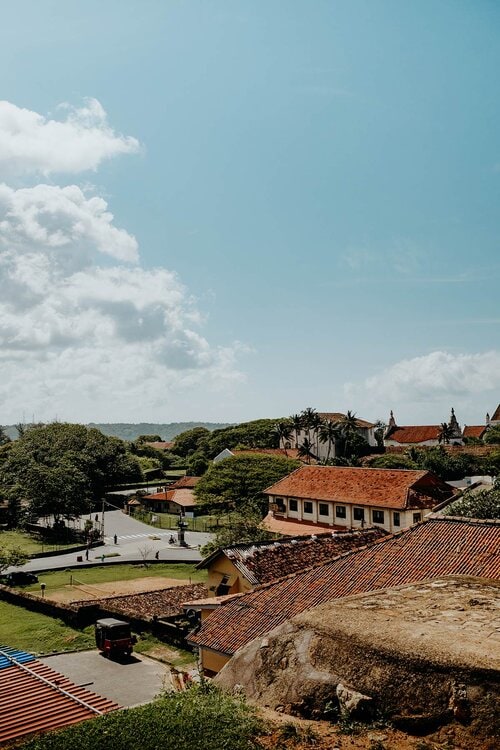
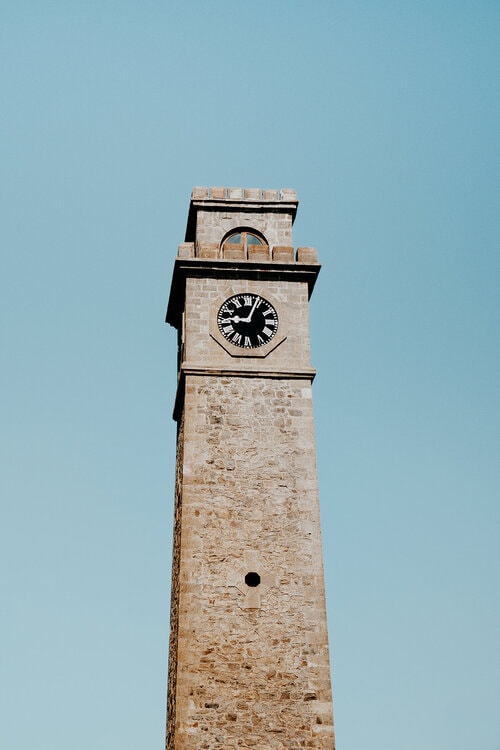
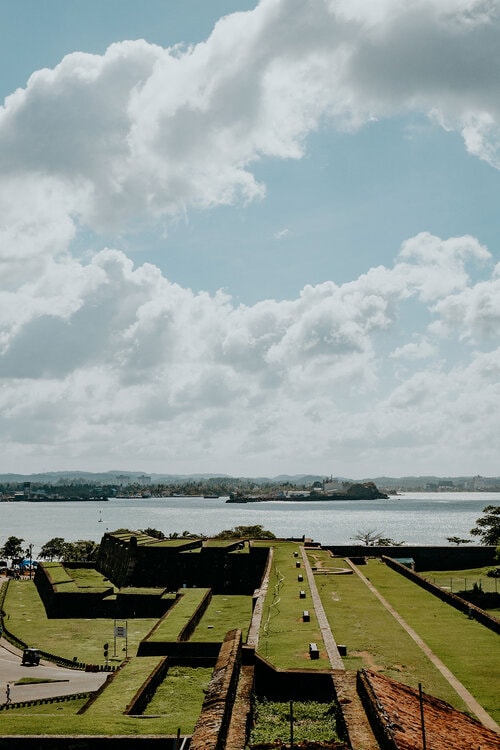
2. Admire the incredible Galle Fort Lighthouse
Travellers have flocked to Galle Fort for years, and since the iconic Galle Lighthouse went viral on Instagram, its popularity has reached a whole new level.
Perched on the most southern ramparts of the fortress, and encircled by palms is the famous Galle Lighthouse: a picturesque structure with the shimmering Indian Ocean as its backdrop.
The historical lighthouse was first constructed by the British in 1848, yet the current construction isn’t the original version of the lighthouse.
As a consequence of an unfortunate event, the construction went up in flames in the middle of 1936, thankfully, it was successfully reconstructed in 1939.
Today, the Galle Lighthouse is undisputedly the most iconic landmark of the fortress, and thus a must-see in Galle Fort.
Where | Galle Lighthouse
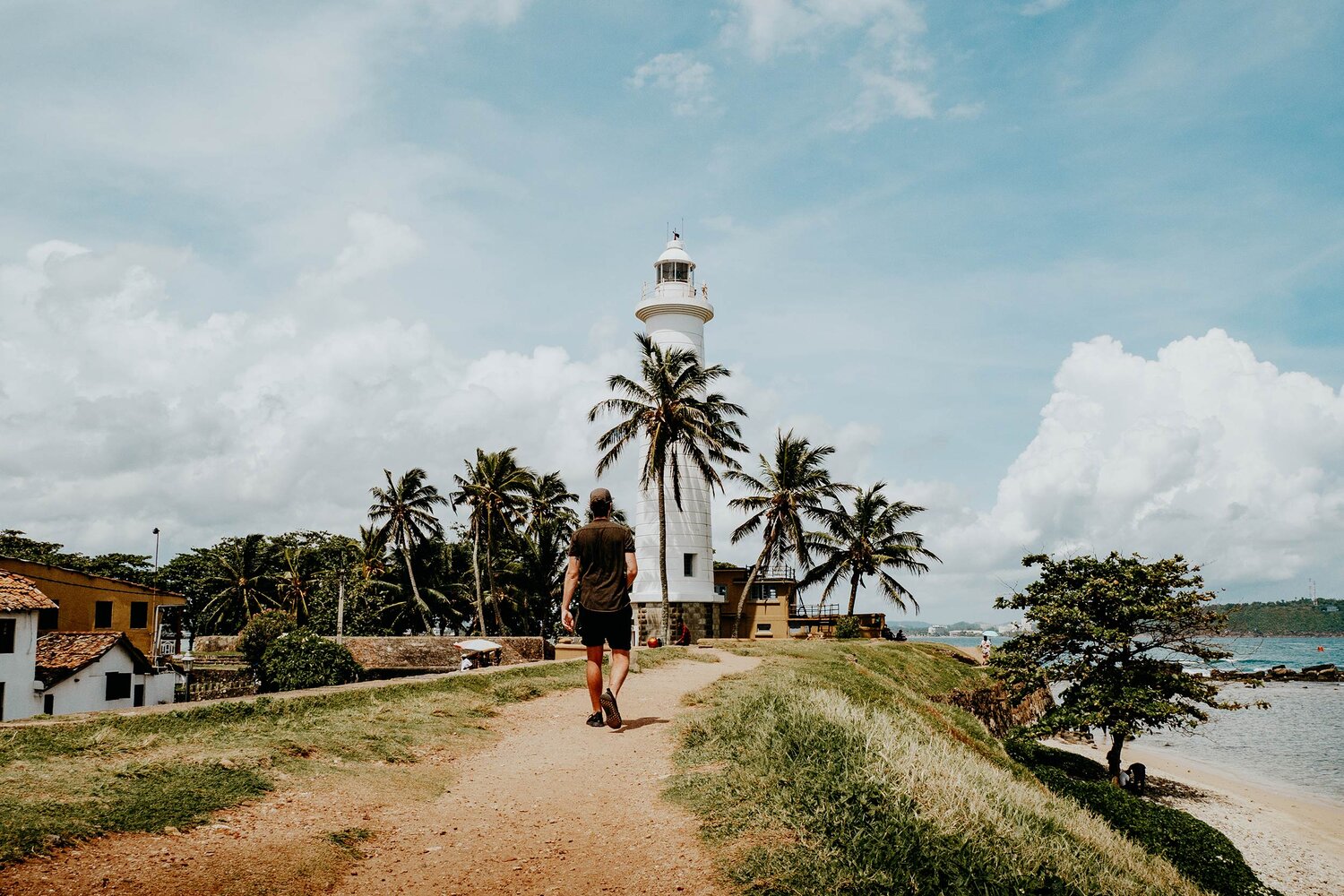
3. Roam through the narrow laneways of Galle Fort
Galle Fort has no shortage of breathtaking colonial buildings, and wandering through its narrow, cobblestone laneways is unquestionably one of the best things to do in Galle.
The charm that defines Galle Fort, is the fact that these crumbling, colonial buildings result in a completely different atmosphere than elsewhere in Sri Lanka.
Everywhere you look, colonial buildings define the fort’s captivating and VOC-like character, it is, therefore, no surprise that Galle Fort was named a UNESCO World Heritage Site.
Some of the most fascinating landmarks in Galle Fort are:
Old Dutch Hospital | What was once established as a hospital, has now been developed into a thriving shopping and dining area. The Dutch Hospital was built in the 17th century and is considered one of the oldest buildings in Galle Fort.
The Dutch Reformed Church | One of the oldest Protestant churches in Sri Lanka, dating back as far as 1755. If it wasn’t for the Fort’s robust ramparts, the church would have been wrecked by the 2004 Boxing Day Tsunami.
Meeran Mosque | Facing Galle lighthouse, the Meeran Mosque is a mesmerizing piece of architecture, combining baroque, British Victorian, and Islamic detailing. Was built in 1904, to serve Galle’s local Muslim community.
All Saints Church | An impressive Anglican church that was built in the Victorian Gothic Revival style. The church’s most striking feature is its incredibly, detailed stained-glass windows. The All Saints Church dates back as far as 1868.
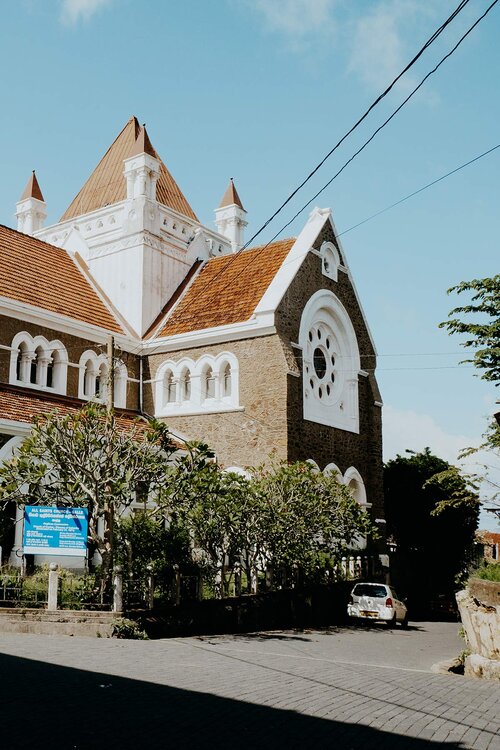
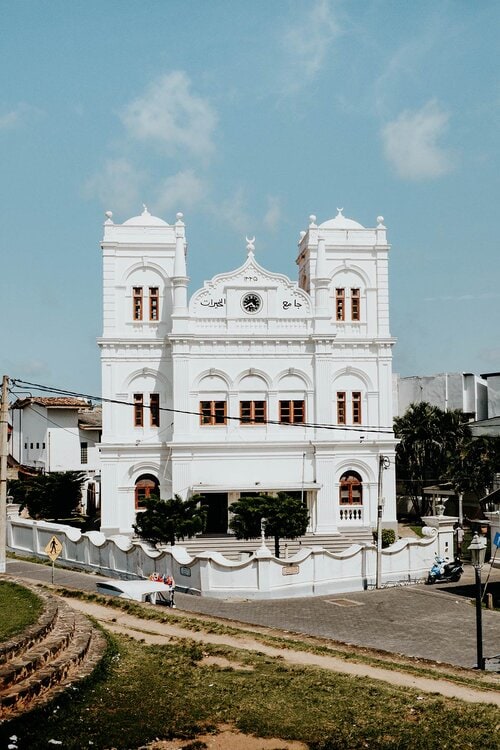

4. Have a chat with the Galle Fort locals
Clearly, the best way to get a feel for Sri Lanka is by simply having a chat with its local people. Not to mention the captivating stories you might hear – it’s sincerely a great opportunity to learn about the country’s rich culture and history.
One of the goals I’d set for my trip through Sri Lanka was to create meaningful interactions with the locals while documenting portraits in the most genuine way.
Being brave enough to have a sincere conversation, or asking someone’s portrait is rather challenging at times, especially given the language barrier.
But if one thing is for sure, it is the fact that Galle Fort is one of the best places to chitchat with Sri Lanka’s people – who are arguably one of the friendliest in the world.
Don’t be shy, and make sure you start a conversation, it’s one of the best experiences in Sri Lanka.
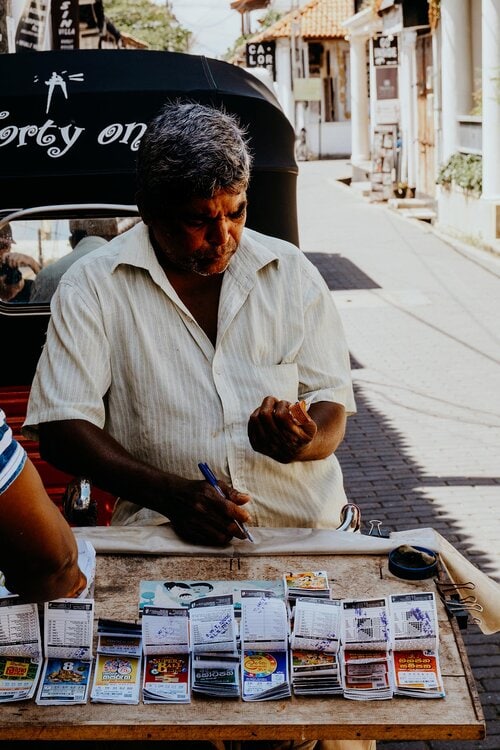
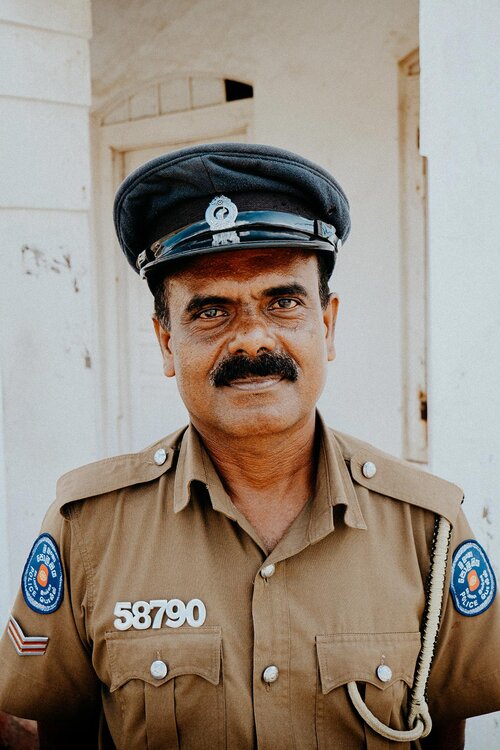

5. Shop on Pedlar Street
Whether you’re after a unique souvenir, beautifully produced handicrafts, or natural health & beauty products that are based on the healing rituals of Ayurveda, Galle Fort is where you want to be in terms of shopping in Sri Lanka.
Pedlar Street in specific, has no shortage of fascinating stores, such as art galleries, handicraft stores, spas, boutiques, and gem stores. If, like me, you appreciate arts and crafts, roaming around Pedlar Street to admire the craftsmanship is one of the best things to do in Galle.
But don’t expect to find a bargain, Galle Fort is one of the most popular places in Sri Lanka, which inevitably means that you won’t get the best price.
Some stores I enjoyed visiting include:
Barefoot | An iconic shop that houses an exceptional atmosphere. Barefoot sells a wide selection of traditional artisan handicrafts, including fabrics, linen, clothes, and gifts.
Stick no Bills | Widely known for its retro ‘Ceylon’ poster art, and one of my favourite stores in Galle Fort. Stick no bills makes a great store to buy yourself or a loved one a souvenir.
Orchid House | An inviting boutique that is all about hospitality. Orchid House is specialized in gemstones, spices & tea, and also sells a broad variety of handicrafts.
Where | Pedlar Street, Galle Fort

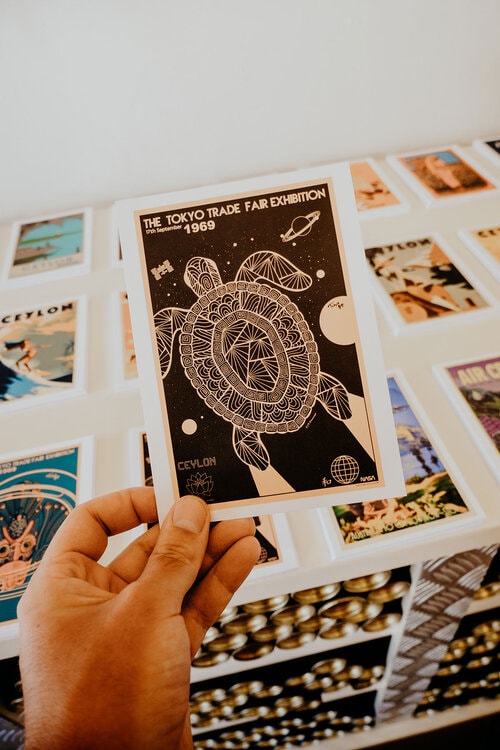
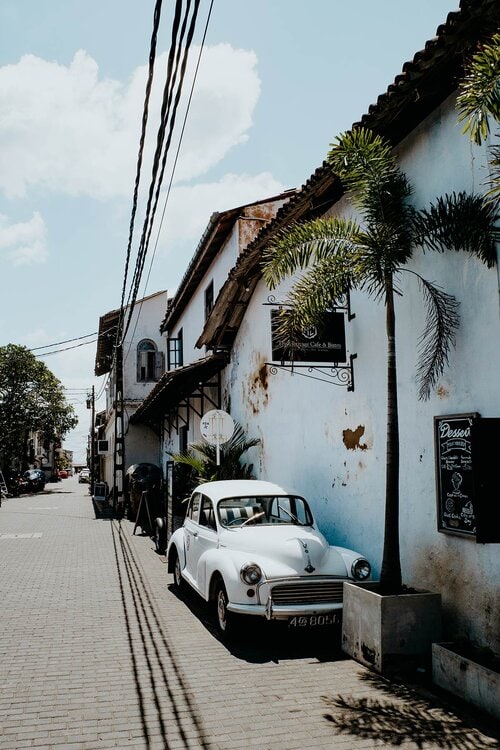
6. Watch sunset from the Galle Fort Walls
After an active day exploring everything Galle Fort has to offer, it’s time to venture for the fort’s walls to watch a glorious sunset reflect upon the shimmering Indian Ocean.
Every day around sunset, locals and travellers alike flock to the fort’s walls, which turns it into a cheerful happening.
The atmosphere here is extremely energetic; kids are playing all sorts of games, kites are floating high in the coloured sky, and travellers chat and relax while watching the world go by.
I highly recommend finding yourself a spot atop of the western part of the wall – ending your day here is mesmerizing and unquestionably one of the most delightful things to do in Galle Fort.
Where | Western walls of Galle Fort

7. Explore the Galle Markets
You’ll have to admit it, the atmosphere found in a local market is often unrivalled in terms of authenticity and is perfect for becoming familiar with a country’s culture. This is clearly also the case within the buzzing Galle Markets.
Just outside Galle Fort, you’ll notice several authentic markets that sell a wide variety of local produce, such as delicious tropical fruits, the finest vegetables, freshly caught fish, and high-quality spices and herbs.
A stroll along the markets in Galle is excellent if you’re looking to expand your spice collection, or stock up on fruits to fuel your adventures in the fort – plus it’s the best way to experience the hustle and bustle of daily life in Sri Lanka.
Where | Galle Markets, Galle
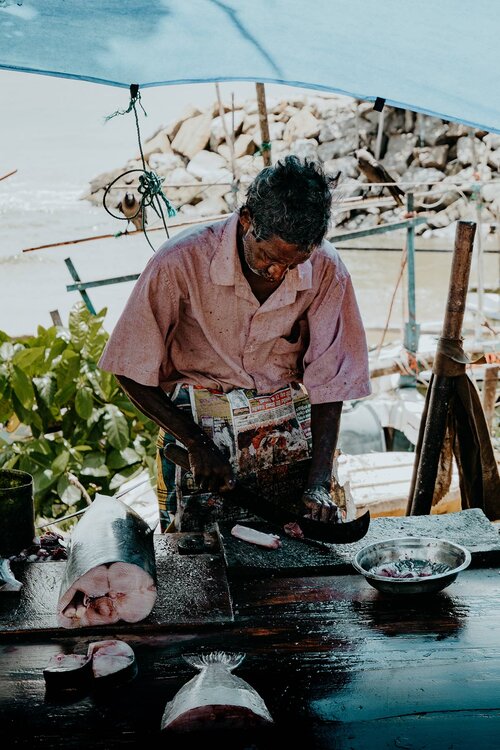
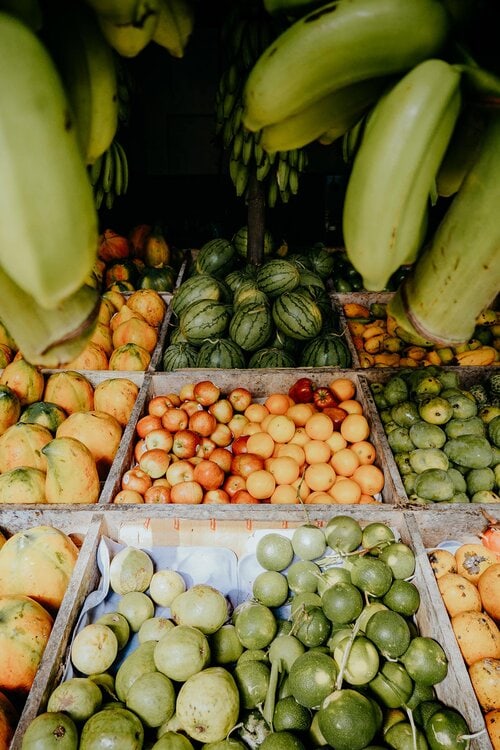
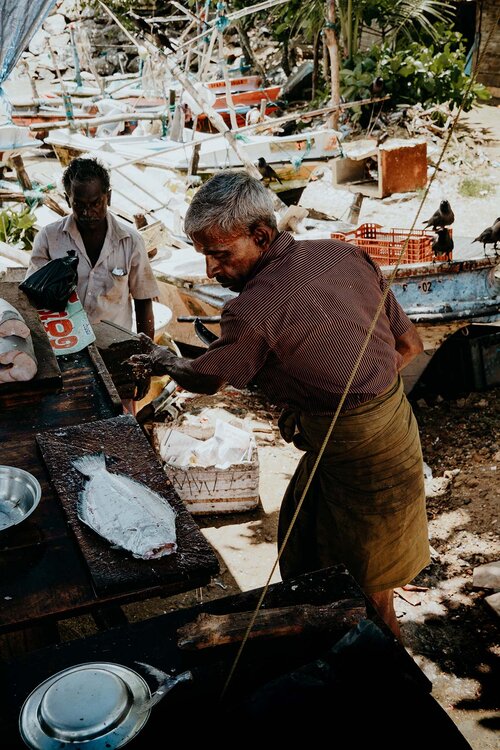
Things to do in Galle Fort | The essentials
Where the eat in Galle Fort | The best restaurants in Galle Fort
It’s easy to find a restaurant that suits your preference when you’re surrounded by a wide variety of excellent eateries.
I truly believe that some of Sri Lanka’s most unique restaurants are found within the ramparts of the lively Galle Fort – there’s just something magical about the colonial ambience within the fortress.
Some of the restaurants I enjoyed visiting are:
Chambers Restaurant | Serves the most delicious Mediterranean food, including Lebanese, Moroccan and Middle-eastern dishes. The food here is mouth-watering, but keep in mind, it’s more expensive than you’re used to in Sri Lanka.
Poonie’s Kitchen | A great café where locally sourced produce is used to make the most delicious and nourishing contemporary dishes. Best known for their Instagrammable ‘salad Thali’, a must-eat when you plan to eat at Poonie’s.
The Indian Hut | Perfect for flavourful, Indian dishes – plus it’s really affordable. Longtime readers of WTSW might remember my affection for spicy curries. If you prefer spicy food like me, I’d recommend you head over to the Indian Hut.
Coconut Sambol | Similar to its eponymous dish, Coconut Sambol is extremely yum! Clearly one of the best Sri Lankan restaurants within Galle fort. They serve an all-you-can-eat buffet, which includes several delish curries, rice, and my all-time favourite; coconut sambal. If you fancy ginger, make sure you try their homemade ginger beer.
The best time to visit Galle Fort
The best time to visit Galle is from October to April, with February – April as the absolute peak months. During this period there is low rainfall and great overall temperature, which makes it pleasant to explore Galle Fort and surrounds.
Do be aware that Galle is significantly more crowded this time of year.
Galle is often considered a year-round destination, yet it is completely common to experience more rainfall during the southwest monsoon (May till September).
I personally visited Galle Fort in September and was fortunate enough to have the best of both worlds. Do keep in mind that travelling during the shoulder season doesn’t always guarantee good weather.
How to get to Galle Fort
By train | The train journey along the picturesque coastline is easily the most scenic (and best) way to get to Galle, especially if you’re planning to visit after Colombo, Hikkaduwa or Mirissa (Weligama Railway Station). With a great train connection between Colombo Fort (stops in Hikkaduwa) and Galle, it’s quite straightforward, just make sure you avoid travelling during the peak hours.
From Colombo to Galle
Where | Colombo Fort Railway Station
Cost | 200 – 280 LKR, ($1.10 – 1.54)
Travel time | Around 3 hours
From Hikkaduwa to Galle
Where | Hikkaduwa Railway Station
Cost | 120 – 200 LKR, ($0.66 – 1.10)
Travel time | Around 30 minutes
From Mirissa (Weligama Railway Station) to Galle
Where | Weligama Railway Station
Cost | 110 – 160 LKR, ($0.60 – 0.88)
Travel time | Around 45 minutes
By bus | If you’re looking to visit Galle after Hikkaduwa, Unawatuna or Mirissa, I highly recommend travelling by local bus. Using local busses as your service of transport is cheap and a great way to get a feel for the country and its people.
Local bus from Hikkaduwa, Unawatuna or Mirissa
Cost | 50 – 150 LKR ($0.30 – 0.80) per person
Travel time | 0.5 – 1 hours
Direct bus from Colombo to Galle | If you’re planning to travel from Colombo, I recommend taking the train or opt for the more luxury direct bus from Colombo to Galle (with air-conditioning), which leaves from the Maharagama bus station. Keep in mind that this bus station is about 15-kilometres south of the city centre, making it quite difficult to get to during peak hours.
Where | Maharagama Bus Station
Cost | 400 LKR ($2.20) per person
Travel time | 1.5 – 2 hours, departs every 15 minutes
Local bus from Colombo to Galle | For those on a budget, it is also possible to take the local bus from Colombo to Galle. This journey takes significantly longer, making it quite an exhausting trip.
Where | Bastian Mawatha Bus Station
Cost | 100 LKR ($0.55) per person
Travel time | 3 – 3.30 hours, departs every 20 minutes
Stay safe in Sri Lanka | Travel insurance
Though Sri Lanka is perfectly safe for travellers, I always strive to sort out my travel insurance before arriving in a foreign country, and I highly advise anyone else to do the same.
Where we prefer that everything goes smoothly during our travels, something unfortunate can happen at any moment, whether it’s an injury or an accident on the road. When that happens, it is better to be safe than sorry.
Heymondo | Whether you’re going on a 3-week backpacking trip, or planning a long stay somewhere abroad, Heymondo has excellent insurance options either way – plus full COVID-19 coverage and a handy app with 24-hour medical assistance. Readers of WTSW receive 5% off any insurance policy, more information here.
Cheers!
I’ve been on this travel blogging journey since 2019.
If you appreciate what I do here, these are some ways you can support me.

Plan your Sri Lanka itinerary with these essential guides
The ultimate 3-week Sri Lanka itinerary | The best of Sri Lanka
Uncover the absolute best of Sri Lanka with this detailed 3-week itinerary. This itinerary covers all the best things to see and do – including the best beaches & surf breaks, must-see attractions, and impressive ancient World Heritage Sites.
You’ll be hard-pressed to find an island that amazes travellers as much as Sri Lanka.
Sri Lanka’s natural beauty is unrivalled – from the beloved gold-sanded beaches on the southern coast to mysterious mountain towns in the idyllic hill country to the dense, wildlife-rich jungles of Yala National Park.
There is simply a myriad of reasons to travel to Sri Lanka, and the world’s most scenic train ride is absolutely one of them. Not to mention that Sri Lanka occupies some of the most vibrant cultural heritage sites, including a colonial seaside fortress, lush tea plantations, and multiple ancient cities which include Kandy, Polonnaruwa and Sigiriya.
You could easily say that Sri Lanka’s unique experiences and breathtaking landscapes go hand in hand, and it’s my intention to help you plan, and make the most out of your journey. I’ve put together the best possible itinerary to spend 3 weeks in Sri Lanka.
My 3-week Sri Lanka itinerary is a detailed introduction and covers all the best things to see and do – plus additional guides that help you throughout your trip. Now the only thing left for you to do, is soaking up beautiful Sri Lanka and its magical experiences.
If you choose to use any of the links on this page, I may receive a small commission at no extra cost to you. By using these links, you’ll have a direct impact on WTSW and my ability to continue to create free insightful travel content for you. If you find any of my tips useful, you can support me by buying a virtual coffee here.
The New Where the Souls Wander Print Store
After putting out my first-ever print collection in 2022, I decided it was finally time to re-open my print store, and I couldn’t be happier with the result.
Whether you’re looking to grab a unique piece for your own wall, gift one to a loved one to remind them of a memorable trip together, or simply get your hands on a piece because it provokes a specific memory or feeling, I’d be honoured and grateful if you decide to collect or gift one of my prints.
To celebrate the launch, I’m offering a 20% discount until the 24th of December.
My 3-week Sri Lanka itinerary | Daily Overview
Day 1 | Colombo, Sri Lanka’s somewhat chaotic capital
Sri Lanka’s vibrant capital makes an excellent first destination in your Sri Lanka itinerary, especially if you look at the fact that it is located just 45 minutes from the Bandaranaike International Airport.
With nearly 620,000 inhabitants, Colombo is considered Sri Lanka’s biggest city. Unfortunately, this comes with the side note that the city is rather intoxicating, and often too overwhelming to fully enjoy.
Although Colombo isn’t the most captivating city in terms of must-see attractions, I think you shouldn’t just skip over it. I would recommend spending at least one day here to experience the hustle and bustle of Sri Lankan everyday life.
COLOMBO | MUST-SEE ATTRACTIONS
The Red Mosque (Jami Ul-Alfar Mosque) | Located in the narrow streets of Pettah, Jami Ul-Alfar Mosque is one of the few must-see attractions in Colombo. The mesmerising mosque is charmed by a distinct colour pattern, towering minarets, and ornate domes that can be seen from quite a distance. It’s utterly breathtaking to see the towering mosque appear while strolling through the lively streets of Pettah.
Barefoot | Barefoot is an iconic shop, gallery, bookshop, and courtyard café in the heart of Colombo’s spirited fort area. The vibrant café is tucked away in a garden of calm and serves a wide variety of delicious dishes, while the shop sells traditional artisan crafts like fabrics, linen, clothes and gifts. Barefoot also houses a unique bookstore that offers a great selection of books on art, architecture, photography and spirituality.
The streets of Pettah | Pettah is considered one of the oldest districts in Colombo and a stroll through its narrow streets is quite the experience. The Pettah market is an excellent area to get a feel for the country and its people. While you’re there, make sure to grab a bite at one of the many street food stalls. Bear in mind that these streets are very chaotic and overwhelming, therefore it is best to give in, and go with the flow.
COLOMBO | THE ESSENTIALS
Where | Colombo
Where to stay in Colombo | I recommend Lavonca Boutique Hotel, a small, comfortable hotel in the heart of Colombo. Alternatively, use booking.com to find accommodations in Colombo.
How to get around Colombo | Colombo is quite an extensive city and somewhat challenging to navigate by foot. The easiest way to get around is by making use of the famous tuk-tuks, which are found at about every corner. To avoid unnecessary costs, use the PickMe app, or arrange a price with your tuk-tuk driver in advance.
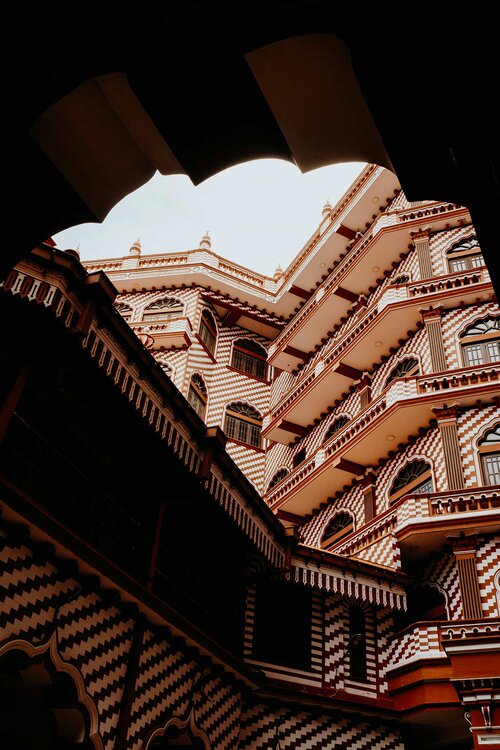
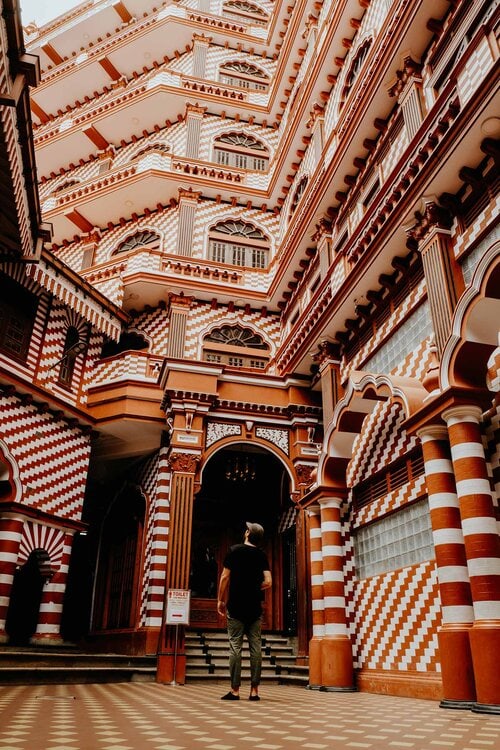
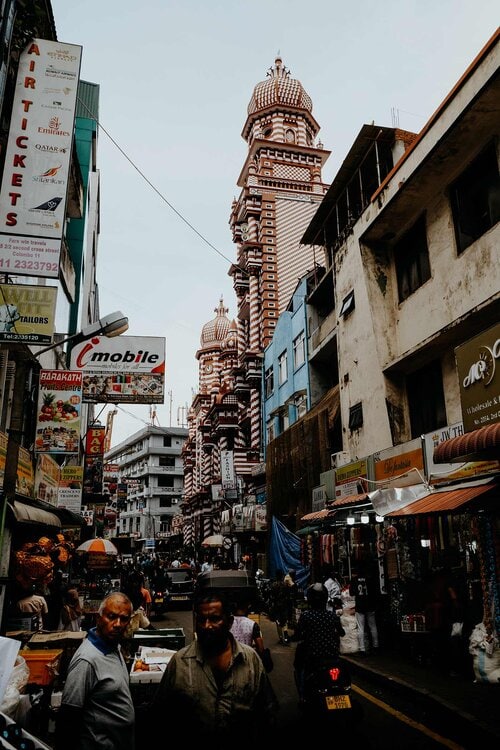
Day 2 – 3 | Galle Fort, a colonial seaside fortress
After experiencing the hustle and bustle in Colombo, it’s time to embark on a scenic train journey in the direction of Sri Lanka’s spirited south coast.
During this 3-hour journey from Colombo Fort to Galle, you’ll get spoiled by views of vivid sceneries, as well as authentic local villages and the island’s golden-sanded coastline.
Once you arrive in Galle, you’ll quickly come to realize why it is such a beloved destination. The seaside town was once of significant importance and is still largely visited for its historical Galle Fort, a UNESCO World Heritage site that continues to amaze travellers.
The Dutch Colonial fort in Galle has a rich and captivating character. With lively, narrow streets, decaying colonial buildings, trendy contemporary cafés, and an appealing, tropical ambience, Galle Fort is, in my opinion, a must-see in any Sri Lanka itinerary.
GALLE FORT | MUST-SEE ATTRACTIONS
Galle Fort Lighthouse | The Galle Fort Lighthouse is framed by tropical palm trees and is one of the many picture-perfect scenes in Sri Lanka. For that reason alone, it’s one of the things that shouldn’t be missed within the ramparts of the historical Galle Fort.
The Galle Markets | Just outside Galle Fort, you’ll notice several authentic markets that sell a wide variety of fruit, fish and spices. By visiting these local markets you have an excellent chance to taste delicious tropical fruits, and stock up on high-quality spices – plus you become familiar with Sri Lankan culture.
Galle Fort interior | Taking a stroll through the narrow, colonial streets of the fort was by far one of the best things I did during my time in the Galle Fort. By doing so, you come across a collection of decaying colonial buildings, which makes it seem as if you’re living during the VOC era.
GALLE FORT | THE ESSENTIALS
Where | Galle Fort, Galle
Where to stay in Galle Fort | Galle has no shortage of good accommodations, both in and outside the fort. I would highly recommend The Heritage Hotel Galle Fort and 50 CHURCH STREET – GALLE FORT. Alternatively, use booking.com to find accommodations in Galle.
How to get from Colombo to Galle Fort | The easiest and most scenic travel option is from Colombo Fort to Galle by train. The direct train operates frequently (about 10 times a day) and takes around 2.5 – 3 hours.
How to get around Galle Fort | Galle Fort is easily explored by foot. If your accommodation is slightly remote, make use of the accessible tuk-tuks.
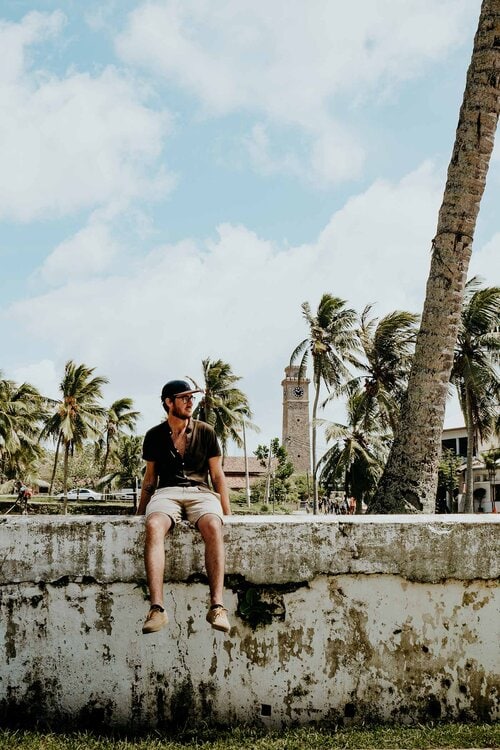
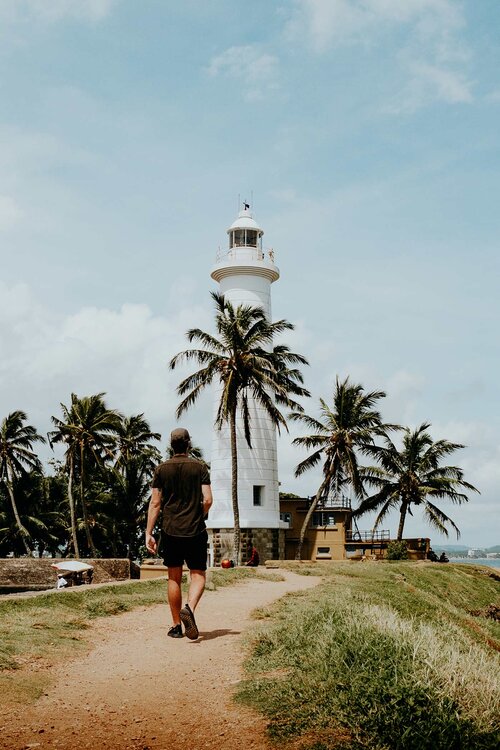
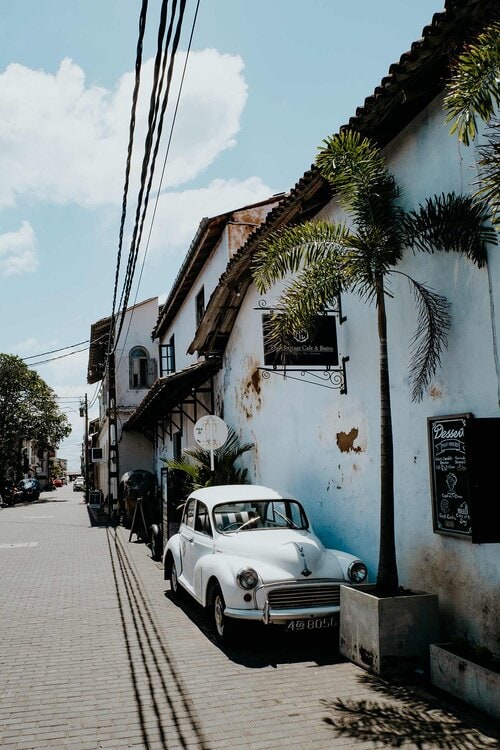
Day 4 – 5 | Unawatuna, Sri Lanka’s backpacker beach town
Situated at only a 10-minute drive from Galle lies Unawatuna, one of Sri Lanka’s most popular coastal towns and the first proper beach destination in this itinerary.
Unawatuna has rapidly become a fixture for travellers who visit Sri Lanka and trust me, that’s for a good reason. The trendy beach town is home to a laidback backpacker vibe and has no shortage of palm-fringed beaches, contemporary cafés, and irresistible beachfront restaurants.
Accordingly, I would recommend spending a few nights here, it has some of the island’s most beautiful beaches after all.
UNAWATUNA | MUST-SEE ATTRACTIONS
Dalawella Beach | Dalawella Beach is an extremely picturesque stretch of beach and without a doubt one of my favourite beaches in Sri Lanka. The charm that defines Dalawella Beach is realized by a scenic rock formation, exciting beach swings and plenty of low-bending palm trees. Make sure you visit early morning or during sunset.
Skinny Tom’s Deli | Only head over to Skinny Tom’s Deli, if you’re keen on tasting the best brunch in town. This European-style café has a great reputation on the southern coast and serves life-changing bacon, dhal & egg hoppers, fresh eggs benedict toast, and delicious artisanal cakes and desserts.
Jungle Beach | Although it’s located slightly off the beaten path, Jungle Beach is an exceptional place for an afternoon of relaxing, swimming and tanning. Make sure you take a look at the Japanese Peace Pagoda, which is situated in the lush jungle right above the secluded beach.
UNAWATUNA | THE ESSENTIALS
Where | Unawatuna
Where to stay in Unawatuna | Unawatuna has great accommodations in every price range and I would highly recommend Levels Unawatuna and Green Escape Unawatuna. Alternatively, use booking.com to find accommodations in Unawatuna.
How to get from Galle Fort to Unawatuna | Take a 10-minute drive by local bus from Galle Fort to Unawatuna. Alternatively, take a tuk-tuk.
How to get around Unawatuna | Unawatuna is easily navigated by foot. If you’re keen to explore the surrounding towns, make use of the affordable tuk-tuks, or rent a scooter.
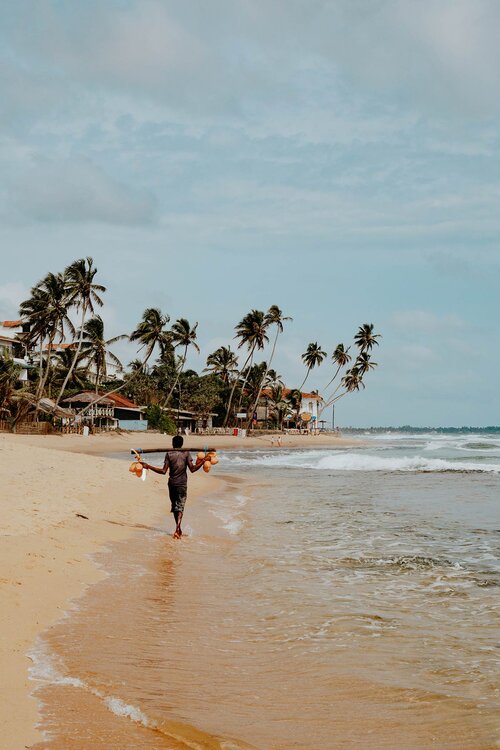
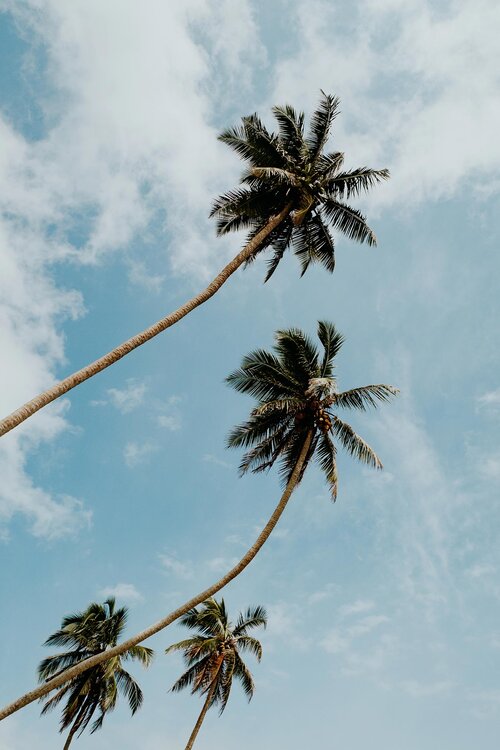
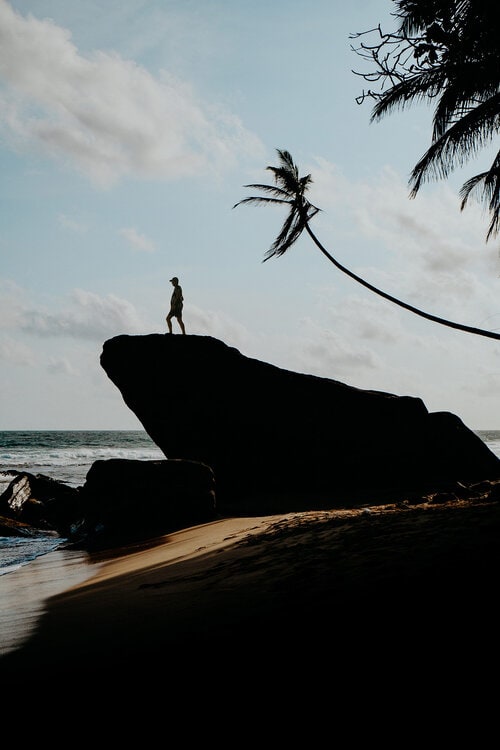
Day 6 – 7 | Mirissa, a tranquil beachside paradise
After unwinding at one of the tropical beaches in Unawatuna, it is time to continue your journey along the island’s beloved south coast.
Mirissa is an energetic beach town that has not gone unnoticed by backpackers and travellers alike. It has, in fact, become quite an unmissable destination in Sri Lanka itineraries.
The beach town is all about riding waves, paradisiac stretches of beach, trendy cafés and the tranquil ambience that characterizes it. But what really highlights Mirissa is that it’s deemed to be one of Sri Lanka’s best places to get up close and personal with Blue Whales.
MIRISSA | MUST-SEE ATTRACTIONS
Coconut Tree Hill | Coconut Tree Hill is without a doubt among the most iconic things to see in Sri Lanka. The tangerine-coloured cliff is extremely popular and well-known for its sea of swaying palms and views over the shimmering Indian Ocean. I’d recommend stopping by earlier in the day or during a glorious sunset.
Parrot Rock | Only just off Mirissa’s main beach is Parrot Rock, a small secluded rock-island that provides the most stunning views over the town’s golden-sanded shoreline. Make sure you climb to the summit, it’s one of Mirissa’s best spots to sit and watch the world go by.
Surfing in Weligama | With decent waves rolling in year-round, Mirissa is one of the leading surf destinations on Sri Lanka’s south coast. The vibrant town is home to excellent surf schools that provide lessons and board rental. The waves in Mirissa are perfect for beginners, intermediate and advanced surfers.
MIRISSA | THE ESSENTIALS
Where | Mirissa
Where to stay in Mirissa | Mirissa has many excellent accommodations and I would highly recommend The Spice House Mirissa and Triple O Six. Alternatively, use booking.com to find accommodation in Mirissa.
How to get from Unawatuna to Mirissa | Jump aboard a direct train from Unawatuna to Mirissa that operates frequently (about 5 times a day). Expect the journey to take around 0.5 – 1 hour.
How to get around Mirissa | Walking around town is your best option as the distances are quite short. For surfing in Weligama, I would recommend taking a tuk-tuk.

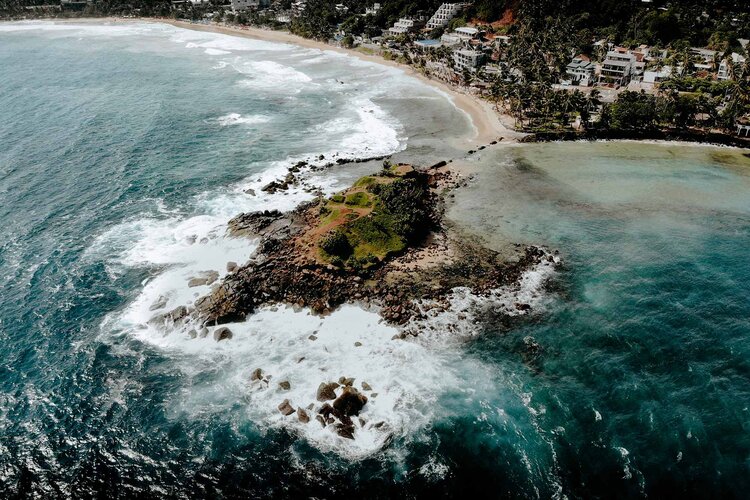
Day 8 | Yala National Park, Sri Lanka’s best safari destination
From the moment I booked my flight to Colombo, I was excited about one specific thing, travelling to the wildlife-rich jungles of the Yala National Park to experience my first-ever safari.
The incredible Yala National Park, situated on the island’s south-eastern coastline, is famed as Sri Lanka’s most popular national park and is unquestionably a must-see on any Sri Lanka itinerary.
The park is home to dense jungles, sandy dunes, wide stretched grasslands and several lakes and lagoons. This distinct landscape is the perfect habitat for a great variety and density of wildlife, which results in the potential sighting of leopards, elephants, Black Sloth bears, Fishing cats, Red Slender loris and crocodiles.
In totality, the national park is home to 44 species of mammals, 215 species of birds and 46 species of reptiles, which makes an excellent reason to jump aboard a jeep and roam around the jungles of the park. Believe me, it’s one of the most fulfilling adventures in Sri Lanka.
It’s easy to book your Yala National Park safari through your accommodation in Tissamaharama. I would recommend joining a morning safari, this increases the potential of leopard sightings.
YALA NATIONAL PARK | THE ESSENTIALS
Where | Yala National Park
Where to stay in Yala National Park | Tissamaharama has great accommodations (both in and outside the park) and I would highly recommend Thaulle Ayurveda Resort and Cinnamon Wild Yala. Alternatively, use booking.com to find accommodations in Yala National Park or Tissamaharama.
How to get from Mirissa to Yala National Park | For this journey, the local bus is the easiest and cheapest option. Head to Matara, and here change to a direct bus to Tissamaharama. The journey can be quite intense and takes around 3.5 hours.
Entrance fee in 2024 | 11.000 LKR, ($37.50) per person.
Half-day jeep safari costs | 14.000 – 17.000 LKR ($47.60 – 57.80) per jeep, with a maximum of 6 people.

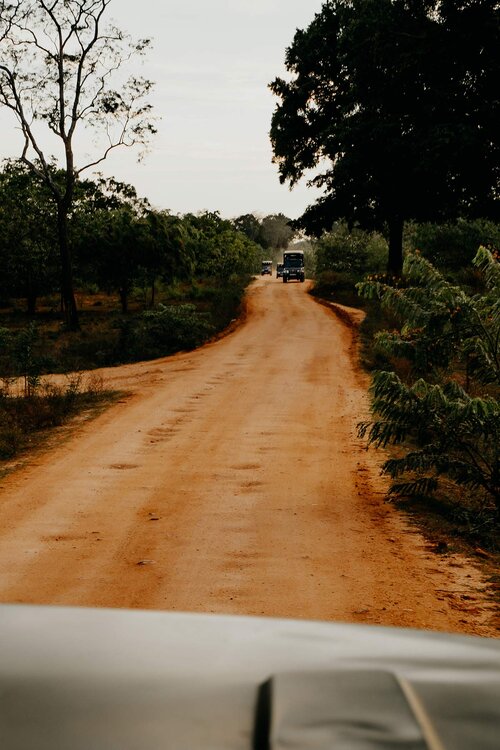
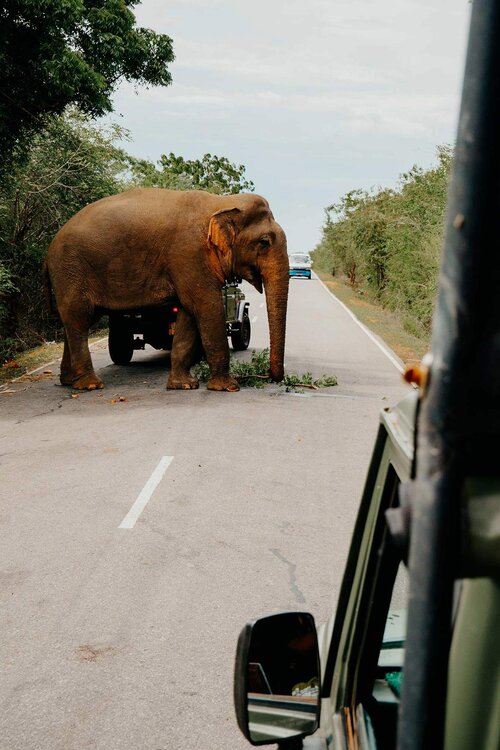
Day 9 – 10 | Arugam Bay, a laidback surfer town
Travelling to Arugam Bay requires quite a long and exhausting journey, as it is pretty off the beaten path compared to other destinations on this Sri Lanka itinerary. That being said, I truly believe that the detour is worth every minute of it.
Slightly hidden on Sri Lanka’s untouched east coast, with Yala National Park as its neighbour, lies Arugam Bay: one of the island’s leading surf destinations. With great bays, excellent surf breaks, stunning natural sceneries, and trendy cafés, there’s enough to see and do in Arugam Bay, therefore, I would recommend staying at least two days.
ARUGAM BAY | MUST-SEE ATTRACTIONS
Kudumbigala Monastery | Just 45 minutes from Arugam Bay’s spirited main street is the Kudumbigala monastery, a sacred place where locals come to practise deep meditation techniques. In addition to those mysterious, spiritual vibrations, you’ll find a viewpoint that provides the most stunning panoramic views of the entire region.
Muhudu Maha Viharaya | Known as the temple of the ocean, Muhudu Maha Viharaya is a charming white Buddhist stupa, overlooking Pottuvil’s sandy dunes and shimmering ocean. Fortunately, the temple is out of range of the regular tourist area, so it gives an authentic glimpse of Sri Lanka’s daily life. As always, follow religious customs and visit in a respectful manner.
Elephant Rock | Acknowledged as one of the best surfing breaks in the area, and a great place to sit and watch the world go by, especially during the golden hour. Elephant Rock gives a marvellous view over the bay and its wave-riding surfers, certainly a must-see in Arugam Bay.
ARUGAM BAY | THE ESSENTIALS
Where | Arugam Bay
Where to stay in Arugam Bay | Arugam Bay has no shortage of great accommodations. For surfing, I’d highly recommend The Spice Trail – another excellent option is Bay Vista. Alternatively, use booking.com to find accommodation in Arugam Bay.
How to get from Yala National Park to Arugam Bay | Local bus is the cheapest option. Do keep in mind that this is one of the most exhausting bus journeys in Sri Lanka – plus it requires changing bus up to three times. Alternatively, hire a tuk-tuk or arrange a taxi with the PickMe app. The journey can take up to 6.5 hours.
How to get around Arugam Bay | If you’re looking to explore the surrounding area, I would highly recommend renting a scooter. Alternatively, walk or make use of tuk-tuks.

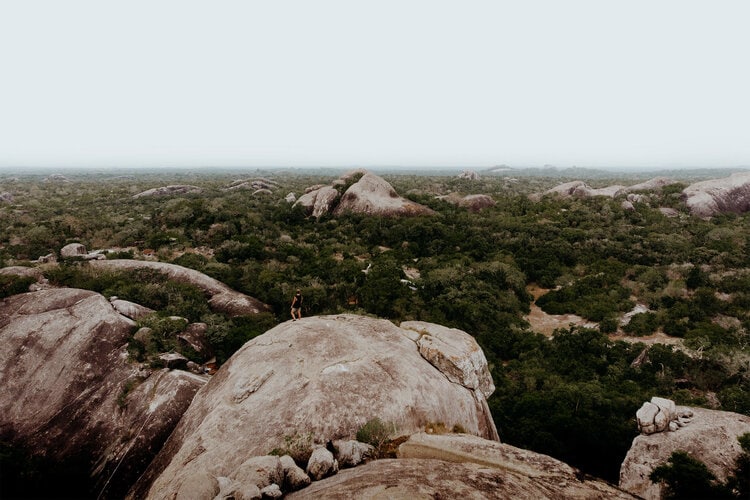
Day 11 – 13 | Ella, Sri Lanka’s extraordinary hill country
After learning to ride the waves in Arugam Bay, it’s time to head for Sri Lanka’s mysterious mountains and one of my favourite places in the country, the sleepy town of Ella.
Around 1,041 metres above sea level and hidden in Sri Lanka’s peaceful hill country is Ella: a small town that is encircled by charming tea plantations, towering mountains and rushing waterfalls.
If you’re a nature & adventure enthusiast like me, Ella’s incredible sceneries will surely blow your mind. I enjoyed this town so much, that I’ve ended up staying slightly longer than initially planned. Therefore I’d always recommend adding some flexibility to your Sri Lanka itinerary.
ELLA | MUST-SEE ATTRACTIONS
Ella Rock | It is no surprise that Ella Rock is one of the must-see attractions in Ella as it provides breathtaking views of Little Adam’s Peak, Ella Gap and the mysterious hill country of Ella. If you’re a seasoned hiker, you certainly feel hyped for the somewhat challenging Ella Rock hike. Do bear in mind that the best time to hike up Ella Rock is around sunrise.
Nine Arch Bridge | The now-famous Nine Arch Bridge is single-handedly responsible for the largest part of travellers that come and visit Ella. Tucked away between the dense jungle and tea plantations; this stunning piece of architecture impresses both travellers and locals on a daily basis. The scene becomes even more remarkable when the famous blue train slowly navigates its way across the bridge.
Little Adam’s Peak | As the name implies, Little Adam’s Peak is named after its taller and better-known brother, Adam’s Peak. The hike to the summit of Little Adam’s Peak guarantees the most excellent overview of both Ella Rock and the infinite-looking Ella Gap. It’s therefore little wonder that it’s such a popular attraction in Ella.
ELLA | THE ESSENTIALS
Where | Ella
Where to stay in Ella | Ella has some of Sri Lanka’s finest accommodations and I would recommend Rawana Den, 98 Acres & Spa and Mountain Heavens. Alternatively, use booking.com to find accommodation in Ella.
How to get from Arugam Bay to Ella | Take a bus to Monoragala, before changing to the bus that heads for Wellawaya. Here take the bus to Ella. If you’re fortunate, you may catch a direct bus between Arugam Bay and Wellawaya. Since the journey is quite chaotic, alternatively hire a tuk-tuk or arrange a taxi with PickMe. The journey can take up to 4.5 hours.
How to get around Ella | Ella is an easy town to navigate by foot. Alternatively, jump aboard one of the many tuk-tuks.
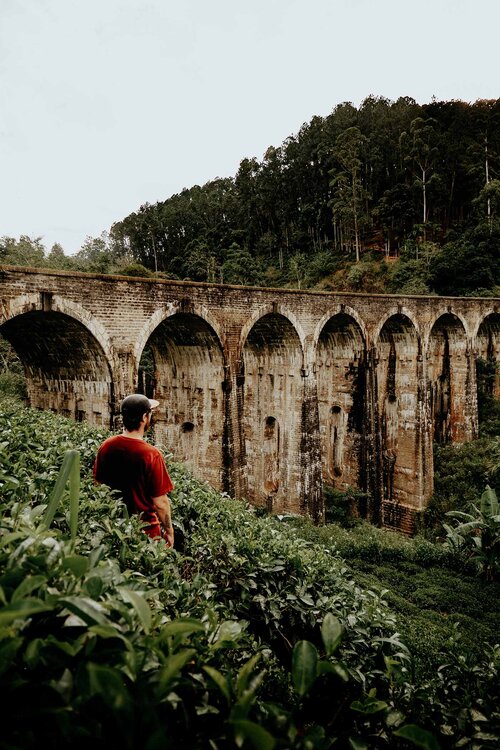
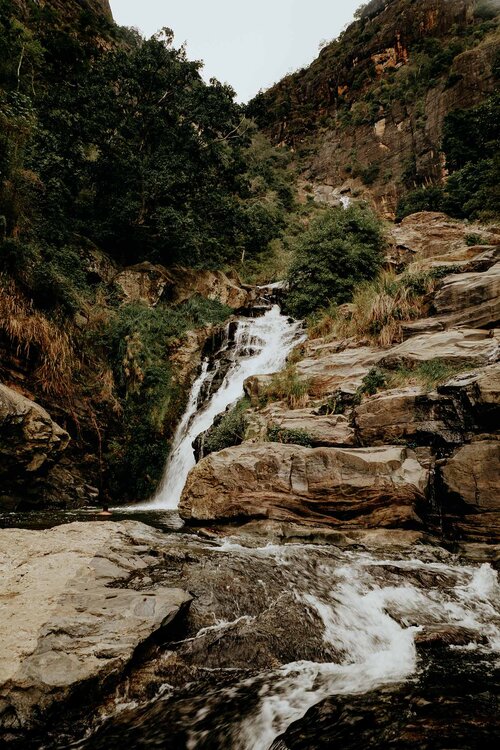
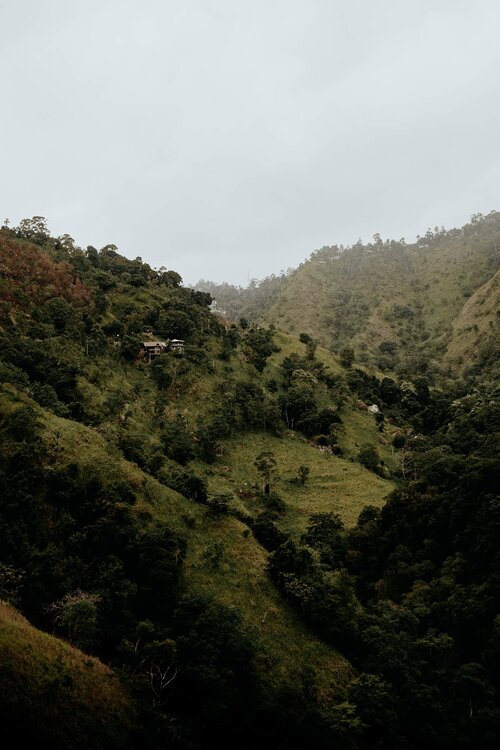
Ella to Kandy, the most scenic train ride in the world
Ask anyone who jumped aboard the famous Ella to Kandy train and they all answer the same – this scenic train journey is one of the absolute highlights in any Sri Lanka itinerary.
Secure yourself a window seat and witness the train meandering through mysterious woodlands, authentic local towns and leafy tea plantations. This seven-hour journey is one of the most spectacular train rides in the world, so make sure you enjoy every moment of it.
ELLA TO KANDY TRAIN JOURNEY | THE ESSENTIALS
Where | Ella Railway Station
Costs | 2nd class: 270 LKR ($1.50), 3rd class: 180 LKR ($1). If you prefer to book your ticket in advance, visit 12go.asia.
Train times from Kandy to Ella | 06:40, 09:24, 10:57 and 12:48. For up-to-date timetables, visit the Seat61 website.
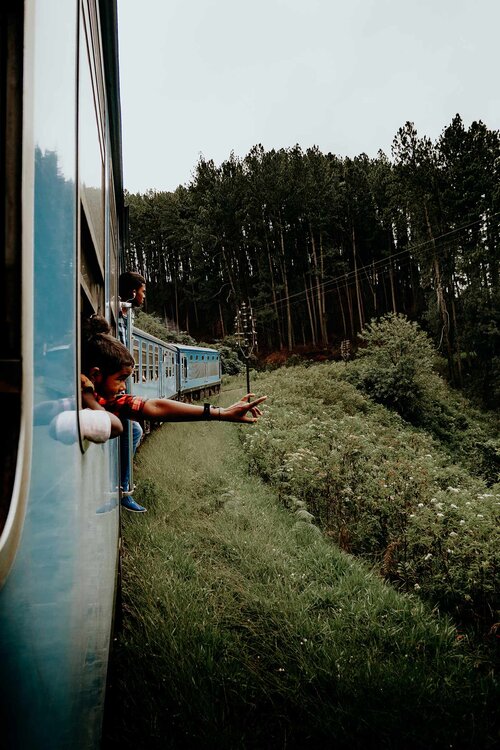
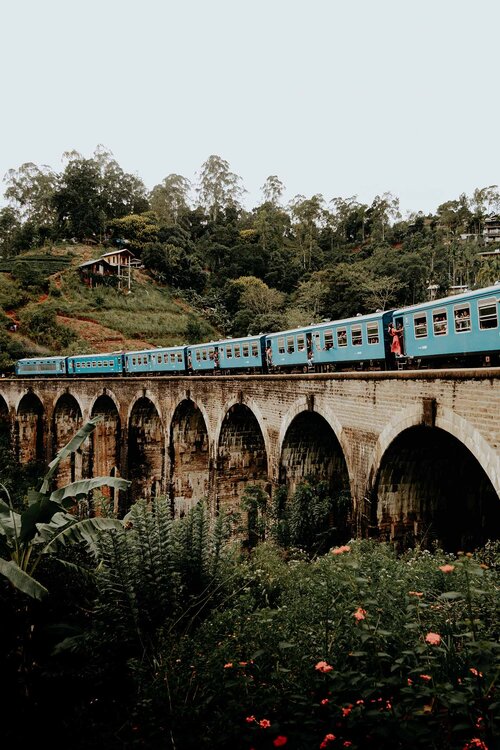
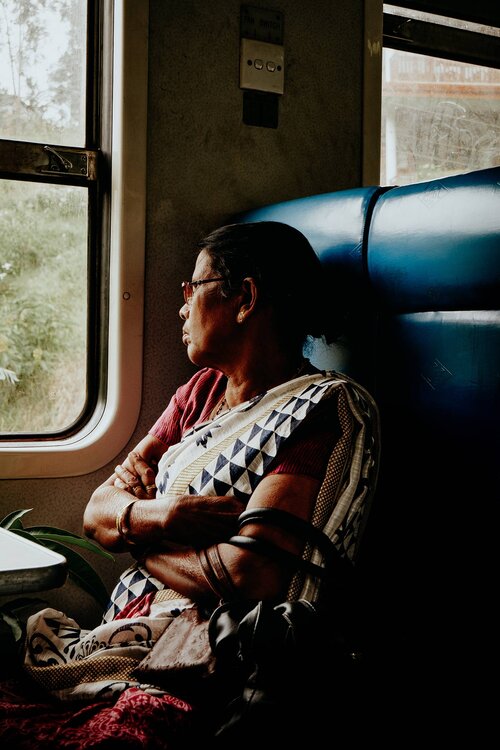
Day 14 – 15 | Kandy, the city of kings
Following the breathtaking train journey, you’ll arrive in Kandy, a vibrant city that is of major significance to Sri Lanka’s rich, captivating culture and history. It is, therefore, more than rightly so named, the city of kings by its locals.
Sri Lanka’s second-largest city is famed for its most important spiritual site, the Temple of the Sacred Tooth Relic; which according to Sri Lankan legends houses a tooth of the Buddha.
Although many travellers tend to visit Kandy in a hurry, I think there are quite a few fascinating places to see and appreciate in Kandy. I would highly recommend spending at least two days exploring the lively city and surroundings.
KANDY | MUST-SEE ATTRACTIONS
Temple of the Sacred Tooth Relic | Right at the heart of Kandy and next to the Kandy Lake is the Temple of the Tooth Relic, Sri Lanka’s most important Buddhist shrine. The best time to visit is during a Buddha Puja ceremony, when pilgrims from all over the world reflect, sing and bring offerings to deepen the appreciation of the Buddha and his teachings.
Royal Botanical Gardens of Peradeniya | For me, it’s always impressive to see a large urban city park in the midst of a lively city, the Royal Botanic Gardens of Peradeniya is exactly that. The verdant gardens are home to over 4,000 species of plants, including palm trees, medicinal plants, orchids and spices. A peaceful morning walk is a perfect activity to escape the sizzling heat and chaos of Kandy.
Bahirawakanda Temple | Located atop the Bahirawa Kanda hill and to be seen from the whole of Kandy lies the majestic Bahirawakanda Temple. The towering Buddha reaches a height of 27 metres and is considered one of the largest Buddha statues in Sri Lanka. Make sure you snap some shots of the panoramic views of Kandy.
KANDY | THE ESSENTIALS
Where | Kandy
Where to stay in Kandy | I stayed at Range Hotel Kandy and Cafe Aroma Inn. Additionally, I would recommend Dumbara Peak Residence. Alternatively, use booking.com to find accommodation in Kandy.
How to get from Ella to Kandy | Jump aboard the famous Ella to Kandy train. It’s cheap and considered the most scenic train ride in the world – 2nd class: 270 LKR ($1.50), 3rd class: 180 LKR ($1). If you prefer to book your ticket in advance, visit the 12go.asia website.
How to get around Kandy | Kandy is easily explored by foot. I’d recommend grabbing a tuk-tuk for attractions that are situated just outside the town.
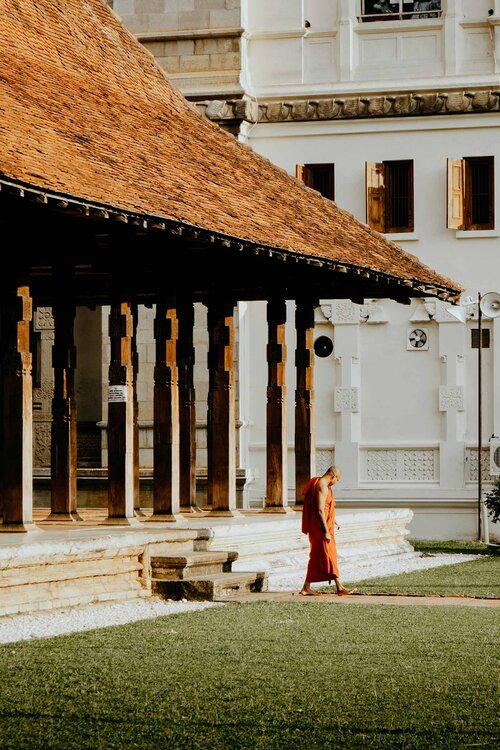
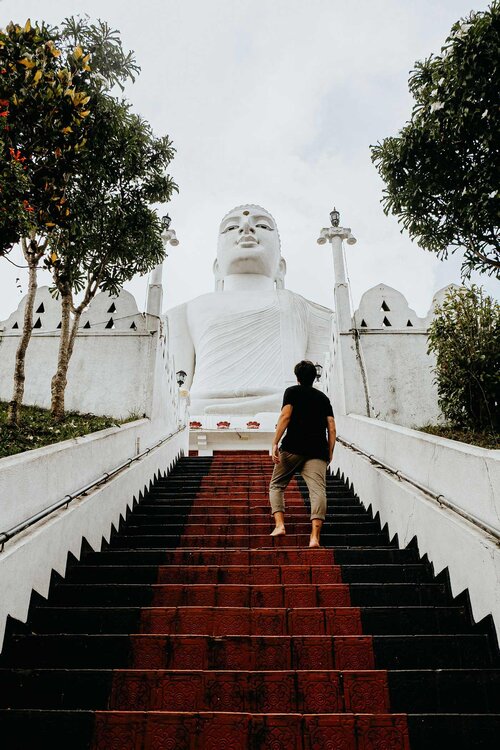
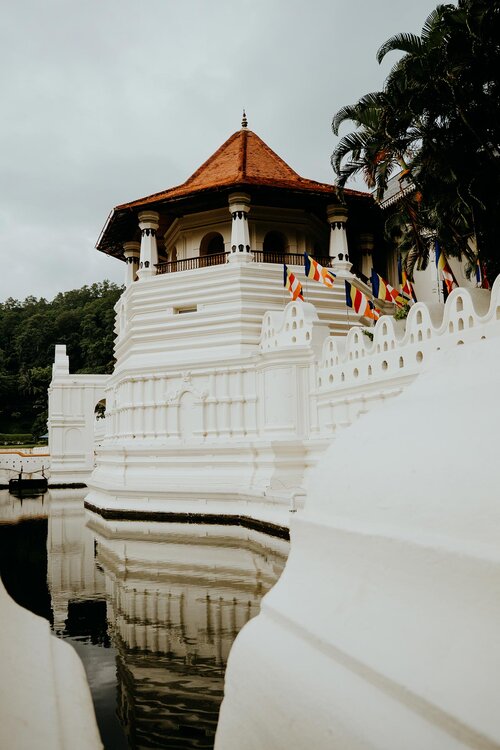
Day 16 – 17 | Sigiriya, Sri Lanka’s eight wonder of the world
It’s time to head further North to the Ancient City of Sigiriya, one of my all-time favourite places in Sri Lanka, and an unmissable destination on this itinerary.
It is little surprise that Sigiriya is loved by so many, it has essentially everything a traveller yearns for. The town is surrounded by nature, has no shortage of breathtaking sceneries and houses the authentic ambience of a local village.
The real draw though is the Ancient Sigiriya Rock Fortress, one of the country’s most famous landmarks, and often stated as the eighth wonder of the world.
It is safe to say that being surrounded by Sigiriya’s idyllic nature has a therapeutic effect on both body and mind. Therefore, I’d recommend spending a few days to explore and unwind in this magnificent area.
SIGIRIYA | MUST-SEE ATTRACTIONS
Sigiriya Rock Fortress | Sigiriya’s natural beauty is unrivalled – and that is largely by means of the Sigiriya Rock Fortress. Witnessing this unique, ancient fortress, should be on every Sri Lanka bucket list, whether viewed from Pidurangala Rock or up close and personal.
Pidurangala Rock | The Sigiriya Rock Fortress might be the number one attraction in Sigiriya, it’s the incredible view from Pidurangala Rock that stole my heart. Hiking the summit of Pidurangala Rock has rapidly become a must-do activity for travellers and locals alike. To experience the mesmerizing view at its full potential, make sure to visit at sunrise or sunset.
SIGIRIYA | THE ESSENTIALS
Where | Sigiriya
Where to stay in Sigiriya | I stayed at Hotel Sigiriya multiple times and I felt at home every single time. If you’re a creative like me, this is an inspiring place where you surely want to stay. Alternatively, use booking.com to find accommodation in Sigiriya.
How to get from Kandy to Sigiriya | Take a bus to Dambulla, where you change for the bus that heads to Sigiriya. Alternatively, hire a tuk-tuk from Dambulla to Sigiriya (1,000 LKR – $5.50). The journey takes around 2.5 hours.
How to get around Sigiriya | Walking around town is your best option as the distances are quite short. Do be aware that elephants often roam around the jungles. Alternatively, hire a bicycle to explore the stunning surroundings.
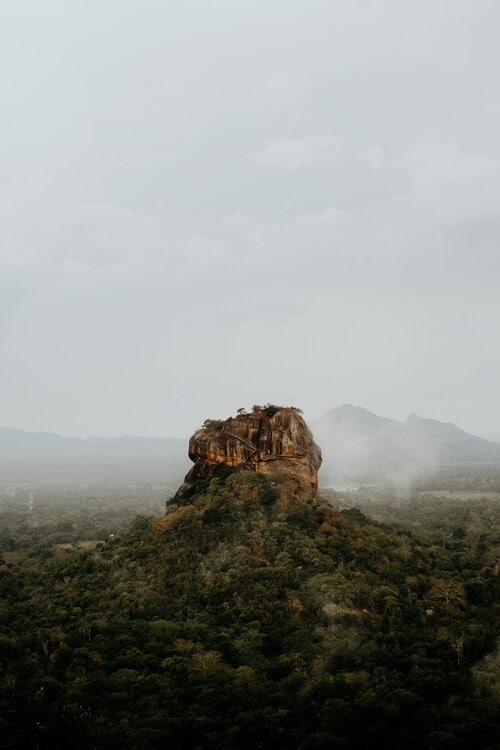
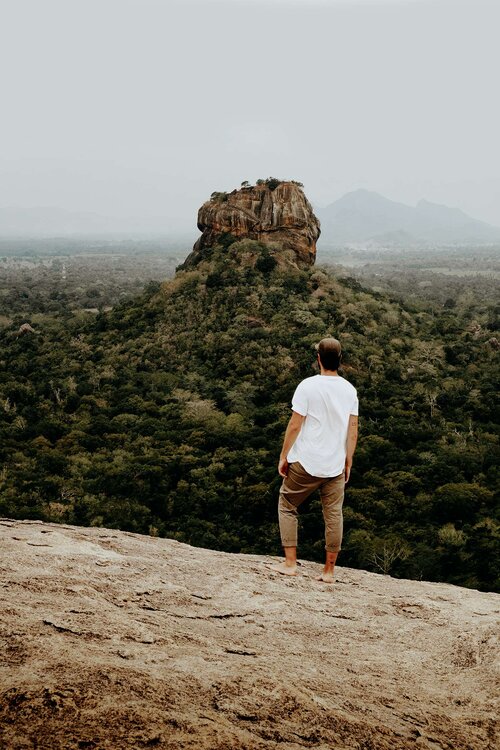
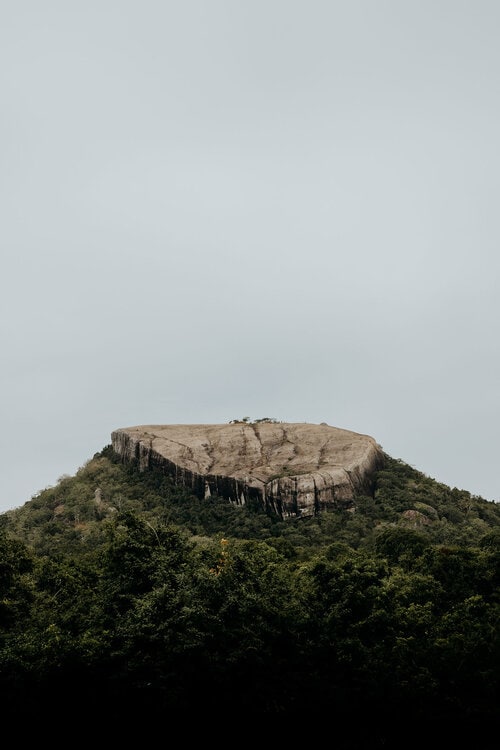
Day trip | Kaudulla National Park | The gathering of Elephants
Sigiriya is conveniently located and makes the perfect base for an exciting day trip: a jeep safari in Kaudulla National Park.
Poised between Sigiriya and Trincomalee, Kaudulla National Park is one of Sri Lanka’s best national parks, and home to over 200 wild elephants, including a newborn. The extensive wildlife park is often referred to as; The Gathering, the world’s largest gathering of Asian elephants.
It’s easy to book your Kaudulla National Park safari through your accommodation in Sigiriya. I would recommend joining an afternoon safari, right after you spend the morning visiting Sigiriya Rock Fortress or Pidurangala Rock.
KAUDULLA NATIONAL PARK | THE ESSENTIALS
Where | Kaudulla National Park
How to get from Sigiriya to Kaudulla National Park | By safari jeep. A safari tour always includes pick-up and drop-off at your accommodation.
Entrance fee in 2024 | 7.350 LKR ($25).
Half-day jeep safari costs | 9,500 – 10900 LKR ($32.50 – 37.50) per jeep, with a max of 6 people.
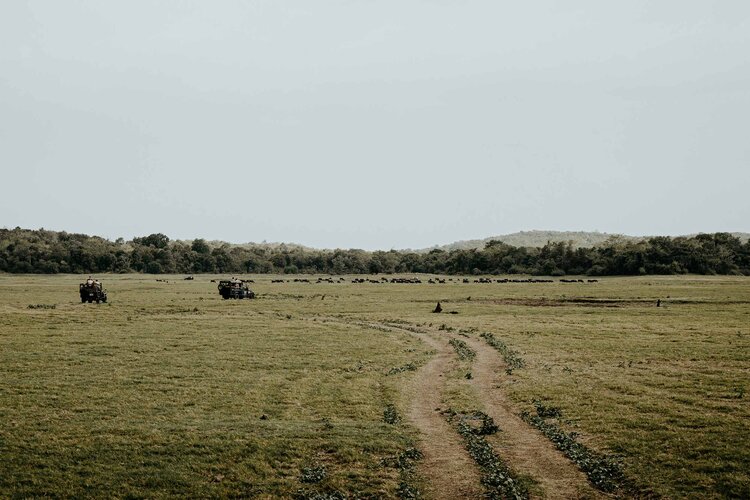
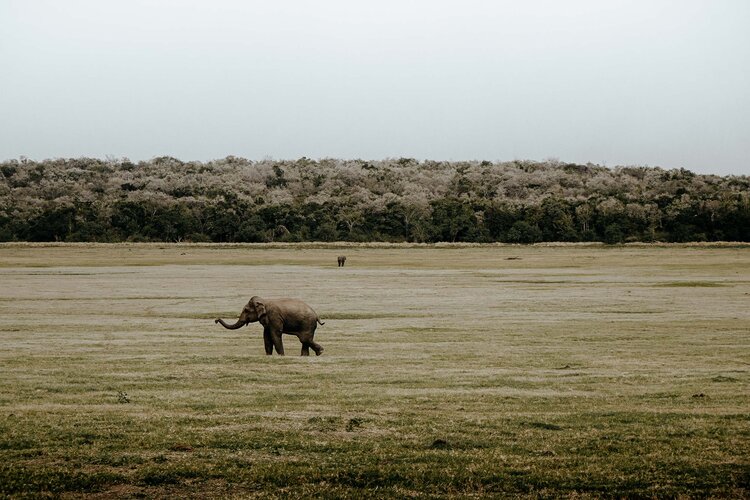
Day 18 | Polonnaruwa, Sri Lanka’s ancient capital city
Part of Sri Lanka’s glorious cultural triangle and only an hour away from Sigiriya is the ancient city of Polonnaruwa, an impressive UNESCO World Heritage site that makes for one of the best stops on any Sri Lanka itinerary.
Present-day, this ancient city has no shortage of grandeur, whether it’s the remains of temples and religious buildings, impressive shrines, or elegant Buddha statues. The ancient city of Polonnaruwa features some of the most impressive ruins in Sri Lanka – which is a true pleasure to seasoned travellers.
I’ve heard many backpackers who experience difficulties when choosing between Anuradhapura and Polonnaruwa. When I followed my intuition and chose Polonnaruwa, it felt like the right decision, and up until this day, I’m still delighted with it – even after visiting the Angkor temples in Cambodia.
POLONNARUWA | THE ESSENTIALS
Where | Polonnaruwa
Entrance fee | Adult 4,550 LKR ($25), children 2,275 LKR ($12.50).
Opening hours | 07:00 – 18:30 daily.
Where to stay in Polonnaruwa | I stayed at Hotel Lake Park and would additionally recommend Giritale Hotel and Mahanuge Hotel Polonnaruwa. Alternatively, use booking.com to find accommodation in Polonnaruwa.
How to get from Sigiriya to Polonnaruwa | Take the local bus to Inamaluwa, before changing to a direct bus that heads for Polonnaruwa. The journey should take no longer than 1.5 hours.
How to get around Polonnaruwa | The most fun way to explore Polonnaruwa is by bicycle. Alternatively, hire a tuk-tuk that guides you around the complex.
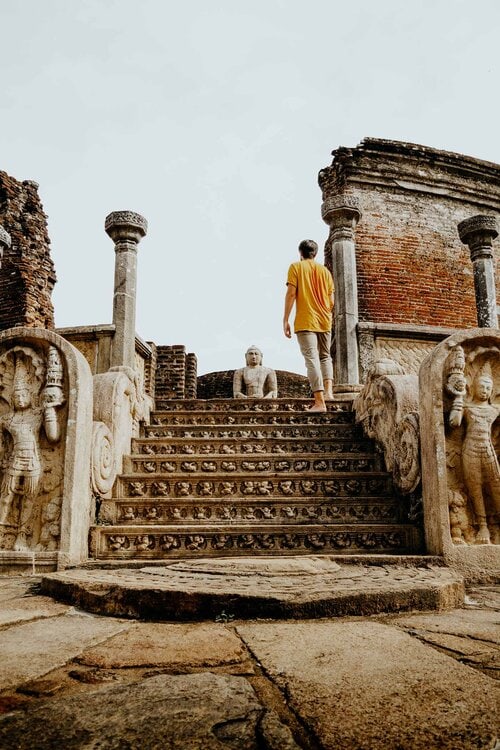
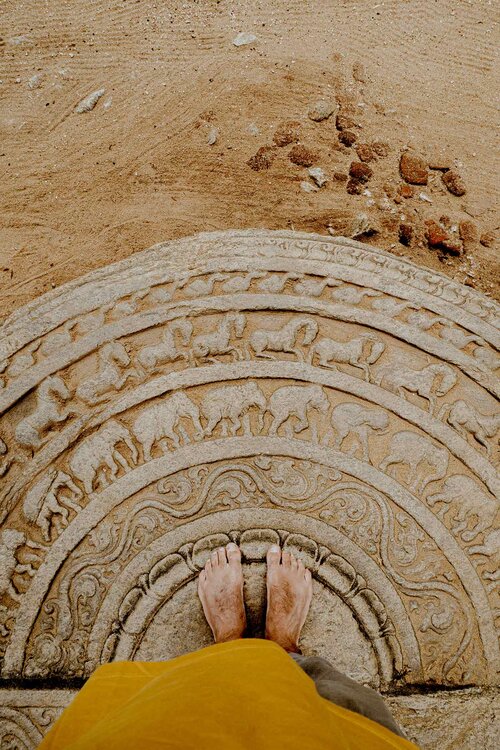
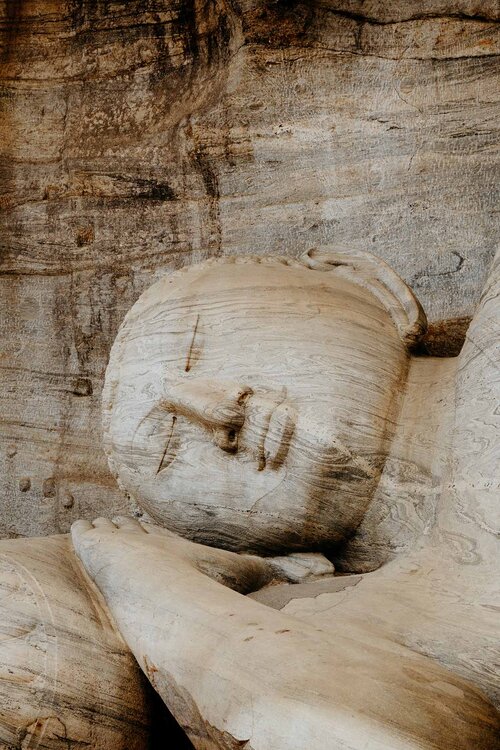
Day 19 – 20 | Trincomalee, Sri Lanka’s undiscovered East coast
After soaking up all that Polonnaruwa has to offer, it’s time to venture further east to the pristine, undiscovered beaches of Trincomalee and surrounds.
Trincomalee, often called Trinco by the locals, is a relaxed coastal town that is less frequently visited by travellers and backpackers alike. Even so, I sincerely feel that its beaches aren’t inferior to most of the must-see beaches on Sri Lanka’s beloved south coast.
But what really distinguishes Trincomalee is the fact that it’s deeply influenced by Tamil culture, resulting in a completely different atmosphere than elsewhere on the island. Trinco is thus, no stranger to vivid, breathtaking Hindu temples, and I would highly recommend attending at least one of them.
TRINCOMALEE | MUST-SEE ATTRACTIONS
Koneswaram Temple | The colourful Koneswaram Temple holds the upper area of Fort Frederick and is a must-see in Trincomalee. The fascinating temple is dictated by its main shrine, a large vivid statue of the Hindu god Shiva, and faces one of the world’s largest natural harbours. If you plan to visit, remember to respect religious customs.
Nilaveli Beach | Just 20 minutes north of Trincomalee you’ll find Nilaveli Beach, a secluded beach that is said to be among the best beaches in Sri Lanka. The sleepy town and its eponymous beach are still largely undiscovered to backpackers and houses an authentic local atmosphere. Nilaveli may be a little off the beaten path, but it is worth visiting, and a great place to grab a coconut while watching the world go by.
Sri Pathirakali Amman Kovil | Trinco may be renowned for its pristine beaches, it is the incredibly ornamented Hindu temples that amazed me the most. Established adjacent to the Trinco bus station is one of them, the Sri Pathirakali Amman Kovil, a work of art that is dedicated to the Hindu goddess Bhadrakali. To fully experience the temples, I’d recommend taking a peaceful walk in and around the buildings.
TRINCOMALEE | THE ESSENTIALS
Where | Trincomalee
Where to stay in Trincomalee | Trincomalee has excellent accommodations and I would highly recommend Amaranthe Bay Resort & Spa and Trinco Blu by Cinnamon. Alternatively, use booking.com to find accommodation in Trincomalee.
How to get from Polonnaruwa to Trincomalee | From Polonnaruwa’s main station, take the local bus to Habarana, before changing to a direct bus that heads for Trincomalee. The journey takes around 3.5 hours.
How to get around Trincomalee | If you’re looking to explore the surrounding area, I would highly recommend renting a scooter. Alternatively, go walking or hire one of the many tuk-tuks.
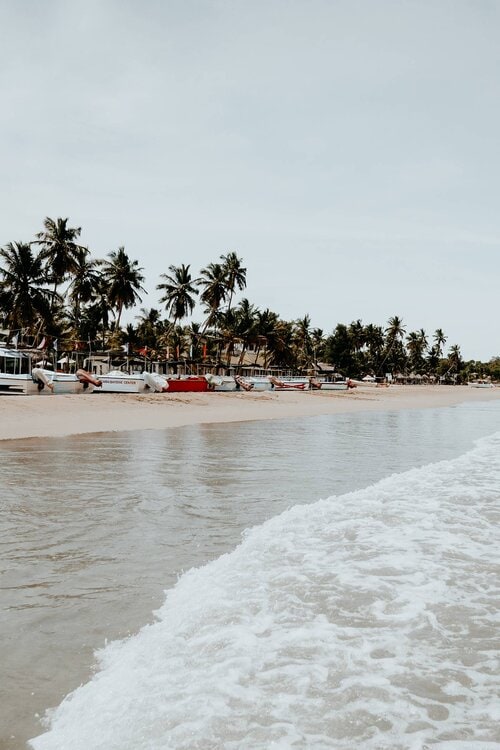
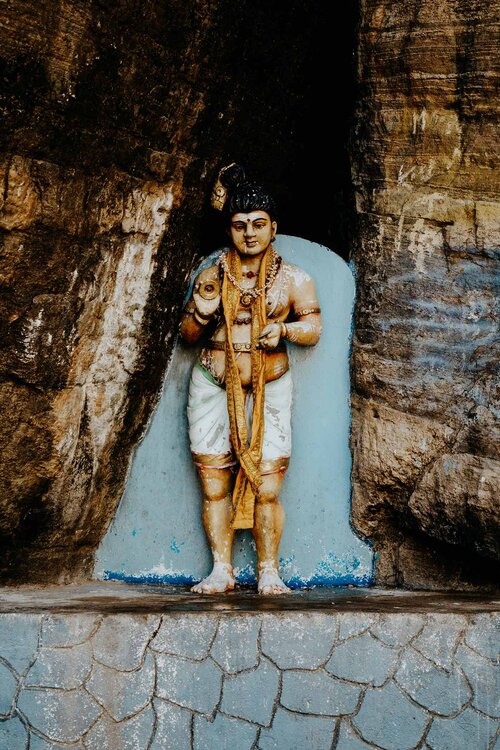
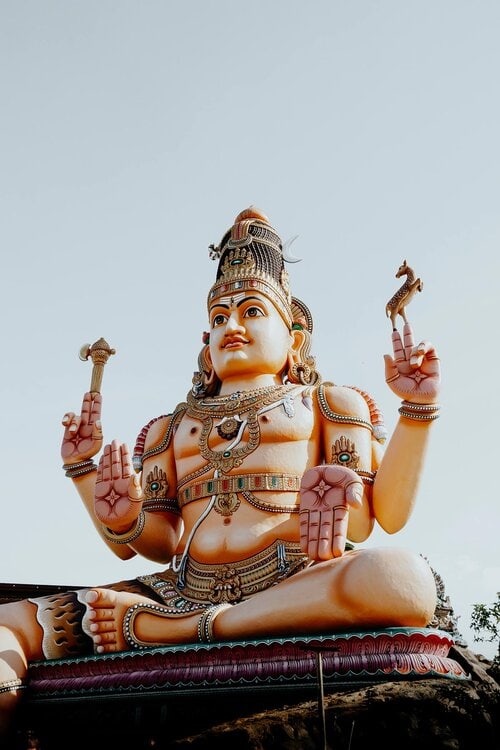
Day 21 | Negombo, time to leave Sri Lanka
It’s time to leave Trinco and board the train that brings you from Trincomalee to Negombo (departs once a day at 06:50).
This scenic train journey is the last glimpse you’ll have of this unique, captivating country. It’s a great moment to reflect and appreciate the fascinating adventures you’ve had during your 3 weeks in Sri Lanka.
To avoid unnecessary problems, make sure you arrive in Negombo one day prior to your return flight. By doing so, you ensure yourself a stress-free journey to the airport.
NEGOMBO | THE ESSENTIALS
Where to stay in Negombo | The last night before a flight, I always try to pick the most comfortable, budget-friendly accommodation possible. For Negombo, I would highly recommend Ayur Ayur Resort & Ayurveda Retreat. Alternatively, use booking.com to find accommodation in Negombo.
How to get from Trincomalee to Negombo | Take the direct train from Trincomalee station to Gampaha station. From there, hire a tuk-tuk or arrange a taxi with the PickMe app to bring you to your accommodation in Negombo. The journey can take up to 9 hours.
Train times from Trincomalee to Negombo | Train departs once daily, 06:50. To avoid unnecessary problems, make sure you arrive in Negombo one day prior to your return flight.
Sri Lanka itinerary | The essentials
Weather in Sri Lanka | The best time to visit Sri Lanka
Although Sri Lanka is just a small island, it is quite a challenge to figure out the best time to visit.
Sri Lanka’s weather is somewhat confusing and dictated by two individual monsoon seasons, and since they alternate, it’s important to plan where you want to go. Due to this distinct climate, there’s always a part with good weather, making Sri Lanka a year-round travel destination.
May – September | The absolute best time to go and visit Sri Lanka’s undiscovered northern and eastern areas.
December – March | Sri Lanka’s popular south and central areas have excellent weather this time of year.
I did this Sri Lanka itinerary in September and was lucky to enjoy the best of both worlds. That said, be aware that travelling during the shoulder season doesn’t always ensure good weather.
Money essentials | The currency in Sri Lanka
Sri Lanka’s official currency is the Sri Lankan Rupee, a currency that is indicated by LKR and Rs. The notes that are currently in circulation include Rs10, Rs20, Rs50, Rs100, Rs500, Rs1000, Rs2000 and Rs5000. Make sure you have enough notes in lower denominations, especially if you plan to stroll the markets and hire tuk-tuks.
Exchanging currency in Sri Lanka | I would sincerely recommend you avoid buying Sri Lankan Rupees either ahead of time or at the airport. I made the mistake of buying upfront, and since the Rupee isn’t rated as a major currency, I ended up getting a bad exchange rate.
The exchange rate at the time of writing – November 2024 | $1 equals 294 LKR, and €1 equals 315 LKR. For up-to-date exchange rates, visit the XE website.
ATMs in Sri Lanka | ATM services are found throughout most popular tourist areas and work well. To avoid unnecessary costs, I’d highly recommend choosing the local currency when withdrawing money.
Fee-free ATM | I used The People’s Bank on many occasions, and had no commission whatsoever.
Stay safe in Sri Lanka | Travel insurance
Though Sri Lanka is perfectly safe for travellers, I always strive to sort out my travel insurance before arriving in a foreign country, and I highly advise anyone else to do the same.
Where we prefer that everything goes smoothly during our travels, something unfortunate can happen at any moment, whether it’s an injury or an accident on the road. When that happens, it is better to be safe than sorry.
Heymondo | Whether you’re going on a 3-week backpacking trip, or planning a long stay somewhere abroad, Heymondo has excellent insurance options either way – plus full COVID-19 coverage and a handy app with 24-hour medical assistance. Readers of WTSW receive 5% off any insurance policy, more information here.
Cheers!
I’ve been on this travel blogging journey since 2019.
If you appreciate what I do here, these are some ways you can support me.

Plan your Sri Lanka itinerary with these essential guides
46 Stunning photos that will inspire you to visit Sri Lanka
Sri Lanka is an extremely photogenic country that has many stories to tell. This is my Sri Lanka photography story, with 46 of my favourite photos from a month spent exploring this charming island in the Indian ocean.
Ask any travel enthusiast who visited Sri Lanka and they’ll all agree on this – photography and Sri Lanka are like a passport and travelling, inseparable and made for each other.
Sri Lanka is incredibly picturesque and I’m still extremely grateful that I was fortunate enough to spend a full month exploring this extraordinary country.
I spent time, wandering along exotic palm-fringed beaches on both the south and east coast, went on an early morning safari in the dense, wildlife-rich jungles of the Yala National Park, and visited magnificent ancient World Heritage sites in Kandy, Sigiriya and Polonnaruwa.
It is, therefore, no surprise that Sri Lanka became one of my favourite destinations in the world. I want you to see and feel what I experienced during this amazing trip, so here are 46 photos that will clearly inspire you to visit Sri Lanka.
46 STUNNING PHOTOS THAT WILL INSPIRE YOU TO VISIT SRI LANKA
THE PEOPLE OF SRI LANKA
—
Genuine. Friendly.
These two words come to mind when I think of all the warmhearted people I’ve had the pleasure to meet during my 4 weeks in Sri Lanka.
One of the goals I’d set for my trip through Sri Lanka was figuring out how to shoot portraits while creating a deeper connection with the local people.
Being brave enough to ask for someone’s portrait is quite a challenge at times, but that simply wasn’t the case in Sri Lanka. The people here are one of the friendliest in the world and do everything in their power to make sure you feel welcome. Don’t be shy to start a chat, it’s one of the best possible experiences in Sri Lanka.
The abundance of kindness and positive energy is one of the many reasons why Sri Lanka will always hold a special place in my heart.
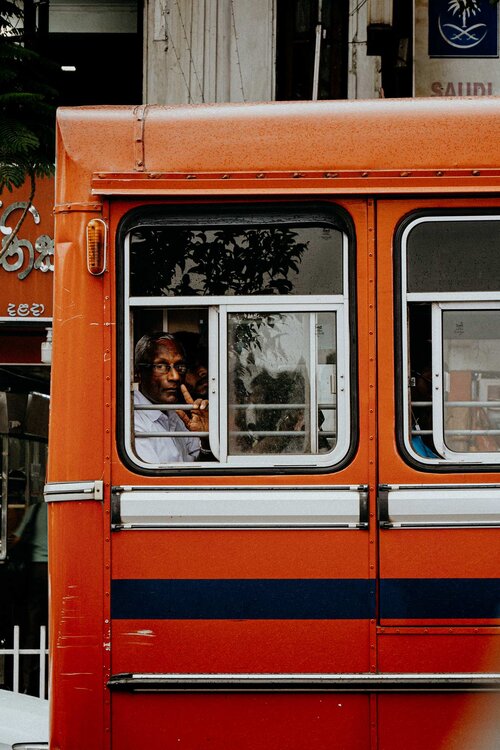
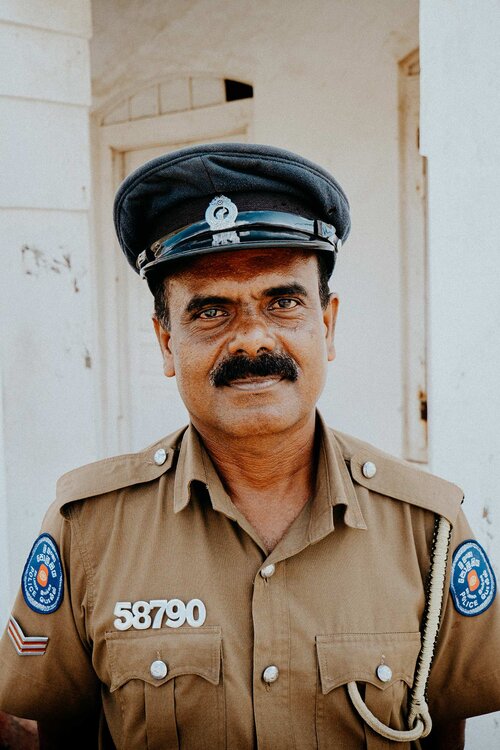
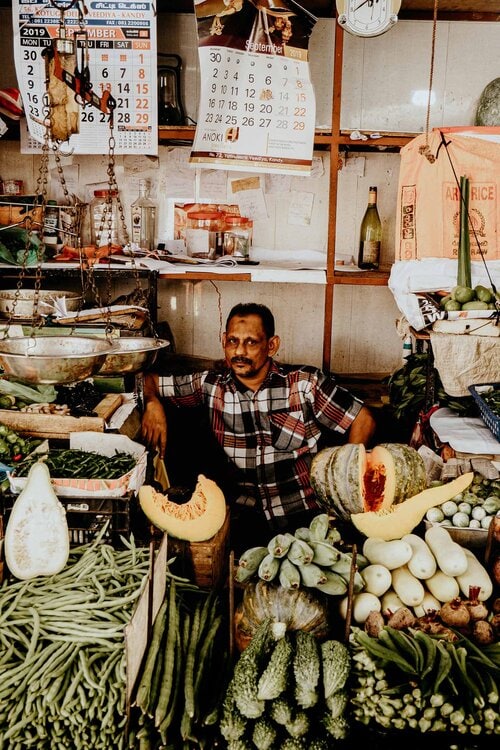
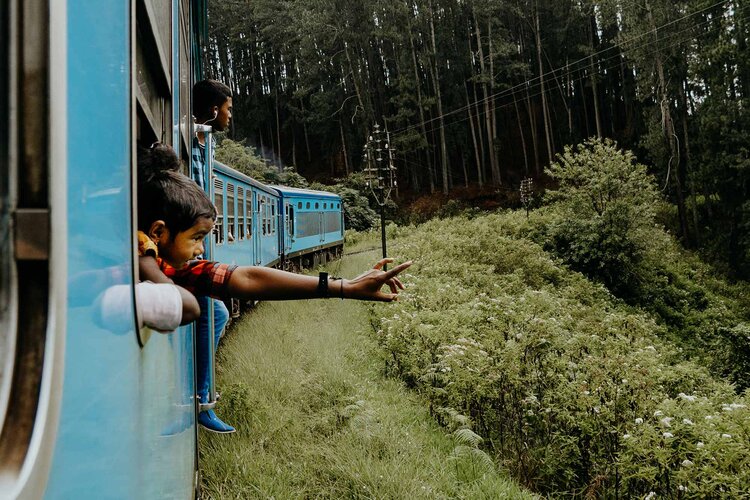

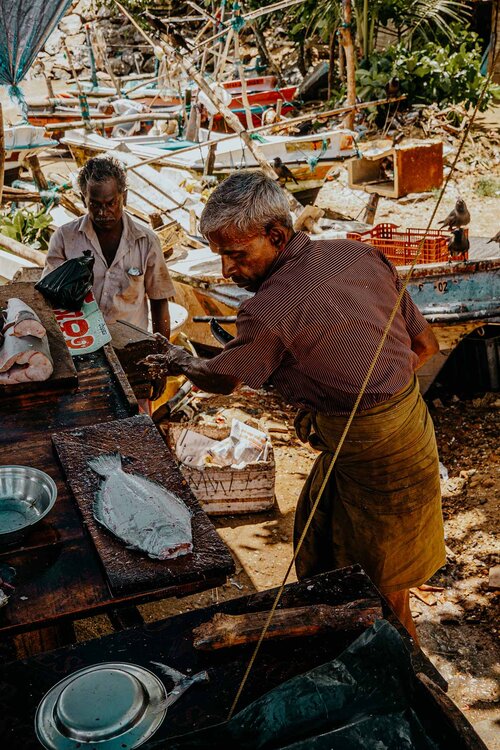
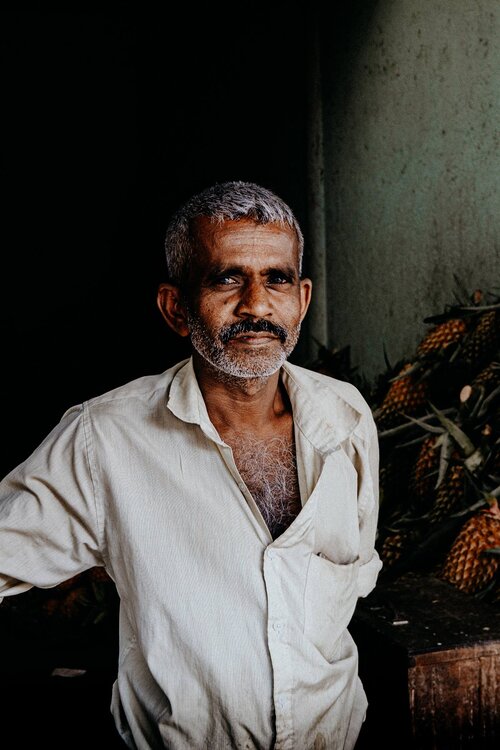
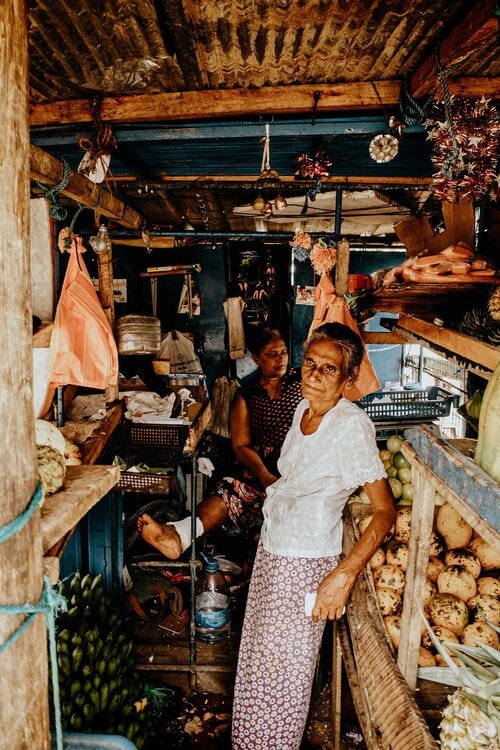

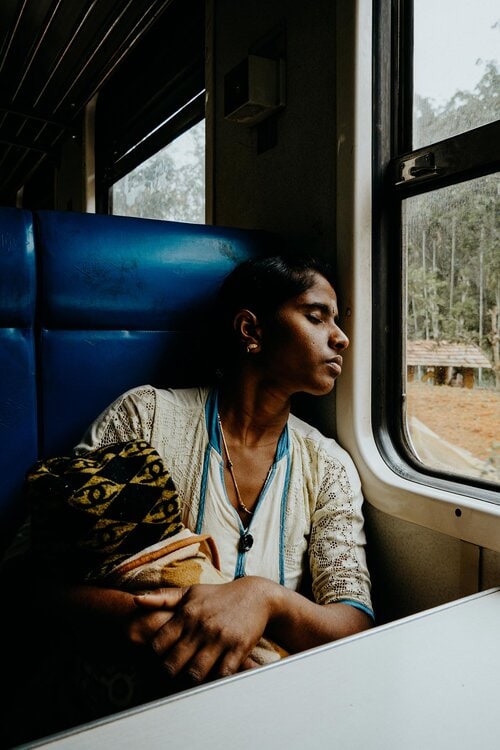
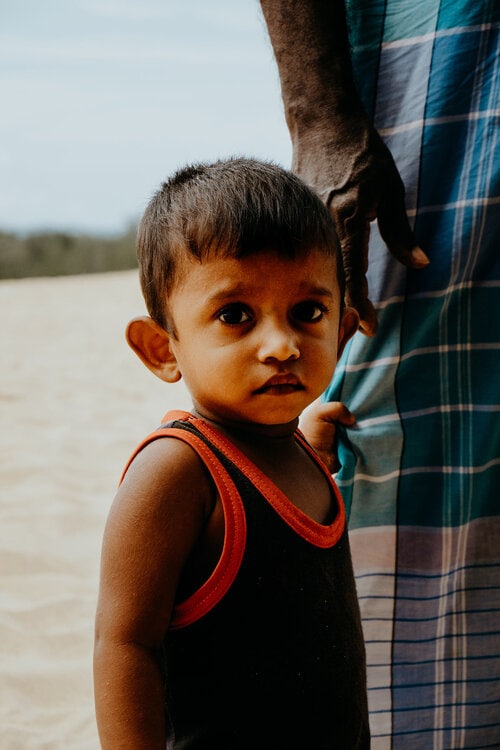
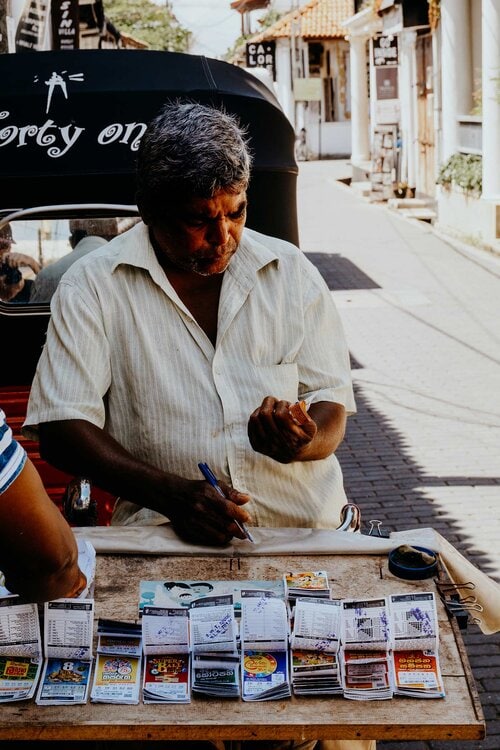
SRI LANKA’S PALM-FRINGED BEACHES
—
It is no longer a secret that Sri Lanka has some of the best palm-fringed beaches in the world.
Along Sri Lanka’s entire coastline, you’ll find popular beach towns that provide excellent surf breaks, trendy cafés and a charming backpacker atmosphere. Sri Lanka is quickly becoming a fixture for travellers from all over the world, and that’s for a good reason.
From Unawatuna and Mirissa down south to Arugam Bay and Trincomalee on the island’s untouched east coast, it’s merely impossible to go wrong in Sri Lanka.
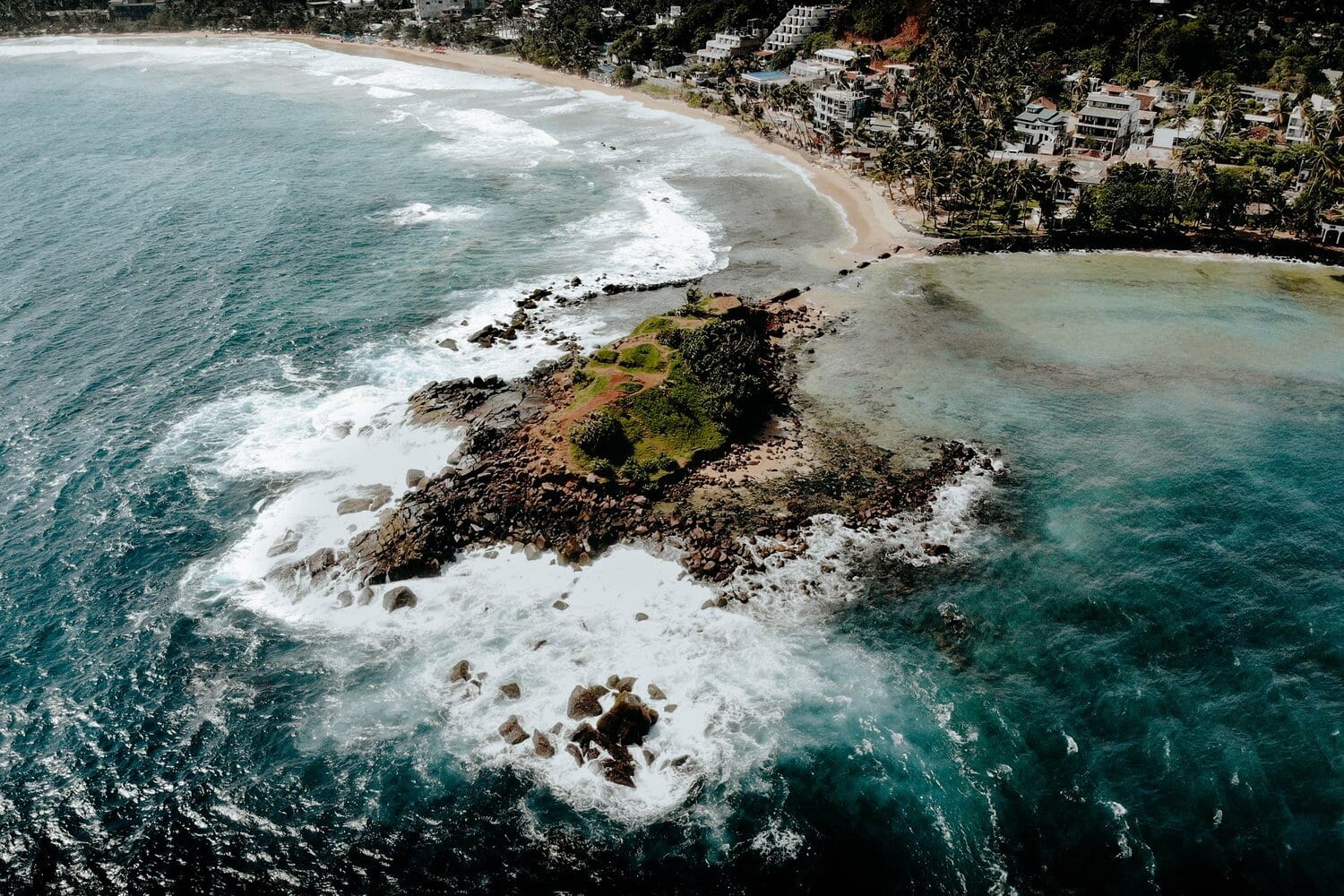
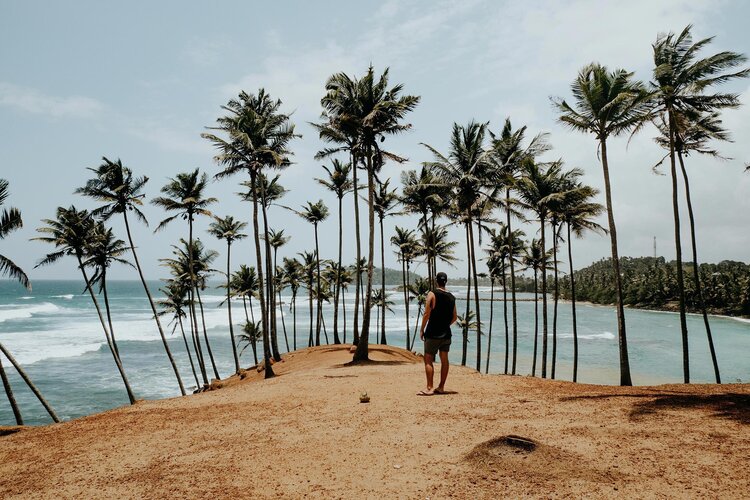

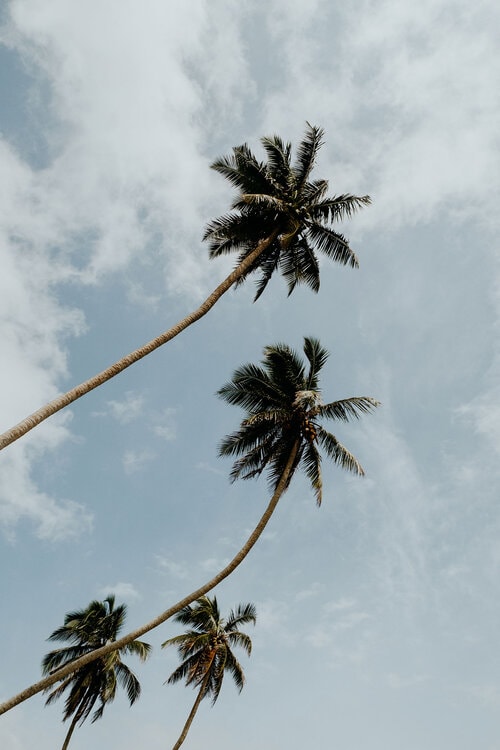
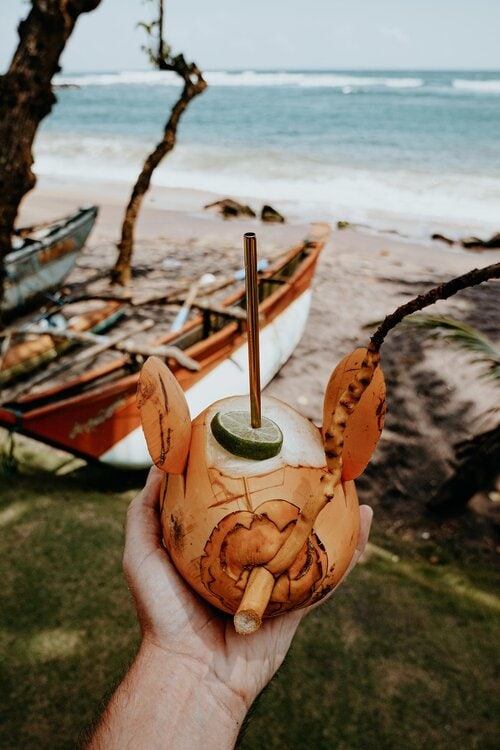
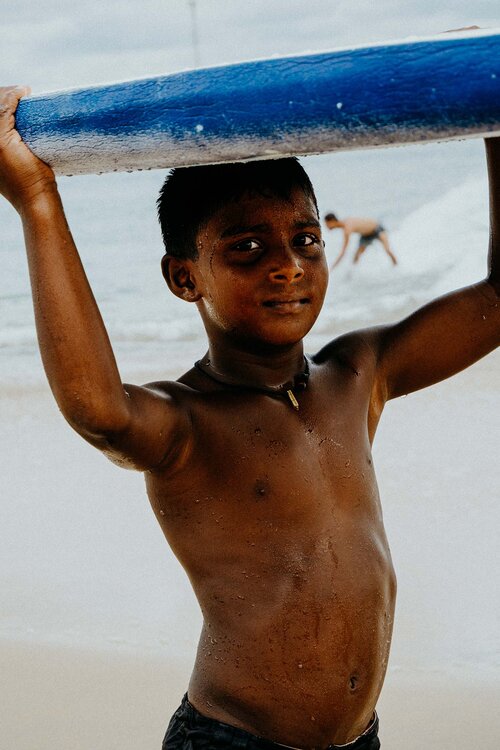
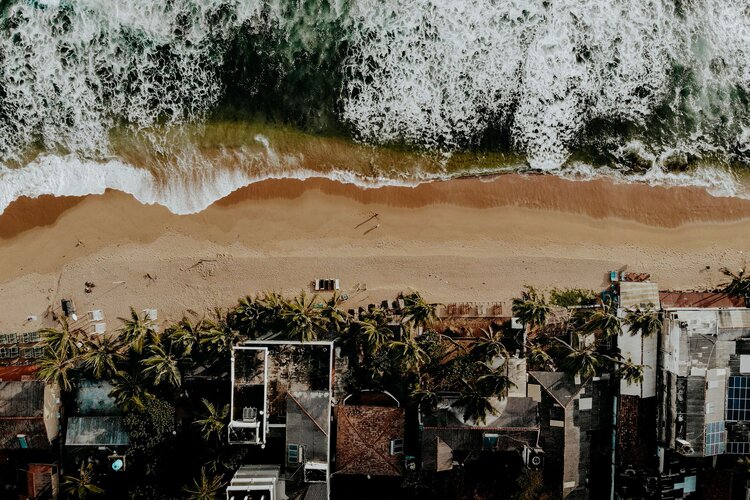

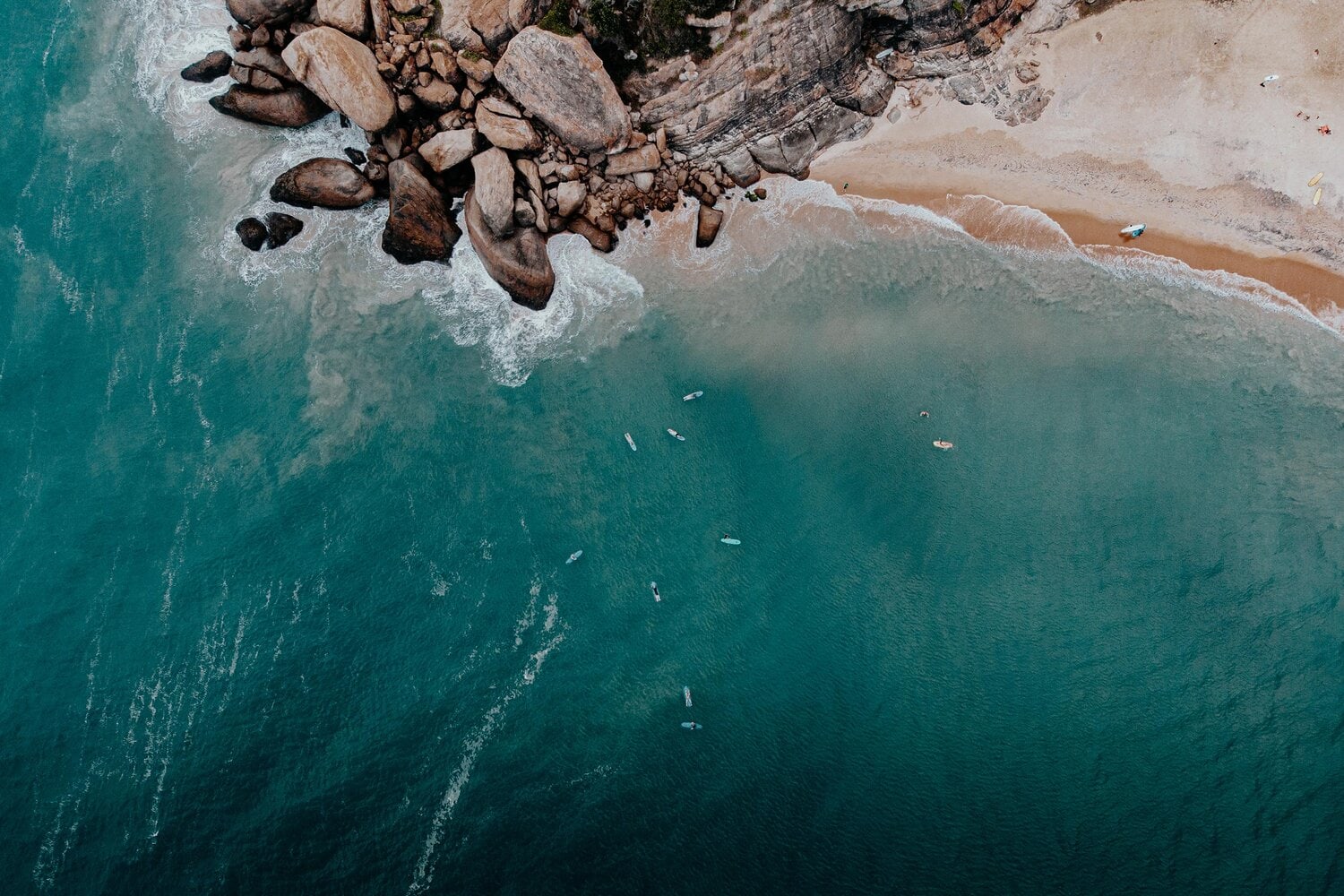
SRI LANKA’S OUTSTANDING NATURAL SCENERIES
—
Sri Lanka is a tiny teardrop-shaped island in the midst of the Indian Ocean which despite its size, has no shortage of outstanding natural sceneries.
It is safe to say that being around Sri Lanka’s natural beauty had a therapeutic effect on both my body and mind. The sceneries are utterly sensational; the Ancient Rock Fortress in Sigiriya, the lush, peaceful hills of Ella and the dense jungles of the Yala National Park, just to mention a few.
Sri Lanka is one of those countries that stands out in all aspects. The country’s many natural highlights are unique and without doubt, something that will blow your mind.
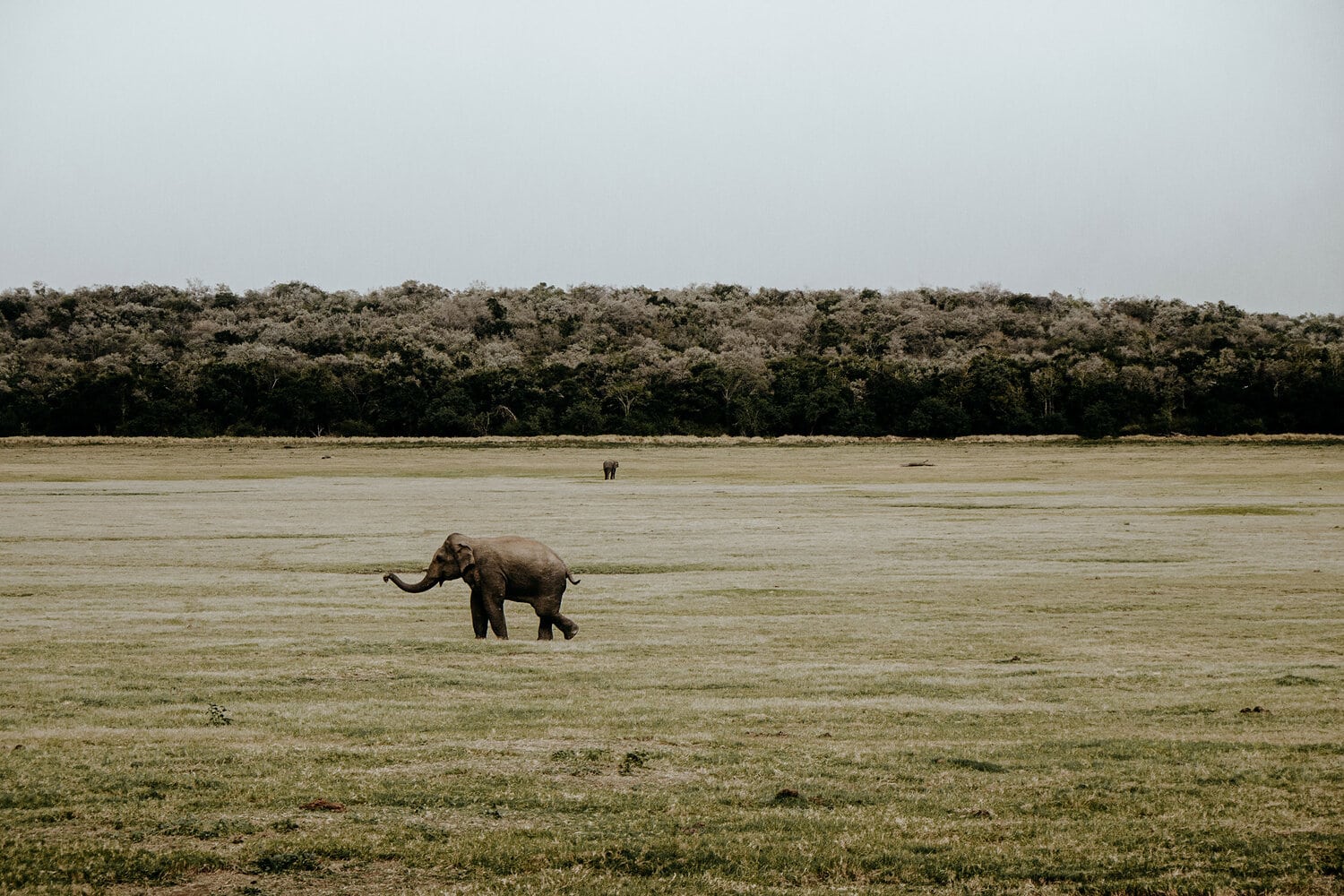
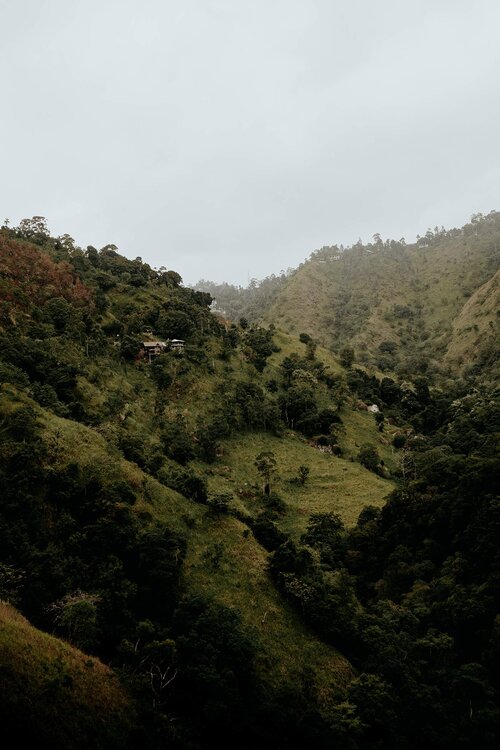

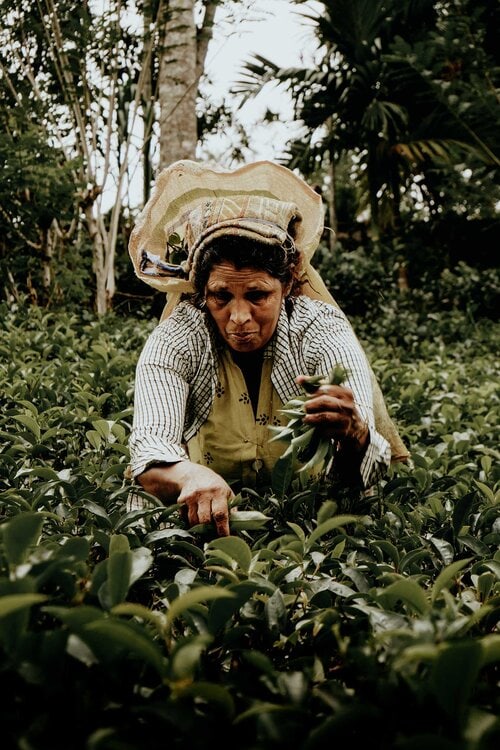
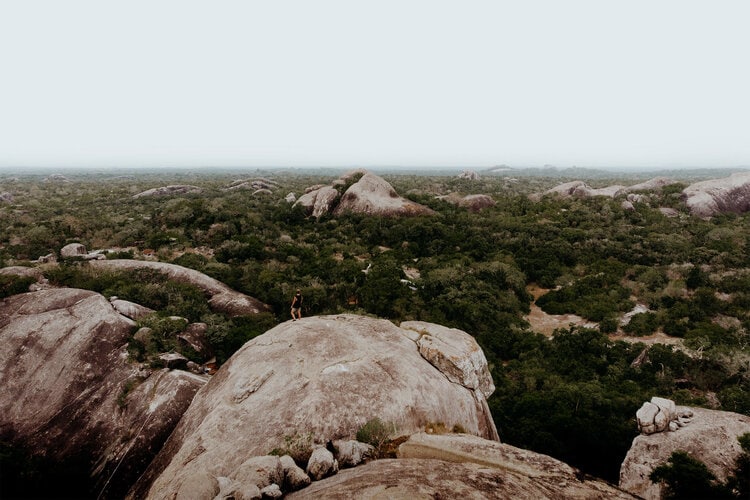
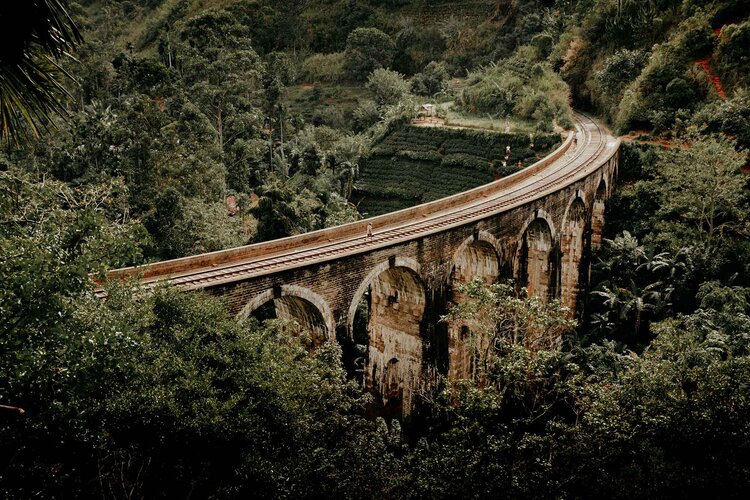
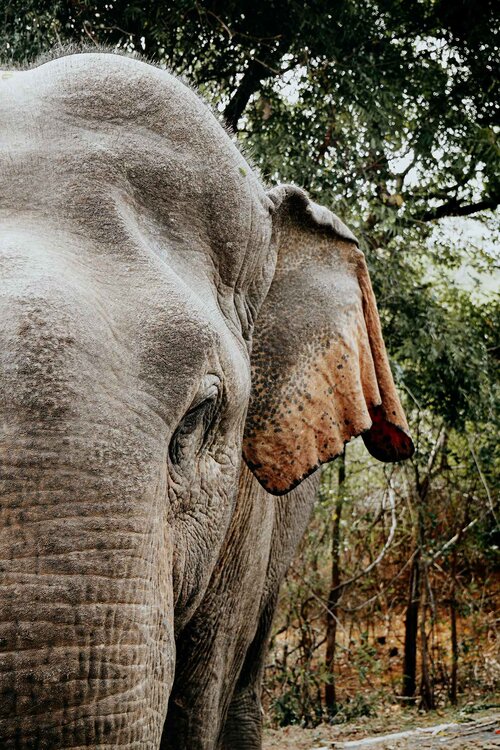
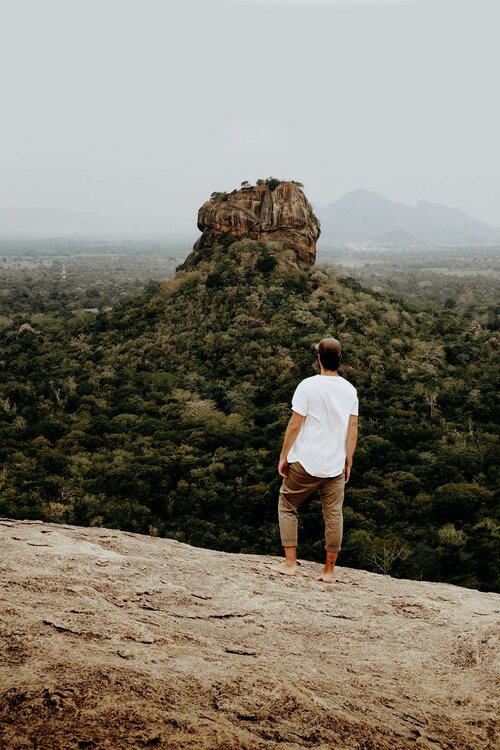
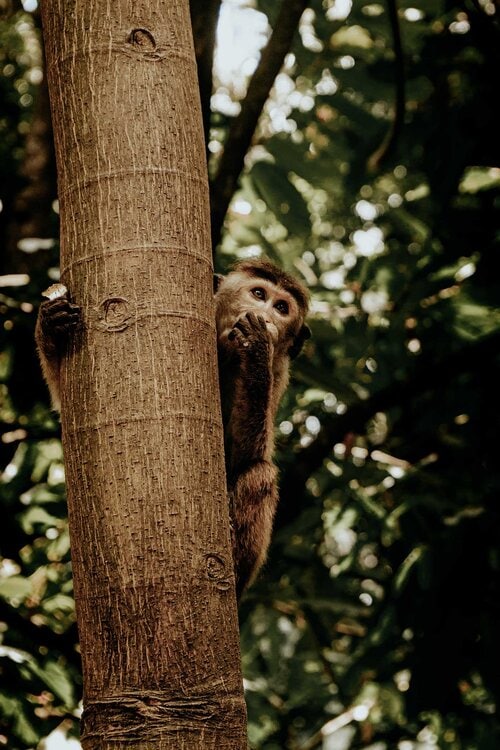
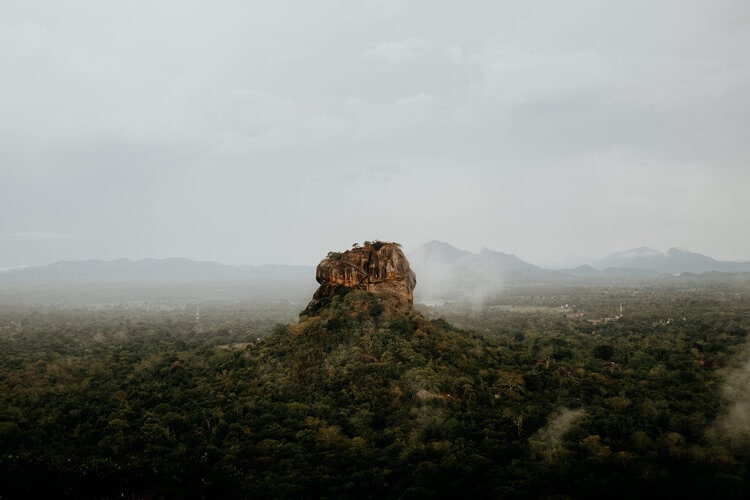

SRI LANKA’S CULTURAL BEAUTY
—
Influenced by many, yet extremely authentic and distinct. Sri Lanka has an amazing culture that is shaped by several influencing eras throughout the country’s rich history.
Religion, colonial occupation and the production of tea have been the primary influences, while neighbouring India also played an essential role in the development of contemporary Sri Lanka.
Sri Lanka’s culture is deeply influenced by its religion, which translates in ancient Buddhist cities, brightly coloured Hindu temples, artistic mosques and you will even encounter ornate Christian churches.
In other words, there’s no shortage of incredible World Heritage sites, among which you’ll notice Kandy – the city of kings, the ancient city of Polonnaruwa, the Sigiriya rock fortress and the Dutch Galle Fort – which was fortunate enough to survive the boxing day tsunami in 2004.
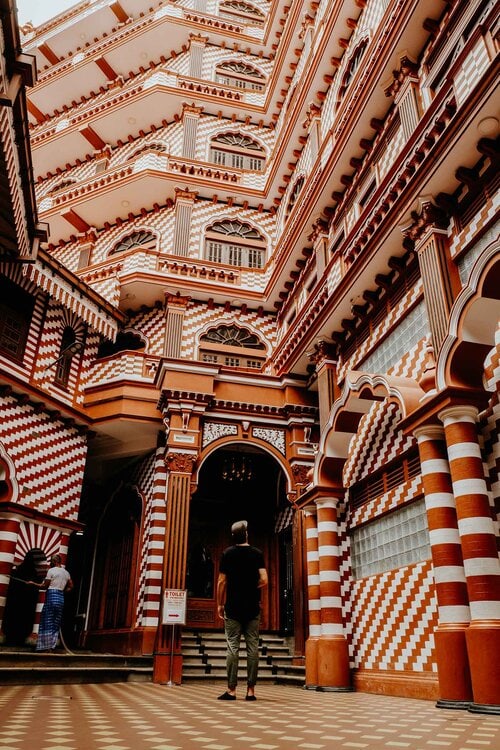
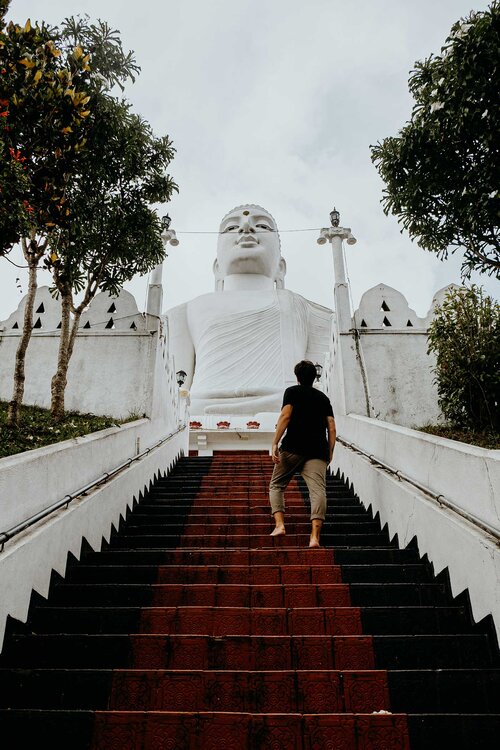

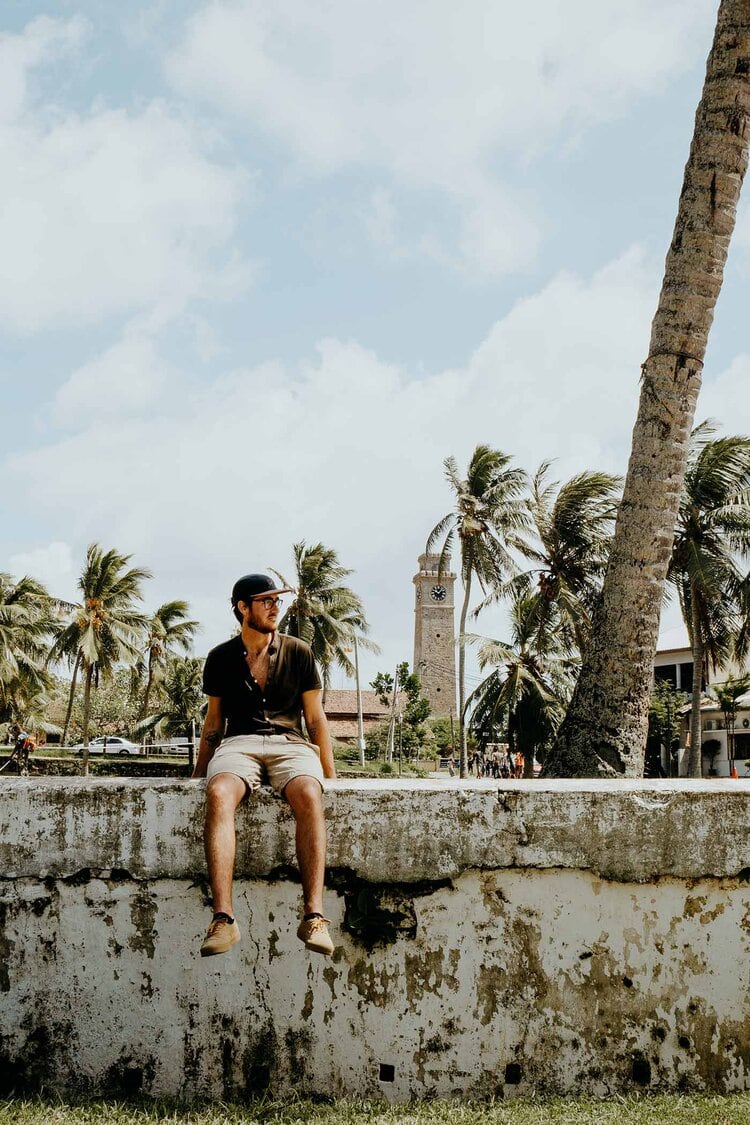
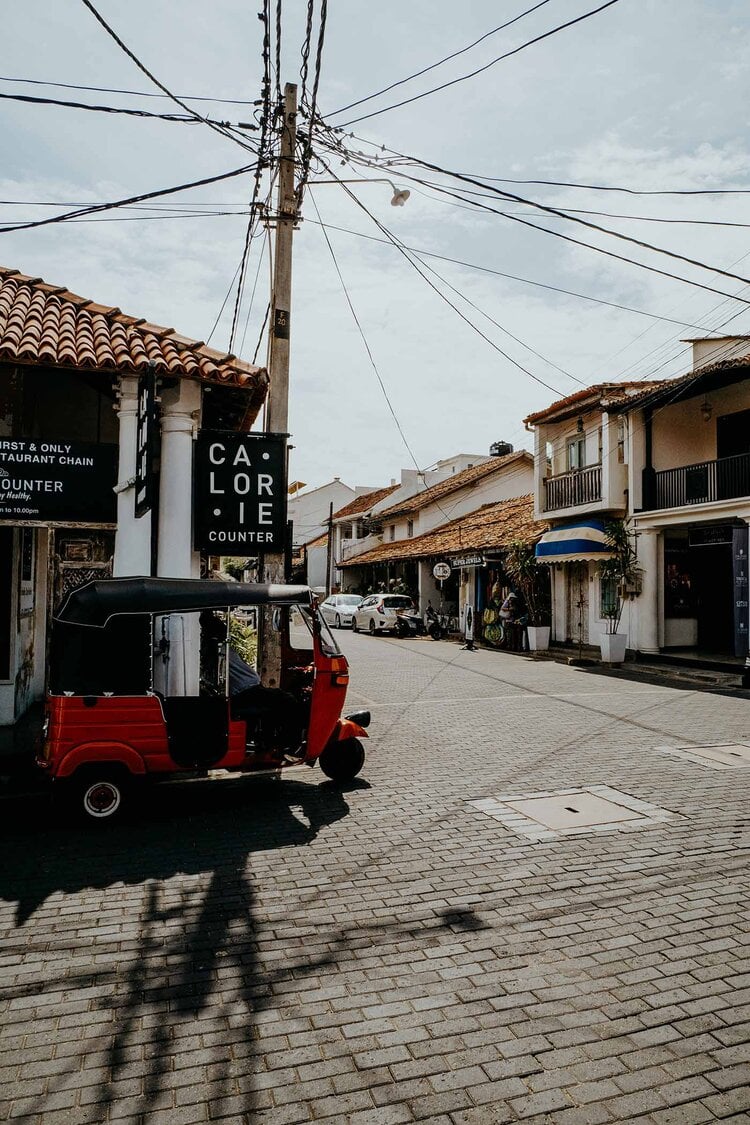
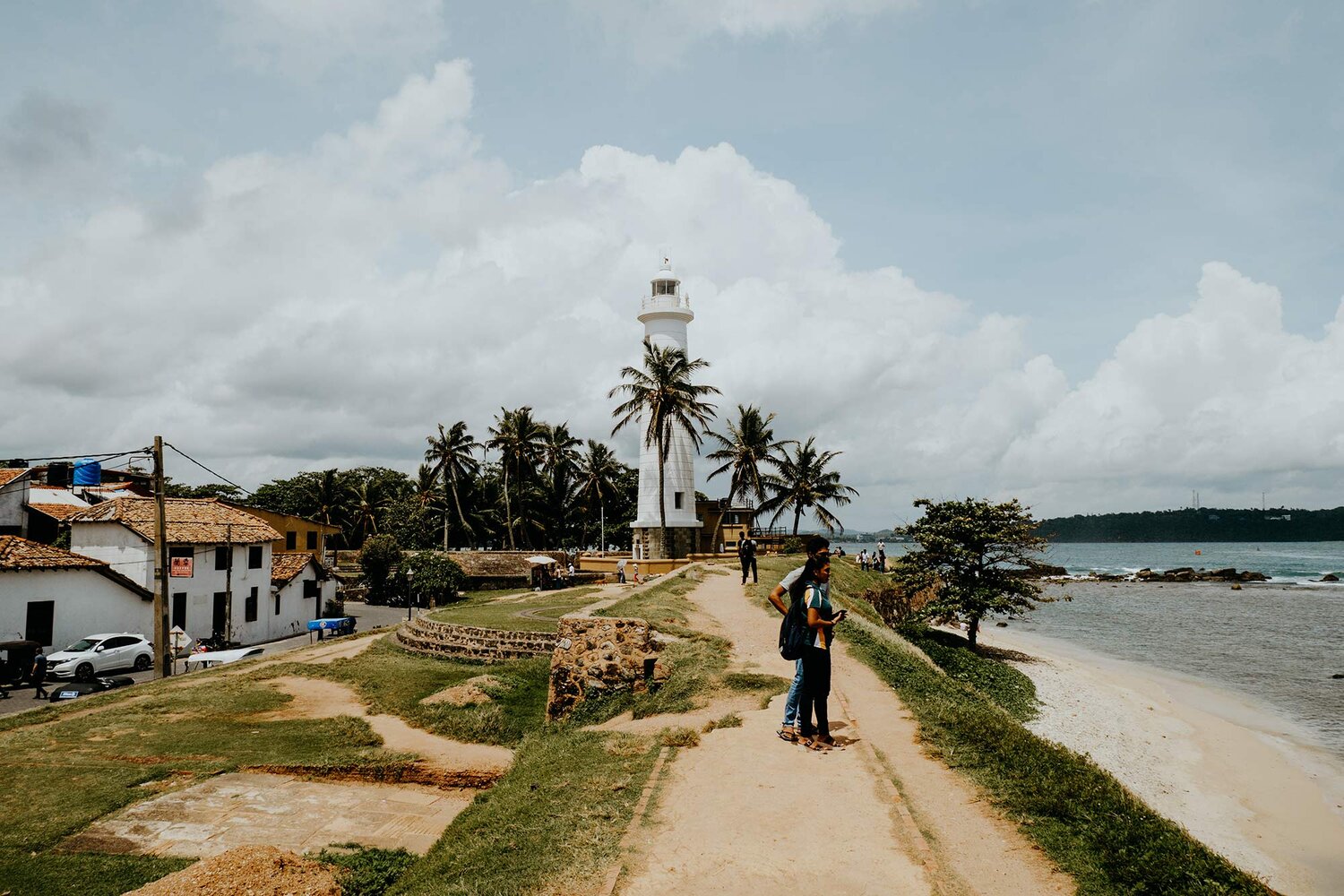
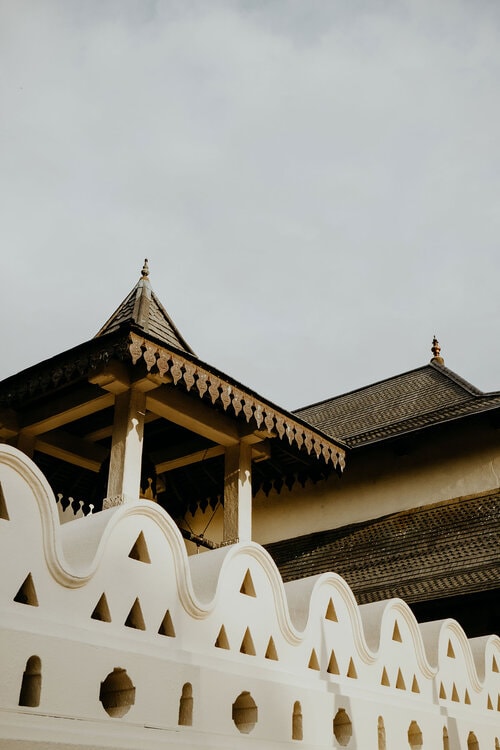
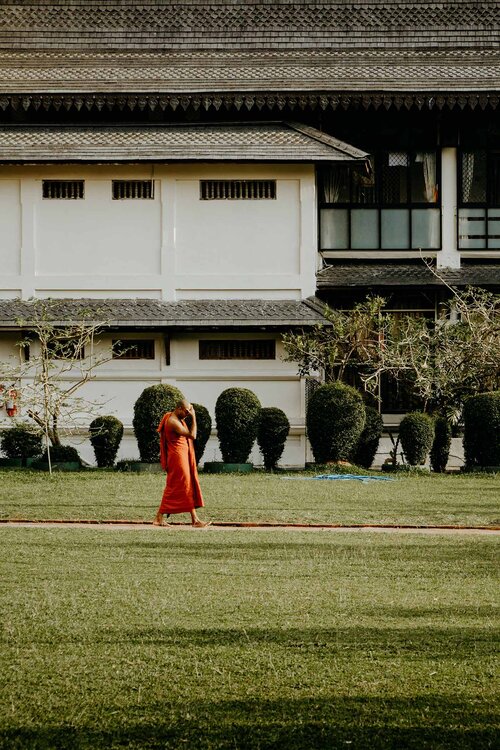
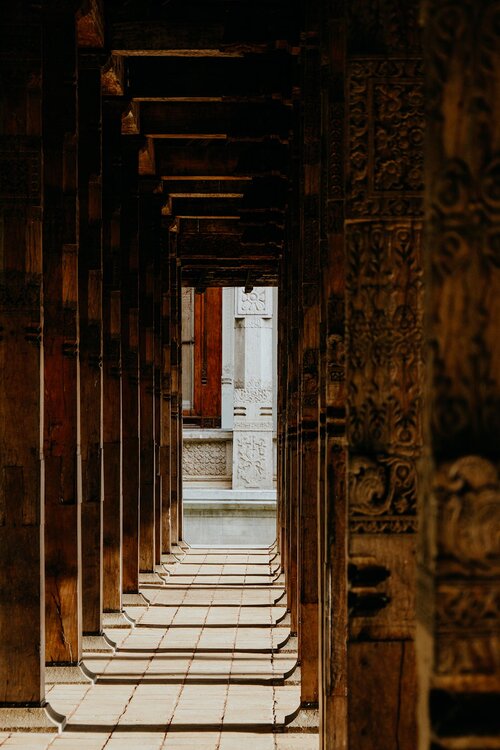
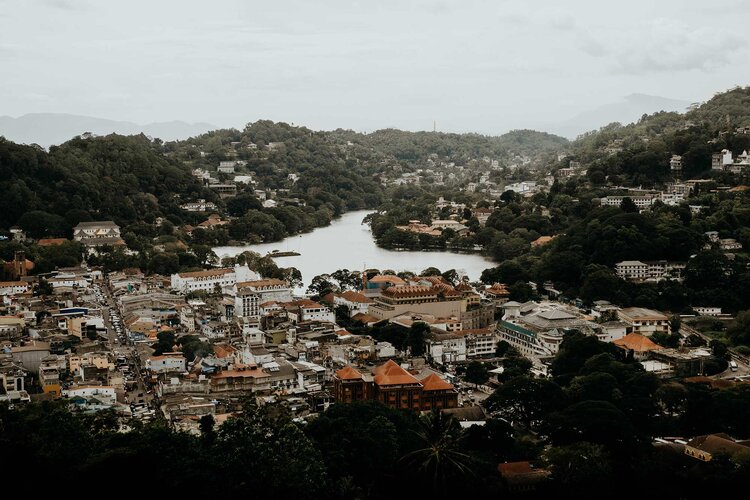
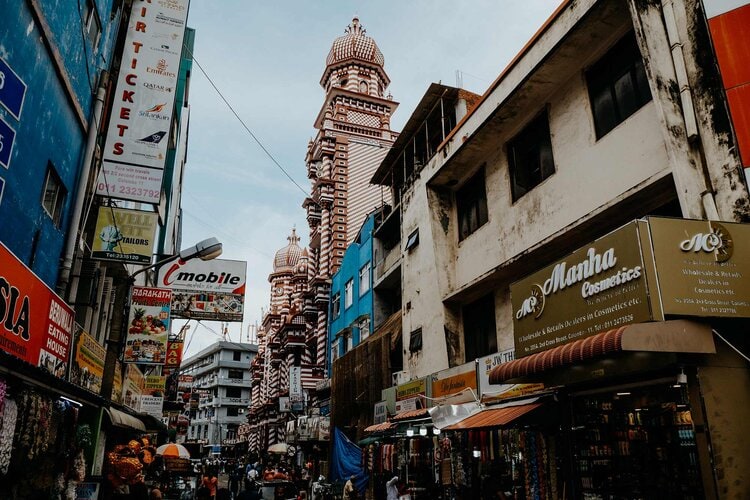


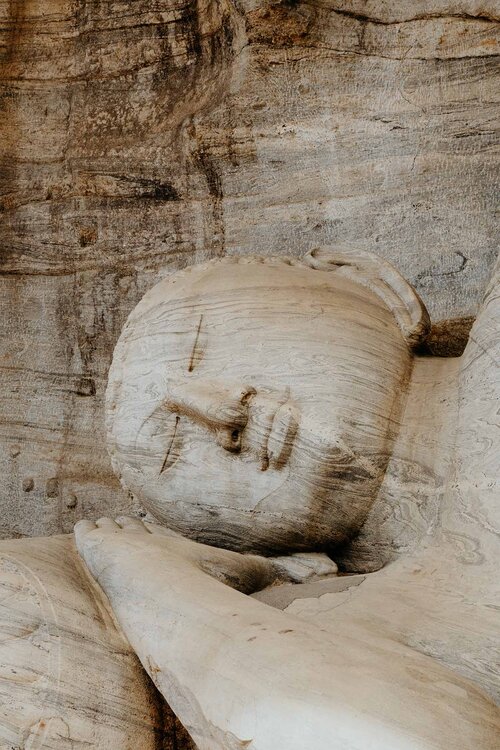
THE TRAVEL PHOTOGRAPHY GEAR THAT I USED IN SRI LANKA
—
As mentioned above, Sri Lanka is extremely photogenic. If you want to make the most of your travel photography while exploring Sri Lanka, I’d recommend investing in some serious photography gear.
If you like my photography, this is the gear that I used to document my photography story of Sri Lanka.
Lumix G85 | The Lumix G85 captures excellent photos and video – plus it doesn’t break the bank.
SIGMA 16mm, F1.4 | The SIGMA 16mm is well-known for its excellent depth of field and is one of the best budget prime lenses on the market.
DJI Mavic Air | The DJI Mavic Air is a brilliant drone that is compact and produces the most incredible aerial footage. In my opinion, the perfect combination to document travel photography.
PLAN YOUR SRI LANKA ITINERARY WITH THESE ESSENTIAL GUIDES
10 Awesome things to do in Unawatuna, Sri Lanka's backpacker beach town
Sri Lanka
10 Awesome things to do in Unawatuna, Sri Lanka's backpacker beach town
An essential guide to Unawatuna, Sri Lanka’s backpacker beach town, featuring the best things to do in Unawatuna, including Dalawella beach, a day trip to Galle and the iconic Stilt Fishermen.
Unawatuna has quickly become a fixture for travellers that visit Sri Lanka’s lively south coast, and after experiencing the laidback backpacker town myself, it’s easy to understand why.
The trendy town has no shortage of palm-fringed beaches, including Unawatuna beach, jungle beach and my personal favourite, Dalawella beach. Therefore it’s not surprising that Unawatuna is considered the most popular beach destination in Sri Lanka.
But it isn’t just the paradisiac beaches that make Unawatuna an essential stop in your Sri Lanka Itinerary.
No, the beach town has heaps of entertaining activities, a great amount of trendy cafes & restaurants, and makes the perfect base for a day trip to Galle.
It’s safe to say that Unawatuna has something that suits every travel taste, which makes it a great town to spend a couple of days in.
That being said, here’s my guide with the very best things to do in Unawatuna – plus essential travel tips that help you get the most out of your adventures.
If you choose to use any of the links on this page, I may receive a small commission at no extra cost to you. By using these links, you’ll have a direct impact on WTSW and my ability to continue to create free insightful travel content for you. If you find any of my tips useful, you can support me by buying a virtual coffee here.
The New Where the Souls Wander Print Store
After putting out my first-ever print collection in 2022, I decided it was finally time to re-open my print store, and I couldn’t be happier with the result.
Whether you’re looking to grab a unique piece for your own wall, gift one to a loved one to remind them of a memorable trip together, or simply get your hands on a piece because it provokes a specific memory or feeling, I’d be honoured and grateful if you decide to collect or gift one of my prints.
To celebrate the launch, I’m offering a 20% discount until the 24th of December.
Where to stay in Unawatuna
Unawatuna is one of the most popular beach destinations in Sri Lanka, which automatically comes with a great number of good accommodations.
Due to its popularity, it can be quite a challenge to find accommodation that matches your travel style, prices are also slightly higher than you’re used to in Sri Lanka.
If you’re planning to visit Unawatuna during the high season, I recommend booking your accommodation a couple of weeks in advance.
Some of the accommodations I recommend include:
Epic Unawatuna | A rustic hotel that is influenced by Dutch colonial architecture. Offers spacious rooms with air-conditioning and a comfortable bed – plus extremely friendly staff and at only a few steps away from Unawatuna beach.
Bedspace Beach | A cosy apartment almost directly at Unawatuna’s palm-fringed beach. Situated above the famous Skinny Tom’s Deli Cafe that serves the exceptional breakfast that’s included in the price of the room. For that reason alone, it’s one of the best picks along the coast of Unawatuna.
Levels Unawatuna | If you’re after a bit more luxury, Levels offers stunning views overlooking Galle Bay, classic Sri Lankan-style rooms, and a great swimming pool. It’s also located only a stone’s throw from Unawatuna’s secluded Jungle beach.
Kingfisher Unawatuna | An attractive beachfront hotel that offers spacious air-conditioned rooms, large comfortable beds and a quiet stretch of beach that is excellent for swimming. Kingfisher also has a great in-house restaurant that serves top-notch seafood.
Alternatively, search for accommodation in Unawatuna on booking.com.
10 Incredible things to do in Unawatuna, Sri Lanka
1. Visit Dalawella Beach
Just south of Unawatuna’s bustling main beach lies Dalawella Beach, one of my favourite beaches and probably the most famous and picturesque stretch of beach you’ll find in Sri Lanka.
With an incredible scenic rock formation, a thrilling beach swing, and an abundance of low-bending palm trees, Dalawella Beach has become a picture-perfect hotspot in Sri Lanka.
If you’re into serious photography, it’s best to visit the palm swing early morning or during sunset. It is quite busy here all day, especially after it went viral on Instagram.
The palm tree swing is located at the Dream Cabana guesthouse and costs 500 LKR ($2.75) for 3-5 rope swings.
While it isn’t just the trendy palm tree swing that makes Dalawella Beach so popular, it is quite entertaining and surely one of the best things to do in Unawatuna.
Besides these trendy points of interest, Dalawella Beach is fairly quiet compared to Unawatuna Beach making it perfect for an early morning stroll, a refreshing dive and an afternoon of sunbathing.
Where | Dalawella Beach, Unawatuna
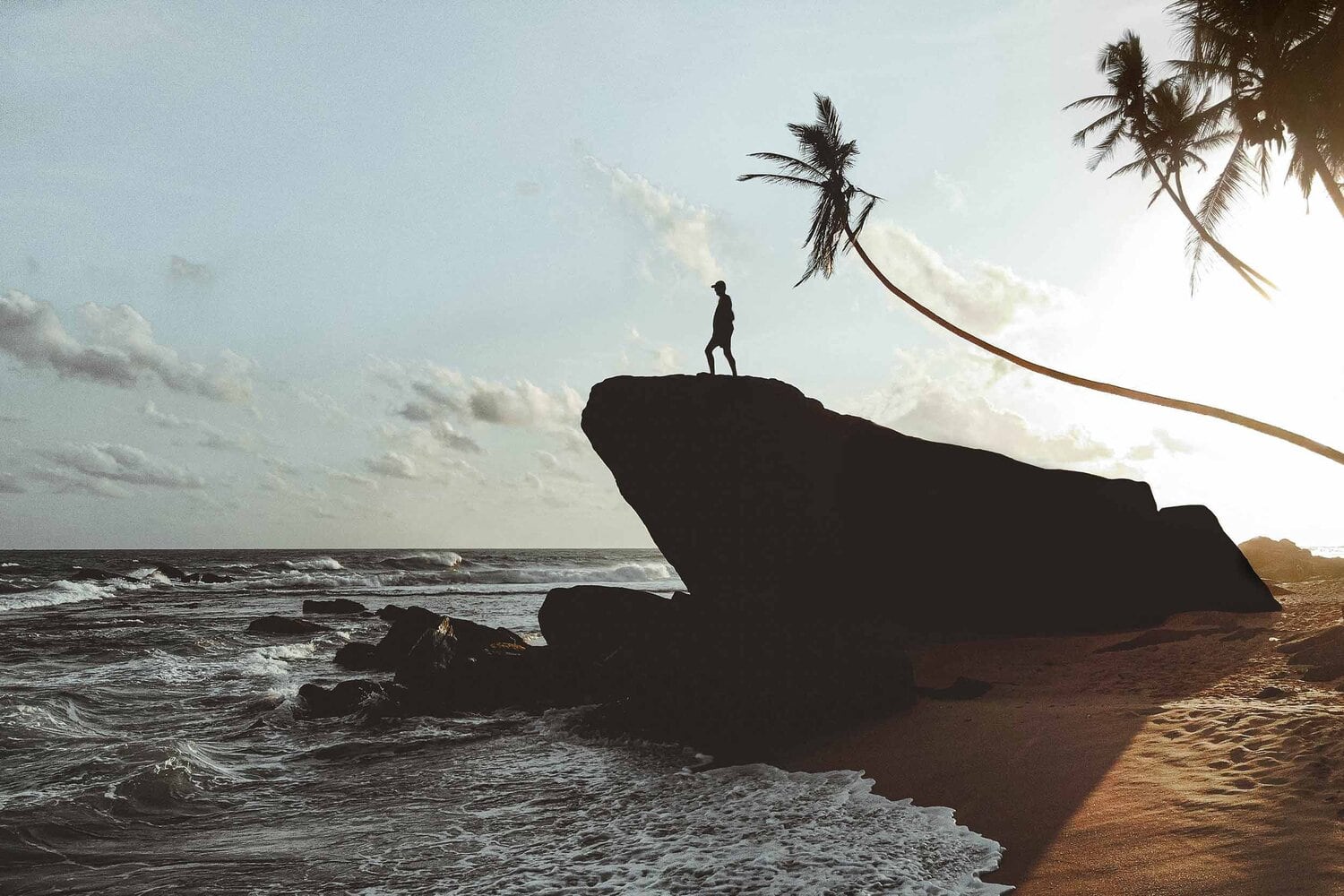
2. Learn to surf in Unawatuna
Although Unawatuna isn’t my favourite place to surf on Sri Lanka’s vibrant south coast, there is a beach that offers excellent waves for beginners who wish to learn the basics.
Bona Vista Bay is a small beginner-friendly beach that is located between Unawatuna and Galle. On both the beach and in the town, you’ll find surf schools that provide great instructors and board rentals.
Anyhow, if you’re eager to catch the best possible waves while in Sri Lanka, I deeply recommend heading towards Hikkaduwa, Mirissa (Weligama), or Arugam Bay. These coastal towns are considered some of the best surfing destinations on the island, and that’s for a good reason.
Where | Bona Vista Bay, Unawatuna
Surf lesson | 2.000 – 3.000 LKR, ($11 – 16) per hour
Board rental | 300 – 500 LKR, ($1.65 – 2.75) per hour
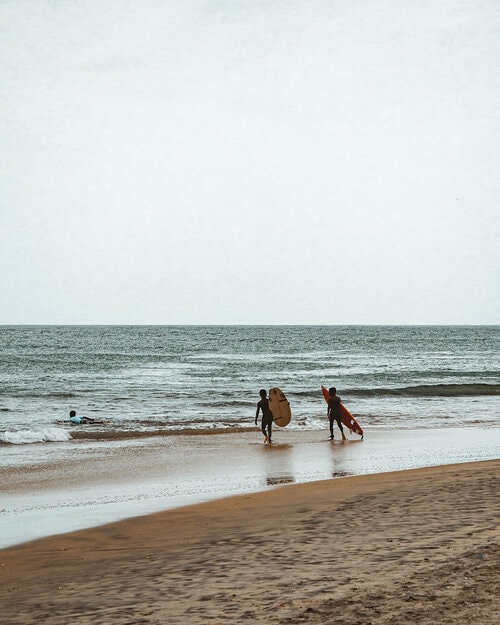
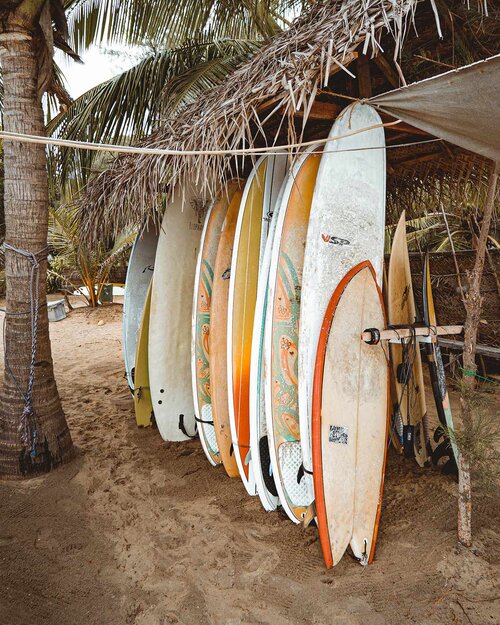
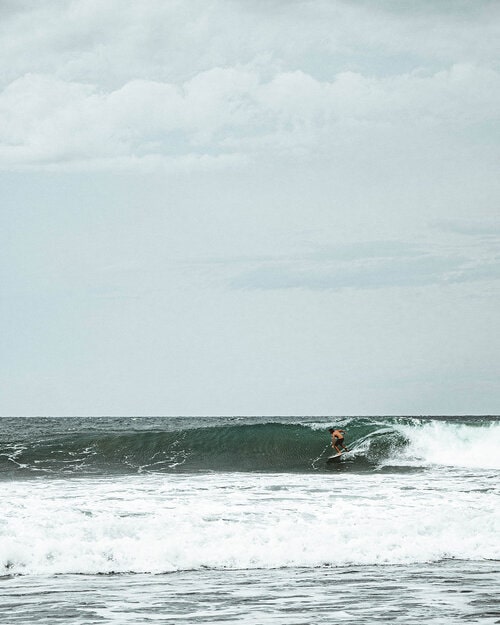
3. Admire the views from the Japanese Peace Pagoda
Established in a verdant forest above Unawatuna’s secluded jungle beach lies the Japanese Peace Pagoda, a round stupa that serves as a beacon of peace for people all over the world.
The Pagoda was built by the Japanese Mahayana Sect monks with the intention to unite people of all cultures and religions, and the minimal design radiates this in an elegant way.
Since it’s perched on the top of Rumasalla Hill, the views over Galle Bay and the Historic Galle Fort are simply amazing. For that reason, it has become one of the best things to do in Unawatuna, especially if you visit during sunset.
As always, keep in mind to visit the pagoda in a respectful manner and adhere to the religious customs.
Where | Japanese Peace Pagoda
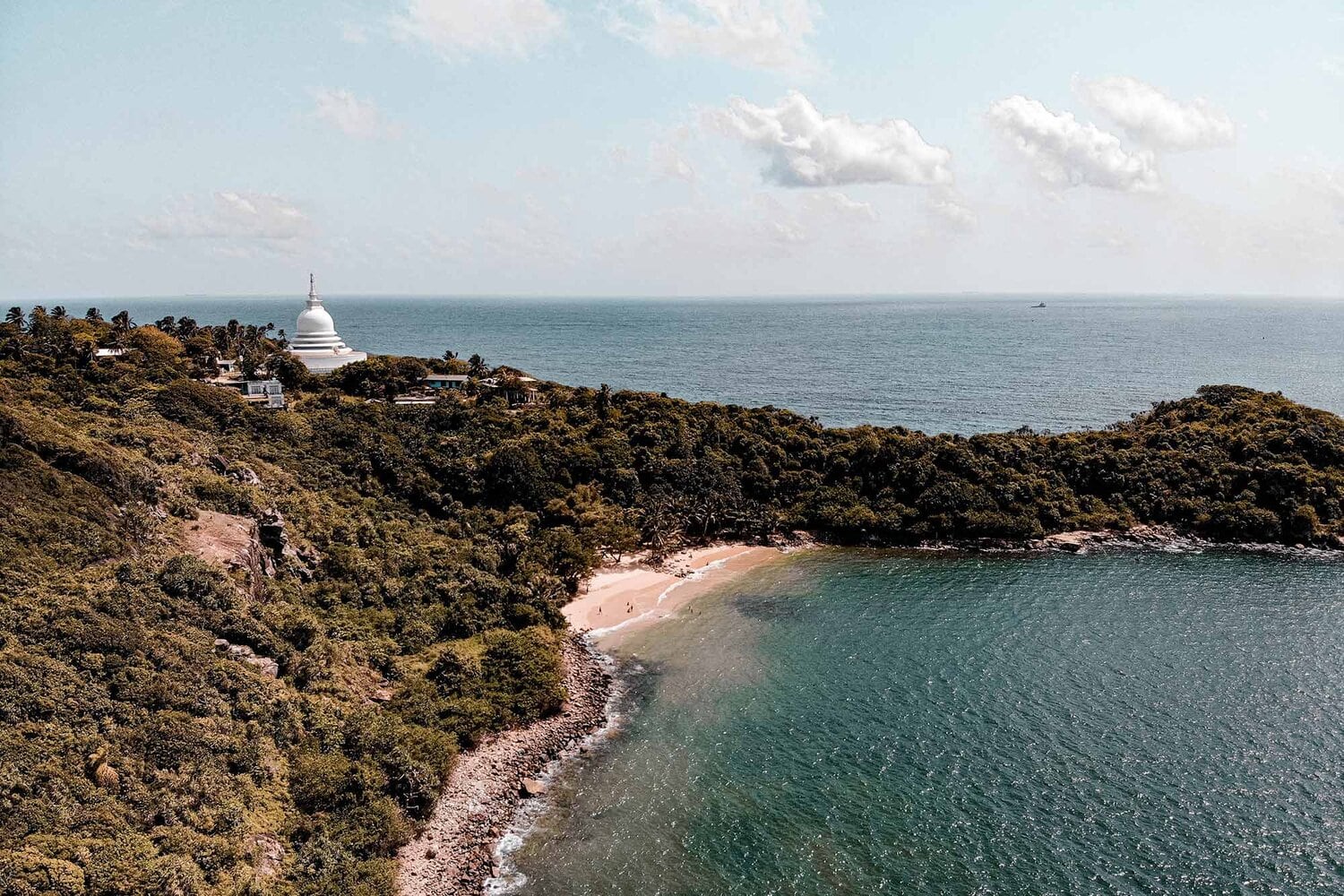
4. Have brunch at Skinny Tom’s Deli
Let me get straight to it, Skinny Tom’s serves the best brunch in town.
The European-style café has a great reputation on Sri Lanka’s southern coast, which makes perfect sense given the excellent variety of Sri Lankan and international brunch options.
Dishes that are definitely worth trying include their life-changing bacon, dhal & egg hoppers, fresh eggs benedict toast, and if you have a sweet tooth, don’t forget to give their artisanal cake and dessert options a try.
They also serve exceptional coffee, fresh-pressed juices and handcrafted sodas, which are all too yummy to miss out on.
Skinny Tom’s Deli has a high reputation in Unawatuna, and I think you should visit at least once. If that’s the case, it’s almost inevitable that you’ll visit again.
Where | Skinny Tom’s Deli
Opening Hours | Daily 07:30 – 15:30
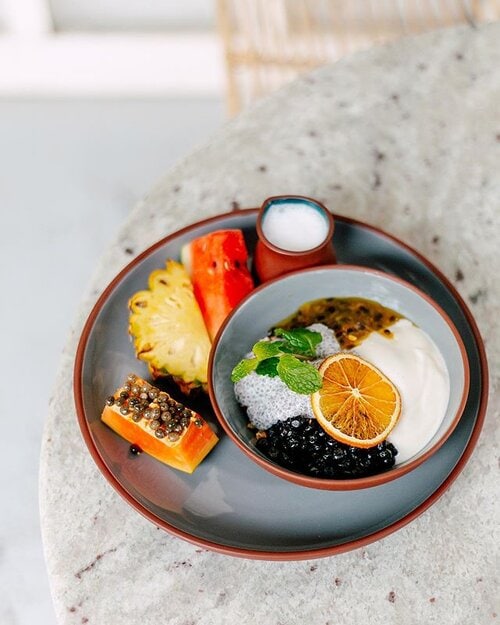

5. Chill and relax at Jungle Beach
Slightly off the beaten path lies Jungle Beach, a secluded stretch of beach that is considerably quiet compared to Unawatuna’s lively main beach.
When I heard of Jungle Beach from a fellow traveller, the beach immediately piqued my interest, and once I arrived in Unawatuna I decided to give it a visit.
After a 30-minute hike through the jungle, I set foot on Jungle Beach’s first beach, which was surprisingly crowded. And so I quickly realised that the ‘hidden’ beach had become extremely popular with both tourists and locals alike.
There is however a second more tucked-away beach, which is still pretty quiet and characterized by a charming tropical ambience. This one is also home to a small beach bar and is perfect for an afternoon of swimming and relaxing.
While Jungle Beach is pretty similar to Secret Beach in Mirissa, it’s definitely worth a visit when you’re in Unawatuna.
Where | Jungle Beach Unawatuna
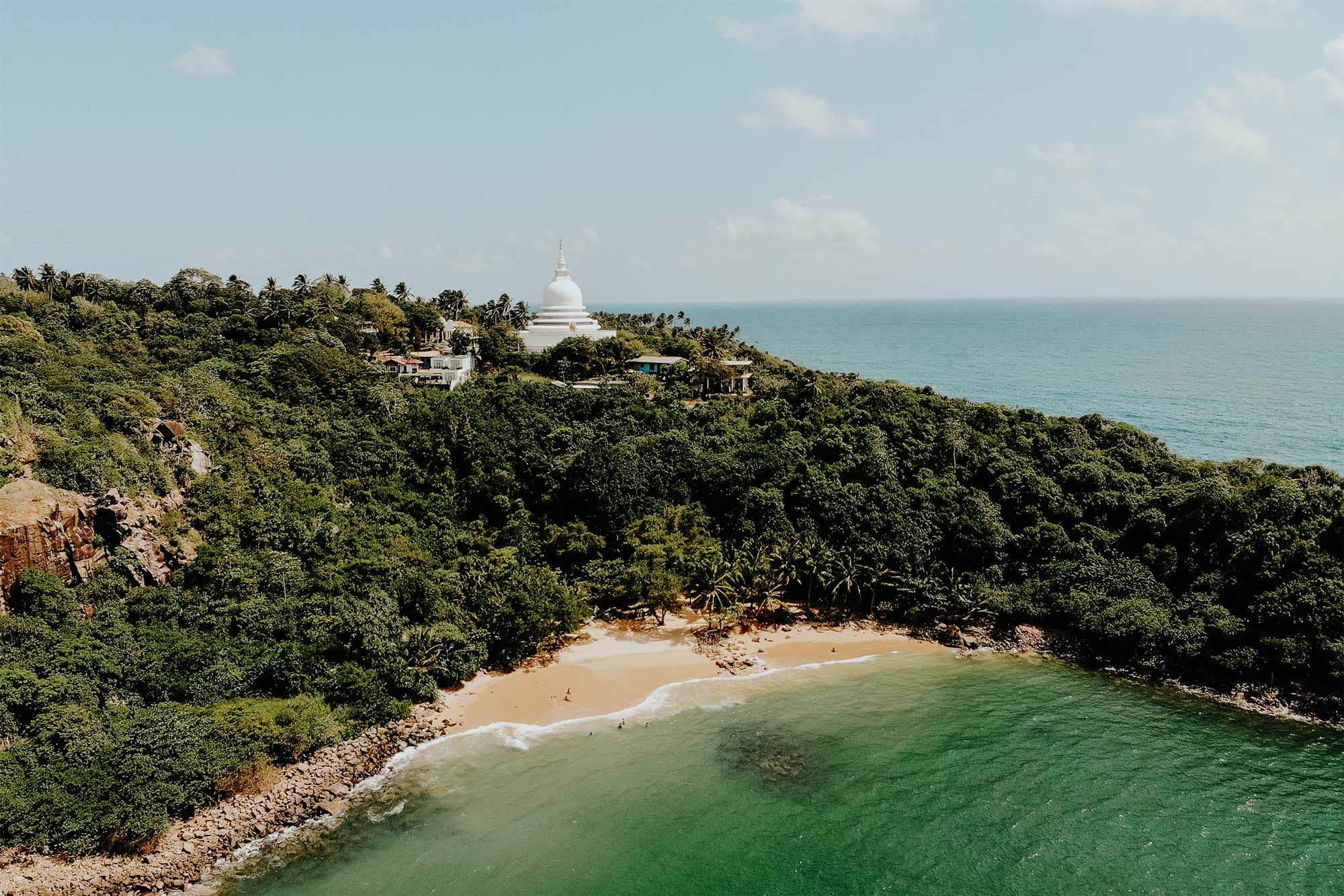
6. Do a day trip to Galle Fort
Perched on the cliffs of Sri Lanka’s spirited south coast, is the historic Galle Fort.
Galle Fort is a UNESCO World Heritage Site constructed by the Dutch in 1663, and taking a stroll along the narrow, authentic streets evokes the feeling of being in the VOC era.
The charm that defines the Galle Fort area today is realized by crumbling Dutch colonial buildings, trendy contemporary cafés, and an inviting, tropical atmosphere.
The historical fort area houses a bunch of breathtaking points of interest; the famous Galle Lighthouse, the Dutch Reformed Church, the subliminal interior, and the fort’s firm outer ramparts, just to mention a few.
The Galle Fort has an incredibly rich history, and if you ask me, it’s one of the things that shouldn’t be missed in your Sri Lanka itinerary. Galle makes a perfect day trip for those who are keen to explore the Fort.
Where | Galle Fort
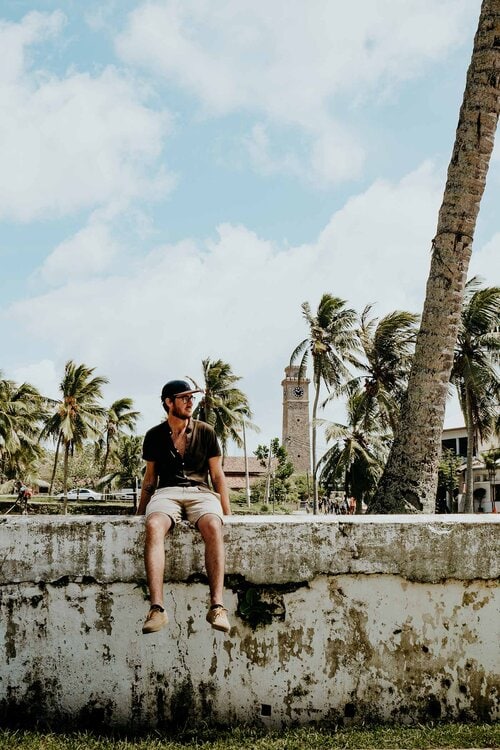
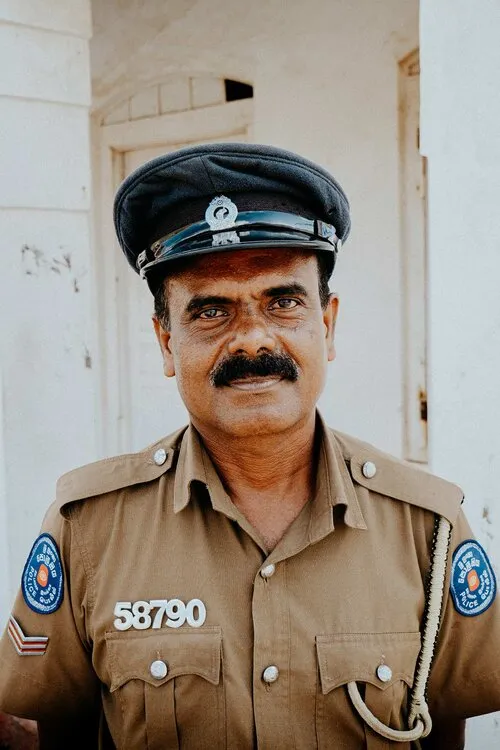
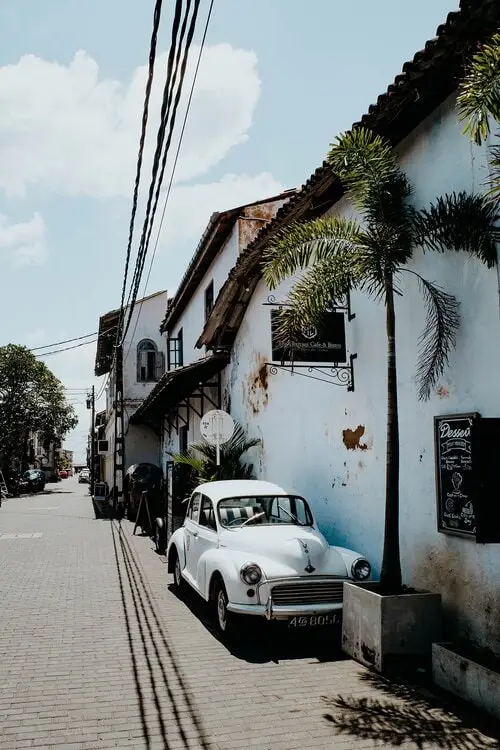
7. Visit the sea turtle hatchery in Habaraduwa
Sri Lanka is known as the habitat of five distinct species of sea turtles, including Loggerhead, Olive Ridley, Green, Hawksbill, and Leatherhead turtles.
Although turtle hatcheries often have a bad reputation, the sea turtle hatchery in Habaraduwa looked as if they genuinely cared about the conservation of turtles.
The Habaraduwa Turtle Hatchery is a non-profit organisation that focuses on the conservation and protection of turtles that are endangered by extinction.
The caring people at the hatchery do their utmost to rescue and care for injured turtles, while also buying eggs from poachers to hatch and protect them from any danger.
After hatching, the baby turtles are supposed to be released in the ocean within four days, which creates the possibility for travellers to release one, which is an amazing experience.
Although we never know for sure, it seems that the sea turtle hatchery in Habaraduwa is a responsible and ethical organisation.
In the end, it’s up to you if you choose to visit a turtle hatchery in Sri Lanka.
Where | Sea Turtle Hatchery Habaraduwa
Cost | 500 LKR, ($2.75) entrance fee per person
Opening hours | Daily 07:30 – 18:00
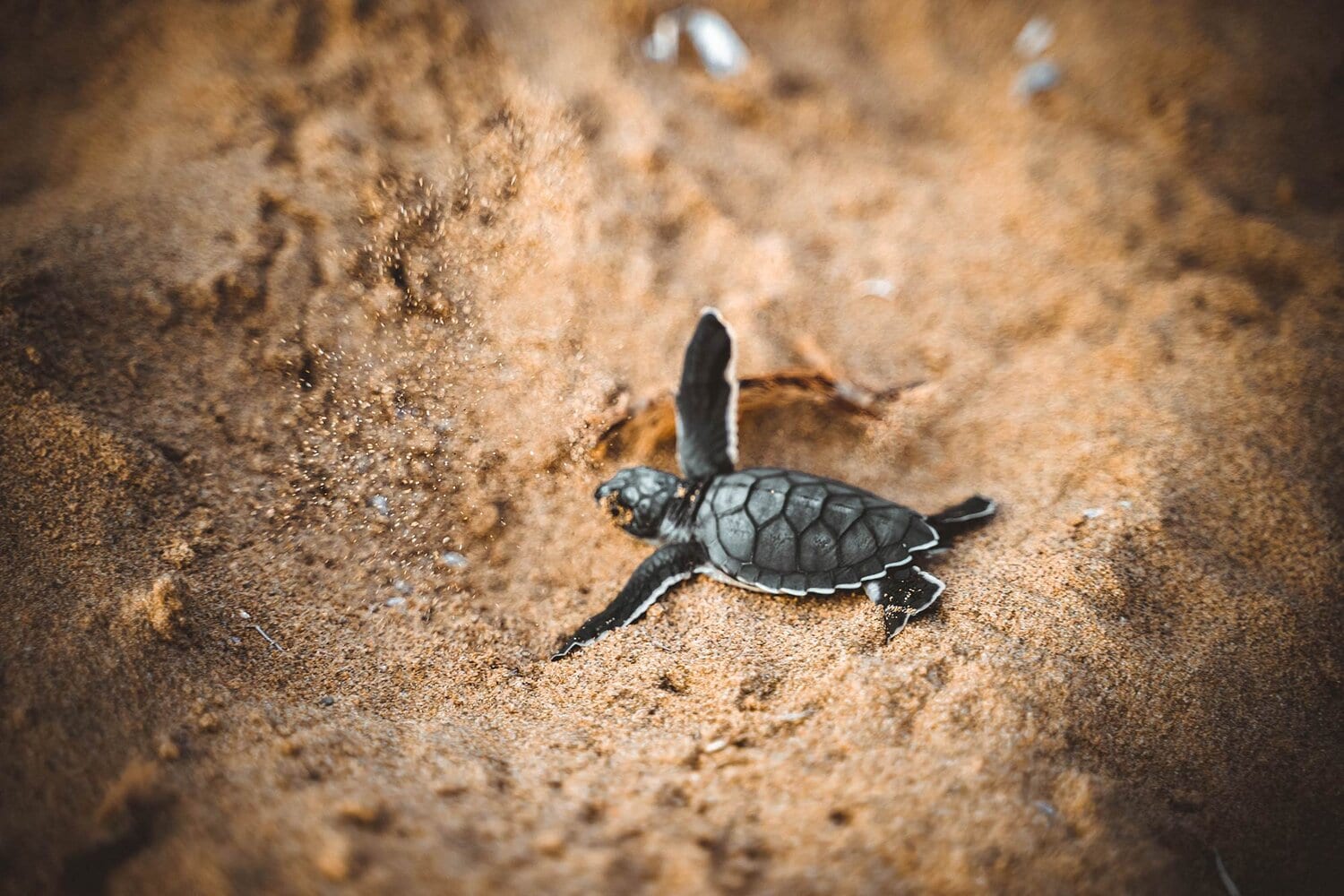
8. Swim and unwind at Unawatuna Beach
Unawatuna Beach is one of the most popular beaches in Sri Lanka, and therefore favourite among locals and travellers alike.
Despite the fact that it is quite popular, the wide-stretched beach is still perfect for an afternoon of swimming, relaxing and sunset drinks.
The beach at Unawatuna offers a handful of spots that are great for swimming and a large stretch of the beach houses vibrant beach bars that provide sunbeds that are up for rent.
Since the beach connects perfectly with the vibrant main street of Unawatuna, it houses many trendy restaurants and bars, which ensures a laidback backpacker vibe throughout the entire town.
If being idle isn’t for you, take a relaxing walk to the Pagoda up north, which provides a stunning view over Unawatuna’s golden sanded coastline.
Where | Unawatuna Beach
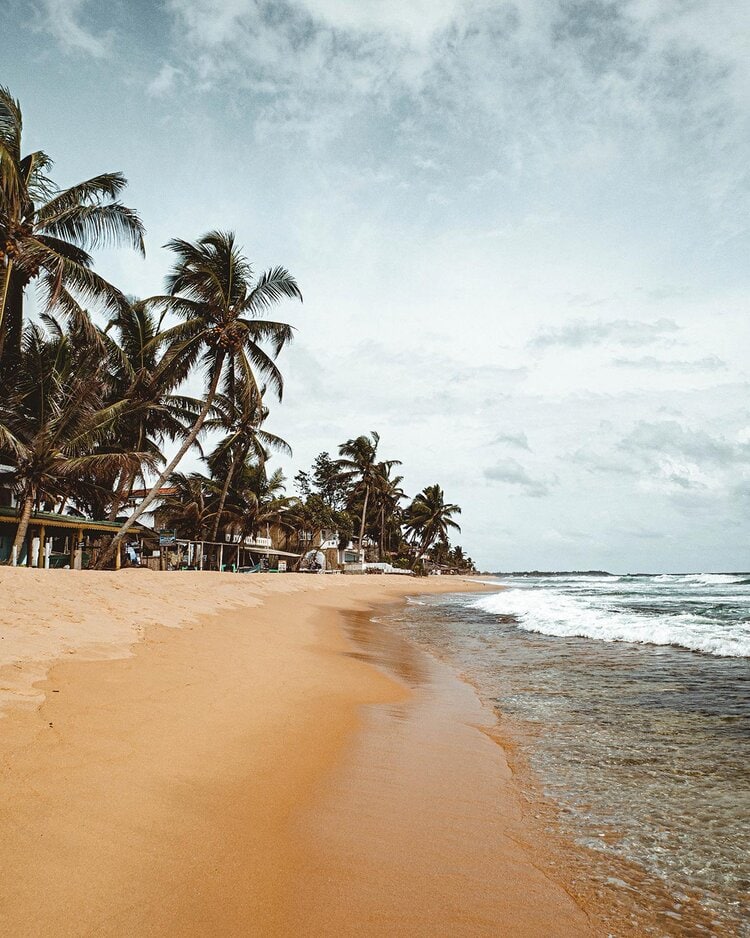
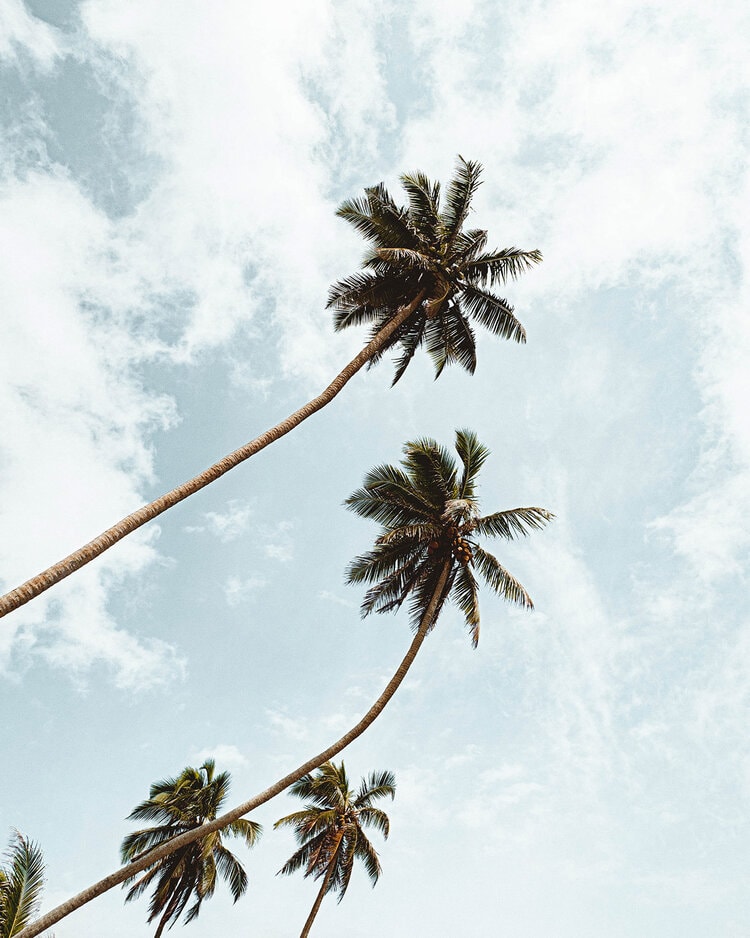
9. Have dinner at Bedspace Kitchen
Tucked away in an elegant garden of calm at only a stone’s throw away from Unawatuna’s lively main road lies Bedspace Kitchen, a trendy fusion restaurant that serves the most excellent local and western dishes.
Their menu consists of a wide variety of top-notch dishes, including black pork curry, coconut lemon-grass soup, the Bedspace burger (which was extremely yummy), and pumpkin gnocchi, to mention a few.
But what appealed to me even more, was the fact that most of the used ingredients at Bedspace are organic and local produce, which is directly related to the help and support of the local community.
Although the food is slightly higher priced than elsewhere in Sri Lanka, Bedspace won’t disappoint and it’s definitely worth the splurge.
That said, it is wise to book ahead, as it is a wildly popular eatery.
Where | Bedspace Kitchen
Opening Hours | Daily 12:00 – 16:00 and 18:00 – 22:00
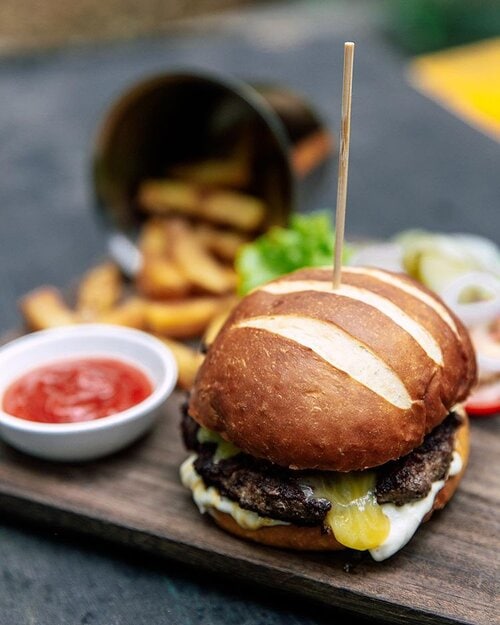
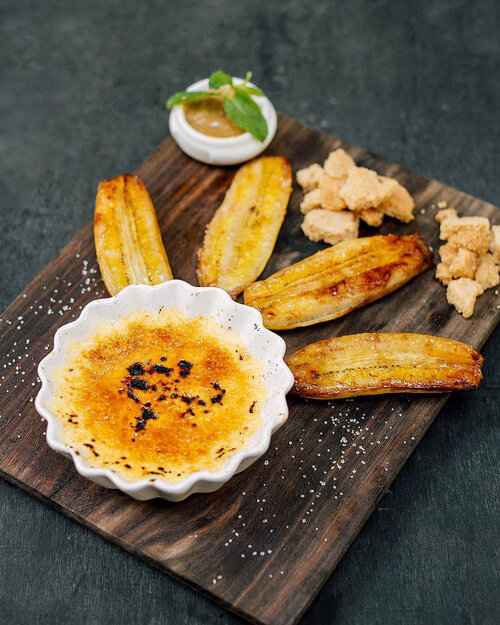
10. Admire the iconic stilt fishermen in Koggala
Stilt fishing is an iconic phenomenon, occurring just about everywhere along Sri Lanka’s entire southern coastline.
These groups of traditional fishermen sit far from the shore atop a creatively composed seat made of a pole, branches and twine, waiting to reel in their catch of the day.
Even though the stilt fishermen make it look effortless, it requires a great amount of skill, balance and most importantly, patience.
Unfortunately, the tradition slowly fades away, with the sad knowledge that it may well entirely disappear in the near future.
After the tsunami that hit Sri Lanka in 2004, much of the coastline has been irreparably harmed, which largely reduced the possibility of executing this authentic fishing technique.
As a result, many authentic stilt fishermen rent their stilts to men who pose as fishermen, with the goal of earning a living as a tourist attraction, which makes perfect sense if you ask me.
This traditional, yet extraordinary fishing technique is a tremendous element in Sri Lanka’s rich culture, and for that reason, not to be missed.
Where | Stilt Fisherman in Koggala
Cost | 500 LKR, ($2.75) per person
When | Daily 05:30 – 19:30
How to get there | Only 10 minutes north of Unawatuna and hard to miss if you take a scooter or tuk-tuk ride along the coastline of Unawatuna and Mirissa.
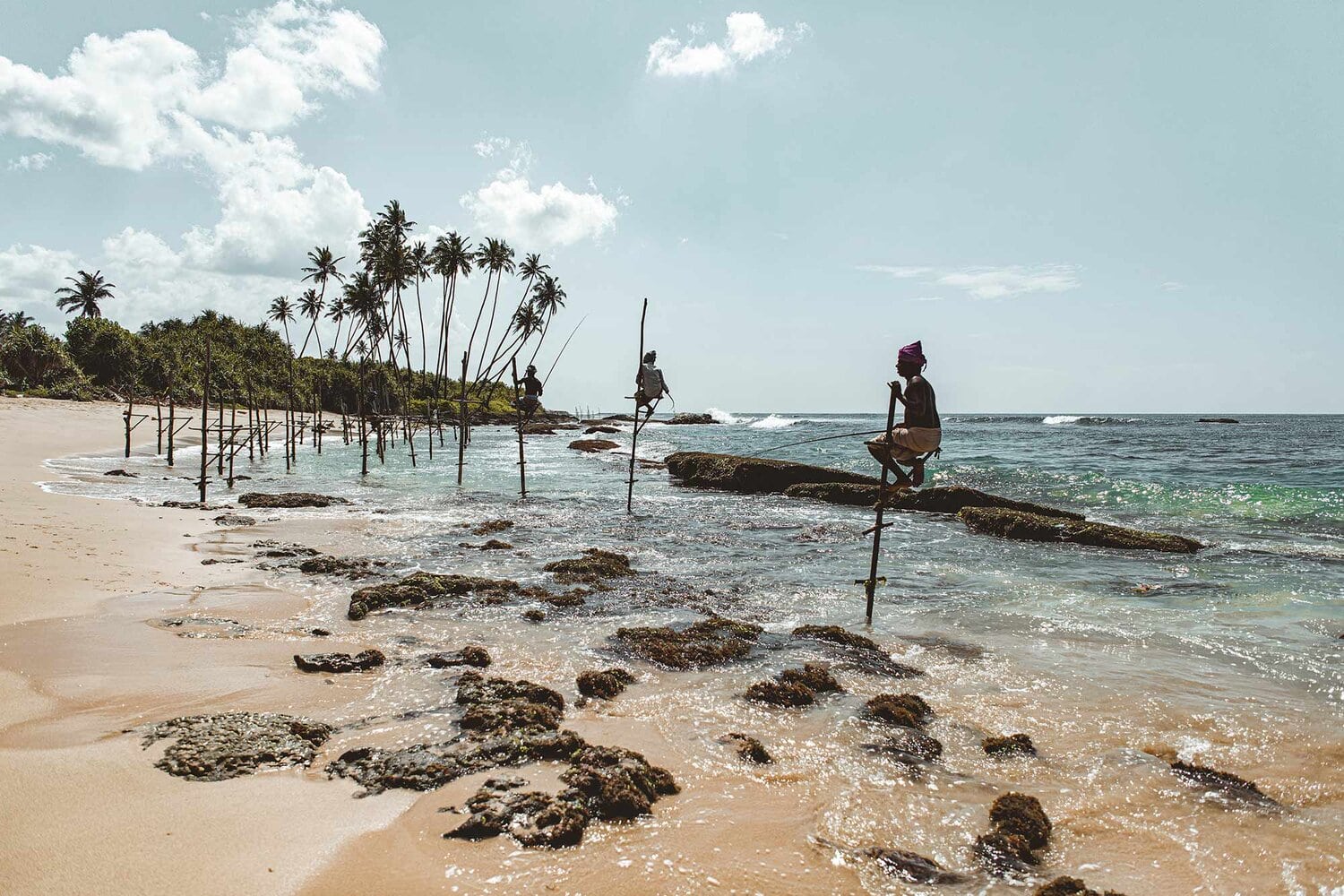
Things to do in Unawatuna | The essentials
The best time to visit Unawatuna
The best time to visit Unawatuna is from October to April with February – April as its absolute peak months. Unawatuna is significantly crowded during this period though, which makes great sense given the excellent circumstances to explore the town’s beautiful surroundings.
Even though Unawatuna has great weather year-round, it is completely common to experience more rainfall during the southwest monsoon that runs from May to September.
How to get to Unawatuna
By train
The train journey along Sri Lanka’s beautiful coastline is the most scenic (and the best) way to reach Unawatuna, especially if you’re planning to visit after Colombo, Hikkaduwa or Mirissa (Weligama Railway Station).
With an excellent train connection between Colombo Fort and Matara (which operates frequently), it’s quite straightforward. Just make sure to get off at the Galle train station, where it’s easy to take a local bus or tuk-tuk to Unawatuna, which costs you around 320 LKR ($1.70).
From Colombo to Galle | Cost 200 – 280 LKR, ($1.10 – 1.54) | Travel time +/- 3 hours
From Hikkaduwa to Galle | Cost 120 – 200 LKR, ($0.66 – 1.10) | Travel time +/- 30 minutes
From Weligama to Galle | Cost 110 – 160 LKR, ($0.60 – 0.88) | Travel time +/- 45 minutes
By bus
Unawatuna is situated on Sri Lanka’s vibrant south coast only 15 minutes away from the well-known Galle Fort. If you’re looking to visit Unawatuna after Hikkaduwa, Galle or Mirissa I highly recommend travelling by local bus.
Using local busses as your service of transport is very affordable and a great way to get a feel for the country and its people.
Local bus | From Hikkaduwa, Galle or Mirissa
Cost | Around 50 LKR, ($0.30) per person
Local bus from Colombo to Galle | For travellers on a budget, it’s also possible to take the local bus from Colombo to Unawatuna. This journey requires changing buses in Galle and takes significantly longer, making it quite exhausting.
Where | Bastian Mawatha Bus Station
Cost | 100 LKR, ($0.55) per person
When | Departs every 20 minutes
Travel time | Around 3.30 hours
Direct bus from Colombo to Galle | If you’re travelling from Colombo I recommend taking the train or opt for the more luxurious direct bus from Colombo to Galle (with air-conditioning) that leaves the Maharagama bus station. Keep in mind that this bus station is about 15 kilometres south of the city centre, making it quite difficult to get to during peak hours.
Where | Maharagama Bus Station
Cost | 400 LKR, ($2.20) per person
When | Departs every 15 minutes
Travel time | Around 1.45 hours
Stay safe in Sri Lanka | Travel insurance
Though Sri Lanka is perfectly safe for travellers, I always strive to sort out my travel insurance before arriving in a foreign country, and I highly advise anyone else to do the same.
Where we prefer that everything goes smoothly during our travels, something unfortunate can happen at any moment, whether it’s an injury or an accident on the road. When that happens, it is better to be safe than sorry.
Heymondo | Whether you’re going on a 3-week backpacking trip, or planning a long stay somewhere abroad, Heymondo has excellent insurance options either way – plus full COVID-19 coverage and a handy app with 24-hour medical assistance. Readers of WTSW receive 5% off any insurance policy, more information here.
Cheers!
I’ve been on this travel blogging journey since 2019.
If you appreciate what I do here, these are some ways you can support me.

Plan your Sri Lanka itinerary with these essential guides
8 Marvelous things to do in Mirissa, Sri Lanka's vibrant beach town
Sri Lanka
8 Marvelous things to do in Mirissa, Sri Lanka's vibrant beach town
Here’s my traveller’s guide to Mirissa, Sri Lanka’s vibrant beach town, featuring my favourite things to do, including the Coconut tree hill, Secret beach and a few dope surf spots – plus insightful travel essentials.
Mirissa is one of the most popular beach towns on Sri Lanka’s vibrant south coast and, in my opinion, an essential stop on any trip through Sri Lanka.
The lively town has everything a traveller desires, from Whale watching tours to surf lessons, and from trendy cafes to secluded stretches of beach.
Even though Mirissa is developing at a high pace (which brings more travellers), it is still one of my favourite beach destinations down south. This is mainly due to its laidback backpacker vibe and the many interesting things to see and do.
Here’s my detailed traveller’s guide to Mirissa, featuring everything you need – plus insightful travel tips, including where to eat and how to get to Mirissa.
If you choose to use any of the links on this page, I may receive a small commission at no extra cost to you. By using these links, you’ll have a direct impact on WTSW and my ability to continue to create free insightful travel content for you. If you find any of my tips useful, you can support me by buying a virtual coffee here.
The New Where the Souls Wander Print Store
After putting out my first-ever print collection in 2022, I decided it was finally time to re-open my print store, and I couldn’t be happier with the result.
Whether you’re looking to grab a unique piece for your own wall, gift one to a loved one to remind them of a memorable trip together, or simply get your hands on a piece because it provokes a specific memory or feeling, I’d be honoured and grateful if you decide to collect or gift one of my prints.
To celebrate the launch, I’m offering a 20% discount until the 24th of December.
Where to stay in Mirissa
Mirissa has no shortage of good accommodations, with options that suit every budget.
It can, however, be quite a challenge to find accommodation that fits your travel style during high season and therefore I recommend booking your stay a couple of weeks in advance.
Some of the hotels I recommend include:
Handagedara Colonial Villa | Beautifully decorated rooms, air-conditioning, a fantastic swimming pool and only a stone’s throw away from Mirissa beach. More information and availability here.
Satori Beach Hostel | One of the best beachfront hostels in Mirissa. Offers dorms, double rooms, and yoga sessions on the roof. More information and availability here.
Triple O Six | If you’re after a bit more luxury, Triple O Six offers elegant rooms, a swimming pool and the most friendly staff. It’s also located only a few steps from the famous Coconut Tree Hill. More information and availability here.
Mirissa Heights | The perfect option for a budget traveller who wants to stay close to the beach. Clean air-conditioned rooms, a comfortable bed and a good Quality-Price-Ratio. More information and availability here.
Alternatively, search for accommodations in Mirissa on booking.com.
8 Marvelous things to do in Mirissa, Sri Lanka
1. Admire Coconut Tree Hill, Mirissa
When it comes to iconic things to see and do in Sri Lanka, it will be the Coconut Tree Hill in Mirissa that appears on your radar, and that’s for a good reason.
Coconut Tree Hill is a charming cliff that is characterized by a sea of swaying palms, jutting out of the elegant tangerine-coloured soil.
To reach the foot of the picturesque hill, take a serene 15-minute walk along Mirissa Beach before ascending to the amazing viewpoint at the top.
As it’s perched at the very end of Mirissa Beach, the views over the shimmering Indian Ocean and Mirissa’s stretched shoreline are simply breathtaking.
To experience the iconic hill in its full potential, it is highly recommended to visit first thing in the morning or during a glorious sunset.
Even though it’s quite overrun by tourists, it’s still hands down one of my favourite places in Sri Lanka.
Where | Coconut Tree Hill, Mirissa
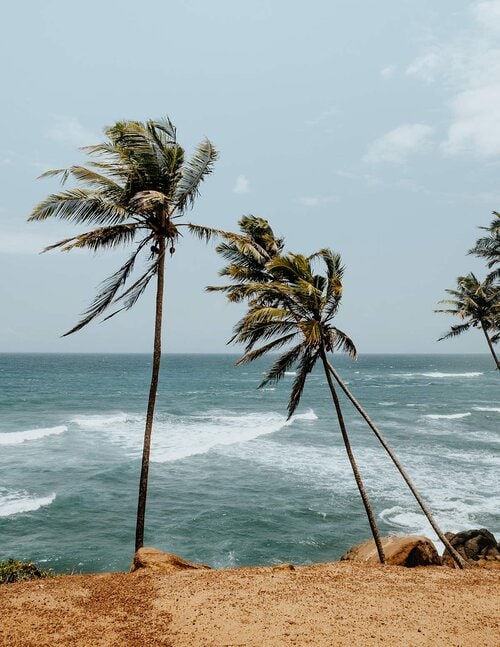
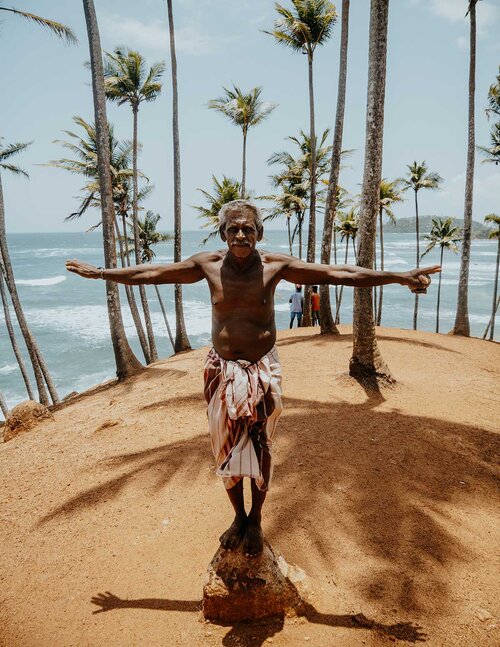
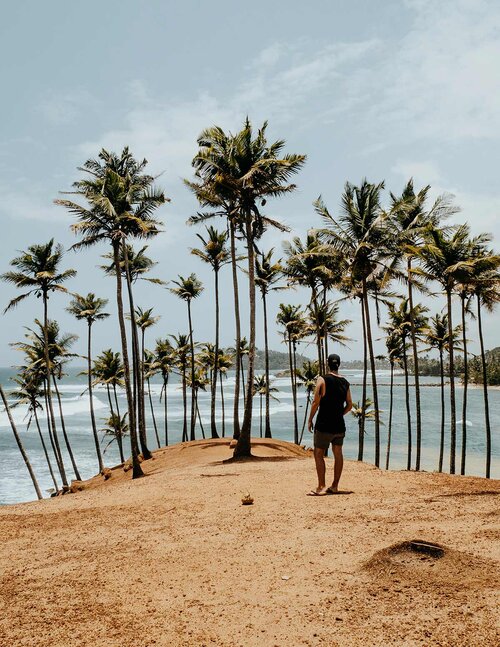
2. Chill at Secret Beach
Secret Beach is a small secluded beach where jungle and sea blend together in a paradisiac manner, only just around the corner of Mirissa’s lively main beach.
After a local had praised it as one of the best things to do in Mirissa, I decided to go and see it with my own eyes.
What awaited was a picturesque golden sand beach with perfectly aligned palm trees and only a few people there to enjoy it, which slightly reminded me of Jungle Beach in Unawatuna.
A welcome addition to the hidden beach is a small beach bar, which makes Secret Beach the perfect place for an afternoon of sunbathing, swimming and eventually a sundowner.
While Secret Beach isn’t as secret as the name might suggest, it’s notably more peaceful than Mirissa Beach, and therefore definitely worthy of your visit.
Where | Secret Beach, Mirissa
How to get to Secret Beach | Grab a short tuk-tuk ride from Mirissa Beach, followed by a 200-metre hike to the entrance of Mirissa’s secluded stretch of beach.
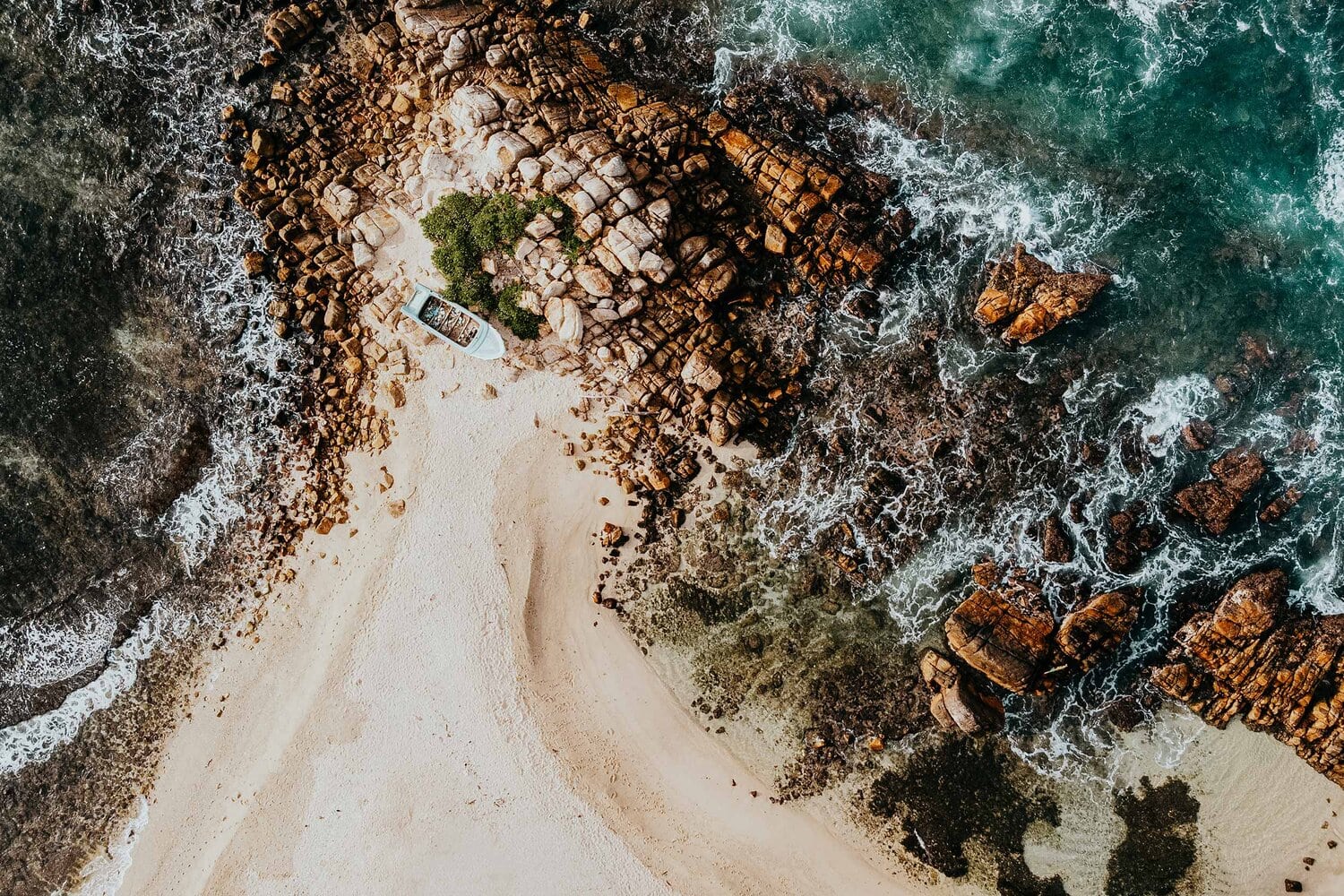
3. Have brunch at Aloha Coffee Gallery
Located just a stone’s throw from Mirissa’s lively main street, Aloha Coffee Gallery is a trendy cafe that’s excellent for healthy breakfast, brunch and coffee breaks.
For those who like to indulge in fresh, nourishing and contemporary food, look no further, you just found yourself a new happy place along the palm-fringed shores of Mirissa.
Eating here feels like the perfect treat, as Aloha serves delicious smashed avocado toast (ask for their local one), nutritious smoothie bowls and lovely chia puddings. Not to mention the coffee they made for me, which was unquestionably the best I’ve had in Sri Lanka.
For me, Aloha easily was one of my greatest finds down south. The artistic interior, relaxing ambience, and excellent wifi make it an excellent workspace for digital nomads.
Aloha Coffee Gallery also puts a significant focus on sustainability, mitigating plastic waste, and the help of Sri Lanka’s stray dogs, which I deeply admire.
Where | Aloha Coffee Gallery
Opening hours | Monday to Saturday 09:00 – 15:00, Sunday closed


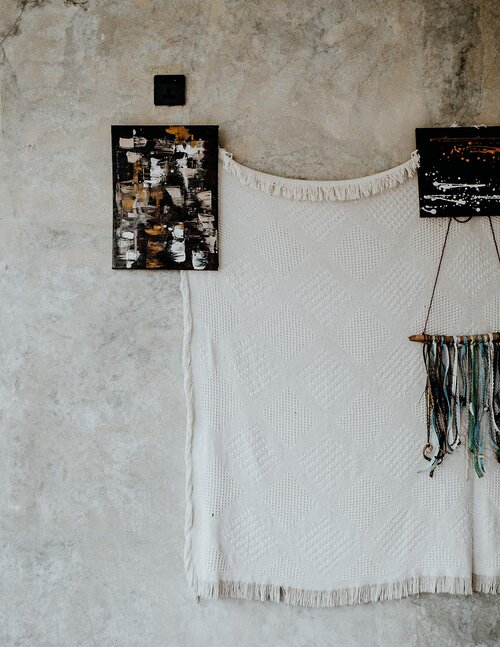
4. Learn to surf at Weligama Beach
Mirissa is easily one of the leading surf destinations on Sri Lanka’s spirited south coast, and therefore perfect for beginners, intermediate and advanced surfers.
With decent waves rolling in year-round, a handful of excellent surf spots, and plenty of surf schools to choose from, Mirissa sounded like the perfect place for me to learn to surf.
If you’re a beginner like me, it is the Weligama Beach Break where you want to start your exciting new surf journey.
The two-kilometre long crescent-shaped bay is home to several excellent surfing schools, which provide lessons and board rental – plus the waves that break here, are commonly easy to learn on.
If you’re more advanced, head over to Mirissa beach, where you’ll encounter challenging left and right-handers. Do keep in mind that this break is mostly for intermediate and advanced surfers.
No matter what bay you plan to go, from my experience, it is best to surf first thing in the morning, as the waves can get pretty busy throughout the day.
Where | Beginners om Weligama Beach, intermediate and advanced om Mirissa Beach
A 1-hour lesson | 2.000 – 3.000 LKR, ($11 – 16)
Board rental | 300 – 500 LKR, ($1.65 – 2.75) per hour
Surfing season in Mirissa | Although the waves tend to be good year-round, the surf season in Sri Lanka moves from coast to coast. The season on the south coast runs from November to May, while the season on the east coast runs from April to October.
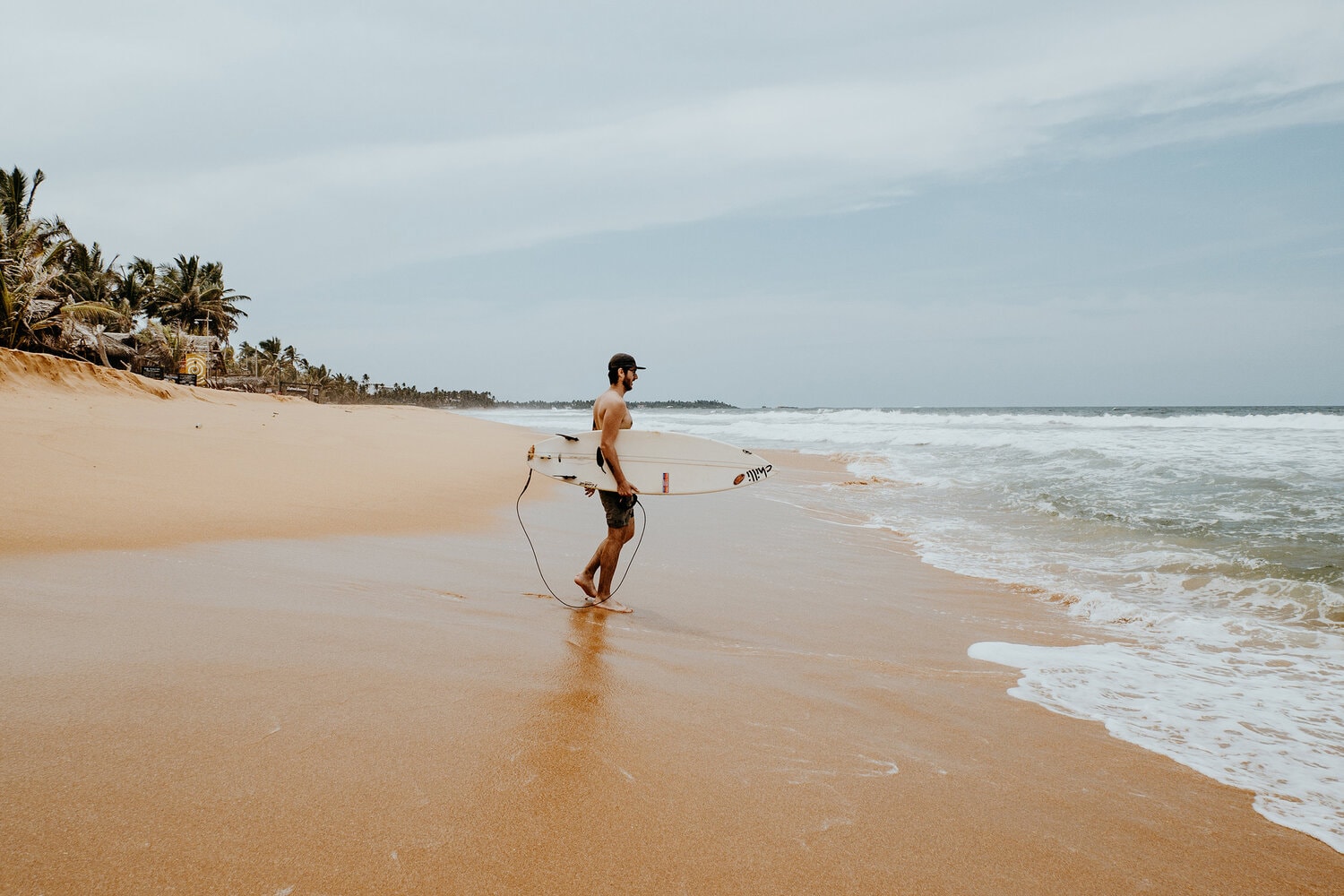
5. Admire the views from Parrot Rock
Set right on Mirissa Beach, Parrot Rock is a small secluded rock island that provides the most dazzling views of Mirissa’s entire golden sanded shoreline.
The viewpoint at the summit is the quiet getaway you desired, and that is just 5-minutes away from Mirissa’s beloved main beach. Parrot Rock is the perfect place to sit and watch the world go by, especially during golden hour when the sun gently drops below the horizon.
However, climbing to Parrot Rock’s viewpoint is quite an adventure at times.
To reach the foot of the island’s somewhat sketchy staircase, you’ll have to take a short walk through the water, which can be fairly rough and about knee-deep during high tide.
Even though climbing Parrot Rock is one of the best things to do in Mirissa, bear in mind to be careful of yourself and your belongings.
Where | Parrot Rock, Mirissa
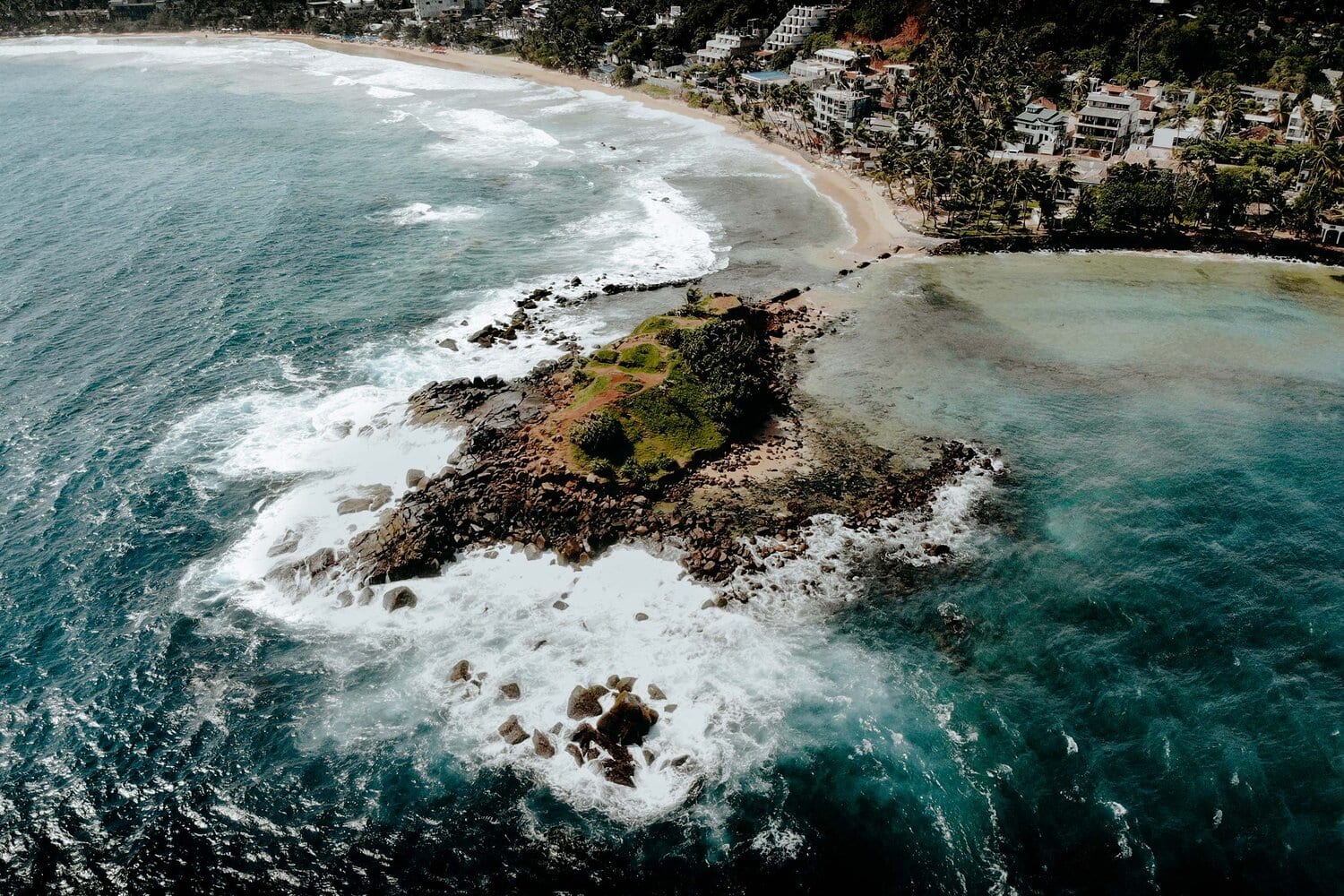
6. Swim and relax on Mirissa Beach
Whilst relaxing, swimming, and sipping on a king coconut slowly enhanced my daily ritual, it became clear why nothing equates to the palm-fringed coastline of Sri Lanka.
Mirissa Beach is said to be one of the best beaches on Sri Lanka’s south coast and believe me, that’s for a good reason.
Even though Mirissa Beach is slightly crowded, it still houses the laidback backpacker vibe that everyone is longing for – especially during golden hour.
As soon as the sunset illuminates the sky, beachside restaurants gradually come to life, more than happy to offer their happy hour deals, which attract both travellers and locals.
If you’re looking for a day’s activity on Mirissa Beach, a gentle beach stroll towards Parrot Rock and Coconut Tree Hill is your best bet.
So whether it’s a morning stroll or a sunset drink, Mirissa Beach is something you can’t miss out on.
Where | Mirissa Beach
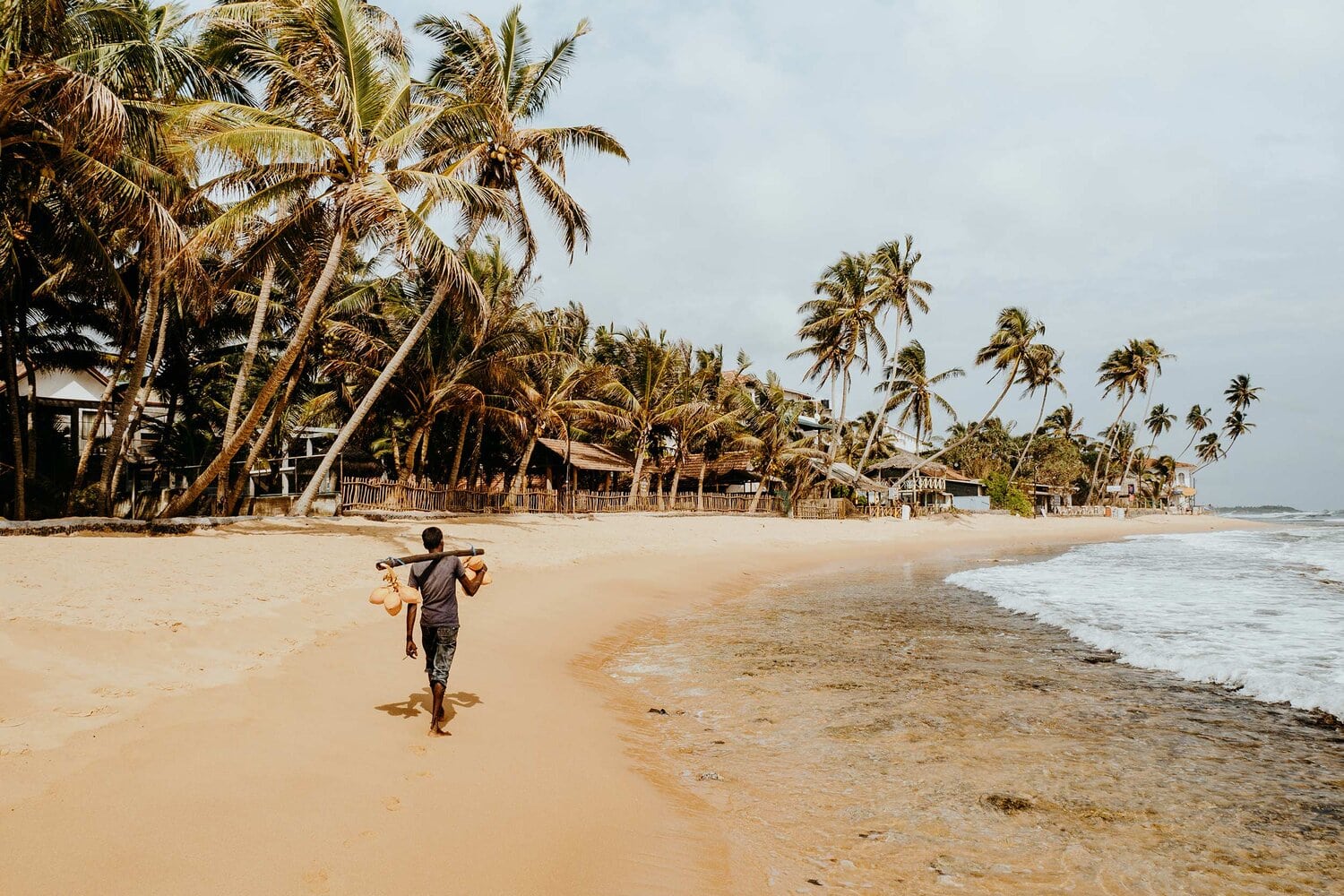
7. Go whale watching in Mirissa
Mirissa is a famous Whale-watching destination, and it’s considered one of the best places to get up close and personal with majestic blue whales.
Aside from Blue Whales that migrate in the Indian Ocean, you’ll have a great chance of seeing Humpback Whales, Sperm Whales, Dolphins and Turtles in their natural habitat.
Early mornings during the peak season grant the highest chance for sightings, as the sea is calm in the morning and slowly becomes rougher in the afternoon. For that reason, whale watching tours start just after sunrise (between 06.00 and 07.00).
The whale watching season in Sri Lanka runs from November till April, with March and April as its peak to encounter blue Whales.
Rumour has it that some operators ignore to perform the Whale watching tours in a responsible and ethical manner. That and the fact that I travelled Sri Lanka in the offseason, made me decide not joining a tour.
If you do consider to join a whale watching tour, I’d recommend putting significant importance in finding a tour operator that focuses on responsible whale watching, Raja & the Whales for example.
Where | Raja & the Whales focuses on responsible whale watching.
Cost | Adult 9.800 LKR, ($54) per person | Children 4.900 LKR, ($27) per person
Duration of a Whale watching tour | 4 – 5 hours, depending on the sightings
When | Whale watching season in Sri Lanka runs from November till April.
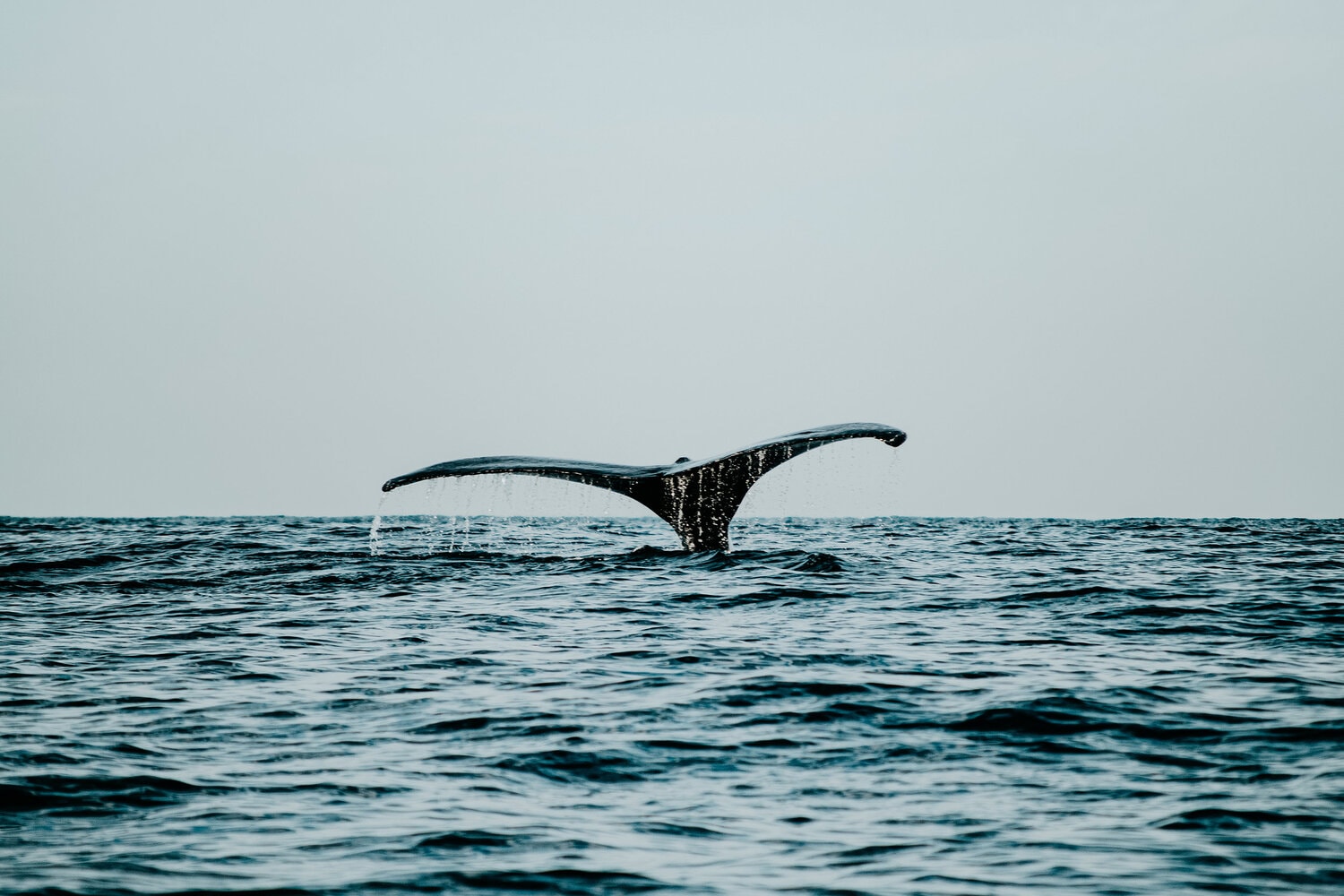
8. Sunset drinks, bites and uplifting beats at Petti Petti
Set right on the beach, Petti Petti is an enchanting hide-out, that will easily convince you to chill away the day.
One afternoon, when I had the good fortune to stumble upon it on my way back from the famous Coconut Tree Hill, the relaxing atmosphere immediately caught my eye.
With an elevated infinity pool, comfortable beanbags, and uplifting tunes, relaxing became the most productive thing I’ve done that entire afternoon.
Although it had only just opened its doors when I visited in 2019, Petti Petti had already become a remarkably popular place to sit and watch the world go by.
Petti Petti provides a great view over the Indian Ocean, an eclectic menu of decadent Western & Sri Lankan bites, and exquisite tropical cocktails, which makes it also the perfect place for sunset drinks and dinner.
Do keep in mind that this comfort comes with a slightly higher price than you’re familiar with in Sri Lanka. I personally came back twice, which is a good sign right?
Where | Petti Petti Mirissa
Opening hours | Daily 08:00 – 22:30
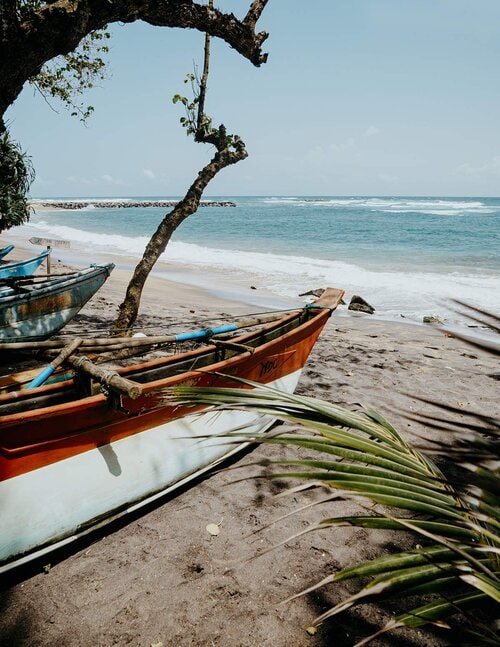
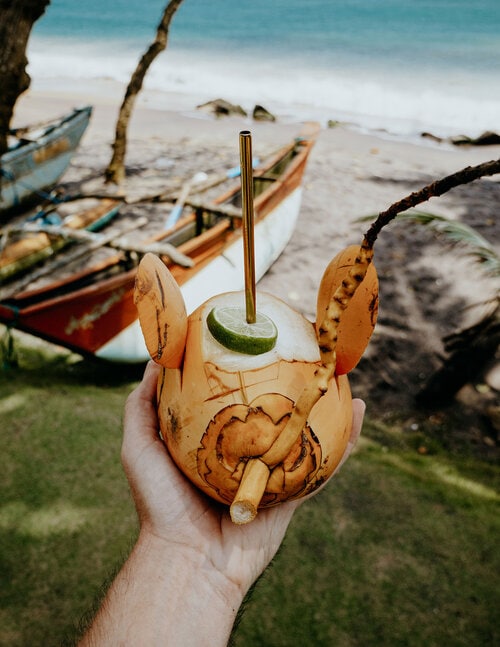
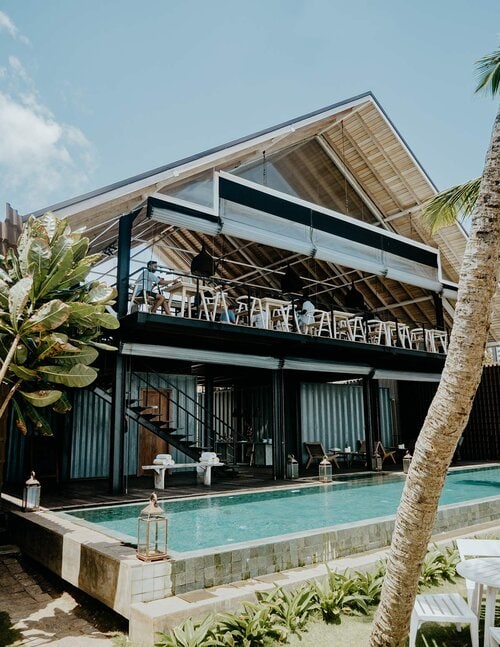
Where to eat in Mirissa
Mirissa has no shortage of delicious cafés and restaurants that offer everything a hungry traveller craves, from authentic rice & curry to burgers, and from sushi to nourishing smoothie bowls.
So whether you’re looking for a plant-based café or a local eatery, you’ll find many interesting options to satisfy your appetite.
I’d recommend you check out these restaurants in Mirissa:
Shady Lane
Shady Lane is a cosy cafe with an oasis of calm at only a few steps away from Mirissa’s buzzing main street. The cafe is specialised in nourishing smoothie bowls, avocado toast, and smoothies. Besides that, they serve good coffee and a bunch of other vegan options. Shady Lane has an excellent reputation, and that made great sense to me.
Where | Shady Lane Mirissa
Opening hours | Daily 08:00 – 15:00, Tuesday closed
Wood Space Mirissa
Wood Space is another outstanding cafe with great vibes and ‘feel-good’ food.
Go here if you’re looking for a nourishing breakfast, a late brunch, fresh-pressed juices or a great cup of coffee.
Where | Wood Space Mirissa
Opening hours | Daily 09:00 – 16:00
No1 Dewmini Roti Shop
If you crave authentic local flavours, look no further. The food here is not only exceptional but also extremely fresh and cooked with a great amount of passion. However, don’t even think of eating here if you want to miss out on the best Kottu Roti in Mirissa.
Even though there is a lot of hype around this place, it easily lives up to its reputation.
Where | No1 Dewmini Roti Shop
Opening hours | Daily 08:00 – 22:00
The Original Rocket Burger
It often occurs that one needs a short break from local delicacies while travelling, and after rice and curry for over a week, it was about time. This is where The Original Rocket Burger showed up.
I ordered the El Macho, which was absolutely delicious. The location directly at the beach was a welcome addition as well. Worth every rupee and is highly recommended if you’re looking for a good burger in Sri Lanka.
Where | The Original Rocket Burger
Opening hours | Daily 11:00 – 21:00
Things to do in Mirissa | The essentials
The best time to visit Mirissa
It is safe to say that the tropical climate ensures good weather year-round, yet there is a travel period that indicates the high season in Sri Lanka.
It is said that the best time to visit Mirissa is between November and April. The sea is reasonably calm during this period, which provides excellent circumstances for both surf lessons and whale watching.
Even though Mother Nature doesn’t always stick to our calendar, it’s common to expect more rainfall during the southwest monsoon that runs from May till September.
How to get to Mirissa
TRAIN | Going by train is a perfect option if you plan to visit Mirissa after Colombo, Hikkaduwa, Galle or Unawatuna.
A direct train operates frequently between Colombo and Matara. However, make sure to leave the train at Weligama, where you have to change for a local bus or tuk-tuk to Mirissa.
From Colombo to Weligama | Cost 160 – 480 LKR, ($0.85 – 2.55) | Travel time +/- 3.30 hours
From Hikkaduwa to Weligama | Cost 150 – 300 LKR, ($0.80 – 1.60) | Travel time +/- 1.15 minutes
From Galle to Weligama | Cost 150 – 300 LKR, ($0.80 – 1.60) | Travel time +/- 30 minutes
BUS | Mirissa is located on the south coast of Sri Lanka and is usually visited after Galle and Unawatuna Beach.
Travelling along the southern coast is quite straightforward, as there are good connections and the local busses are extremely cheap. It’s also one of the best ways to experience daily Sri Lankan life, which if you ask me is great entertainment.
If you’re travelling from Colombo, Galle or Unawatuna, I personally recommend taking a local bus, which either stops at Mirissa or at the Matara bus station. From Matara, it’s a short tuk-tuk ride to the city centre of Mirissa, which costs around 300 LKR, ($1.60).
Bus from Galle or Unawatuna to Matara
Cost | Around 150 LKR, ($0.80)
Travel time | Around 1 hour
TUK-TUK | Usually, I prefer the use of public transportation in Asia, but for this part of my trip, I grabbed a tuk-tuk. This was mainly because of the friendly guesthouse owner, who had an appointment in Mirissa and asked me to join him on his journey to Mirissa.
It turned out to be a win-win in the end.
He even stopped along the way, so that I could see the stilt fisherman in Koggala, which I already intended to visit on a day trip.
Tuk tuk from Unawatuna to Mirissa
Cost | 1,500 LKR, ($8.25)
Travel time | 45 minutes
Stay safe in Sri Lanka | Travel insurance
Though Sri Lanka is perfectly safe for travellers, I always strive to sort out my travel insurance before arriving in a foreign country, and I highly advise anyone else to do the same.
Where we prefer that everything goes smoothly during our travels, something unfortunate can happen at any moment, whether it’s an injury or an accident on the road. When that happens, it is better to be safe than sorry.
Heymondo | Whether you’re going on a 3-week backpacking trip, or planning a long stay somewhere abroad, Heymondo has excellent insurance options either way – plus full COVID-19 coverage and a handy app with 24-hour medical assistance. Readers of WTSW receive 5% off any insurance policy, more information here.
Cheers!
I’ve been on this travel blogging journey since 2019.
If you appreciate what I do here, these are some ways you can support me.

Plan your Sri Lanka itinerary with these essential guides
A guide to the Sacred City of Polonnaruwa | 9 Incredible things to do in Polonnaruwa, Sri Lanka
A guide to the Sacred City of Polonnaruwa | 9 Incredible things to do in Polonnaruwa, Sri Lanka
With an abundance of ancient places in Sri Lanka, it can be quite a mission to pick the right one. Luckily for you, it’s exactly this guide that makes the decision simple.
Most travelers find it difficult to choose between Anuradhapura and Polonnaruwa, so was I. When the day arrived to pick one, my intuition told me to go for Polonnaruwa. And up until this day, I’m still impressed by the atmosphere that prevails in the ancient city.
A well-mixed brew of impressive shrines, picturesque temples, and elegant Buddha statues is that which makes the ancient city of Polonnaruwa a highlight in every Sri Lanka Itinerary.
In this guide, you’ll find useful tips, including its history, the entrance fee and a detailed list of what to see in Polonnaruwa.
With that being said, let’s find out what makes Polonnaruwa this unique.
If you choose to use any of the links on this page, I may receive a small commission at no extra cost to you. By using these links, you’ll have a direct impact on WTSW and my ability to continue to create free insightful travel content for you. If you find any of my tips useful, you can support me by buying a virtual coffee here.
The New Where the Souls Wander Print Store
After putting out my first-ever print collection in 2022, I decided it was finally time to re-open my print store, and I couldn’t be happier with the result.
Whether you’re looking to grab a unique piece for your own wall, gift one to a loved one to remind them of a memorable trip together, or simply get your hands on a piece because it provokes a specific memory or feeling, I’d be honoured and grateful if you decide to collect or gift one of my prints.
To celebrate the launch, I’m offering a 20% discount until the 24th of December.
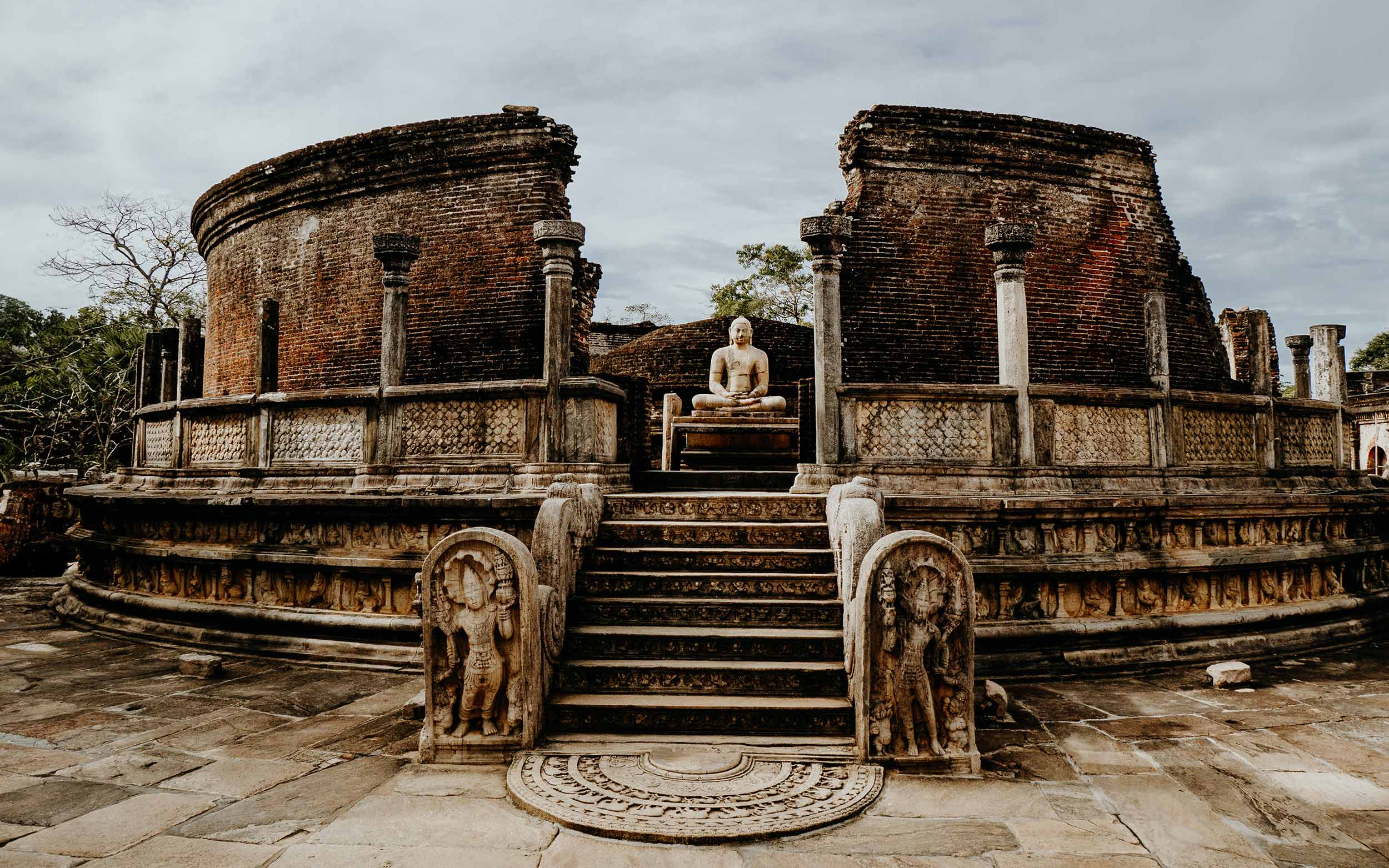
Where is Polonnaruwa
A Brief History of Polonnaruwa
In the midst of the Chola dynasty at the end of the 10th century, Polonnaruwa was the chosen one to become the capital of the Chola kingdom. For roughly three centuries, the ancient city of Polonnaruwa served as the capital for both the Chola and Sinhalese Kingdoms.
Chosen over Anuradhapura, Polonnaruwa had one big advantage, it was strategically positioned in the heart of Sri Lanka. Surely, those benefits made a difference in the protection against the rebellion of the Ruhunu Sinhalese kingdom.
Eventually, in 1070, it was the Sinhalese king Vijayabahu who drove the Cholas of the teardrop-shaped island. He also chose to hold Polonnaruwa as the capital of the Sinhalese kingdom.
Under Sinhalese rule, Polonnaruwa reached its absolute glory. Unfortunately, this wasn’t everlasting. Early 13th century, Sinhalese power moved to the western side of the island, where we now find Colombo.
The ancient city of Polonnaruwa was left abandoned, not knowing it would be declared a UNESCO World Heritage site in 1982.

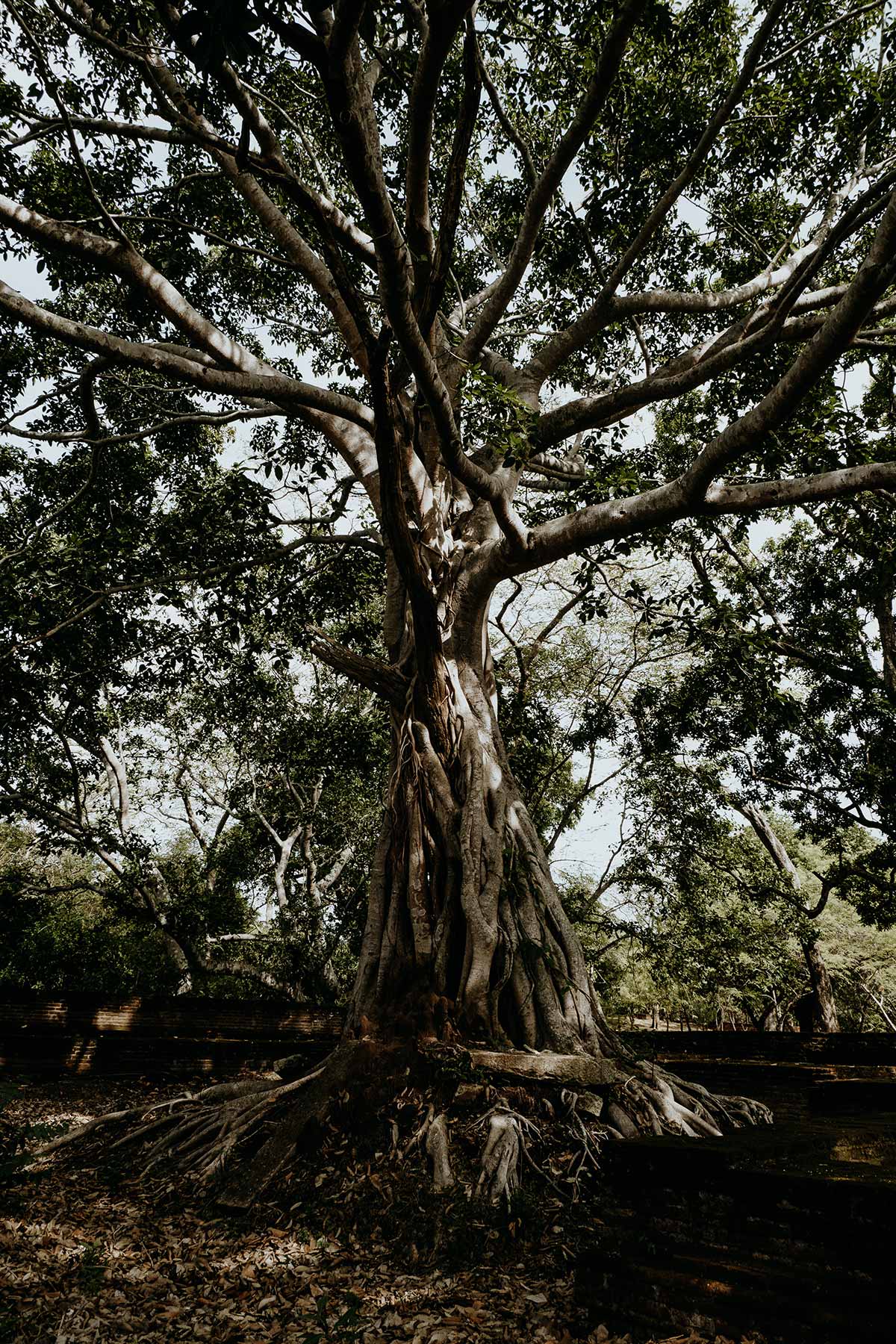
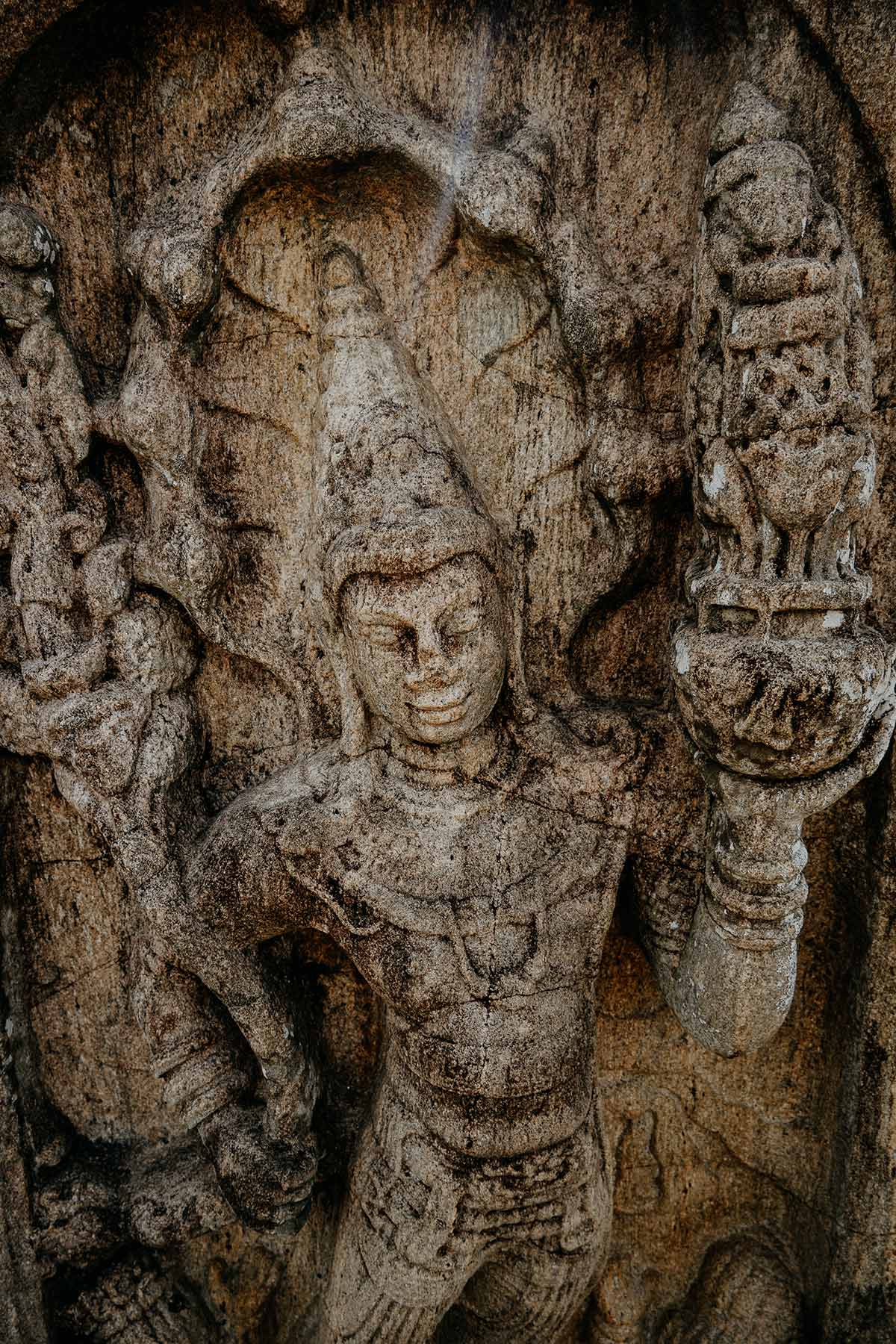
Where to stay near Polonnaruwa
Ekho Lake House | A stylish hotel directly at a scenic lake, with a great pool, and near the archaeological site of Polonnaruwa. More information and availability here.
Mahanuge Hotel Polonnaruwa | A luxurious hotel located inside the ancient city. Everything you need for a combination of relaxing and exploring. More information and availability here.
Alternatively, search for accommodations in Polonnaruwa on booking.com.
The Polonnaruwa entrance fee 2024
At the moment of writing – September 2024, the entrance fee to the Sacred City of Polonnaruwa is 7.520 LKR ($25) per person, which is quite pricey by Sri Lankan standards.
For children, the price is halved and comes down to 3.760 LKR ($12.5).
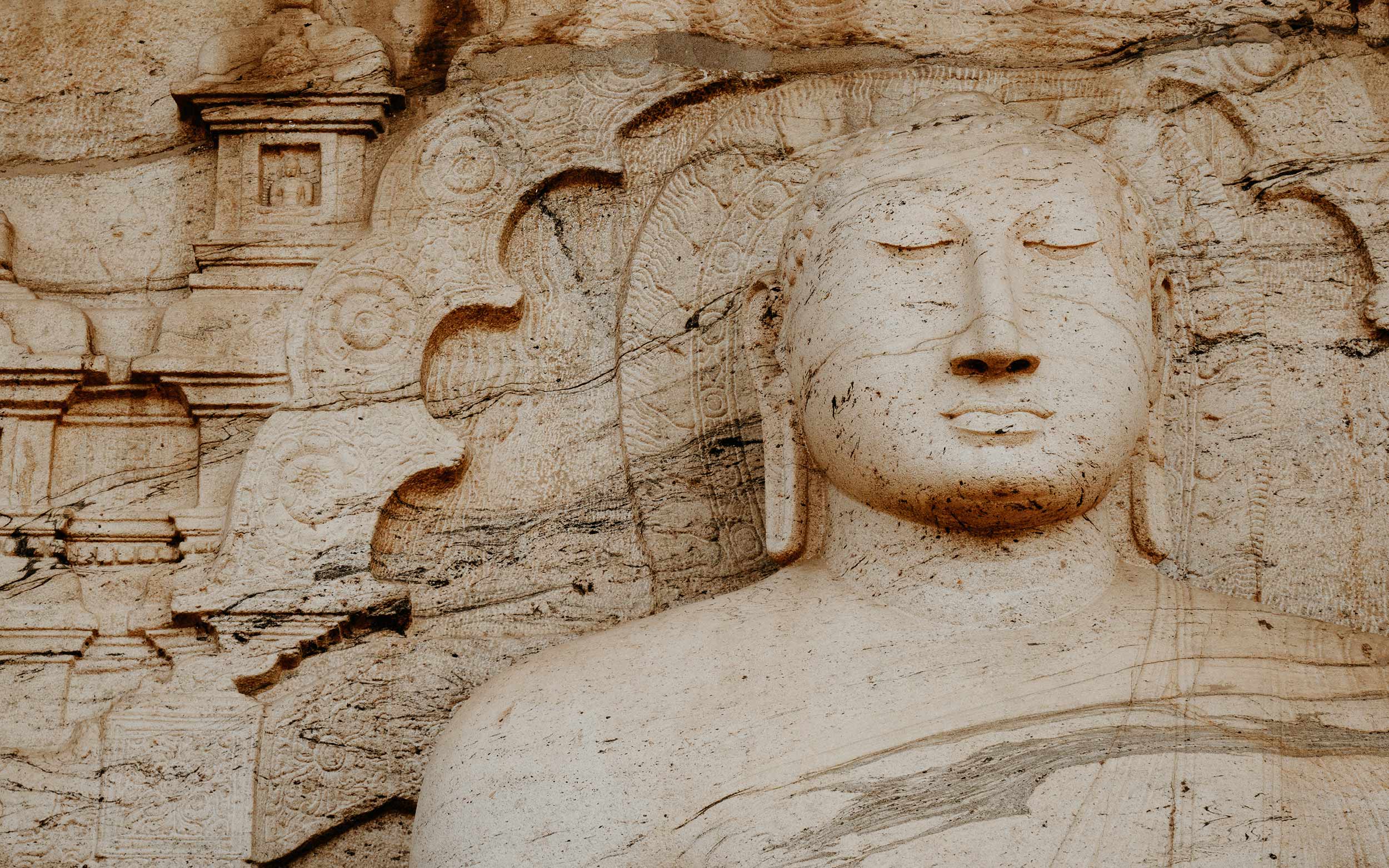
9 Incredible things to do in Polonnaruwa
It’s the ruins, shrines, and temples that attract travellers to Polonnaruwa, that’s for sure.
As you start exploring you notice how well-preserved the ancient city really is. This is mainly because of the materials that were used during the renovation.
The Polonnaruwa ruins are formed by unique stupas, well-preserved temples, and harmonious-looking buddha statues.
The temple complex of Polonnaruwa has one big advantage, it’s fairly small compared to Anuradhapura. This ensures that you can easily explore it by bicycle.
With that being said, here are the temples you should absolutely visit in Polonnaruwa.
The Polonnaruwa Archaeological Museum
Your adventures start off at the Polonnaruwa Museum, and not only for a history upgrade.
I’ve been told the museum is the only place to get a valid entrance ticket.
My advice? Don’t risk buying your tickets elsewhere.
1. The Sacred Quadrangle – Dalada Maluwa
An impressive bundle of ruins is safely positioned on a raised-up platform.
The Sacred Quadrangle is an imposing area where you’ll find an abundance of well-preserved buildings. With around 10 magnificent structures, it is hands-down the best introduction to the history of Polonnaruwa.
The quadrangle is home to the Sathmahal Prasadaya, Thuparama Image House, Hetadage, Bodhi Tree Shrine, and the well-known Polonnaruwa Vatadage.
Altogether a must-see. Let’s get into detail on a few of the structures found at the Sacred Quadrangle.
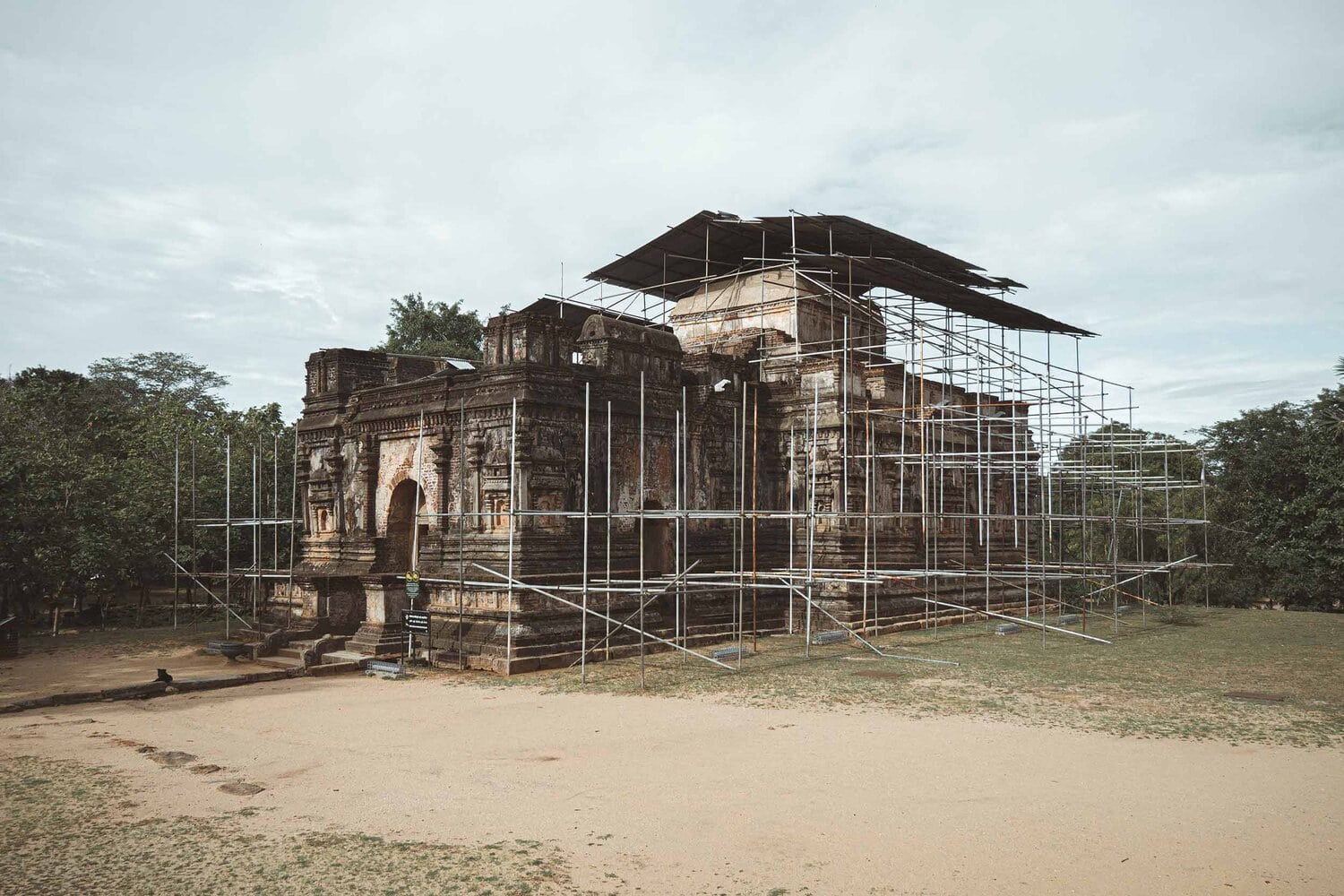
2. The Polonnaruwa Vatadage
Let’s start with the aesthetically pleasing Polonnaruwa Vatadage.
Legend says it was built to house the significant ‘Sacred Tooth Relic’, that is nowadays kept in Kandy.
The two-tiered circular Vatadage is a high-end structure in this type of architecture.
The Vatadage is strategically designed to protect a small dagoba that is positioned at the heart of the structure. The dagoba is surrounded by four Buddha statues, each facing one entrance.
What’s even more impressive, is the amount of decoration and detail. Each Stairway is decorated with an elegant moonstone, not to mention the stone carvings throughout the Vatadage.
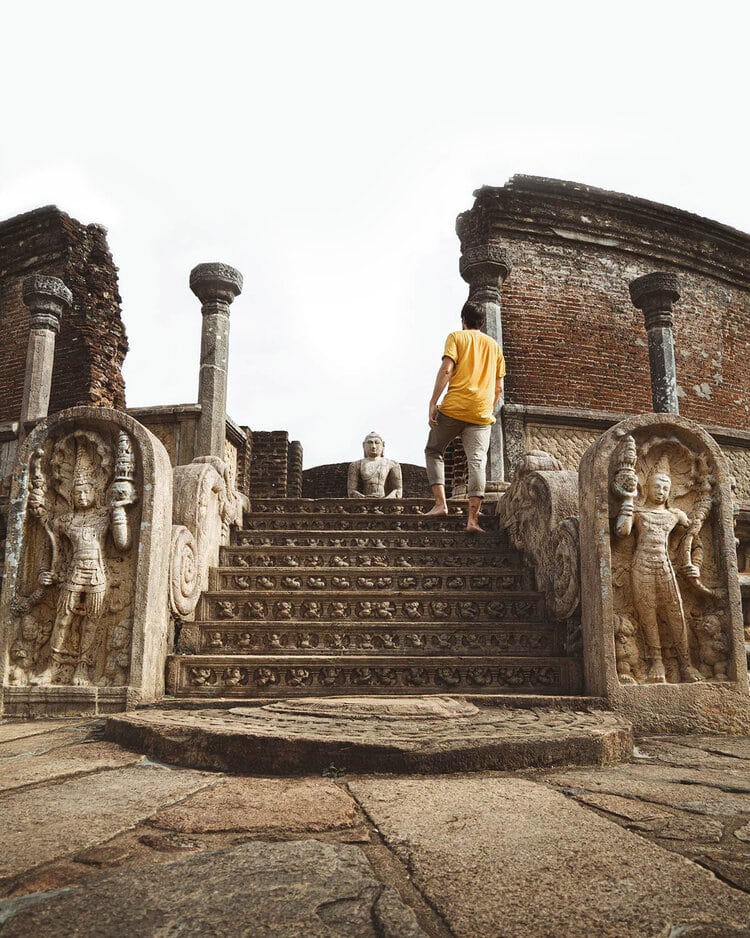
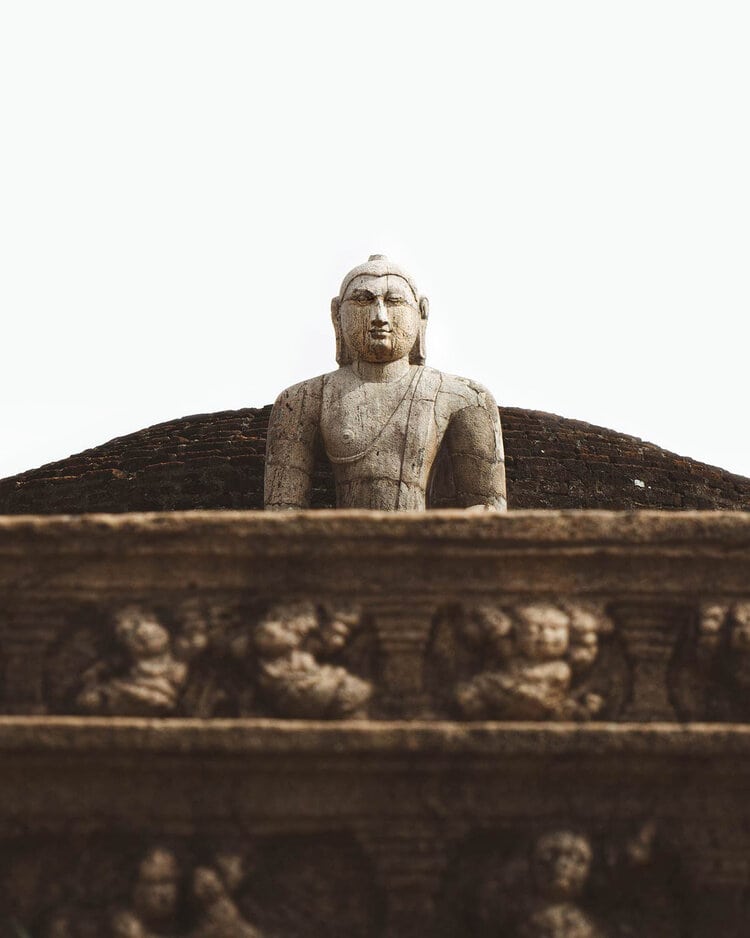
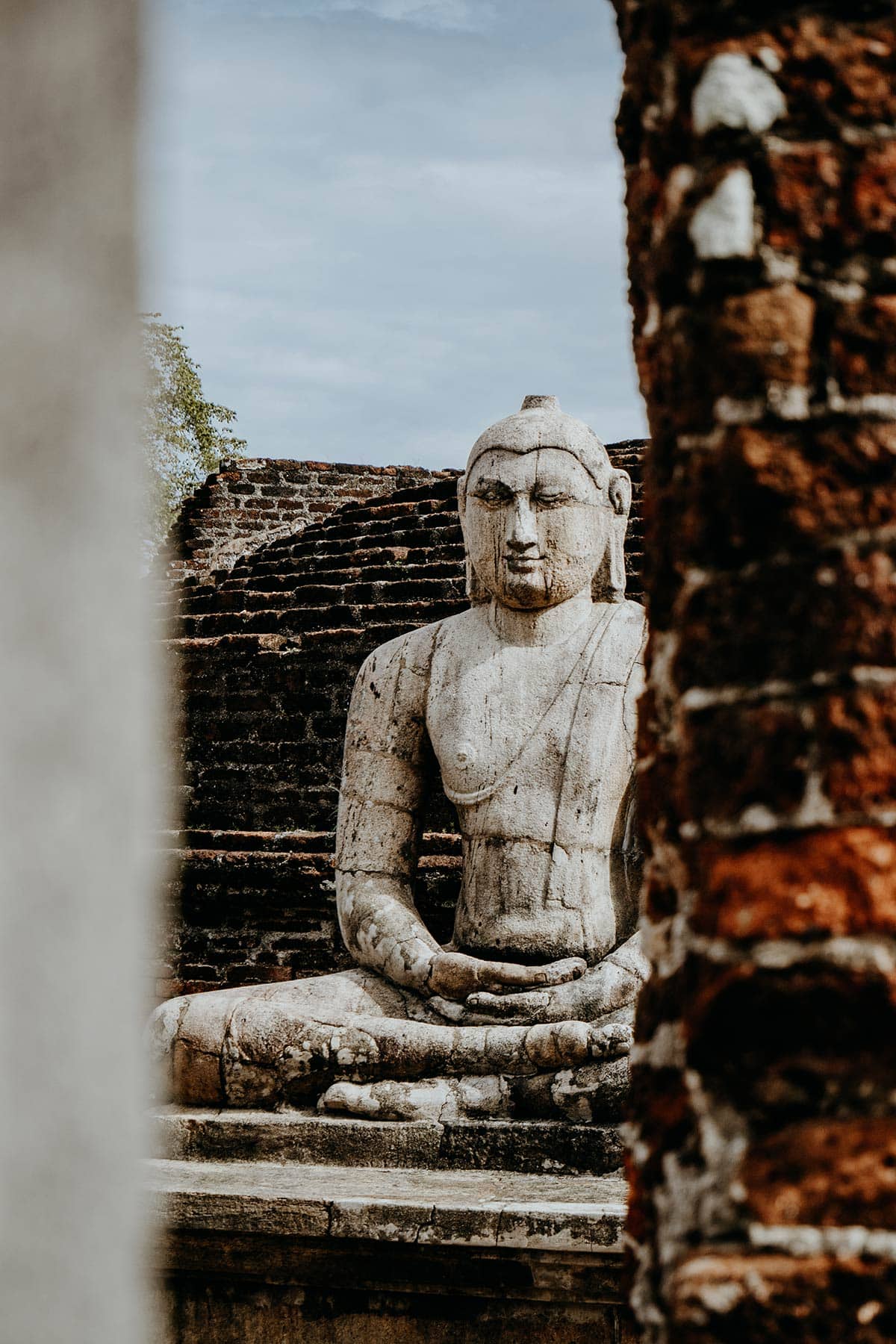
3. The Hatadage at the Sacred Quadrangle
The Hatadage is positioned next to the Vatadage and is very intriguing to witness with your own eyes.
The Ancient Relic Shrine is in bad shape, nevertheless, it is fascinating to wander around.
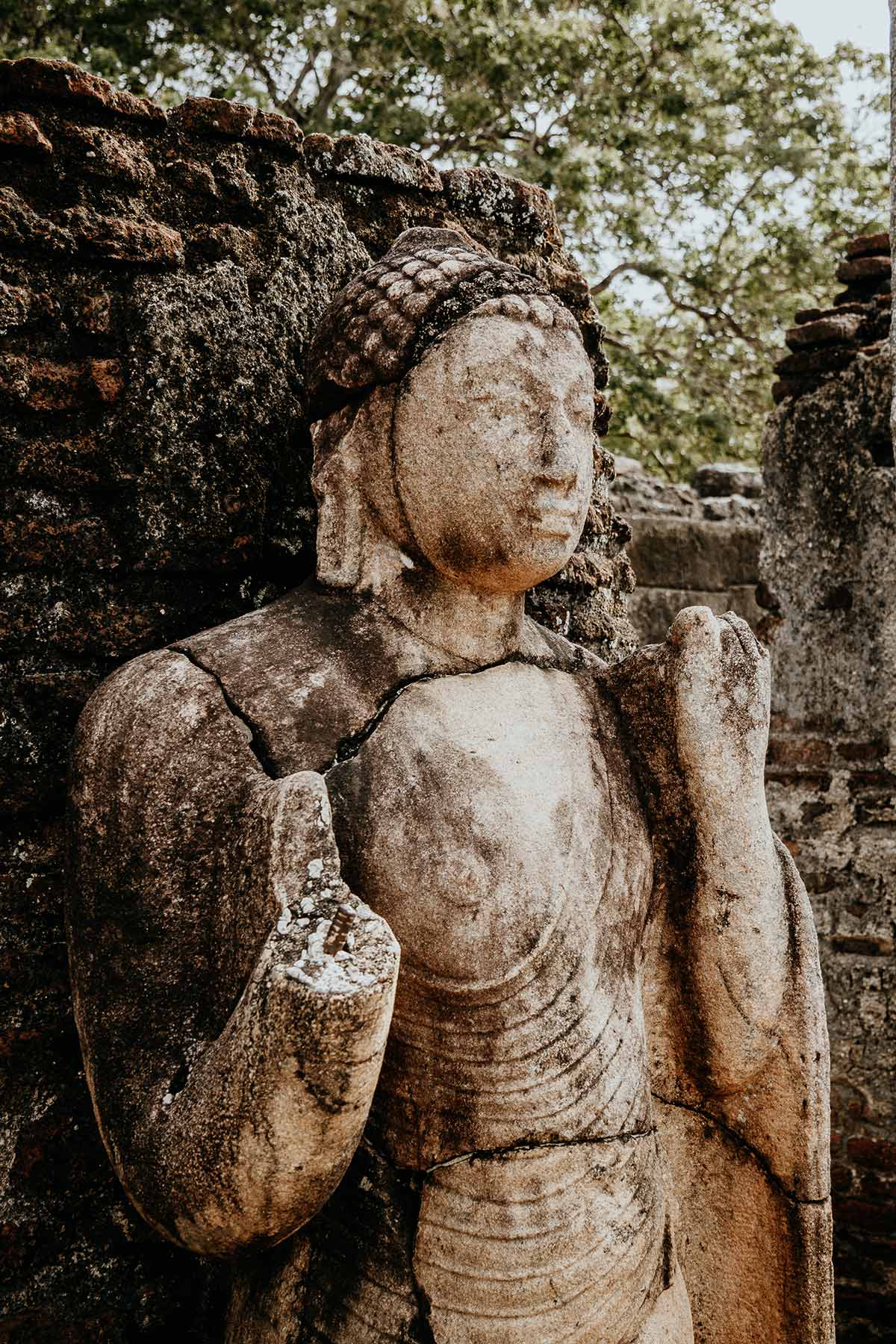
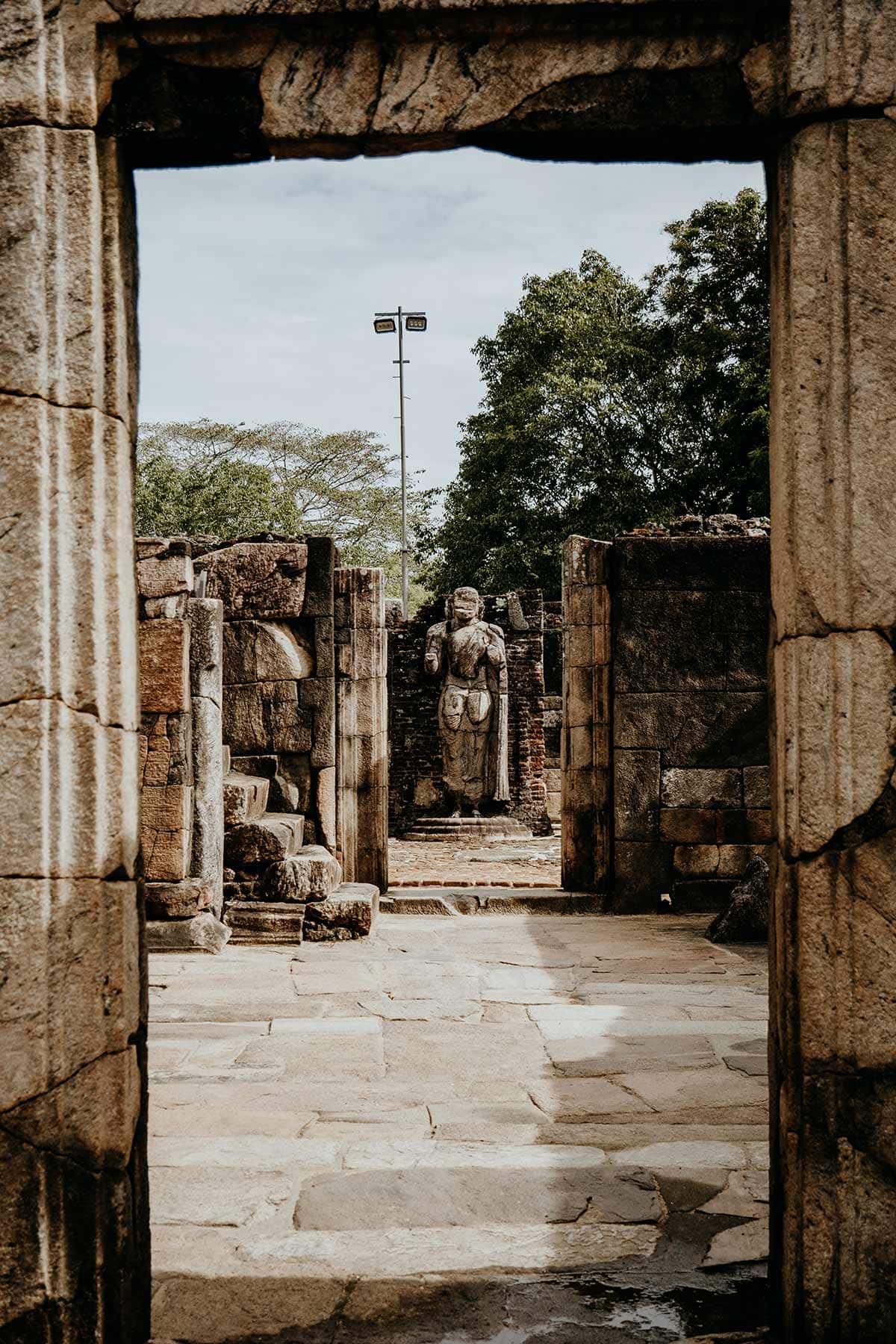
4. The humungous Banyan Tree an the ancient Vishnu Shrine
What I personally found to be very attractive is the imposing Banyan tree at the Ancient Vishnu Shrine.
The large buttress roots of the Banyan tree are there to reveal itself above the dusty soil.
From this perspective, it’s phenomenal to see how the power of nature works. In particular, the way the tree took over part of those ancient ruins.
A stop-over at the impressive tree next to the Vishnu Devale is as easy as it gets. You’ll pass it along the way from the Sacred Quadrangle to the Gal Vihara.
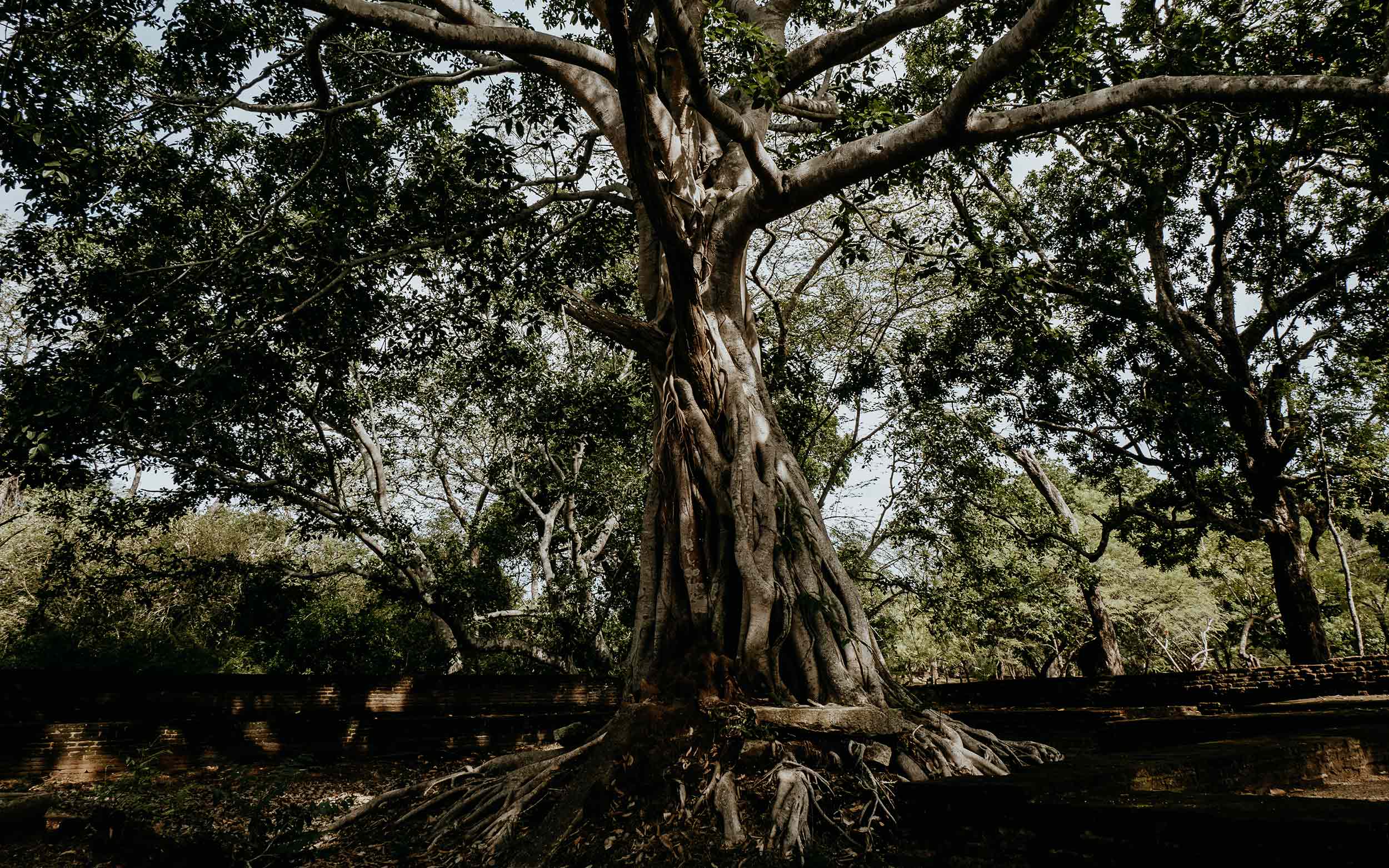
5. The Gal Vihara Buddha Statues
The four giant Buddha statues, directly carved out of a large granite rock facade, are one by one of artistic value.
Therefore it isn’t surprising that particularly those masterpieces attract travellers to the ancient city of Polonnaruwa.
The story goes around that one of the four statues isn’t actually Buddha. It was supposed to be his grieving apprentice after Buddha’s passing.
It should concern the 7-meter high standing statue, so pay extra attention to his facial expression.
It is the Gal Vihara that stands out in the ancient city. Its uniqueness, both aesthetically and in size, makes it my favourite site in the ancient city of Polonnaruwa.
Trust me, it is the one thing you can’t miss in Polonnaruwa.
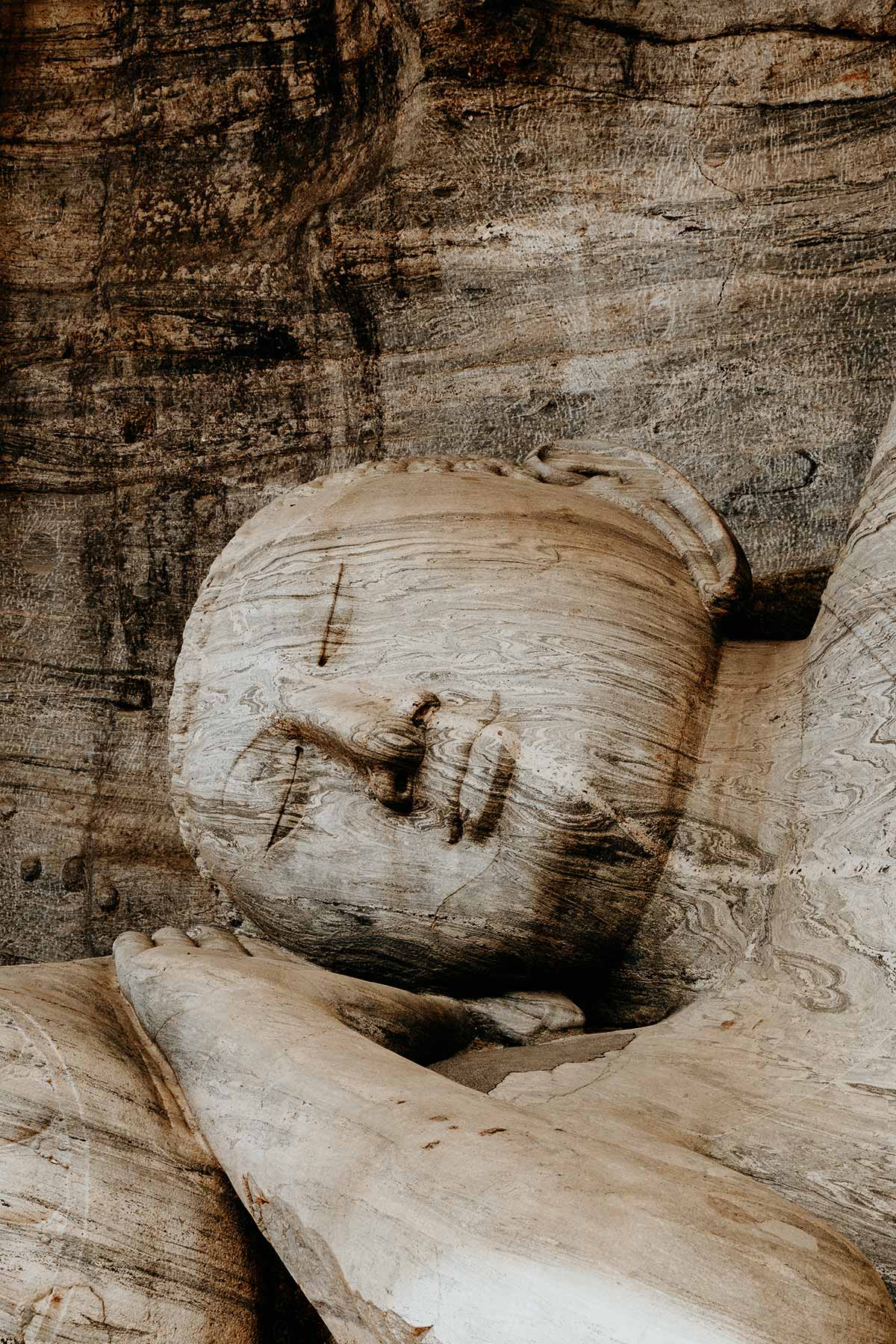

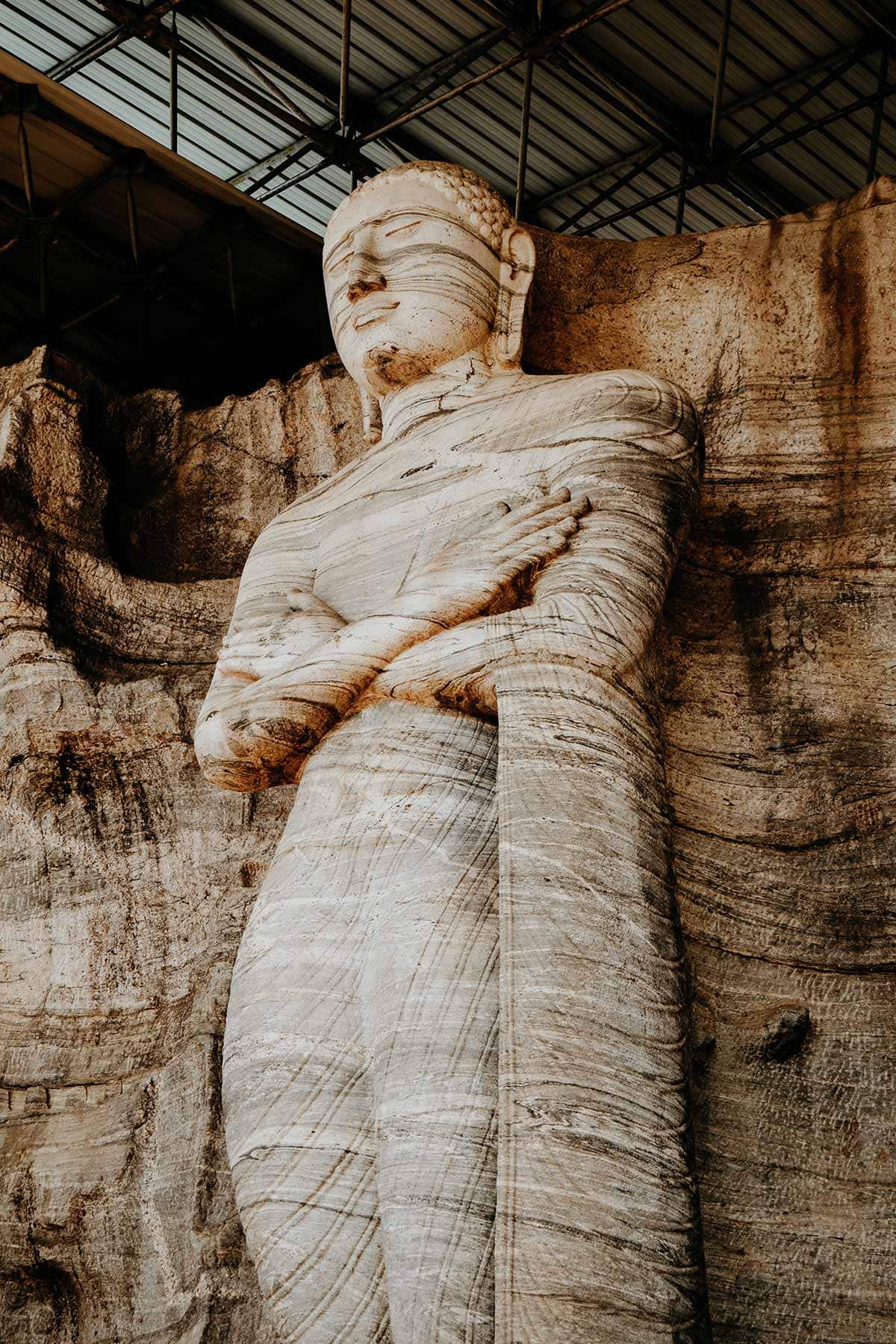
6. The Lankatilaka Temple
With its walls reaching an impressive height of 17 meters, the Lankatilaka Temple stands tall against its backdrop.
The large image house is home to a giant Buddha statue made out of bricks. Sadly the upper part of the statue and roof was devastated a couple of centuries ago.
The unique features in the design of Lankatilaka are hands-down a reason worth visiting.
It is the design of the stairways that is uncommon. Every step of the stairway is only 10 centimetres wide, which makes it hard to climb in the way that we are used to.
The reason for this unique design?
With significant short steps, the only way to climb down is sideways. In this manner, it’s impossible to turn your back towards the Buddha statue, which is considered disrespectful in Buddhism.
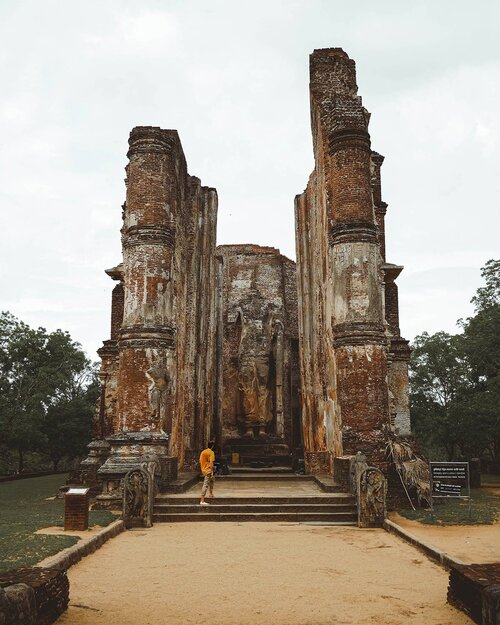

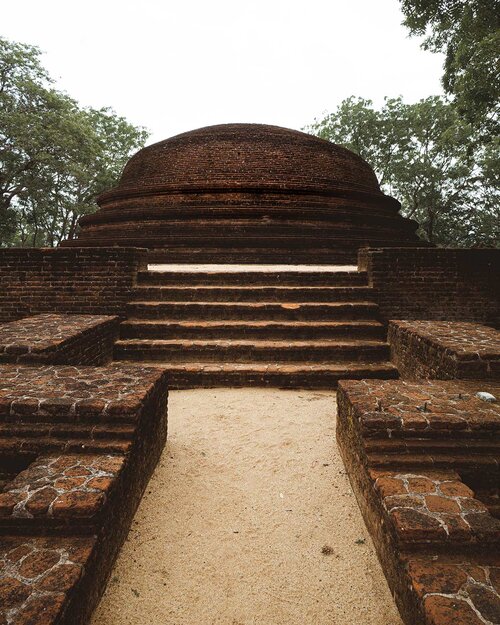
7. Rankoth Vehera Stupa
Most of the Polonnaruwa area is formed by ancient temples and shrines, making the Rankoth Vehera stand out even more so.
As a matter of fact, the Rankot Vihara is the largest stupa in Polonnaruwa. Not to mention that it is entirely made of bricks.
A walk around the stupa makes you realize how huge it is. It is clear that this has been a tough job.

8. Pabalu Vehera Stupa
The unusually shaped Pabalu Vehera stupa, made of brownish bricks contrasts richly with the dense green jungle.
The mix of well-preserved and wrecked components, and a jungle-ish environment, create the feeling of a Tomb Raider-like scene.
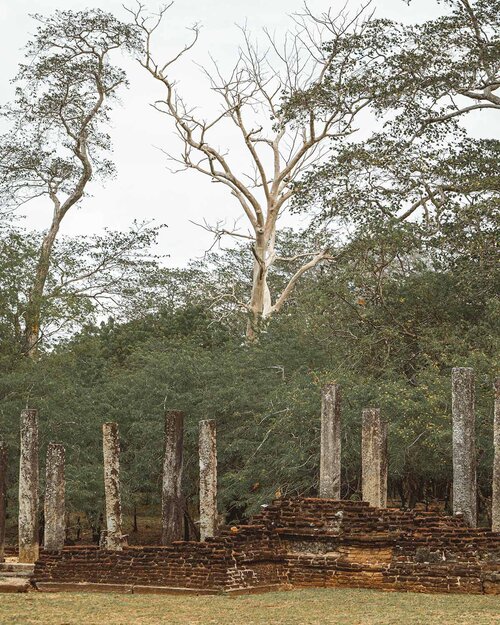
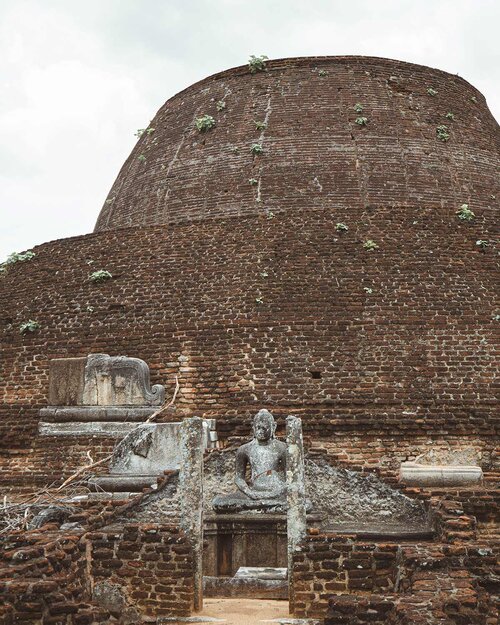
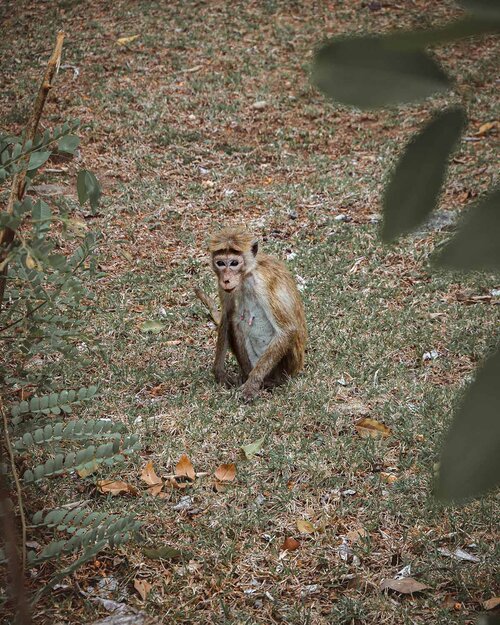
9 . Combine it with the Minneriya National Park
A visit to the ancient city of Polonnaruwa takes only a morning of your time and is easy to combine with a jeep safari in the Minneriya National Park.
A trip to a national park is one of my highlights and should be in every Sri Lanka itinerary.
In the Minneriya National Park, you’ll find yourself among wild elephants, which will be the experience of a lifetime.
Besides elephants, the famous park also is home to leopards, Sloth bears, Spotted deer, Sambar deer, and wild buffaloes.
How to get to The Minneriya National Park | Most safaris include a hotel pickup and drop off.
Cost | Entrance Minneriya National Park – 3.500 LKR, ($19) per person | Guide + Jeep – 7.000 LKR, ($38) per jeep
Or by joining a private Polonnaruwa + Minneriya day tour from Dambulla (including entrance fees). For prices and availability click here.
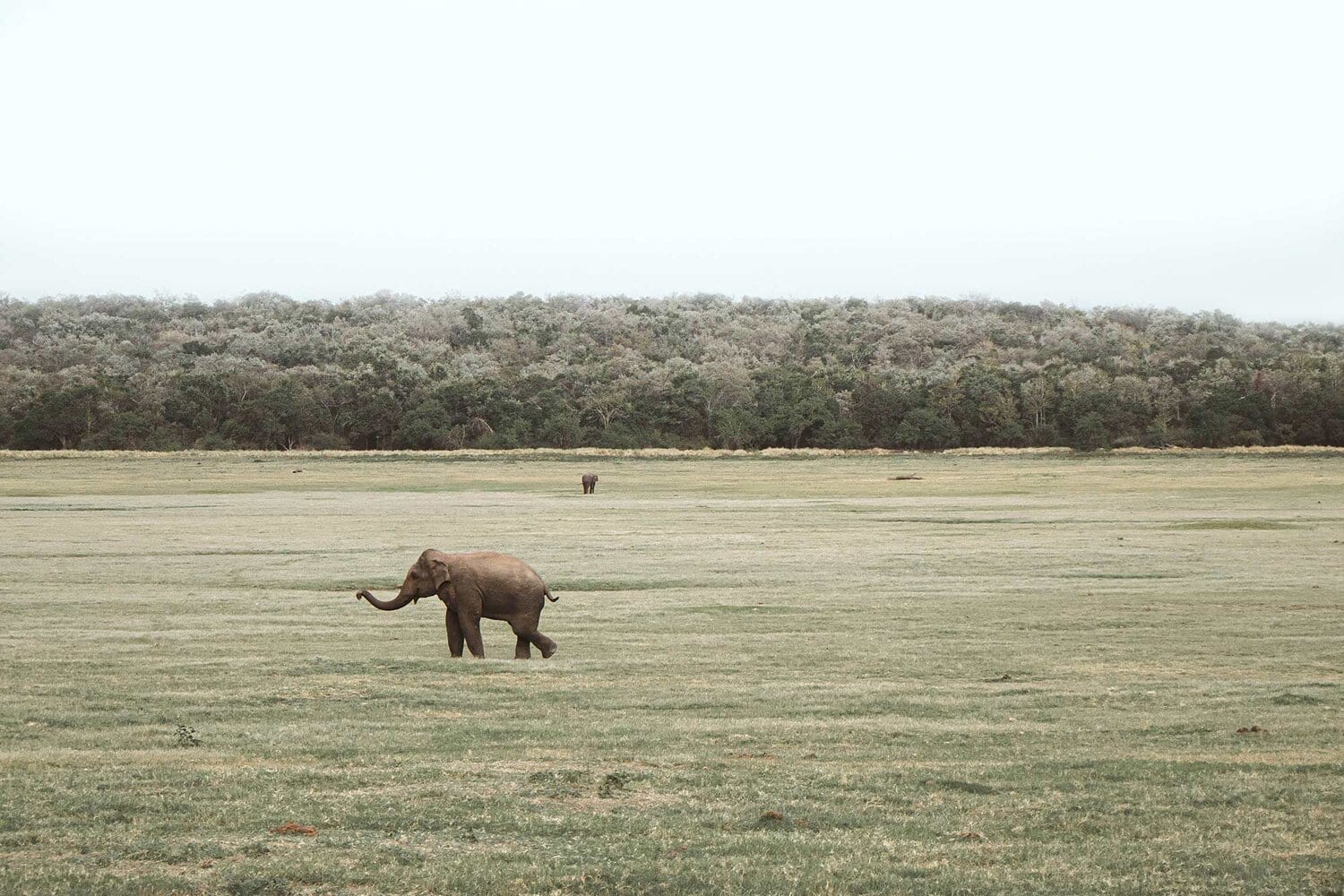
Other interesting ruins worth visiting in Polonnaruwa
Mentioned above are only eight impressive structures I recommend in Polonnaruwa. Others that are really worth visiting are the Royal Palace, the Audience Hall, the Kiri Vehera Stupa and the Thivanka Image House.
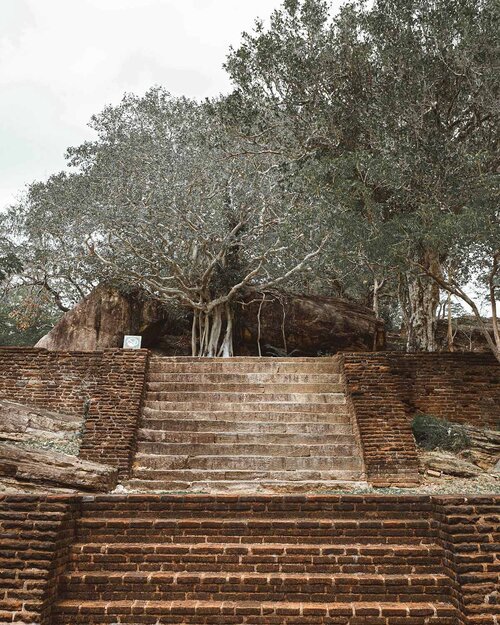
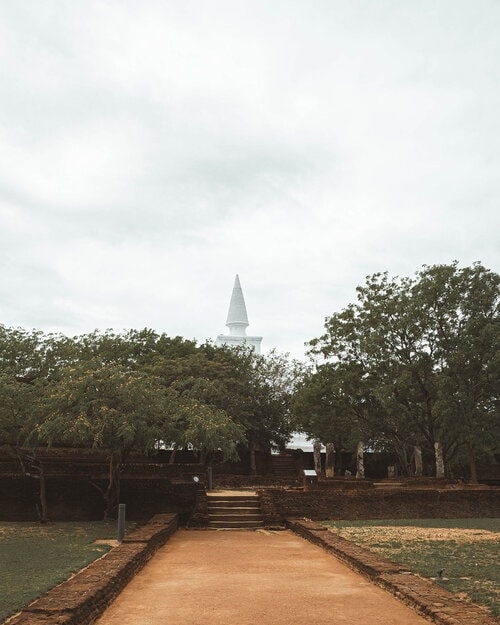
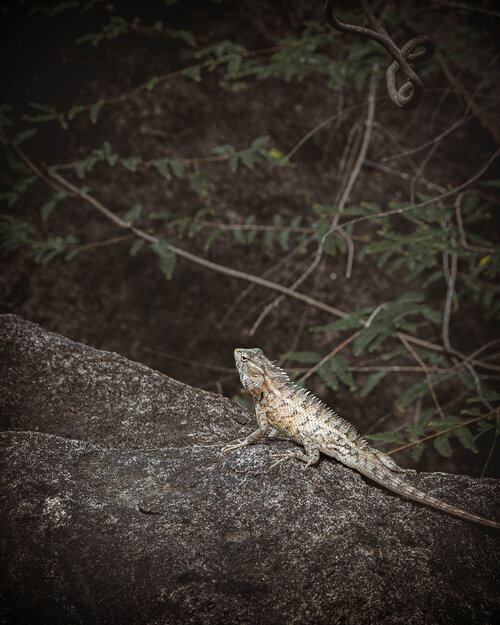
The Sacred city of Polonnaruwa | The essentials
How to get around Polonnaruwa
Rent a bicycle | What I like about Polonnaruwa is the fact you can easily explore it by bike. The ability to discover what the city has to offer with a cooling breeze is both fun and energetic.
Cost | 400 LKR, ($2.25) per bicycle
Hire a tuk-tuk with a guide | Taking a tuk-tuk driver as a guide is a good alternative to seeing the ancient city, especially if you’re in a hurry. Personally, I think renting a bicycle is so much more fun.
Cost | 1.200 LKR, ($6.5) per tuk-tuk. Generally, there is enough space for two people per tuk-tuk.
How to get to Polonnaruwa
Keep in mind that Kaduruwela is considered the Polonnaruwa new town. Depending on the location of your hotel you can ask the bus driver to stop in Polonnaruwa.
The easiest way is by joining a private Polonnaruwa + Minneriya day tour from Dambulla (including entrance fees). For prices and availability click here.
From Sigiriya to Polonnaruwa
Bus | Sigirya – Inamaluwa – Polonnaruwa – Kaduruwela | After a short tuk-tuk journey from Sigiriya to Inamaluwa jump on the bus to Kaduruwela.
Cost | Tuk-tuk from Sigiriya to Inamaluwa 500 LKR, ($2.8) | Bus from Inamaluwa to Polonnaruwa 200 LKR, ($1) per person
Travel time | 1.5 hours
From Dambulla to Polonnaruwa
Bus | Dambulla – Polonnaruwa – Kaduruwela | Take a direct bus that heads for Kaduruwela from the Dambulla Main bus stop. The bus leaves every 20-30 minutes starting from 7 am.
Cost | Bus from Dambulla to Kaduruwela – 220 LKR, ($1) per person
Travel time | 1.5 to 2 hours
From Trincomalee to Polonnaruwa
Bus | Trincomalee – Habarana – Polonnaruwa | A quite difficult journey. From Trincomalee take a bus heading for Dambulla or Colombo.
Tip | Before entering, ask if the bus driver stops in Habarana and if there is a connection to Polonnaruwa. Generally, you’ll find buses that stop in Polonnaruwa at the Habarana Junction.
Cost | Bus from Trincomalee to Habarana – 120 LKR, ($0.70) | Bus from Habarana to Polonnaruwa – 80 LKR, ($0,50)
Travel time | 4 hours
From Colombo to Polonnaruwa
Train | Colombo Fort – Polonnaruwa | A rough journey that is packed and heads out to the east coast of Sri Lanka. Personally, I recommend visiting Kandy and Sigiriya in between.
Cost | 2nd class: 350 LKR ($2) per person, 3rd class: 200 LKR ($1) per person
Travel time | 6.5 hours
Train times from Colombo Fort to Polonnaruwa | 06:05, 19:00. For more information about train times click here.
Stay safe in Sri Lanka | Travel insurance
Though Sri Lanka is perfectly safe for travellers, I always strive to sort out my travel insurance before arriving in a foreign country, and I highly advise anyone else to do the same.
Where we prefer that everything goes smoothly during our travels, something unfortunate can happen at any moment, whether it’s an injury or an accident on the road. When that happens, it is better to be safe than sorry.
Heymondo | Whether you’re going on a 3-week backpacking trip, or planning a long stay somewhere abroad, Heymondo has excellent insurance options either way – plus full COVID-19 coverage and a handy app with 24-hour medical assistance. Readers of WTSW receive 5% off any insurance policy, more information here.
Cheers!
I’ve been on this travel blogging journey since 2019.
If you appreciate what I do here, these are some ways you can support me.

Plan your Sri Lanka itinerary with these essential guides
8 Wonderful things to do in Kandy, Sri Lanka's city of kings
Nestled in the heart of Sri Lanka lies Kandy, a vibrant city that is best known for its dignified reputation as the spiritual and cultural capital of the island.
The foremost reason for this is Kandy’s number one attraction; the Temple of the Tooth, an astonishing religious centre that is considered one of Sri Lanka’s holiest places.
Also, Kandy is now world-famous as one of the gateways to the most spectacular train journey in the world, running between the ancient kingdom of Kandy and the lush mountain town of Ella.
But to me, Kandy is more than just a stepping stone to Sri Lanka’s famous Ella to Kandy train ride.
The former City of Kings is in fact a great town to get a feel for everyday Sri Lankan life.
Whether you’re enjoying a calm afternoon at the iconic Kandy Lake, experiencing the hustle and bustle of the intoxicating Kandy Market, admiring the picture-perfect views from the Big Buddha statue, or simply roaming endlessly through the lively streets, Kandy clearly knows how to emphasize its charms.
To help you explore the very best of Kandy, I’ve put together this guide, including my favourite things to see and do – plus advice on where to stay, when to visit and how to get there.
Here are my absolute favourite things to do in Kandy and its surroundings.
If you choose to use any of the links on this page, I may receive a small commission at no extra cost to you. By using these links, you’ll have a direct impact on WTSW and my ability to continue to create free insightful travel content for you. If you find any of my tips useful, you can support me by buying a virtual coffee here.
The New Where the Souls Wander Print Store
After putting out my first-ever print collection in 2022, I decided it was finally time to re-open my print store, and I couldn’t be happier with the result.
Whether you’re looking to grab a unique piece for your own wall, gift one to a loved one to remind them of a memorable trip together, or simply get your hands on a piece because it provokes a specific memory or feeling, I’d be honoured and grateful if you decide to collect or gift one of my prints.
To celebrate the launch, I’m offering a 20% discount until the 24th of December.
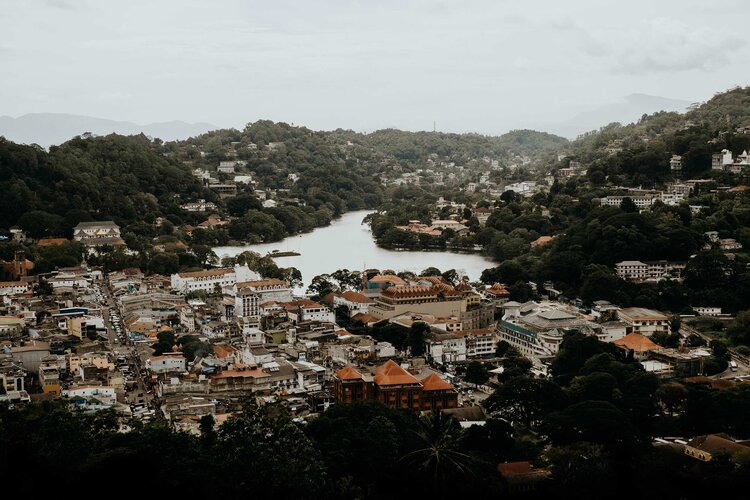
Where to stay in Kandy
Cafe Aroma Inn | Spacious air-conditioned rooms at the heart of Kandy for a good Quality-Price-Ratio.
Range Hotel Kandy | Simple, good rooms and a pool with a view make this hotel perfect for some afternoon relaxing.
Dumbara Peak Residence | Comfortable double rooms, a great rain shower and located in the town centre of Kandy.
Alternatively, search for accommodations in Kandy on booking.com.
8 Wonderful things to do in Kandy, Sri Lanka
1. Visit the Temple of the Sacred Tooth Relic
At the heartbeat of the vibrant city is one of the most sacred Buddhist places of pilgrimage in the world. This is mainly because the legend says a tooth of the Buddha is kept here.
The most important Buddhist relic of Sri Lanka remains safe in a gold casket under the roof of the Temple of the Sacred Tooth. Every day, thousands of Buddhists come by to honour and celebrate the Sacred Tooth Relic.
The Sri Dalada Maligawa was built by the Kandyan kings between 1687 and 1707 to house the sacred relic. The temple since then became the number one attraction in Kandy.
The best time to visit the Temple of the Tooth is during Buddha Puja. During this ceremony, the casket, containing the Sacred Tooth Relic, is revealed to its worshippers.
Those spiritual practices are held three times a day and are really intriguing to witness. As always, respect religious customs.
Where | Temple of the Tooth Relic
How to get to the Temple of the Tooth Relic | This one is quite straightforward. From the city centre walk in the direction of Kandy Lake. Once you arrive at the lake you’ll see the complex on your left hand.
It is also an option to join this all-inclusive Kandy city tour. For prices and availability click here.
Ceremony times | 05:30 – 07:00 | 09:30 – 11:00 | 18:30 – 20:00 | For more information click here.
Cost | 1.500 LKR ($8,5) per person
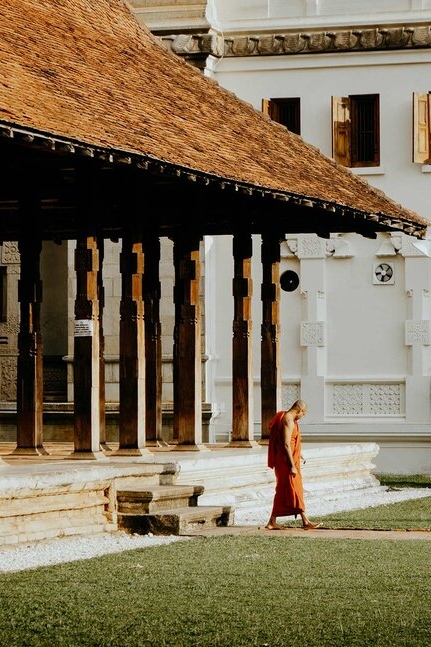
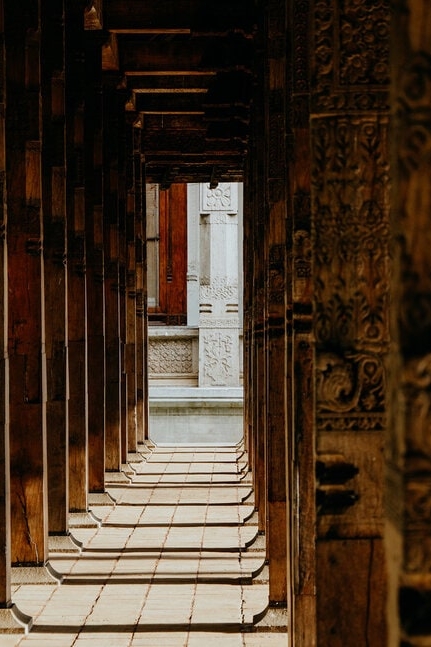
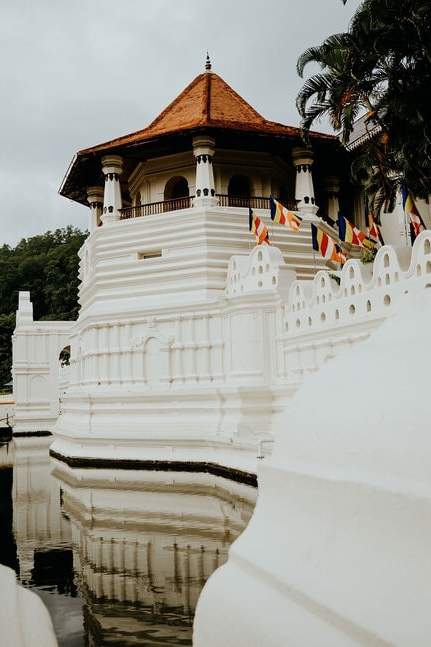
2. Climb to the Bahirawakanda Vihara Buddha Statue
Brilliantly positioned, on top of the Bahirawa Kanda hill and to be seen from various points in town is the majestic Bahirawakanda Vihara Buddha Statue.
A visit to the big Buddha in Kandy brings a sense of peace and harmony, not to mention an impressive panorama view.
With 27 meters tall it is one of the largest Buddha statues in Sri Lanka. Even more notable is the charming atmosphere created by the Buddha overlooking Kandy with a serene facial expression.
Don’t forget to remove your hat and shoes when entering the temple complex.
Where | Bahirawakanda Vihara Buddha Statue
How to get to the Bahirawakanda Vihara Buddha Statue | The Big Buddha in Kandy is 1.2km away from the city centre. From the Bahirawa Kanda Road, it is around 750 meters of walking with an incline of 26 meters.
Cost | 250 LKR ($1,4) per person
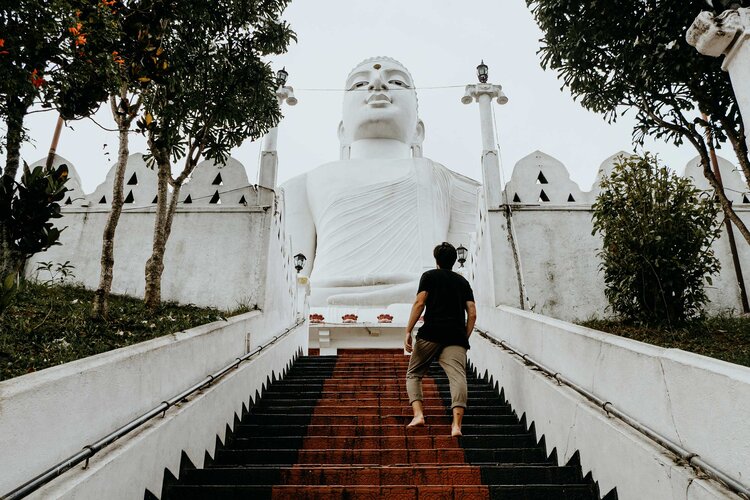
3. Take a walk around Kandy Lake
Kandy Lake is an iconic place where you’ll find calm and serenity at the heart of the vibrant city.
Taking a walk around the Kiri Muhuda Lake is both peaceful and charming. The beautiful area around the lake is home to some of the best activities in Kandy, think of the Temple of the Sacred Tooth Relic and the Udawattakele Forest.
During sunset, the lake turns into a huge reflecting mirror which is magnificent to observe. Locals appreciate hanging out around Kandy Lake while the sun slowly drops below the horizon. You’ll understand why once you experience a vibrant and peaceful atmosphere for yourself.
Where | Kandy Lake
How to get to Kandy Lake | For Kandy Lake you don’t need any directions. You simply can’t go around it when in Kandy. Ooh, you actually can, takes about an hour to walk through.
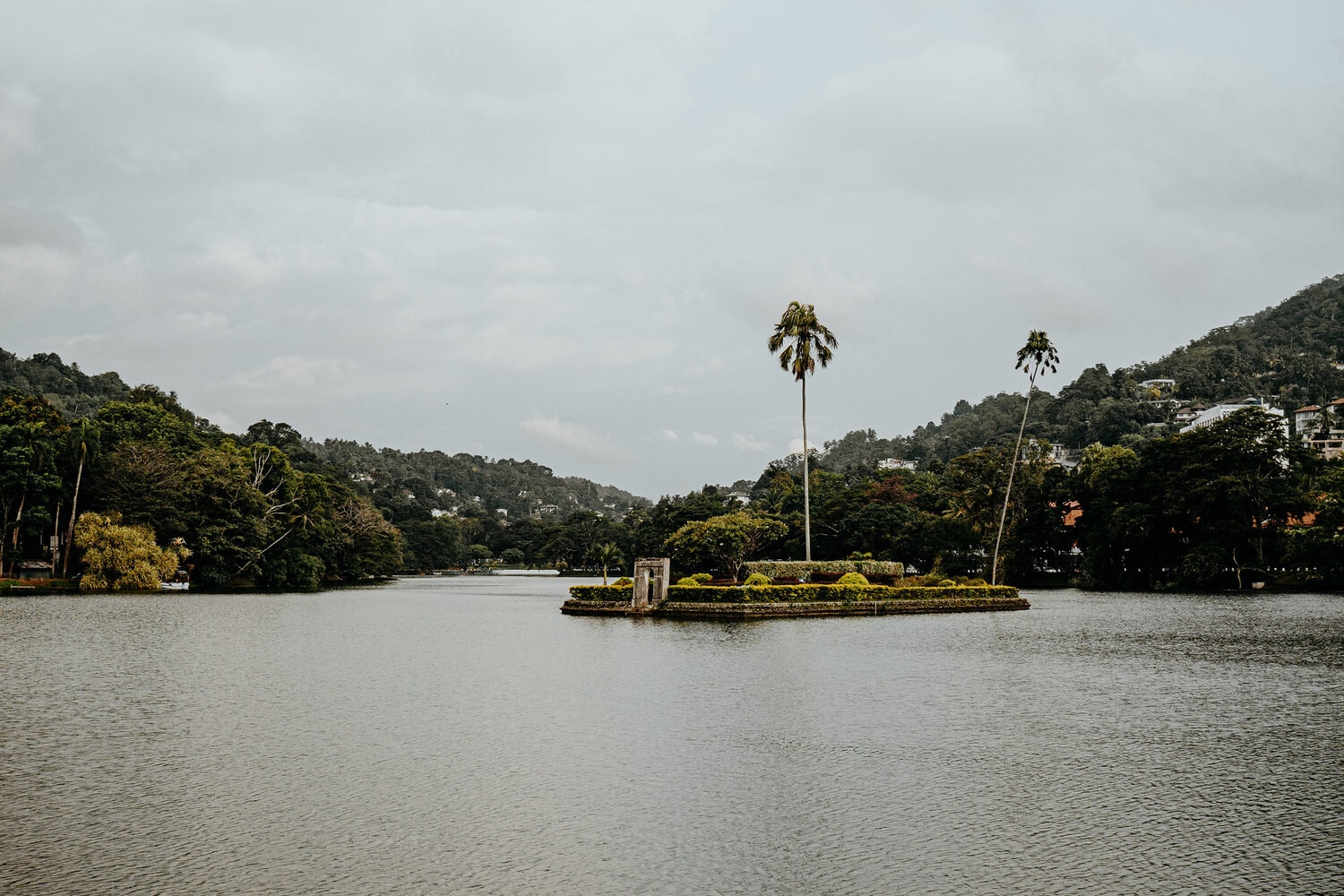
4. Clear your mind at the Udawattekele Sanctuary
In the midst of the lively, sometimes chaotic city centre of Kandy is a hill ridge that is home to the Udawattakele Forest Reserve.
The Udawattekele Sanctuary is perfect for a quiet and peaceful walk away from the bustling city. The urban forest that was once only open for royal blood is home to over 400 species of plants, 70 species of birds and several mammals.
A walk through the sanctuary brings you along a few interesting sights.
By following the path that walks through the sanctuary you’ll come along the highest peak of Kodimale, the Senkanda Cave, the water pond and some interesting Buddhist temples. The duration of a round trip is approximately 5km.
Where | Udawattekele Sanctuary
How to get to the Udawattakele Forest Reserve | By taking a 15-minute walk, starting at the Temple of the Tooth. Follow the DS Senanayake Veediya road until you reach the post office near the Kandy Municipality. Turn right at the post office and follow the road uphill.
Cost | 670 LKR ($3,75) per person
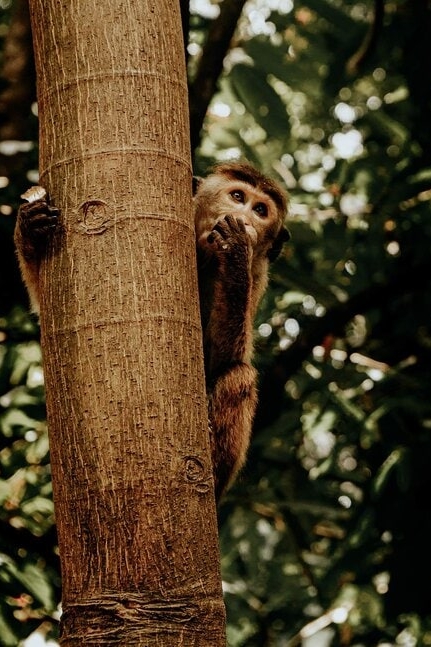

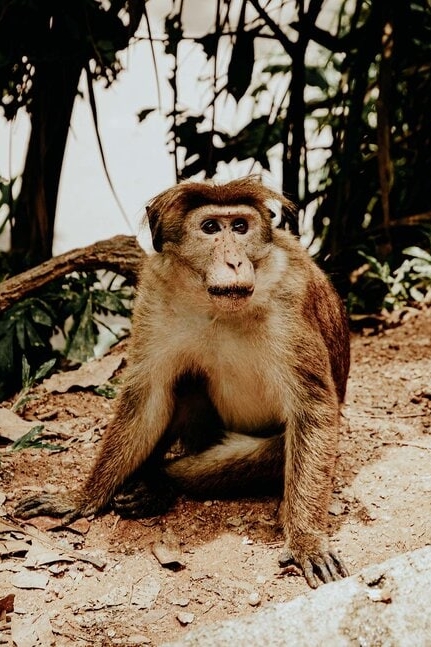
5. Experience the famous Kandy to Ella train ride
If both Ella and Kandy are on your Sri Lanka itinerary, this beautiful train journey is a must. The 7-hour train ride is incredibly charming and guarantees memories that last a lifetime.
The most authentic experience is between the locals in the 3rd class, which is also the cheapest option. The vibe that reigns inside the dusty train cabins is extraordinary at its finest. Never ever had I experienced such an authentic journey in my life.
While the train slowly navigates along the winding tracks you’ll pass dense forest hills, vibrant local villages and hundreds of flourishing tea fields. Literally everything the light touches is pure beauty and bliss. Try to reach for an open door or a window seat once you reach the most picturesque part of the journey: Nanu Oya to Ella.
Getting a ticket on the day of departing can be difficult due to the still-rising popularity. To be sure you’ll have a spot on the train you do wise to buy a ticket 1 – 2 days in advance. You can also book a ticket online by clicking here.
Where | Kandy Railway Station
Train times from Kandy to Ella | Daily 08:47 and 11:10. More information on train times here.
Cost | 2nd class: 250 LKR ($1,50) per person, 3rd class: 180 LKR ($1,-) per person
Cost online | 1st class reserved AC: 3.200 LKR per person ($18,-), 2nd class reserved no AC: 3.000 LKR ($16) per person.
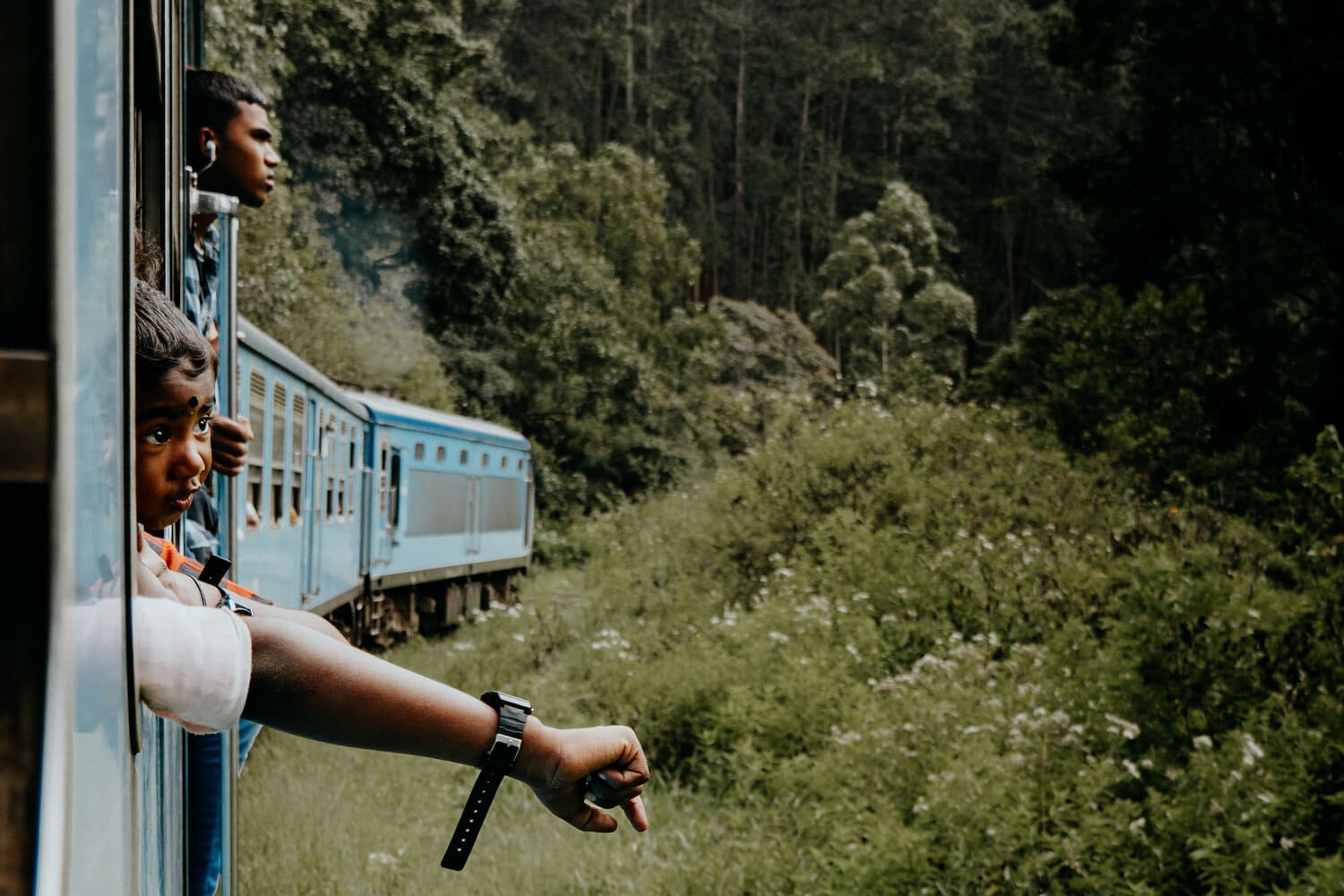
6. Wander around the Royal Botanic Gardens of Peradeniya
Wandering through pure delicate nature on a warm day, sheltered and cooled down by the shade of tree leaves. That’s a walk through the Royal Botanic Gardens of Peradeniya in a nutshell.
The Royal Botanic Gardens, located in Peradeniya, just outside of Kandy is a lively urban city park. The gardens contain over 4.000 species of plants, including spices, medicinal plants, orchids and palm trees.
An early morning stroll is perfect to escape the heat and chaos that prevails in Kandy town. While walking through the gardens, pay some extra attention to the superb-looking Royal Palm Avenue, the appealing Orchid Garden and the impressive Cannonball Tree that was planted by King George and Queen Mary of the United Kingdom.
An interesting option for visiting the Royal Botanic Gardens is to join an all-inclusive Kandy City Tour. For prices and availability, click here.
Where | Royal Botanic Gardens of Peradeniya
How to get to the Royal Botanical Gardens of Peradeniya | From the city centre of Kandy it takes only 10 minutes by tuk-tuk to reach the gardens of Peradeniya. A one-way trip will cost around 400 LKR ($2).
Cost | 1.500 LKR, ($8,50) per person.
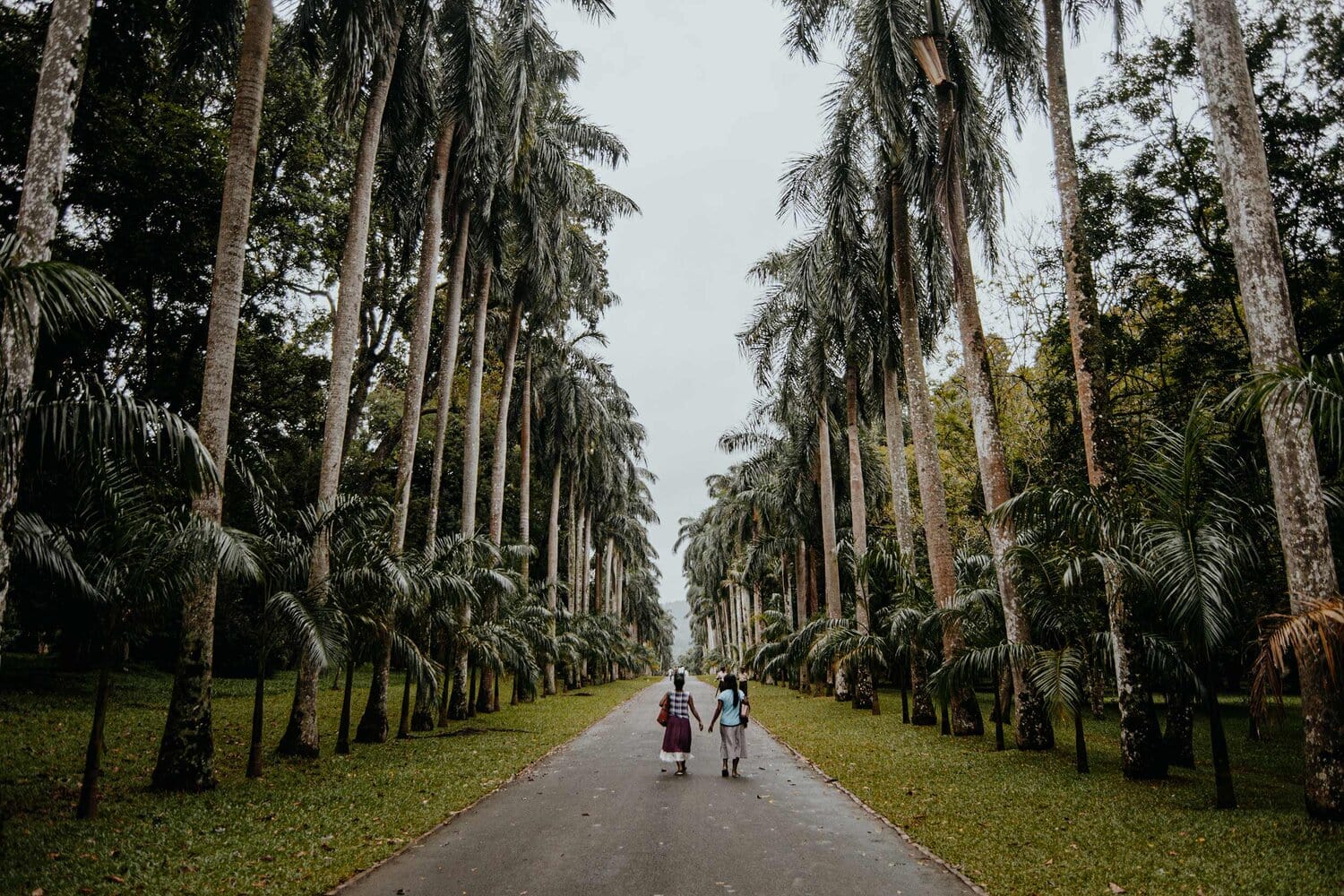
7. Explore the Kandy Municipal Central Market
You’ll have to admit it, the atmosphere found at a local market always tend to be attractive. The two-floor Kandy Municipal Central Market is no different.
The Market in Kandy is an excellent place to experience the hustle and bustle of daily local life in Sri Lanka.
The first floor is where your senses are put to the test. Vendors of every kind try to bargain a deal with you. Think of fresh fruits, spices, fish, dried fish, meat and vegetables.
Upstairs you’ll find a great variety of incense, all kinds of textiles, artistic crafts, and even medicines. At the Kandy market, they sell almost everything, name it and they’ll have it for you.
Making your way along a countless amount of market stalls can be a bit overwhelming and chaotic at first. Once you’re used to the circumstances it is genuine the best way to discover Kandyan’s daily life.
Where | Kandy Municipal Central Market
How to get to the Kandy Market | The market in Kandy is opposite to the Central Bus Station and Kandy Clock Tower.
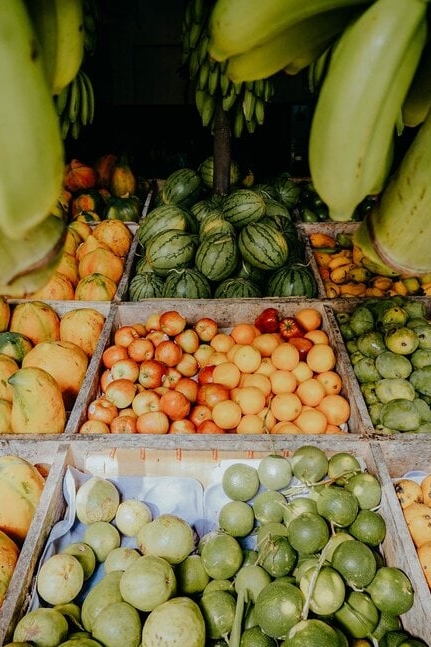
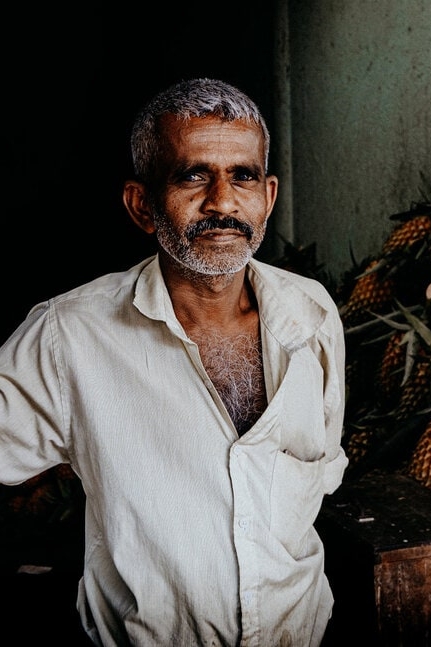
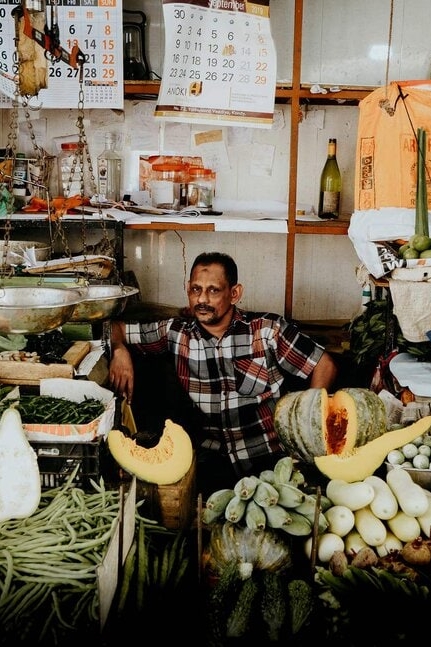
8. St. Paul Church
The historic district of Kandy, where you’ll find the world-famous Temple of the Tooth is also home to the St. Paul Church.
The Neo Gothic-style church, English Victorian on the inside, was consecrated on 25 January 1853 after a long building process.
At first, the church was named the Garrison Church. The mission of the church was to serve British troops during the British Ceylon period. Nowadays, the Anglican church is open to worshippers every Sunday at 07:45 am.
Exploring the church and historic district of Kandy can easily be combined with a visit to the Udawattekele Sanctuary and Temple of the Tooth.
Where | St. Paul Church
How to get to the St. Paul Church | The church is located behind the Temple of the Sacred Tooth in the historic district. A walk from the temple to the church is around 5 minutes.
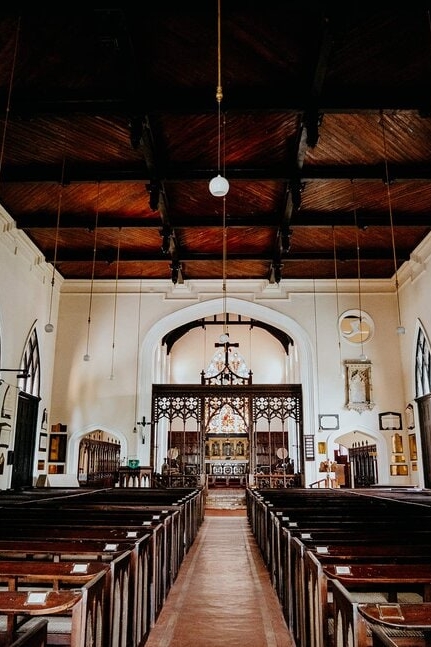
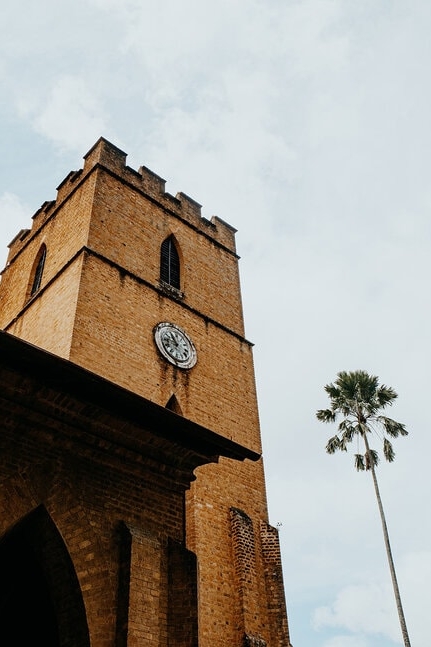

Where to eat in Kandy
Licensed to Grill | Even though they have a license to grill, their food is illegally delicious.
Roots Fresh Juice | The perfect place to treat yourself on a refreshing juice during the sizzling days in Kandy.
The Bakehouse Kandy | If you’re into pastries don’t hesitate to drop by The Bakehouse. It’s an excellent venue to satisfy your inner sweet tooth. Try their local favourite ‘Malu Paan’.
Things to do in Kandy | The essentials
The best time to visit Kandy
The best time to visit Kandy in Sri Lanka is between December and April. The days are mostly dry which is excellent to wander around the city.
Even though the weather in Sri Lanka is good year-round, keep in mind that Sri Lanka experiences two monsoons. The first one is from May to September and the second one is from October to November.
During my visit to Kandy in the midst of September, the monsoon didn’t give me any trouble. In fact, the prices were lower and there were fewer travellers around.
Try to avoid the monsoons if you’re planning to hike the Knuckles Mountain Range, during the wet season the forest is full of leeches.
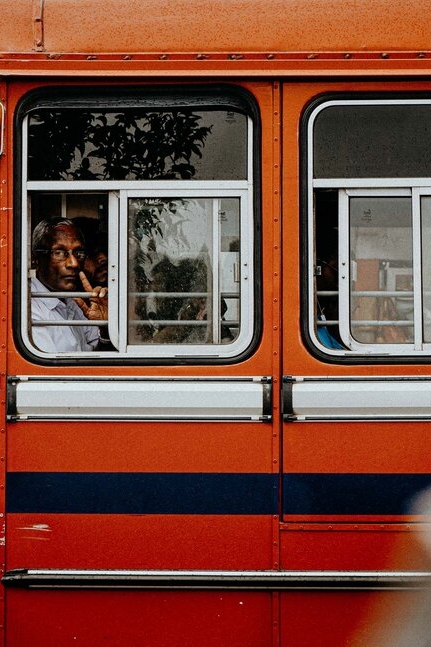
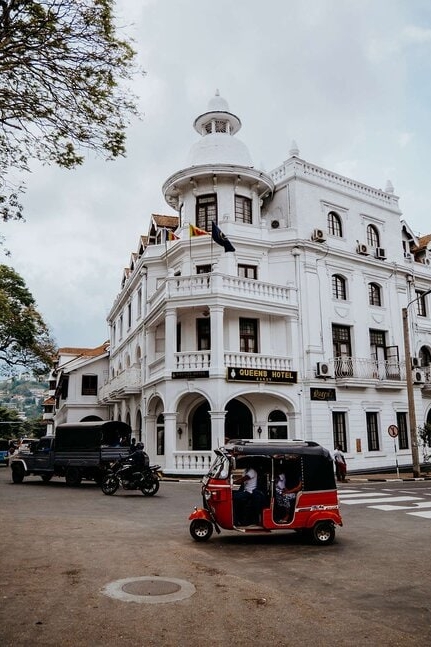
How to get to Kandy
From Colombo to Kandy
Train | The 3-hour train ride from Colombo to Kandy is part of the world-famous Colombo to Badulla route. The direct journey starts at the Colombo Fort station and is quite straightforward. For those who are unfamiliar with public transport in Sri Lanka, this journey is a good introduction.
Cost | 1st class AC: 490 LKR ($2.75) per person | 2nd class: 270 LKR ($1.5) per person | 3rd class: 180 LKR ($1) per person
Travel time | The journey take 2.5 – 3 hours
Train times | 05:55 | 06:45 | 07:00 | 08:30 | 09:00 | 09:45, 10:35 | 12:40 | 15:35 | 17:20 | 17:45 | For more information about train times click here.
Bus | Jump on a direct bus that leaves at the Colombo Bastian Mawatha Bus Terminal. The journey to Kandy takes as long as the train but without the epic views. Taking the train should be your number one pick.
Cost | 200 LKR ($1) per person
Travel time | The travel time is 0315 hours
Bus times | The busses leave every 20 minutes
From Ella to Kandy
Train | One of the most beautiful train rides in the world is the one from Ella to Kandy. Imagine a scenic, 7-hour journey that goes by smoother than expected, that is exactly what the journey from Ella to Kandy is. This pleasant ride brings you along green mountains and lush tea fields.
Travel time | The journey takes around 6 – 7 hours to complete
Cost | 2nd class: 250 LKR ($1.5) per person | 3rd class: 180 LKR ($1) per person
Bus | Don’t even think of taking a bus from Ella to Kandy, the train journey is way too scenic.
From Sigiriya to Kandy
Bus | Sigiriya – Dambulla – Kandy – Start the journey with a 20-minute tuk-tuk drive to Dambulla. At the Dambulla bus stand jump on a direct bus that heads for Kandy.
Cost | Tuk-tuk to Dambulla – 1.000 LKR ($5.5) | Bus from Dambulla to Kandy – 200 LKR ($1) per person.
Travel time | The journey takes 2.5 – 3 hours


Stay safe in Sri Lanka | Travel insurance
Though Sri Lanka is perfectly safe for travellers, I always strive to sort out my travel insurance before arriving in a foreign country, and I highly advise anyone else to do the same.
Where we prefer that everything goes smoothly during our travels, something unfortunate can happen at any moment, whether it’s an injury or an accident on the road. When that happens, it is better to be safe than sorry.
Heymondo | Whether you’re going on a 3-week backpacking trip, or planning a long stay somewhere abroad, Heymondo has excellent insurance options either way – plus full COVID-19 coverage and a handy app with 24-hour medical assistance. Readers of WTSW receive 5% off any insurance policy, more information here.
Cheers!
I’ve been on this travel blogging journey since 2019.
If you appreciate what I do here, these are some ways you can support me.







